
No videos yet!
Click on "Watch later" to put videos here

Madagascar Travel Guide – Everything You Need to Know

Madagascar, located off the southeastern coast of Africa, is a mesmerizing island nation that beckons travelers with its unique and diverse natural wonders. Renowned for its extraordinary biodiversity, this “eighth continent” boasts lush rainforests, otherworldly landscapes, and a coastline teeming with marine life. As a hotspot for ecotourism, Madagascar offers opportunities to encounter rare lemurs, explore untouched wilderness, and relax on pristine beaches. Its rich cultural tapestry, influenced by African, Asian, and European heritage, adds depth to the visitor’s experience. For those seeking an off-the-beaten-path adventure in a place unlike any other, Madagascar is a captivating destination waiting to be explored.
What’s the Best Time to Visit? 📅
The best time to visit Madagascar as a tourist largely depends on your interests and the experiences you seek, as the country experiences different climate zones. Generally, Madagascar has two main seasons: the dry season (winter) and the wet season (summer). Here’s a breakdown of the best times to visit:
- June to September: This period, especially July and August, is considered the peak tourist season. The weather is generally dry, and temperatures are cooler, making it an ideal time for wildlife viewing, hiking, and exploring the country.
- April to June: Early in the dry season, the landscapes are lush and green, and the weather is pleasant. It’s an excellent time for birdwatching and photography.
- November to December: The start of the wet season sees sporadic rains, but it’s still a good time to visit, as many animals are giving birth, and the landscapes are vibrant.
- January to March: These months constitute the peak of the wet season, with heavy rains and high humidity. Some roads may become impassable due to flooding, and some national parks may close temporarily. However, this is a great time for surfers and those interested in lush, green scenery.
- October and November can be considered shoulder months, offering a balance between the dry and wet seasons. The landscapes are still green, and wildlife is active, but there’s a lower influx of tourists.
- If you’re interested in whale watching, particularly humpback whales, the best time is from July to September. You can spot these magnificent creatures along the coast, especially near Île Sainte-Marie.
- Check the dates for cultural festivals, such as the Donia Music Festival in Nosy Be and the Aloalo Festival in Toliara, and plan your visit accordingly for a unique cultural experience.
Keep in mind that Madagascar is a large island with regional variations in climate. The eastern side is generally wetter than the western side, which experiences a rain shadow effect. Coastal areas are typically more humid than the highlands.
Before planning your trip, consider the specific activities and regions you want to explore, as well as the type of climate that suits your preferences. Always check current weather conditions and travel advisories before embarking on your journey to Madagascar.
What’s the Best Way to Get Around? 🚌
Getting around Madagascar as a tourist can be an adventure in itself, as the country’s transportation infrastructure is still developing. Here are some of the best ways to get around Madagascar:
- Domestic flights are the fastest way to cover long distances in Madagascar. Airlines like Air Madagascar and Tsaradia operate regular flights between major cities and tourist destinations.
- Be prepared for potential delays and changes in flight schedules due to weather conditions.
- Renting a car with a driver or a 4×4 vehicle is a convenient option, especially for exploring remote or less accessible areas. Roads in Madagascar can be challenging, so having an experienced driver is recommended.
- Self-driving is possible but can be more challenging due to road conditions and navigation.
- These are shared, long-distance taxis that connect major towns and cities. They are often the primary mode of transportation for both locals and budget-conscious travelers.
- Be prepared for crowded and sometimes uncomfortable rides. Taxis-brousse schedules can be unpredictable, so plan your journey accordingly.
- In cities and towns, you can use local taxis and pousse-pousses (cycle rickshaws) for short trips within urban areas.
- Negotiate fares in advance or ensure that the taxi driver uses the meter.
- These are small shared minivans that travel between towns and cities. They offer a balance between comfort and affordability, and they are a common mode of transport for locals.
- Expect a flexible schedule and possible delays.
- If you plan to explore Madagascar’s coastal areas and islands, ferries and boats are essential. This includes routes to places like Île Sainte-Marie and Nosy Be.
- Ferry schedules can be irregular, so check in advance.
- In some areas, such as national parks and rural villages, walking and hiking are the primary means of transportation. Guided treks and hikes are available in many scenic locations.
- In urban areas and some tourist destinations, you can rent bicycles or scooters for local exploration. This provides flexibility and a more intimate experience of the surroundings.
- For a hassle-free experience, consider booking guided tours with reputable tour operators. This can include transportation, accommodation, and guided activities.
- In cities like Antananarivo, ride-sharing apps like Bolt and local transportation apps can be convenient for getting around within urban areas.
Keep in mind that travel in Madagascar can be slow and sometimes unpredictable due to road conditions, weather, and other factors. Plan your itinerary with extra time for unexpected delays, and always prioritize safety, especially when traveling in remote or less-developed areas.
What’s the Official Language?
The official languages of Madagascar are Malagasy and French. Malagasy is the national language and is widely spoken by the Malagasy people. French is used in government, education, and business and is understood by some Malagasy people, especially in urban areas. Here are some basic Malagasy phrases for tourists:
- Hello – Salama (sah-lah-mah)
- Good morning – Manao avo lavo (mah-now ah-voh lah-voo)
- Good afternoon – Manao androana (mah-now ahn-droo-ah-nah)
- Good evening – Manao hariva (mah-now hah-ree-vah)
- Good night – Good night (mah-now ah-rev-ay)
- Thank you – Misaotra (mee-sah-oh-trah)
- Yes – Eny (eh-ny)
- No – Tsia (tsi-ah)
- Please – Azafady (ah-zah-fah-dy)
- Excuse me / I’m sorry – Azafady (ah-zah-fah-dy)
- What is your name? – Inona ny anaranao? (ee-noo-nah ny ah-nah-rah-now)
- My name is [Your Name] – [Your Name] no anarako (your name no ah-nah-rah-koo)
- How much is this? – Ohatrinona ity? (oh-ha-tree-noo-nah ee-ty)
- Water – Rano (rah-no)
- Food – Akoho (ah-koo-oh) [for chicken]
- Bathroom/Toilet – Trano boky (trah-noh boh-ky)
Learning a few basic Malagasy phrases can enhance your travel experience in Madagascar and show respect for the local culture. The Malagasy people are generally appreciative when visitors make an effort to speak their language, even if it’s just a few words. French can also be useful, especially in larger cities and tourist areas.
Where to Stay? 🏨
Madagascar offers a variety of accommodation options to suit different preferences and budgets. The type of accommodation you choose will depend on your itinerary and the experiences you seek. Here are some popular types of accommodations and regions to consider when staying in Madagascar as a tourist:
- Hotels: In major cities like Antananarivo, Nosy Be, and Toliara, you’ll find a range of hotels, from budget to luxury. These hotels offer various amenities and services, making them suitable for travelers seeking comfort and convenience.
- Lodges and Resorts: Madagascar has beautiful beachfront lodges and resorts along its coastline, particularly in destinations like Nosy Be, Île Sainte-Marie, and Anakao. These offer stunning views, water-based activities, and a luxurious experience.
- Guesthouses: Guesthouses are a common and affordable accommodation option in both urban and rural areas. Staying in a guesthouse can provide a more intimate and local experience.
- Ecolodges: Madagascar is known for its unique biodiversity, and staying in ecolodges allows you to immerse yourself in nature while supporting sustainable tourism. They are often located in or near national parks.
- Beach Bungalows: Along Madagascar’s coast, especially in places like Ifaty and Anakao, you’ll find cozy beachfront bungalows where you can enjoy a laid-back atmosphere and beautiful sunsets.
- Homestays: For a genuine cultural experience, consider staying with local families through homestay programs. This allows you to learn about Malagasy customs, cuisine, and daily life firsthand.
- Tented Camps: In national parks and wildlife-rich areas, you can stay in tented camps. These camps offer a unique experience, bringing you closer to nature and wildlife.
- Budget Hostels: In larger cities like Antananarivo and Antsiranana, you can find budget hostels that cater to backpackers and budget-conscious travelers.
- Campgrounds: If you’re an adventurous traveler, some areas in Madagascar offer campgrounds where you can set up your own tent and enjoy the great outdoors.
- Floating Hotels: In some regions like the Pangalanes Canal, you can find floating hotels that provide a unique and serene experience as you navigate the waterways.
When choosing accommodation in Madagascar, consider factors such as your budget, the location of your activities and attractions, and the amenities you desire. During peak tourist seasons, especially in popular tourist destinations, it’s advisable to book your accommodations in advance to secure your stay. Additionally, read reviews and check the current status of the accommodations you’re interested in, as conditions can vary widely.
What to Eat? 🍽️
Madagascar offers a unique and diverse culinary experience influenced by African, Asian, and French flavors. While exploring the island as a tourist, be sure to try these must-try Malagasy dishes and foods:
- Ravitoto: This traditional Malagasy dish is made from cassava leaves and shredded meat (often pork or beef) cooked in coconut milk. It’s a hearty and flavorful comfort food.
- Romazava: Romazava is a popular Malagasy meat and vegetable stew cooked with a variety of greens, including spinach and mustard greens. It’s often served with rice.
- Akoho sy Voanio: This dish features chicken (akoho) cooked with ginger, garlic, and coconut milk (voanio). It’s a delicious and creamy chicken stew, typically served with rice.
- Koba: Koba is a sweet treat made from peanuts, sugar, and rice flour. It’s wrapped in banana leaves and makes for a delightful snack.
- Laoka: Laoka refers to the side dishes served with rice, and they can include a variety of ingredients such as vegetables, beans, seafood, and meats. Try different laoka dishes to experience the diversity of Malagasy cuisine.
- Sambos: These are similar to samosas and are a popular snack. Sambos are pastry parcels filled with various ingredients like vegetables, meat, or seafood.
- Brochettes: Brochettes are skewered meats, often marinated and grilled. They are a common street food and can include beef, chicken, zebu (a type of cattle), or seafood.
- Camarons: Madagascar is known for its freshwater prawns, and you can enjoy camarons prepared in various ways, such as grilled or in a rich garlic and tomato sauce.
- Foie Gras: Due to French influence, foie gras is produced in Madagascar, and it’s considered a delicacy. You can find it served in upscale restaurants.
- Street Food: Don’t miss the opportunity to explore the local street food scene. Try snacks like mofo (rice cakes), bokoboko (fried dough), and various grilled snacks from street vendors.
- Fruits: Madagascar is abundant in tropical fruits like mangoes, lychees, pineapples, and passion fruits. Enjoy these fresh and flavorful fruits during your visit.
- Coffee: Madagascar produces some excellent coffee, and you can savor local brews, often served strong and rich.
- Rhum Arrange: Try rhum arrange, a popular local rum infused with various spices and fruits. It’s a flavorful and aromatic drink.
- Vanilla: Madagascar is one of the world’s largest producers of vanilla, so be sure to try desserts and dishes flavored with pure Madagascar vanilla.
- Street Markets: Explore local markets to sample a variety of fresh and exotic produce, snacks, and spices. It’s a great way to experience the vibrant food culture of Madagascar.
Malagasy cuisine offers a range of flavors and ingredients that reflect the island’s rich cultural heritage. Be adventurous and try new dishes, and you’ll discover the delicious and unique tastes of Madagascar.
What to See? 🔍
Madagascar, often referred to as the “eighth continent” due to its unique biodiversity, offers a wide array of must-see places for tourists. From stunning landscapes to rare wildlife, here are some of the top destinations to explore:
- Avenue of the Baobabs: Located in the Menabe region, this iconic avenue is lined with towering baobab trees, some of which are over a thousand years old. It’s a photographer’s paradise and one of Madagascar’s most famous sites.
- Tsingy de Bemaraha: This UNESCO World Heritage Site in western Madagascar features dramatic limestone karst formations known as Tsingy. Explore the unique terrain, caves, and forests while spotting lemurs and rare bird species.
- Andasibe-Mantadia National Park: Located in the eastern rainforests, this park is known for its lush biodiversity, including the indri lemur, the largest living lemur species. Explore the park’s hiking trails and hear the haunting calls of the indri.
- Avenue of the Palms (Baobab Alley): Similar to the Avenue of the Baobabs, this stunning road is lined with tall palm trees and is located near Morondava on the west coast.
- Île Sainte-Marie: This tropical island off the northeast coast is known for its pristine beaches, vibrant marine life, and historical pirate connections. It’s a great place for snorkeling, diving, and relaxing.
- Tsiribihina River: Embark on a river journey down the Tsiribihina River, where you’ll witness beautiful landscapes, diverse wildlife, and local villages. The river journey often includes camping along the way.
- Amber Mountain National Park: Located near Diego Suarez (Antsiranana), this lush park is home to diverse flora and fauna, including chameleons, lemurs, and a variety of orchids. Hike through the rainforest and cool off in natural pools.
- Ranomafana National Park: In the central highlands, this park is a biodiversity hotspot, with numerous species of lemurs, reptiles, and birds. Explore the park’s trails and soak in the natural hot springs.
- Nosy Be: Known as the “Perfume Island,” Nosy Be is a popular tourist destination with beautiful beaches, coral reefs, and water-based activities like diving and snorkeling.
- Ankarana Reserve: Located in the north, this reserve is famous for its extensive cave systems and unique wildlife, including the crowned lemurs. Explore limestone caves and sinkholes while enjoying the rugged landscapes.
- Ranohira and Isalo National Park: Discover otherworldly landscapes in Isalo National Park, with its eroded sandstone formations and deep canyons. It’s a fantastic place for hiking, wildlife spotting, and swimming in natural pools.
- Masoala National Park: Located on the northeastern coast, this park is known for its pristine rainforests, marine biodiversity, and diverse wildlife. Explore the lush jungle, snorkel in coral reefs, and spot aye-ayes, lemurs, and various bird species.
- Fort Dauphin: This coastal city offers beautiful beaches, including the stunning Libanona Beach, and opportunities for water sports like kiteboarding and surfing.
- Antananarivo: Explore the capital city, known as Tana, to discover its historical sites, markets, and cultural attractions, including the Royal Palace and the Tsimbazaza Zoo.
- Lemurs’ Park: Located near Antananarivo, this park allows you to see a variety of lemurs in a natural setting and learn about Madagascar’s unique wildlife.
These are just a few of the must-see places in Madagascar. The country’s diverse landscapes and rich biodiversity make it a remarkable destination for nature lovers, adventure seekers, and those interested in unique cultures and history.
What to Do? 📸
Madagascar offers a wealth of exciting and unique experiences for tourists. To make the most of your visit to this extraordinary island nation, here are some must-do activities:
- Wildlife Watching: Madagascar is renowned for its unique and diverse wildlife. Go on wildlife safaris and treks to spot lemurs, chameleons, fossas, and other endemic species in their natural habitats.
- Explore Unique Landscapes: Discover Madagascar’s surreal landscapes, including Tsingy formations, baobab avenues, lush rainforests, and limestone canyons. Hike, climb, and explore these natural wonders.
- Snorkeling and Diving: Dive into the crystal-clear waters surrounding Madagascar to explore coral reefs teeming with marine life. Nosy Be, Île Sainte-Marie, and Anakao are popular diving destinations.
- Hike and Trek: Embark on treks through national parks like Isalo, Ranomafana, and Andringitra to witness diverse landscapes, waterfalls, and unique geological formations.
- Birdwatching: Madagascar is a birdwatcher’s paradise, with over 300 bird species found nowhere else on Earth. Visit national parks and wetlands to spot endemic and migratory birds.
- Whale Watching: Witness humpback whales during their annual migration (June to September). Île Sainte-Marie is a prime spot for whale watching.
- Visit Local Markets: Explore bustling markets in cities and towns to experience local culture, purchase handicrafts, and sample Malagasy street food.
- Homestays: Immerse yourself in Malagasy culture by staying with local families in rural villages. Learn about their customs, traditions, and daily life.
- Canal des Pangalanes: Take a boat journey along the scenic Canal des Pangalanes, a series of natural and man-made waterways that traverse much of the eastern coast.
- Beach Bliss: Relax on Madagascar’s pristine beaches. Nosy Be, Île Sainte-Marie, and Ifaty offer sun, sand, and clear waters.
- Visit Historical Sites: Explore remnants of Madagascar’s colonial history, such as Fort Dauphin, and learn about the island’s pirate heritage on Île Sainte-Marie.
- Try Malagasy Cuisine: Savor traditional dishes like ravitoto, romazava, and fresh seafood. Don’t forget to try Madagascar’s famous vanilla and local rum.
- Stargazing: Enjoy breathtaking stargazing opportunities in remote areas with minimal light pollution. Madagascar’s night skies are truly mesmerizing.
- Boat Tours: Take boat tours to explore remote islands, hidden coves, and mangrove forests, offering glimpses of diverse ecosystems and wildlife.
- Photography: Capture the stunning landscapes, vibrant markets, and unique wildlife through your lens. Madagascar offers endless photo opportunities.
- Learn Malagasy Phrases: Interact with locals by learning a few basic Malagasy phrases. Locals appreciate the effort and warmth shown by visitors.
- Support Conservation Efforts: Madagascar faces environmental challenges. Consider visiting and supporting conservation organizations and sustainable tourism initiatives.
- Fishing: Join local fishermen for a fishing excursion, experiencing their traditional fishing techniques and perhaps catching your dinner.
- Visit Vanilla Plantations: Explore vanilla plantations to learn about the cultivation and production of Madagascar’s renowned vanilla.
- Cultural Festivals: Check the local festival calendar and attend cultural celebrations and events, such as the Malagasy New Year and the Donia Music Festival in Nosy Be.
Madagascar offers a rich tapestry of experiences that cater to a wide range of interests, from nature and adventure to culture and relaxation. Embrace the island’s diversity and immerse yourself in its unique charm.
Culture and Safety 🦺
When traveling to Madagascar as a tourist, it’s important to be mindful of the local culture and take safety precautions to ensure a rewarding and secure experience. Here are some cultural and safety tips for travelers to Madagascar:
- Respect Local Customs: Madagascar has a rich cultural heritage influenced by African, Asian, and European traditions. Be respectful of local customs, including greetings, dress codes (modesty is appreciated), and religious practices.
- Greetings: A common way to greet people in Madagascar is by saying “Salama” while raising your hand in a friendly gesture. Use polite titles and last names when addressing individuals.
- Photography: Always ask for permission before taking photos of people, especially in rural areas. Some locals may appreciate a small tip in return. In some cases, photography may not be allowed at sacred sites.
- Language: While French and Malagasy are the official languages, English is not widely spoken outside of tourist areas. Learning a few basic Malagasy phrases can be helpful and show respect for the local culture.
- Gift Giving: It’s customary to bring small gifts if visiting someone’s home, especially in rural areas. Common gifts include sugar, rice, or other non-perishable items.
- Bargaining: Bargaining is common in local markets. Be polite and friendly while negotiating prices with vendors, and remember that haggling is a part of the shopping experience.
- Tipping: Tipping is not compulsory but appreciated, especially for good service in restaurants and hotels. In rural areas, small tips for guides or hosts can be meaningful.
- Local Cuisine: Embrace the opportunity to try traditional Malagasy dishes. Be adventurous with your palate and try local foods, but be aware of hygiene standards when eating street food.
- Health Precautions: Ensure your vaccinations are up to date and consult a travel doctor for advice on additional vaccinations, malaria prophylaxis, and other health precautions. Carry a basic medical kit.
- Water and Food Safety: Drink bottled or purified water, and avoid consuming raw or uncooked food from street vendors to prevent waterborne illnesses. Wash your hands regularly.
- Altitude Sickness: If trekking in high-altitude areas, be aware of the symptoms of altitude sickness and acclimatize properly. Ascend slowly and stay hydrated.
- Travel Insurance: Have comprehensive travel insurance that covers medical emergencies, evacuations, and trip cancellations. Check if your policy includes coverage for adventurous activities.
- Transportation Safety: Use reputable transportation providers and follow safety guidelines, especially if you’re taking long bus journeys or internal flights. Road conditions can be challenging in some areas.
- Currency Exchange: Use official currency exchange offices or banks to exchange money. Be cautious when dealing with street money changers.
- Wildlife Safety: Respect wildlife and maintain a safe distance when observing animals in national parks and reserves. Follow the guidance of park rangers and guides.
- Emergency Numbers: Familiarize yourself with local emergency contact numbers for medical services, authorities, and your embassy or consulate.
- Weather Awareness: Be prepared for changing weather conditions, especially during the rainy season. Check weather forecasts and stay informed about potential natural disasters.
- Local Regulations: Respect local regulations and permits when visiting national parks and protected areas. Obtain the necessary permits in advance and carry them with you.
By respecting local culture and taking safety precautions, you can have a memorable and secure journey while exploring the unique and diverse landscapes of Madagascar. Always stay informed about the current situation and any travel advisories before and during your trip.
In conclusion, Madagascar is a natural wonderland and a paradise for adventurous travelers and nature enthusiasts. Its diverse landscapes, unique wildlife, and rich cultural tapestry make it a truly one-of-a-kind destination. Whether you’re trekking through lush rainforests, encountering lemurs in their natural habitat, or relaxing on pristine beaches, Madagascar offers an unforgettable and off-the-beaten-path experience. Embrace the opportunity to explore this remarkable island nation and create lasting memories amidst its incredible biodiversity and warm hospitality. Madagascar promises a journey unlike any other.
You may also like

State of Palestine Travel Guide – Everything You Need to Know

South Sudan Travel Guide – Everything You Need to Know

Democratic Republic of the Congo Travel Guide – Everything You Need to Know
Travel destinations.
- Experiencing Australia 20
- Experiencing Cambodia 5
- Experiencing China 24
- Experiencing Cruise 6
- Experiencing France 5
- Experiencing Germany 3
- Experiencing Indonesia 10
- Experiencing Italy 11
- Experiencing Japan 10
- Experiencing Korea 7
- Experiencing Malaysia 6
- Experiencing Maldives 7
- Experiencing Myanmar 10
- Experiencing New Zealand 17
- Experiencing Singapore 15
- Experiencing Switzerland 4
- Experiencing Taiwan 14
- Experiencing Thailand 18
- Experiencing Vietnam 5

The Ultimate Guide to Traveling Madagascar, The Red Island
70 Comments
- Last Updated On: March 17, 2023
Adrift in the Indian Ocean, Madagascar is a country few know much about, and even fewer have traveled to. Being the size of France, but with only 10 main roads, Madagascar is truly one of the last undiscovered areas of the world where one can really escape the influences of the modern age and escape to places hardly touched by the outside world. With otherworldly landscapes, thousands of endemic species of animals, and some of the world’s most beautiful and isolated beaches, Madagascar is a dream destination for the devoted traveler.
Of all the places I traveled to in Africa, Madagascar is at the very top in terms of untouched. I spent over a month traveling through this Madagascar and I made sure to write as much detail as possible in this post to make it your ultimate Madagascar travel guide!
History of Madagascar
Madagascar’s history is key to its development. The island split from Gondwanaland, modern day Africa, long before big predators had developed. Instead of primates, Madagascar developed lemurs, a gentle, unaggressive near-monkey, whose nearest relative lives in South America. There are more than 50 species now, but all have gentle hands and intense eyes.
A stunning 90% of Madagascar’s flora and fauna are endemic, found nowhere else in the world. Even the great Amazon in South America can’t compare to the diversity of life found in Madagascar. This is truly a place unlike anything else.

Its isolation also shaped the island’s culture. The human gene pool arrived by boat around 500BC, when settlers came from modern day Borneo (Indonesia) by canoe. These settlers were then joined by Bantu migrants from Mozambique around 1000AD. Here they blended and divided into numerous tribes, each with its own language and beliefs. Due to the history, the people of Madagascar, also known as the Malagasy , are a very curious blend of modern day Southeast Asian and African.
Arab traders came later on, followed by the French who would eventually colonize the island and also influence the culture and language of this island.
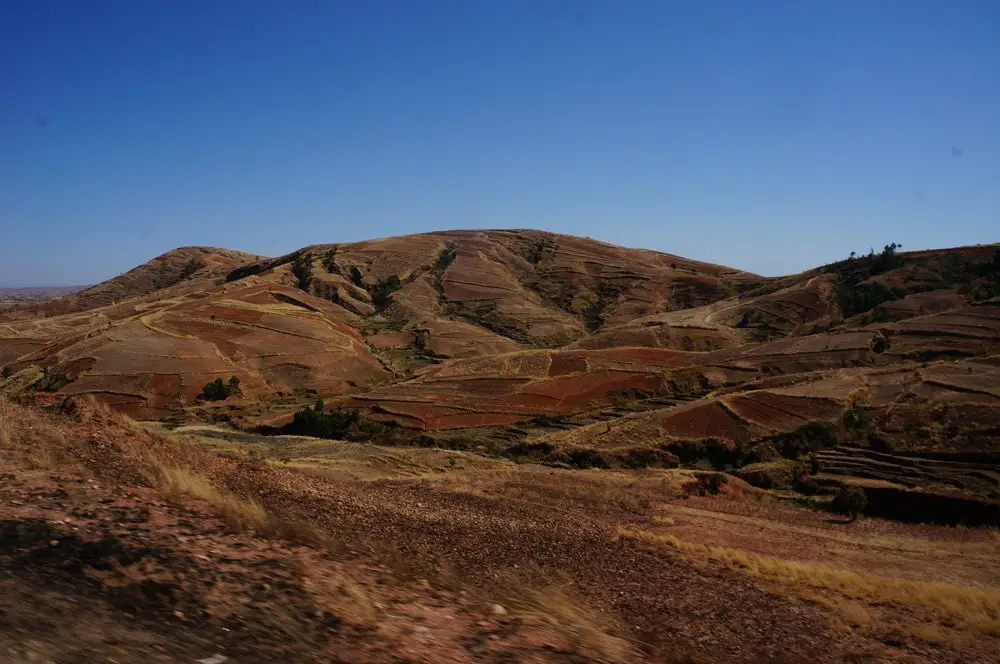
Getting to Madagascar
Madagascar is not an easy place to get to. Flights are expensive and long. All international flights arrive in Antananarivo, the country’s capital. There are just a few airlines that fly to Madagascar:
- Air France from Paris
- Kenyan Airways from Nairobi
- South African Airways/Airlink from Johannesburg
- Air Mauritius from Port Louis
- Air Madagascar from Paris and Johannesburg
Air Madagascar is the national airline and all domestic flights go through this company. They are known to be extremely unreliable and have terrible service. Domestic flights are expensive as well with some of the worst on-time records out there. Because of all the negative reviews I read about this airline, I opted to fly SAA from Johannesburg to Antananarivo instead, paying an extra 300$.
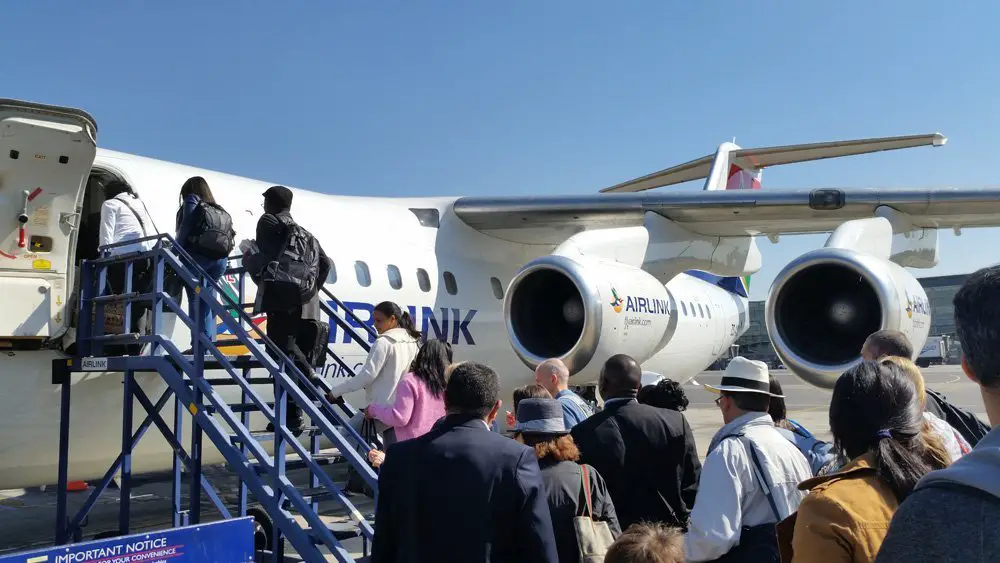
Flights from Johannesburg are 3.5 hours, and are 750-900$ on SAA! Again, not a cheap place to get to and perhaps one of the reasons there is such little tourism here, especially from their closest neighbors, South Africa. Flights on Air Madagascar are ~$600.
Madagascar Visas
Madagascar is one of the few African countries that do not require money for Visas. All citizens from the US, Canada, EU, UK, AU etc. DO NOT need to get a visa before arrival, and DO NOT need to buy a visa if the visit is less than 30 days.
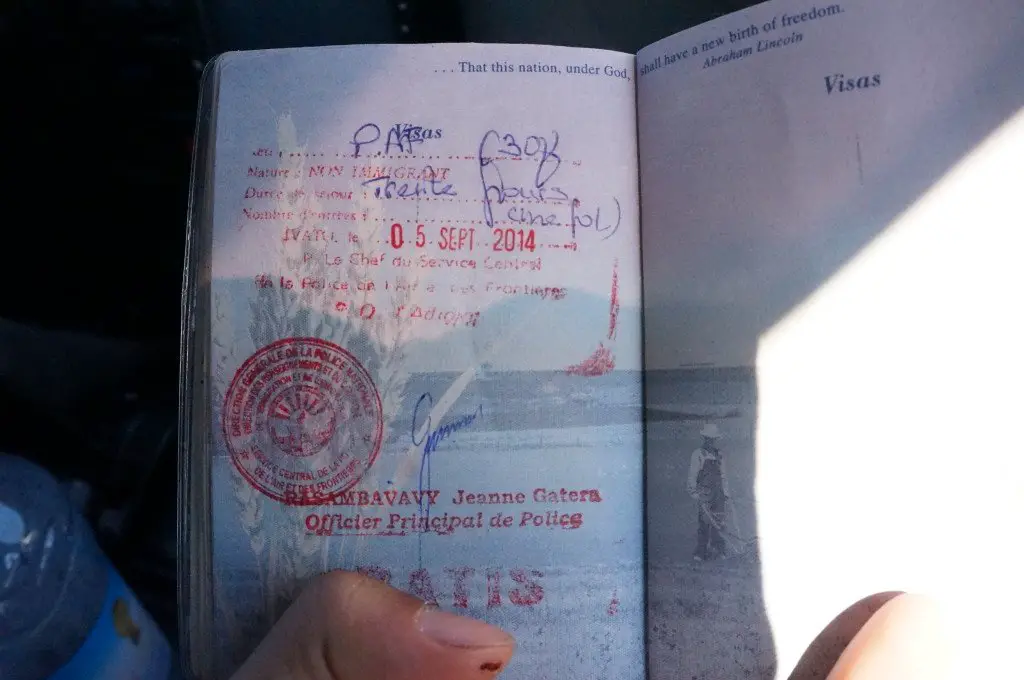
Taxi Brousse and Cotisse Bus
For those that do not want to rent a car with a driver, the taxi brousse is the preferred budget backpacker route of getting around the island. Taxi brousses are well connected throughout the island with routes regularly running from town to town for a very cheap price. However, like the rest of Africa, group travel for locals is unreliable and uncomfortable. Be prepare to be jammed in to one of those hippie vans with way more people than it’s meant to fit. Pro tip? Buy two seats so you have more space.
In recent years, a company called Cotisse Transport has helped fill the void for those looking for more comfortable mass transport. Cotisse buses are much more comfortable and run on set schedules. They are of course more expensive, but I would much rather take these than a taxi brousse. Although one trip on a taxi brousse is worth the experience!
Tourism in Madagascar
Tourism in Madagascar is still a young industry. The locals like to think they get a lot of tourists but if only they knew. This country does NOT see much tourism, even during its high season. As it is a former colony of France and French is still widely spoken, the majority of tourists hail from France. I would say that 75% of the tourists we came across were older French people. Nevertheless, we were in Madagascar for a month and we could go a whole day without seeing a single foreigner. Beaches are isolated, restaurants are empty, and national parks are spacious. A very welcome change of pace from all the other African countries I’ve visited where tourism is so developed.
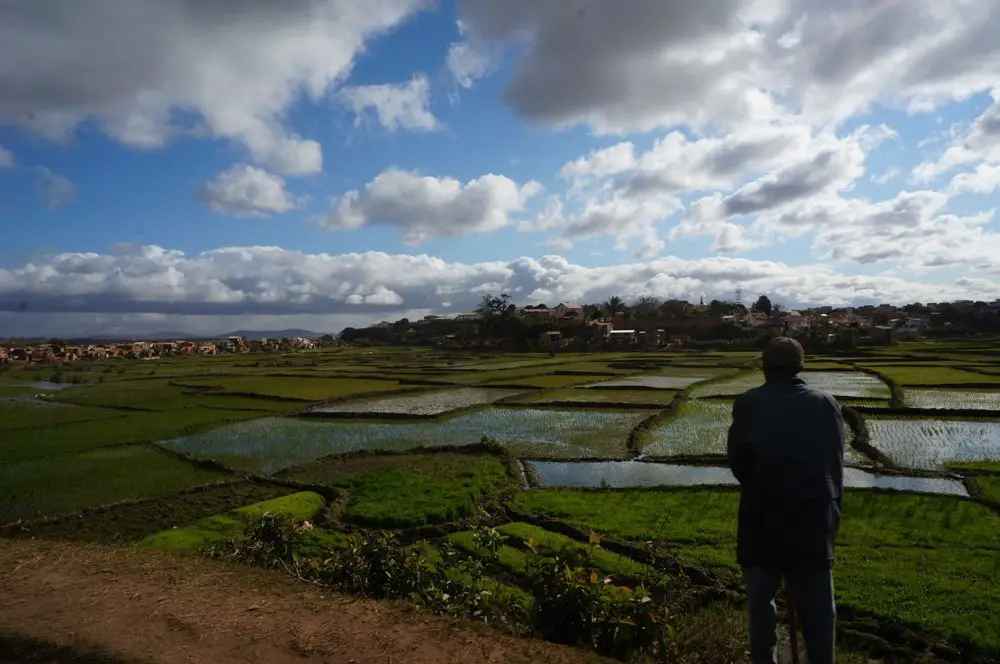
There are many ways to plan a trip here. Numerous tour agencies exist in Antananarivo. I googled “Madagascar Tours” and there’s at least a dozen websites that do tours of the country. Many options exist.
Getting around Madagascar
You can book a fully planned tour, where one price is quoted including your transportation, park entrance fees, hotels, and food. If you’re feeling more adventurous and want flexibility, then you can also rent a 4×4 with a driver and create your own itinerary.
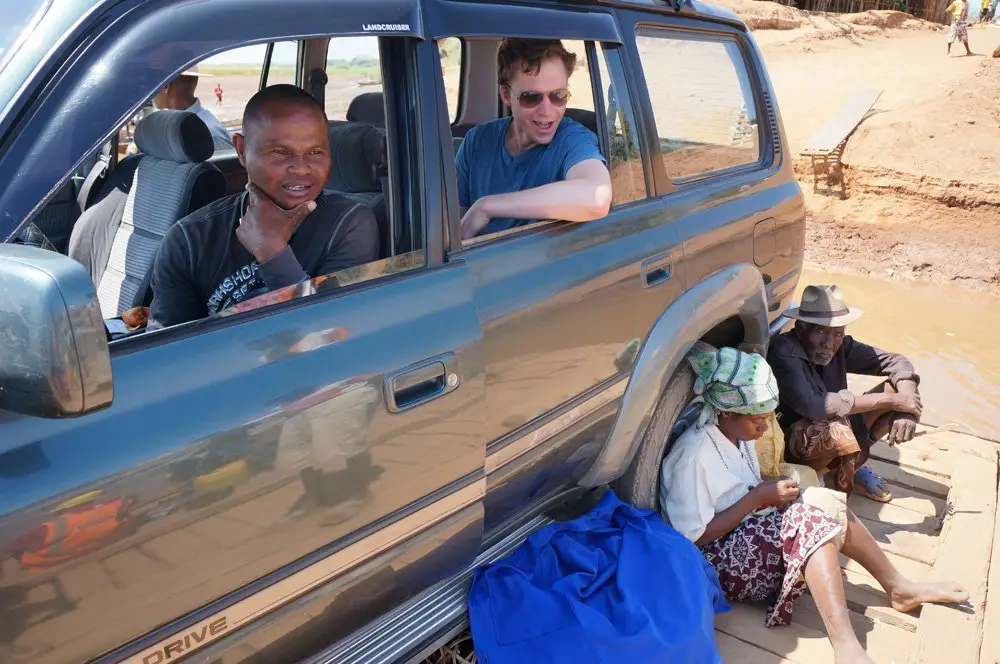
We ended up with the latter option, and rented a 4×4 with a driver for 20 days. This is the most common way to see Madagascar as the roads are in awful conditions and driving is the only way to get to many of the top attractions. I contacted numerous tour agencies and 50 euros a day seemed to be the going rate but I managed to bargain my way down to 40 euros a day. A steal in my opinion for the car AND a driver.
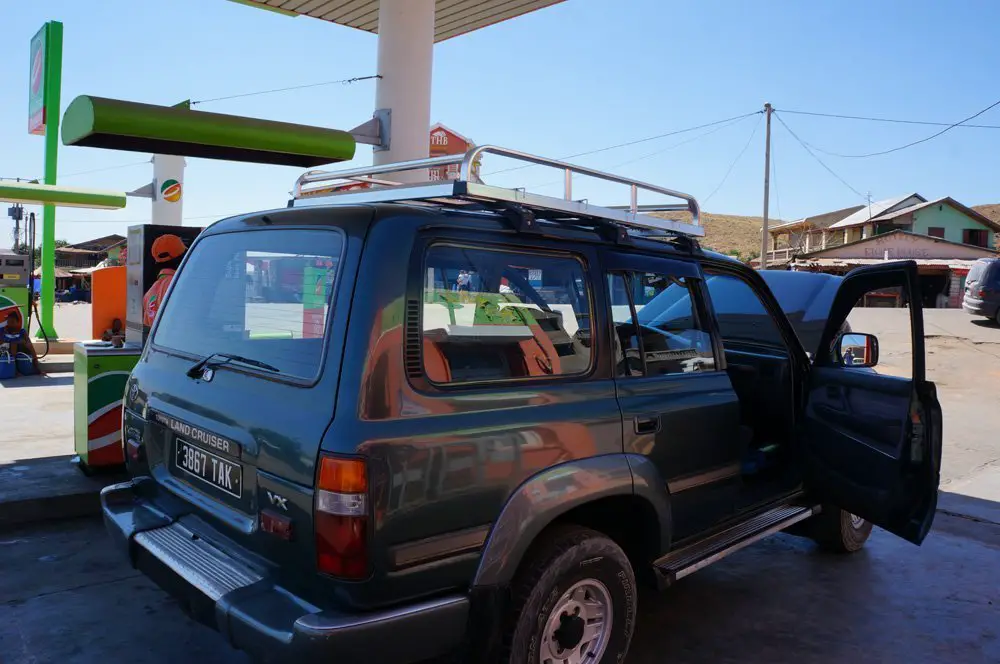
This price INCLUDES the driver’s accommodation and food. I was so confused by this at first. Where the hell does the driver sleep? He can’t possibly afford the places we’re staying at. Turns out, most of the hotels have sleeping quarters for drivers, and if not, there are hotels for the “locals” for less than $5 a night. Foreigners are allowed to stay in these hotels as well. Consider them the extreme budget options.
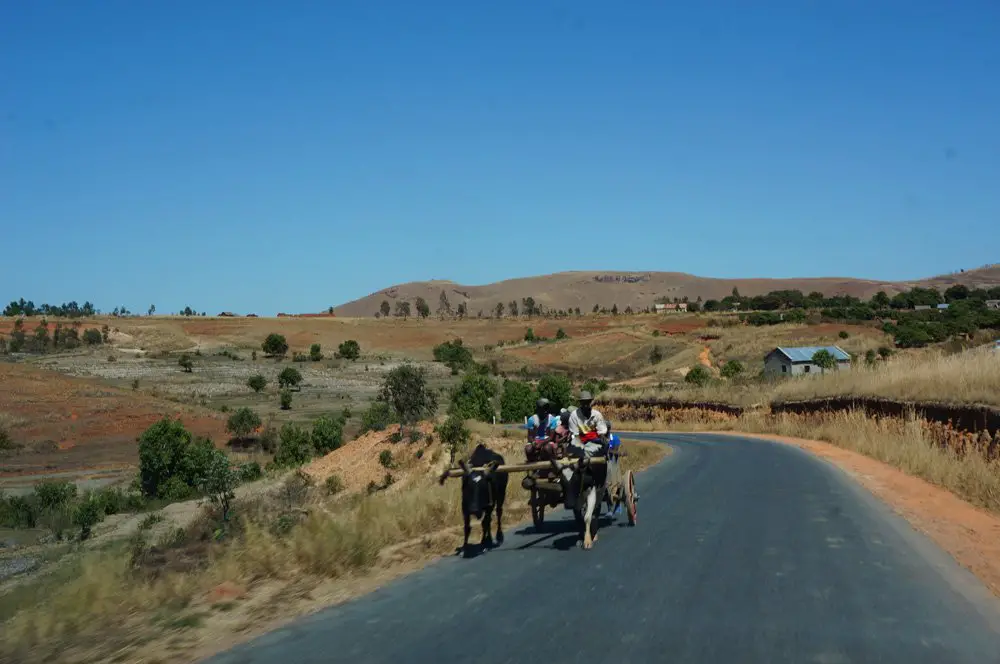
Planning our own Madagascar trip with help
We went with GMT+3 Tours , who were incredibly helpful. I told them the amount of time I had, and the sights I wanted to see, and they planned a whole itinerary for us and reserved our hotels after I gave them our budget. They hire freelance tourism drivers and our drivers name was Serge. He was a great driver and had so many great stories of Madagascar. He’s traveled around the entire island numerous times and knows everything about it. I would highly recommend him! If you’re just looking for a driver and are okay planning everything on your own, please email him at [email protected]
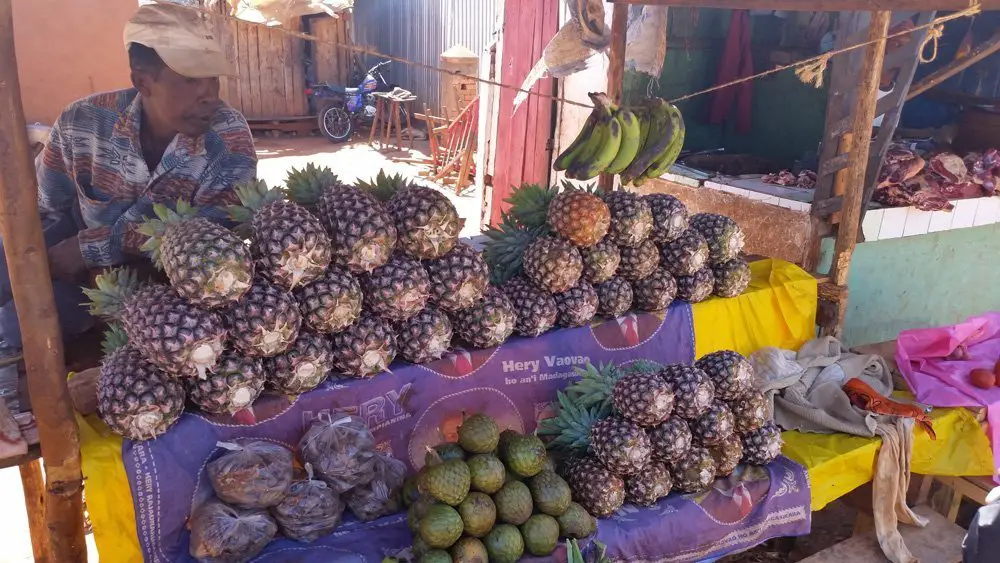
Tourism is cheap in this country. A high end budget for a hotel is 40 euros a night! Split between two people, this isn’t much compared to the rest of Africa. There didn’t seem to be many traditional hostels in this country as again, tourism is small, and the tourists that come here are old Frenchmen that wouldn’t stay at a hostel anyhow. Food is cheap, beer is cheap, fruit is incredibly cheap. It’s easy to live well here.
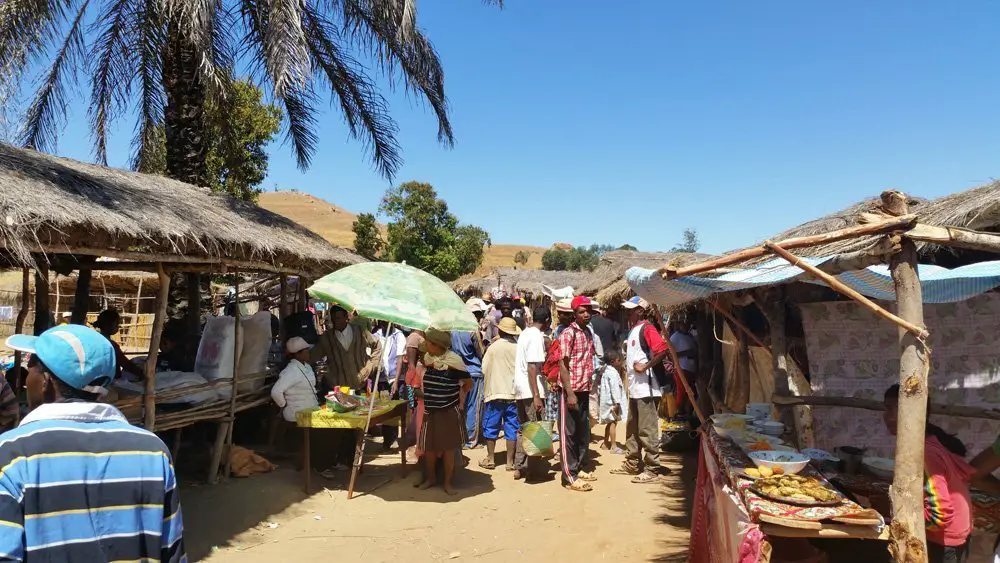
How many days is necessary to see Madagascar
Madagascar is a special place. It is also the most undeveloped country I’ve ever seen and this is from someone that’s seen much of Africa. The main highways are 1.5 lanes, pothole infested, questionable roads with no markings on it whatsoever.
It takes awhile to get places, even if you have your own car. We spent almost 4 weeks here, visiting the Tsingy Stone Forest, Morondava, Ranomafana Forest, Isalo National Park, Andasibe Park, and Ile Ste Marie. I’d say 10 days is the minimum amount of days to do this country any sort of justice. Three weeks is more ideal and one could easily spend 3 months here and have plenty to do.
The official languages in Madagascar are French and Malagasy. The former is the language left behind from colonial times and used primarily among the more educated and those working in tourism. Malagasy is the more commonly spoken language. Everyone speaks Malagasy, with only about 15% of the people able to speak fluent French. Miraculously, all 20 million people in Madagascar speak various dialects of Malagasy, and everyone can understand each other. This is a farcry from other African countries where there are dozens of languages in just one country that are completely unrelated to each other.

After visiting Madagascar, being able to speak French is highly useful. I’d recommend learning some basic phrases just to get around as the English spoken in this country is very poor. Thankfully, my French is serviceable and this was a savior in getting by.
The lack of education in this country is alarming and if someone does not work in the tourism industry, or live in a big city, there is a good chance they will not speak French either. Thanks to modern day technology, make sure to download the offline French language pack with the Google Translate app before coming here!
Money in Madagascar
The only expensive part of Madagascar is getting there. After that, this country is likely one of the cheapest places you’ll ever visit. Madagascar uses the Ariary as the official currency. It was traded 2,500 Ariary to 1 USD when I visited in Sep 2014, and is trading around 2,700 Ariary to 1 USD upon the completion of this blog post in December. Ariary’s come in 100, 200, 500, 1000, 2000, 5000, and 10000 notes. Yes, the biggest bill in Madagascar is the 10,000 ariary note, or ~$4!!

Since Madagascar is a former colony, the majority of its visitors are French and the Euro is commonly used by tour operators’ in quotinge prices for tours. Many tourism operators recommend taking Euros to the country and exchanging it at the airport. This is a good move but if you have a bank card that does not charge you ATM fees, this is not necessary as the ATMs in this country dispense cash just fine.
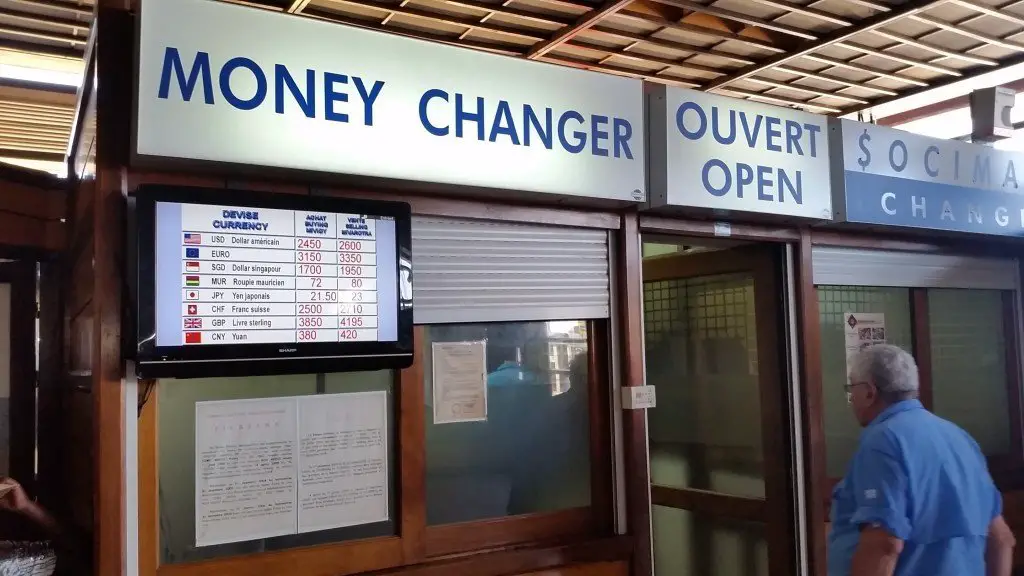
Exchanging Money
Long answer short, exchange all money at the airport. Euros are the preferred currency but dollars and pounds are readily available. The exchange rates given at the airport are good, close to market spot rate.
ATMs in Madagascar
As Madagascar’s tourism industry flourishes, so will the availability of ATMs. During my time in the country, ATMs were available in all the bigger cities ONLY . ATMs accept Visa and BNI accepts Mastercard as well (but best to go with Visa to be safe). The ATMs had a single withdrawal limit of 400,000 Ariary when we went (160$)
Cash is king
Cash is the only method of payment in 95% of Madagascar. Only the ultra high end hotels and restaurants accept credit card. We were able to use our credit card just twice during our month in the country, once at a high end hotel in Isalo National Park, and the other at a hotel in Antananarivo (but they wanted to charge us a fee so we ended up paying cash). Even the gas stations do not take credit cards!
Prepare to visit the ATM frequently and prepare to carry around huge wads of cash. 400,000 Ariary is 40 bills and a full tank refill on a 4×4 is more than half of that so money goes quickly!
Food in Madagascar
Most of Africa has pretty bland, uninspired food. With the Southeast Asian influence in Madagascar, I thought the food would be more flavorful. Right and wrong. Madagascar has the potential to create good food. There are a lot of spices, vegetables, and fruits to be had here but the country has not developed its cuisine for tourism yet.

There is a fine line between food cooked for the locals, and food cooked for tourists. The latter is more French inspired than Malagasy. The former consists of rice (biggest part of Malagasy diet), a meat, and maybe some stew for flavoring.
Street food is available everywhere and although dirt cheap (1-2$ a meal), we found local cuisine to be lacking in flavor. The French style cuisine meant for tourists run usually $5-8 a plate and is a bit better, although still nothing like the delicious food you can find in Southeast Asia.
Zebu, Madagascar’s version of the cow, and the locals feverishly vocalize the distinction between zebus and cows, is one of the staple dishes in Madagascar. Considered the most sacred of animals, we ate Zebu almost all every meal when there wasn’t seafood. It’s tasty, especially with some Madagascan Green Peppercorn sauce and Sakay chilies!
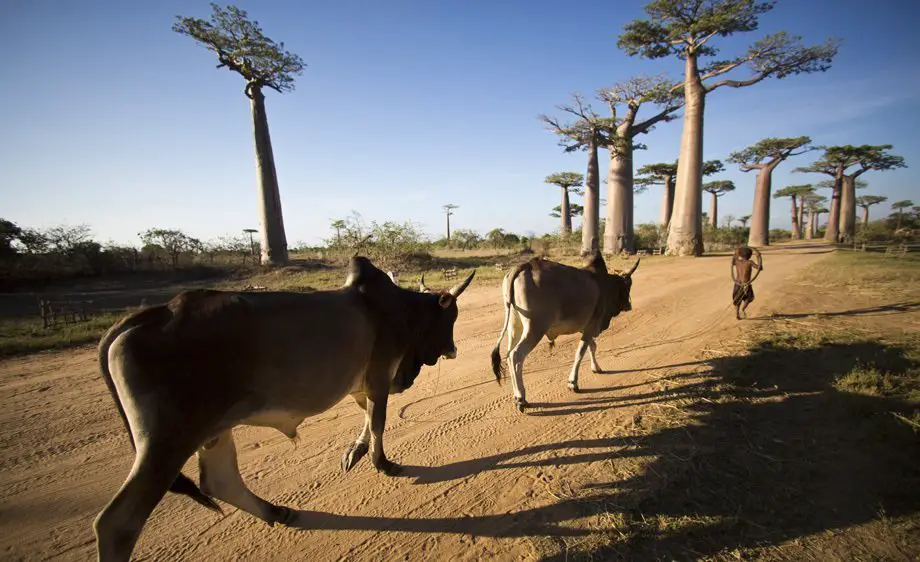
Fresh fruit is a staple in Madagascar and can be found on the side of the street, in the market, or pretty much anywhere. Depending on the time of year, different fruits will be available. In September, we found an abundance of pineapples, oranges, mangoes, strawberries, and raspberries. Prices are incredibly cheap. I could buy a whole pineapple cut into small pieces for 1,500 Ariary ($0.60). Madagascar is also the world’s largest lychee exporter and during the month of December, lychee can be had in huge quantities for dirt cheap.
When to visit Madagascar
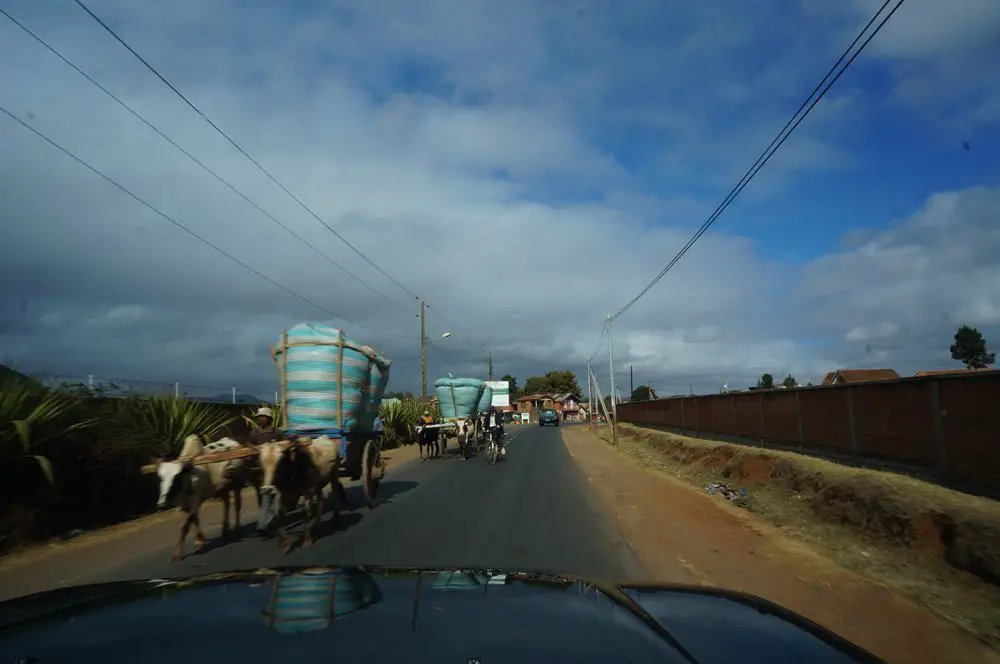
Madagascar is a country the size of France but has the geological diversity of a country the size of America. There are many different climates throughout the country.
- The area surrounding Antananarivo, Madagascar’s capital, is surrounded by mountains giving a climate that is cool at night
- The east coast is subtropical with beautiful beaches and abundant rain
- The west coast is drier than either the east coast or the central highlands because the trade winds lose their humidity by the time they reach this region
- The deep south is semi-desert, with very little rain falling here
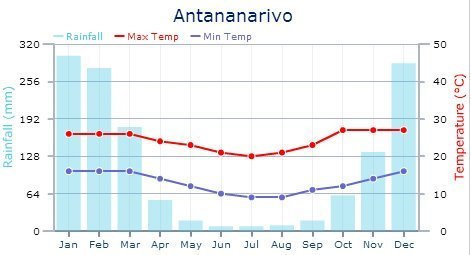
The rainy reason runs December-March, and it is best to avoid visiting during this time. Violent cyclones can hit the country at this time and the roads leading up to tourist attractions like the Tsingy Stone Forest, can be completely washed away. May-October are driest, coolest months, and the best time to visit.
Madagascar weather is beautiful all year around. But when is the best time to visit Madagascar? Find out on Sunheron , a website that provides you with all kinds of weather information and helps you to find the best holiday based on criteria you choose!
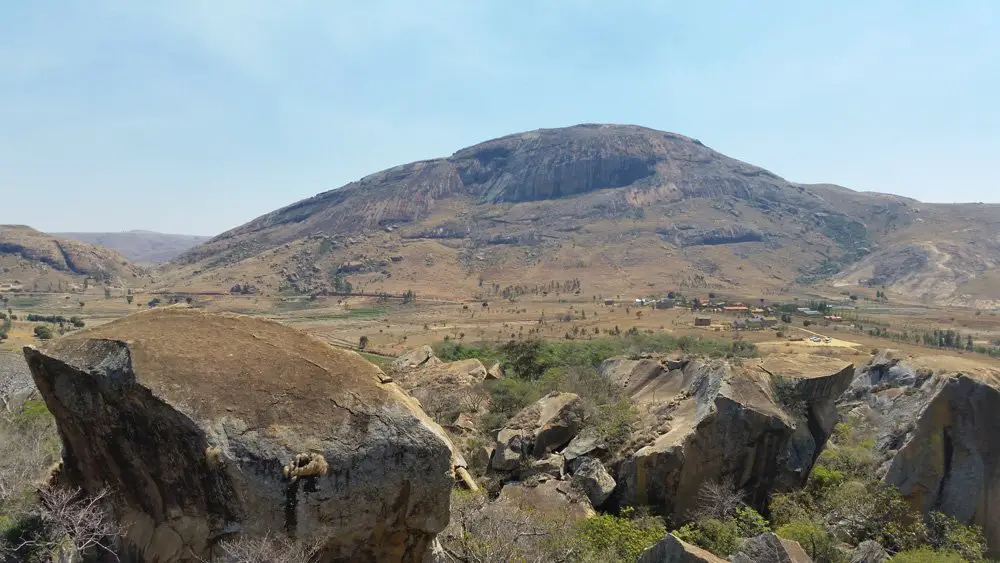
And finally, my Madagascar itinerary
And finally, my four week itinerary for Madagascar. I spent weeks planning this out so hopefully this will help whomever’s reading this in the future. Again, it was good to have a tour agent to help me plan this as I could only do so much research from the internet. He gave me helpful tips like don’t bother visiting Tulear at the end of the RN7 as you’re going to Ile Sainte Marie anyway.
Read my detailed Madagascar Itinerary
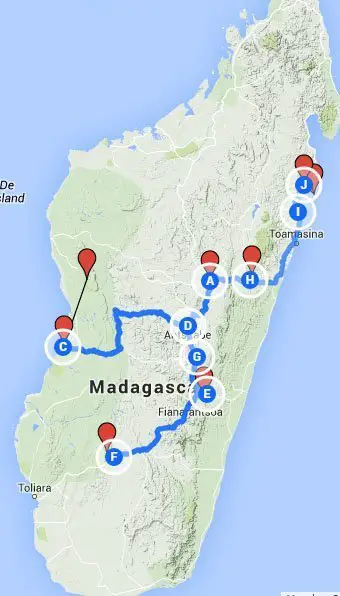
Further Reading
To read more detailed accounts of my travels through the Red Island, click on the following posts:
- Morondava and the Avenue of the Baobabs
- Tsingy Stone Forest
- Ranomafana National Park
- Isalo National Park
- Ile Sainte Marie and Ile Aux Nattes
Continue Reading:
- The Perfect Travel Itinerary For Madagascar
- Guide To Visiting Ranomafana National Park, Madagascar
- Guide To Visiting Andasibe National Park And Lemur Island, Madagascar
- The Ultimate Mozambique Travel Guide
- The Best Of Johnny Africa – Top Moments Traveling Through Africa
- The Ultimate Guide to Ile Sainte Marie and Ile Aux Nattes
- Guide To Hiking The Tsingy Stone Forest, Madagascar
- Ultimate Guide To Visiting Isalo National Park, Madagascar
- The Perfect Travel Itinerary For Mozambique
- What I’ve Learned After Traveling To 50 Countries
- Guide to Visiting Morondava and Avenue Of The Baobabs
- The Ultimate One Week and Two Week Travel Itinerary for Uganda
- Why South Africa Is The Perfect Destination To Learn English
- The Ultimate Maldives Budget Travel Guide – Paradise For Cheap
Related Posts

The Perfect Sri Lanka Travel Itinerary: One Week, 10 days, and Two Weeks
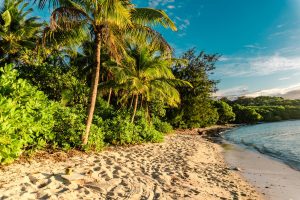
The Perfect Fiji Honeymoon Itinerary: One To Two Weeks

The Perfect Fiji Travel Itinerary: Beaches, Diving, and Island Paradise

The Perfect Vietnam Travel Itinerary: One Week, Two Weeks, and Three Weeks
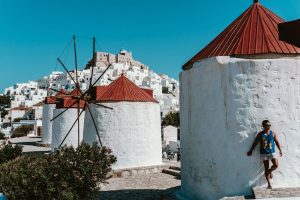
The Perfect Two Week Travel Itinerary For Greece

The Perfect One Week Itinerary For Greece
Leave a reply cancel reply.
Your email address will not be published. Required fields are marked *
Yes, add me to your mailing list
Add Comment *
Save my name, email, and website in this browser for the next time I comment.
Notify me of followup comments via e-mail. You can also subscribe without commenting.
Post Comment
Brilliant article – stunning country !!
Thank you and glad you liked mada!
did your rate of 40 per day per person for car +driver include petrol?
Cheers Miomir
Not petrol. I would also expect these prices to be higher now as this post was written in 2015.
What a great article! We’re currently dreaming of going to Madagascar again – we’ve been there before and we love, love love it! Here’s to a year with loads of travel plans and new experiences!
I just found your site – and I love it. What great pics and usefulll info. Thank you Benny // https://danmarkmedposten.dk/
I agree with every factor that you have pointed out. Thank you for sharing your beautiful thoughts on this.
Please see my blog, The Ultimate Guide to Writing an Interesting Travel Book Hope this will help, Thank you!
What a great article! We’re currently dreaming of going to Madagascar again – we’ve been there before and we love, love love it! Here’s to hoping for a better 2021 and 2022 with loads of travel plans and new experiences!
– Cirkeline // RejsRejsRejs
If you want even more tips for your trip to Madagascar, you’re welcome to read our article on it here
John!! It’s Annie from college. Googled Madagascar and this page came up haha! Now I really want to go! Hope you are well.
Thanks for sharing this great article Johnny! Very well-written! Hope this will help, Thank you!
I will be travelling to Madagascar from the 7 – 27 of January. It seems that hiring a car with a driver is the best method of transportation, just wondering how this works when you spend days not driving? I read in one of your other posts that the daily price of the vehicle includes the drivers lodging, wondering how this works if you spend multiple days in one place not driving (hiking or relaxing at the beach for a few days) but then would need the vehicle again.
Any information would be helpful, and if you have any suggestions for an itinerary that would be great!
Hi SJ, this was a perplexing question for me as well when I first started planning my trip. The per day price almost always pays for the drivers lodging and food. He does not stay with you but rather at a nearby hotel for locals (much cheaper). If you’re in one place for a long time but you will need the car later, you’ll still need to pay for him to stay. For us, we had the driver for most of our trip but at the end when we went to Ile Sainte Marie, we parted ways there because we were going to the beach. However, you won’t have to pay for the gas since he’s not doing much during that time. As for itineraries, make sure to read my Madagascar itinerary for ideas!
My beautiful Madagascar !!! Thanks for sharing. I share some tips on how to prepare your trips to Madagascar on my Blog https://www.tsiky-tour.com/blog
“Most of Africa has pretty bland, uninspired food.” There is no way this statement is true but carry on………
I should rephrase it to Most of the Africa I’ve been to. Outside of South Africa, Mozambique, and Zanzibar, I’ve not been a big fan of the food I’ve tried. Don’t get me wrong, I still ate all the food and in abundance but it’s just not as flavorful as other cuisines. Just personal opinion
i am very thankful for such an informations i’ve got from the article and comments.
I will go to Madagascar 9th of September for 3 weeks and really can’t think about the best route to choose (and what type of transport to choose). Can you help me with just cue points?
Regards Martin
Hi martin, it really depends on what you want to see! I always recommend the western parts (baobabs and Tsingy stone forest). That will take a week. from there, you can do the RN7 down to the other big parks. Do you want to go to beaches? Then, perhaps spend less time along the RN7 and then fly to Ile Sainte Marie or Nosy Be. Transport for a 3 week trip I’d highly recommend the 4×4 with a driver. Three weeks is not much to see anything with the Taxi Brousse. Have fun!
Hi Johnny, we would like to see the best what madagascar offer.
So Antananarivo -> RN7 -> Ranomafana National Park, Isalo National Park … From there somehow baobabs and Tsingy.
From there is possible to flight close to Sainte Marie,
What are the prices for 4×4 with driver? May you recommend company (some more budget / mid price)?
Thank you very much! 🙂 (we will have a fun mostly because we can’t speak french :D)
Yes that sounds like a good itinerary. you can fly from Tana to ISM and that will save you a few days of traveling. When I went in 2014, car + driver is 40 euros. Nowadays it’s probably closer to 50-60 euros a day. You also hav eto pay for the gas. Contact GMT + 3 as they are the ones that sorted me out with my driver!
Thank you for sharing this insightful post on Madagascar. My significant other and I are medical residents planning to work in Antsirabe for 1 month this October. We are planning on traveling for 2 weeks prior to our work assignment. It would be difficult to cover all the sites an we do not wish to rush our itinerary. What are your “must see” sites in Madagascar that we should incorporate into our 2 week road trip? Did you do any diving in Madagascar, if so where, and was the equipment safe (we are both advanced certified). Lastly, as we will be based in Ansirabe for 1 month, which sites do you think we could save for weekend trips? Thanks for your help in advance!!
Hi Phyllis, since you will be based out of Antsirabe, I’d recommend you save the parks along the RN7 for your “weekend” trips. For your two weeks, i’d definitely spend 1 week visiting the west (the Baobabs and the Tsingy Stone forest), and spend the other one on one of the islands, either Ile Sainte Marie or Nosy Be. I did dive on Ile sainte Marie (you can read about it on my ISM post), and the quality of the shop is top notch as it belongs to the nicest resort on that island. I heard the diving in Nosy Be is better however! Enjoy your trip, you will have a blast!
Hi Johnny, Thanks for the info! Makes my decision easier! Its funny the quotes I got vary from $1600 to $270o per person. Madagascar Natural tour quoted $1600 per person and Ortour $1900 with all inclusive except domestic flight. Gassitour quoted $35/day x 19 days for car and driver only. Ramantour quoted $2700 all inclusive including flight. And GMT quoted $1650 for car/driver and helping us book hotels for 19 days. It seems very inconvenient to me to have to carry a large sum of cash around for 3 weeks since ATMs are not easily accessible so I might go with the Madagascar Natural tour. Thanks again Johnny!
Thanks for all those data points! Gassitour is only charging $35/day for the car and driver? That is incredibly cheap. Too cheap in fact. nevertheless, carrying around large sums of cash is annoying for sure. Enjoy your trip!!
Hi Johnny, Phyllis again. Im in midst of planning my trip thats coming up in 3 weeks and am deciding between renting just driver vs package provided by travel agency. One company quoted $2200 for driver, 4×4 car, fuel, all hotels, 3 day andringitra trekking, Park entrance and guide, and 1 one way domestic flight back to tana for 19 days. I know you only rented the driver and car and sorted out the rest yourself. If you dont mind me asking, how much did u spend total on your trip in total so I have something to compare it to. Also, do you think the convenience of everything prearrange outweighs the cost esp if we dont speak French?
Hi Phyllis, is that price for per person or for two people? If for two, that seems like a great deal. Almost too good to be true.
I had my driver for just over 3 weeks. Each day was 40 EUROS which at the time was 50 USD. Plus the gas was at least another $400-500 as we were constantly filling up. A general breakdown of my expenses
Car for 3+ weeks: $1100 Gas: $500 Hotels: ~$40/night average Entrance fees + Guide: $30-50 per park for two (Tsingy was more)
Just that alone is more than much more than $2200! What company are you using if I may ask??
I’m currently planning to visit Madagascar 2 weeks & Ile Ste MarieMarie 2 weeks in February 2018 – I will be flying to JNB to TNR, i am wondering if you can book just the driver for around two weeks on GMT +3 and how much that would cost? Then after that i will fly to Ile Ste Marie from TNR and stay here for a further two weeks do you have any tips at all on where to stay in the first two weeks and also can you get around on just a rented scooter in Ile Ste Marie?
I will be traveling alone which i why i will be flying to Ile Ste Marie.
Hi Jordan, When I went I paid 40 euros for a car + driver. It is probably at least 50 euros now per day so I would budget around that (note that this does not include the cost of gas). As for ISM, there are plenty of places to stay so it depends on your budget but I really enjoyoed my time on Ile Aux Nattes (just south of ISM)! And yes a scooter is more than enough for getting around ISM!
https://johnnyafrica.com/madagascar-ile-sainte-marie/
Thanks for the swift reply Johnny! I think I will plan Madagascar properly first then and visit ISM, scootering around a pirate island sounds likes the one for me!
Hey Johnny.. Thanks for the great information. Am considering a trip to Madagascar also.. Just wondering if there are places to chill at night there, I know it’s hot a huge party place but is it safe for tourists to go to bars, or are there bars? Thanks, Christine
Hi Christine, aside from the larger cities that receive more tourists (Morondava, Ile Sainte Marie, Tana, Tamatave etc), there aren’t many Western style bars to speak of. We went out one night in Antsirabe and saw perhaps 5 foreigners the entire night. There aren’t many “bars” to speak of. It seems that most peopel just congregate in the streets, drinking and eating all night which is what we did!
Thank you for such an informative post. We are planning/considering a month-long visit to Madagascar in June. The cost is a shocker, getting there from the US, assuming crazy man Trump doesn’t shut us down. We love travel to all places on this earth, and are trying to fill our budget for such a splurge. I’m curious as to what was your favorite part of your experience in Madagascar?
Hi Ron, I know what you mean about Trump. At least you won’t have to fly back from the Middle East if you come to Madagascar. It’s really hard to pick a favorite part of Madagasar. Just being in a place that is so remote and so rustic with landscapes I’ve never seen before made it so special for me.
If I absolutely had to pick a favorite place, I think I would choose the Western area with the Tsingy Stone Forest + Avenue of the Baobabs. Followed closely by the beaches of Ile Aux Nattes and Ile Sainte Marie. You can’t go wrong with any part of the island in my opinion!
Hi Johnny, Thanks for all the info. I am trying to plan a trip going to all of the same places as you minus Mahambo and Sainte Marie! I know you rented a 4×4, but I just want to clarify that you didn’t take any flights within the country to get to your destinations? I don’t like the idea of flying Madagascar Air, but your itinerary (and the one I am trying to plan) seems to include so much driving. Did you feel like you had to spend too much time cooped up in the car, and that it wasted a lot of time, or was there good scenery to look at along the way and a nice break from all the hiking in the heat? Also, did you ever try taking a taxi brousse? Thanks!
Hi Sarah, the Madagascar landscape is nothign short of breathtaking. It’s certainly some of the most otherworldly terrains I’ve seen. I will admit, even with that said, it did get monotonous at times because. The roads are terrible so you ARE in the car for long periods of time but that is honestly the best way to get around in Madagascar and it’s all part of the adventure :). You can take flights from say Tana to Morondava, but you’ll need to have a car once again to get to say Tsingy NP.
We did sort of take a taxi brousse. On the way back from Ile Sainte Marie, the ferry we were originally planning on taking just left 4 hours earlier without us knowing. We had a car picking us up from Toamasina to take us to Tana the same day (as our flight was the next day). Since we were so late, the guy already left and we were on our own. There are regular taxi brousse’s that leave from Toamasina to Tana but we were impatient so we ended up just paying for the whole van, like a private taxi brousse back to Tana!
Great blog…thanks.
Me any my wife travel to Madagascar in early September for three weeks, can’t wait. Doing a similar route than yours from Tana to ISM via Andisibe and Palmaruim, but traveling along the Pangalanes to Tamatave. Decided to use GMT+3 who have already been a great help.
Been on many holidays but are virgin travellers so got a couple of questions if that’s OK
How bad are the mosquitoes as the wife is freaking out about them? Backpacking so any tips on clothing and footwear, how cold are evenings etc? Any tips on key French phrases, its been a while since school and I was rubbish then
Cheers mate
Dean (Leeds, England)
Hi Dean, thanks for the comments and awesome that you are visiting Mada!
1. Would say the mosquitoes are not that bad where we went. Obviously Mada is a very geographically diverse place so there could be places where it’s a bit of an issue. I know Malaria is something to be aware of but I didn’t take any pills during my month there.
2. Mada is warm for the most part. Antsirabe was the only place I felt a bit cold in. As it’s up in the mountains, the temps can drop to the teens at night. But nothing a light jumper didn’t solve (still wearing shorts). Everywhere else I was pretty much wearing a tank top and shorts.
3. Definitely some basic french will help! Most people don’t even speak French but just knowing how to count, and how to order basic food should be helpful.
Enjoy your trip!
Glad I found your travel blog. This is the best travel blog I have read with such detailed agenda with restaurants, hotels, and sightseeing recommendations with prices and websites. We plan to go to Madagascar in July to August 2017. We have 17 or possibly 18 days for the trip. What are “must see” places for Madagascar? We love culture but not too much into the beach scene (not beach worshippers). We are a couple in our 50’s.We definitely are there for the lemurs. Also, regarding the company you hired for the driver-guide with the 4 x 4 jeep, was there any problems during the trip? Was the driver flexible in taking you where you wanted to go?
HI Silvana! thanks for the comments and awesome that you’re headed to Madagascar!
It’s hard to pinpoint my highlights of Madagascar. It’s cliche i know, but honestly everywhere that I visited was one amazing thing after another. I think it’s just the whole package of visiting a place that is so remote and so isolated from developed society which made me appreciate every moment of it.
However, if I had to choose, I would definitely say the Avenue of the Baobabs, Tsingy Stone Forest, Isalo National Park, and Ile Aux Nattes. I know you said you’re not into the beach scene but the beaches here are not just stunningly beautiful but completely isolated from society. https://johnnyafrica.com/madagascar-ile-sainte-marie/
As for the driver, aside from his lack of English speaking ability (I speak enough French to get around), everything was perfect. We came up with the itinerary beforehand and he just drove us to our respective guesthouses, teaching us about Madagascar and Malagasy culture along the way!
talking about the tour operator… so you asked for a english speaker driver and they provide you with a basic english speaker? do the driver tell you about culture and stuff or he just drive?
Hi Axel, yes we specifically asked for an English driver because my friend didn’t speak English. He could speak a few works in but relaly not enough to converse.
Thankfully, I speak enoguh French and had Google Translate so I could talk to the guy. But he was more than inclined to teach me about the culture and customs of the country. He had been a driver for decades and visited all parts of Madagascar so it was extremely interesting getting his perspective on things!
I stumbled upon your blog while researching about a living cost in Cape Town and read about your travels in Madagascar. I was just there in April and had Serge from GMT as my driver for 7 days while traveling solo from Tana to Morondava. My amazing experience of exploring the beautiful Madagascar was made unforgettable because of the incredible service from the kind hearted driver and travel companion, Serge who made me feel at ease as a young woman alone in a foreign country. It was so good to see his picture from someone else’s experience 🙂 and I love reading about your travels! Very informative and helpful. Thank you for sharing 🙂
Hi Yenni, what a coincidence! Small world for sure and I’m glad to see Serge is still doing his thing. He was incredibly helpful with us too and definitely made our trip. I actually just sent your comment to my friend who traveled with me and oh what good memories Madagascar was :). Glad you got to see that amazing place. I still rave about it whenever people ask me what my favorite places are.
thanks for great and useful sites. Me and my fiance are planning our honeymoon in June this year and we are thinking about pretty much same itinerary. Can you tell me tell me approximately the total amount spent during your trip (excluding international flights)?
Thank you very much
Hi Omar! We spent just under a month there. With how difficult it is to get around everywhere, I think the more time the better especially if you want to see a good amount of the island.
Hi Johnny, Thanks soooo much for this info, I am desperately trying to organise myself for a solo trip for about a month at a budget. I’m an experienced traveller who just wants to do my own specific iteniary, and get to the National Parks and hike and see wildlife really, so I’m looking at your account and thinking it could be done by hiring a driver to get me around and then at the parks get some experienced guides as I believe each park has them available for hire upon arrival. Can you confirm this? My problem is, all the peeps I contact regarding a car hire are quoting me for a guide, hotels, foods, blah blah etc and seriously like it is turning into a multi- million dollar luxury tour which is not what I am after! Can you suggest where I look to find just the drivers? I suspect they think as a female I would want this, but no, I am an ecologist so I am used to camping in the bush and I kind of like it! Any way, your blogs are awesome, Thanks again, Nicola
Hi Nicola! I actually had a single female friend travel through Madagascar for a month. She used GMT+3 like I did and rented JUST the driver. She pretty much emulated my itinerary and booked almost the same accomodations as me and it was fine. Try contacting GMT+3 and ask for just the driver.
I agree, the tours are a complete rip off, especially after you see how cheap of a country Madagascar is to travel through. THey are just taking advantage of your unfamiliarity and naivety with the country. Definitely just be persistent and ask for the driver only.
First , I would like to mention that your information is very interesting for the tourist with wonderful pictures . I am an American in Madagascar and resident for 15 years and also a New York City street rat way back when I was a boy.
Also the ariary is now 3,290 as of 11/11/2015 for the dollar but in terms of the local economy they do not see the rise in prices because Madagascar is for the most part a closed society. The Vasaha might- because we buy imported products like refrigerators so we see the reflected prices. I spent less money than I did 10 years ago even though the Ariary back is less than half of what it is today on local products.
Also the locals will use FMG much of the time unless they see you as a Vasaha then it is the ariary so be sure it is one or the other or you could be paying 5 times the amount.
On wards to the real issue I am concerned about and to understand your thinking…….
I read on another travel Blog that you and your friend tip your driver $10 a day and by the end of the trip the tip came to about what the average Malagasy for their position makes in 5 months and that does not include their Salary from the tour company. Would you tip that much money to a driver back in New York City? You did notice that in your travels that Madagascar is a non-tipping society for very special reasons related to customs and culture. You may be interested in this Sustainable & Responsible tourism is the concept of visiting a place as a tourist and trying to make only a positive impact on the environment, society and economy by acting like a local.. Tourism can involve primary transportation to the general location, local transportation, accommodations, entertainment, recreation, nourishment and shopping. Much as we try to improve the benefits of tourism to local people and conservation, many of our holidays require an international flight with its associated CO2 emissions. For more details on about Global ethics of travel read the following.
This is a group effort that includes not only travelers but also hoteliers, tour agencies, guides, …etc
For more details of these code of ethics then visit
Global code for tourism http://www.unwto.org/ethics/index.php
…unwto.org/sites/all/files/docpdf/responsibl…
Responsible is a heavy word and acting in a respectable manner of the culture and customs will leave a positive footprint for others who follow
Hi I did not know about the tipping part of Madagascar! Most third world countries I’ve visited, I just naturally tip because it’s money they need far more than me. I never tipped at the hotel restaurants because they just added it to my final bill when we checked out.
Sadly enough, we tip our taxi drivers in New York City about 15-20%. It’s not even because they provided any special service but something that’s ingrained into the heads of people in America. Terrible actually, but it’s just how things are. But it is good to know that Madagascar is not a tipping society!
Firstly, thanks for the excellent website! My fiancé and I are planning on taking our honeymoon in Madagascar and this site has already been really useful.
I was wondering how safe Madagascar felt in comparison to other countries in Southern Africa? We have read a few things saying that tourists should keep a very low profile, far more so than other places we have been to. How did you feel while you were there?
Also, do you have any suggested companies to provide a car/driver? We would be happy to pay extra for a reliable, English speaking guide.
Thanks! Richard
Hi Richard! THanks for the comment. WHere are you reading those claims? I was there about a year ago and I couldn’t have felt more safe. My friend and I actually walked around Antsirabe at night to join in on some Malagasy concert that was taking place and we had a great time. I’d say it’s no different than your standard African country. I found the people to be incredibly friendly and curious.
Obviously you just need to be aware of your surroundings but that is every country in teh world, your home country included :).
As for English guides, I don’t have any that I know of. I specifically requestsed from the tour operator I organized my tour from that it MUST be an English speaker and he assured me it would be. I show up at the airport, meet the guy, and he spoke maybe 100 English words, hence he is an “English Speaker”. hah, thankfully I speak enough French to get by but yes it would have been difficult otherwise.
Thanks Johnny, very reassuring.
It was something we read on a few travel forums, especially violent robberies in Nosy Be and on the Tsiribihina river. But like you say, everywhere in the world requires a little bit of care. We are just finalising our plans before we go ahead and book our honeymoon for May!
Thanks Richard
Thanks firstly for the excellent website, my fiance and I have been organising our honeymoon in Madagascar and these posts have already been really useful.
I was wondering how safe Madagascar feels in comparison to other countries in Southern Africa? We have read a few reports online advising tourists to keep a low profile, more so than other places we have been to. Is it any worse than South Africa or Mozambique say?
Also, do you have any recommendations for companies which could provide a car and driver? We would be happy to pay the extra for a reliable, English speaking guide.
Hi Johnny – thanks for this post – so useful! One quick question, how easy is it to find a driver on short notice? Is this something hotels can arrange for you? Thanks!
Hi Rebecca! Thanks for the comments. Yes finding a driver on short notice is easy. There are plenty of drivers especially in antananarivo, and any hotel will be able to recommend you a driver. They might not have the most competitive rates however is the problem.
You truly have an awesome blog. I wish I had the time to post such stories and pictures of my travels. I am also a young man in my twenties who lives to travel.
My girlfriend and I are actually planning to go to Madagascar for three weeks, but we’re not sure how to travel around there. Do you think it’s wise and easy to hire a 4×4 ourselves there? If so, would it save a lot of money to do so instead of hiring a 4×4+driver?
Thanks again for your wonderful blog.
Hi Faraz! I definitley do NOT recommend renting a car on your own. I always read about people that want to drive themselves around Madagascar but I just don’t understand why. The roads are probably the worst roads I’ve ever seen from a tourist ready country. If you hire a driver with a guide, they cater 100% to your itinerary so you’re in complete control. They are there to drive whenever wherever you want them to. Most of them have also traveled extgensively through Madagascar so they’ll be able to teach you about the history and offer any personal touches on the sights that you would never get traveling on your own. Being as undeveloped as Mada is, things can go wrong very quickly, and the last thing you’ll want to have happen is to have a tire go out and not be able to speak to any of the locals to get help. And it’s not even that much cheaper! Not worth saving the 15 euros a day in my opinion.
So to sum it up, I think you and your girlfriend should definitely rent a car with a driver 🙂
Johnny, thanks for the helpful and funny info. I’m planning a trip for late November and will likely reach out with questions.
Madagascar still my favorite place in Africa! You will love it. Keep the questions flowing!
Hi It’s am planning trip to Madagascar. Only have 15 days though. What highlights/region could you recommend? Like to end in Ile St Marie….so maybe head East but would like to see some of highlands down South too if possible.
Hey Andy, I think 15 days is enough to a southern circuit, and then either drive to ISM or fly to ISM. From Tana, head on the RN7 which is the country’s main tourist road, down to Ranomafana, and Isalo Park. Then drive back up, visit Andasibe NP for 2 nights and then drive to the ferry to ISM. This might be too agressive of an itinerary because it just takes forever to get anywhere in Mada so you might consider skipping Andasibe and going straight to ISM!
Hi It’s been fun reading your posts and am planning trip to Madagascar. Only have 15 days though. What highlights/region could you recommend? Like to end in Ile St Marie….so maybe head East but would like to see some of highlands down South too if possible.
Hi It’s been fun reading your posts and am planning trip to Madagascar. Only have 15 days though. What highlights/region could you recommend? Like to end in Ile St Marie….so maybe head East but would like to see some of highlands down South too if possible. Thanks
Hi Jonny, I’ve read about your trip in Mada and I’ve found it very interesting! I’m going there next August and I’ll need to rent a car + driver. Could you pls suggest me your driver?
thanks a lot! claudio
HI Claudio! There are a lot of drivers in Madagascar but I had a great experience iwth my guide. He didn’t speak very good English though so I’d only recommend him if you can have basic conversation in French.
Serge – [email protected]
Good luck and enjoy your trip!
I read your posts on Madagascar, all really inspiring. My boyfriend and I are going to Madagascar in August 2015 and we have actually planned to do almost the same tour as you did. I was wondering how much money you spend in total (without plane tickets)? And where did you find you driver? We are planning on renting a 4×4 car most of the time if we can find someone not too expensive.
Thank you for a very nice blog and hope you have time to answer!
Best regards, Sofie (Denmark)
Hi Sofie! Awesome to hear you’re headed to Madagascar! I was there for about 4 weeks and we ended up spending about $2k a person. Half of that cost went to paying for the car (about 40 euros a day which I think is very reasonable), and gas, which we would have to fill up frequently sinc ewe traveled long distances and it was a old gas guzzler of a 4×4.
We also stayed at a higher end place in the Isalo just to see what it was all about so that added to the costs. We did a few dives on Ile Sainte Marie that weren’t cheap either!
It all sounds really amazing! Do you remember how long time it took for you to get from Fianarantsoa to Morondava? I read somewhere that someone said the road between Antsirabe and Morondava is considered dangerous – did you have any troubles there?
And is it possible to get from Antananarivo to Ile sainte Marie/Ile aux nattes in one day?
Sorry for all the questions, it is just really difficult to get much information about the transportation and what is best to do there! And I think it is nice to know before we get there so we can make the most out of it 🙂
Hey again! We went to Morondava first so from antsirabe to Morondava and back to antsirabe and to Ranomafana and Fianarantsoa. From morondava to antsirabe we didn’t experience any problems at all, just a bumpy ride like the rest of Madagascar 🙂
As for tana to Ile Sainte marie, it’s definitely not possible in a day. To go from tana to toamasina is like 8 hours and then the ferry to ism is actually in Soanierana Ivango, about 3 hours North of tamatave and the ferry only leaves to ism in the morning. I’d do what we did and stay in a place like Mahambo, a really chilled out beachside Town in between toamasina and soanierana ivango for a night and then catch the ferry the next morning!
Awesome post! Thanks so much for the detailed info. Currently living in Cape Town and trying to plan my own trip to Madagascar so this is super helpful!


Complete Guide to Madagascar: All you Need to Know!
- Facebook 12
- Pinterest 650
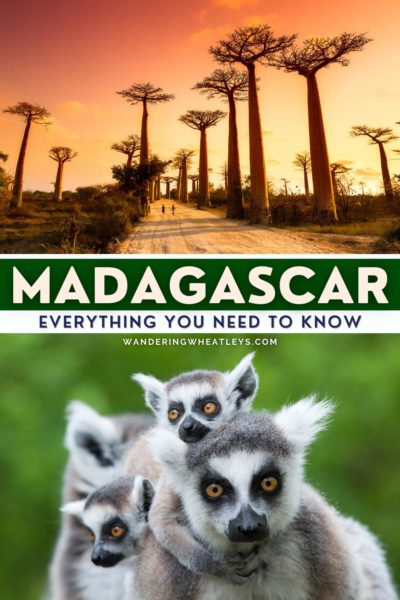
Madagascar feels like a far far away land. That is because it is! Located off the eastern coast of Africa across from Mozambique, Madagascar is the world’s fourth-largest island. And with nearly 90% of wildlife endemic to the island, Madagascar should be high on your bucket list.
Don’t worry, we’ll get you there with this complete guide to Madagascar!
From rainforests to beaches, wildlife, and astonishing rock formations, there is a diverse range of sights to explore. But sadly, Madagascar is one of the world’s poorest nations, resulting in a poverty-stricken country that is also very cheap. Its infrastructure is some of the worst in the world, with a 120-mile journey sometimes taking an entire day to complete.
Because of the poor infrastructure and low costs, it is best to visit Madagascar for a long period, making it a wonderful backpacking destination. There are only a couple of well-developed areas, in particular Nosy Be, which is a common holiday destination.
Madagascar was a French colony until 1960 when it gained its full independence. As a result, the most common visitors to Madagascar are French nationals. There is a lot of French influence still today in Madagascar, especially related to its language.
Many French ex-pats have opened hotels and restaurants so the French food in Madagascar is delicious! Our favorite towns – Antsirabe and Diego Suarez – have an excellent culture, cheap accommodation, and excellent food.
Read on to learn all about the complete guide to Madagascar!
Content and photographs provided by Yana Kogan and Timon .
Disclaimer: This post may contain affiliate links. If you make a purchase or booking through one of our links we may earn a small commission (don’t worry, it’s at no extra cost to you).
Best Time to Visit Madagascar
The best time to visit Madagascar is during the dry season between April and November. The wet season is best avoided. Rain is very heavy and the island experiences cyclones between December and March.
Like many countries, Madagascar has in place COVID travel restrictions . You have the option to present a negative PCR test performed 72 hours before boarding, or you can test upon arrival. But check with the airline first, just in case. If you decide to test upon arrival, you’ll need to pay for the test at your own expense and self-isolate until the results are available.
How to Get to Madagascar
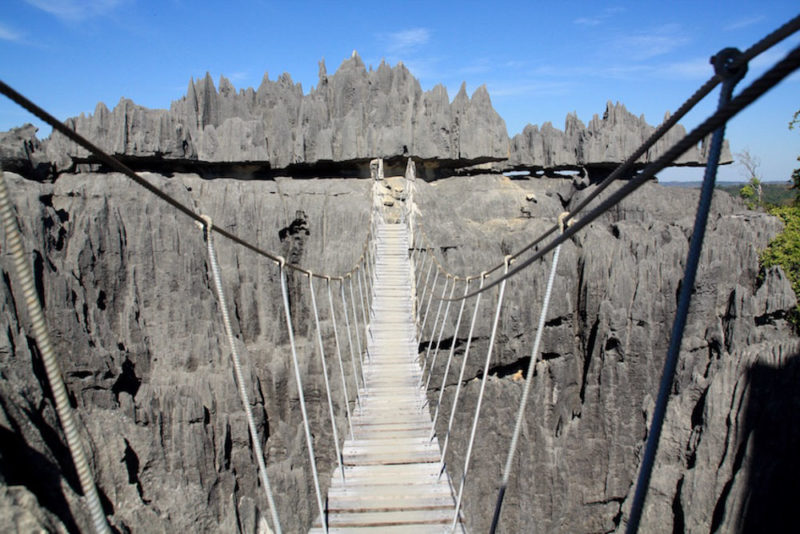
Madagascar is not easy to get to and flights are expensive. There are not many places that fly directly to Madagascar, including Paris, Addis Ababa, Nairobi, and Johannesburg. Flights are also available from Mauritius, Seychelles, Reunion, Comoros, and Mayotte, but flying through these places is typically expensive.
We were able to score a multi-destination flight with Air Kenya that originated in Nairobi with stops in Mauritius, Madagascar, and Seychelles for only $350 USD. If you are exploring the region for a long time, make sure to check different options as there are often deals on multi-destination flights.
Internal flights in Madagascar are a monopoly with Air Madagascar. They are known for lengthy delays (or cancellations) and flights usually cost $300 USD one-way.
Visa for Madagascar
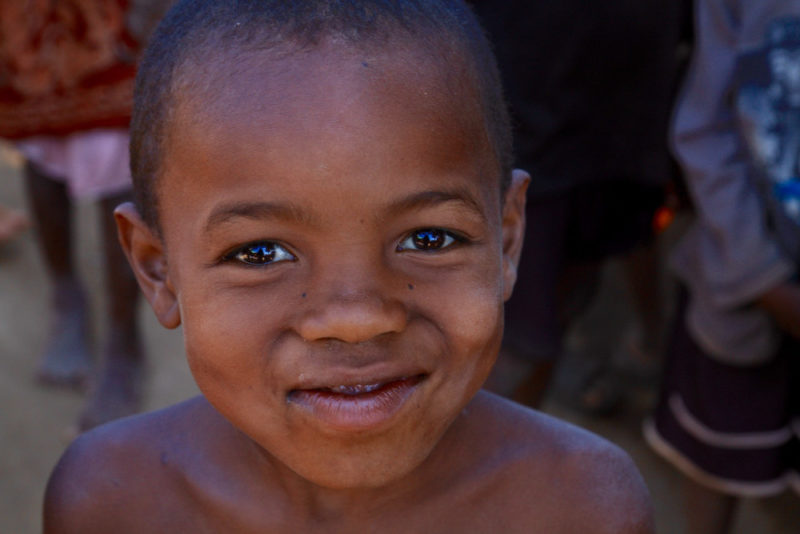
An electronic visa (eVisa) will be required for tourists. The eVisa application is available online and valid for up to 90 days. Visitors will need to complete the online registration to receive a landing authorization to present on arrival at the eVisa ticket counters. The eVisa rates are:
- 30 days: $37 USD or 35 EUR
- 60 days: $45 USD or 40 EUR
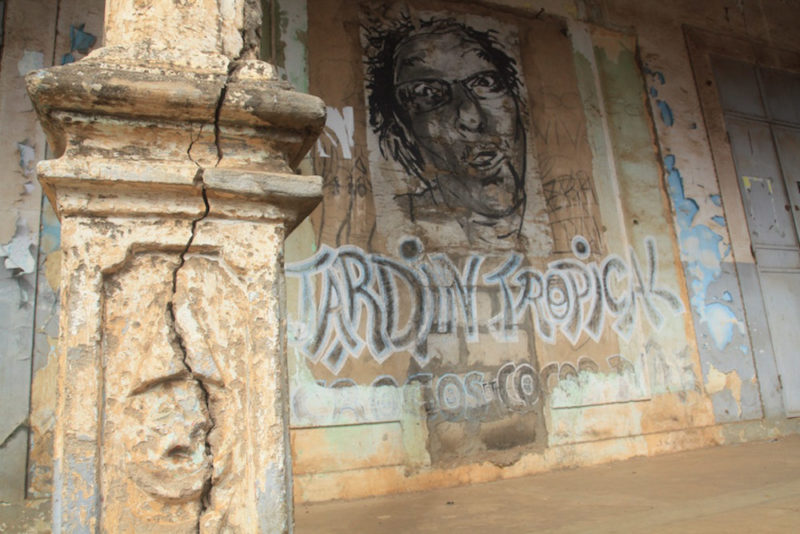
Malagasy is the national language of Madagascar and there are many regional dialects. It was a French colony up until its independence in 1960, so French is the official second language. But in rural locations, many do not speak French.
English is rarely spoken in rural areas. From a language standpoint, Madagascar was one of the most difficult places we have ever traveled to. We would recommend learning some basic words in French as well as common numbers.
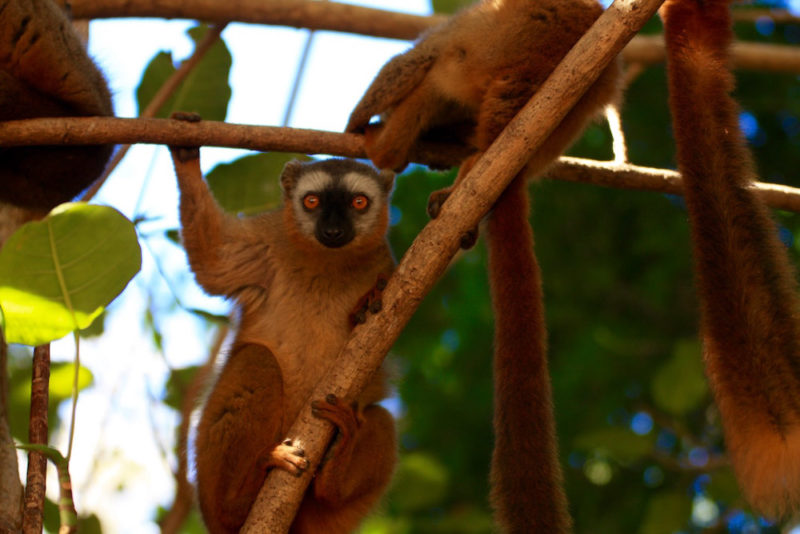
Madagascar uses the Ariary (Ar) which was introduced in 2005 as the national currency. It is the same bill as their earlier currency, the Malagasy Franc. Many locals, especially in the countryside, still use the Franc when quoting prices. The conversion from Franc to Ariary is 5:1. Typical Costs in Madagascar are as follows:
- Street food ranges from 500 – 2,500 Ariary for meals
- Beer typically cost 3,000 Ariary
- Budget hotels range from 20,000 – 35,000 Ariary.
As of March 2022, the Ariary is worth:
- $1 = 4,047 Ariary
- €1 = 4,474 Ariary
Best Sim Cards in Madagascar
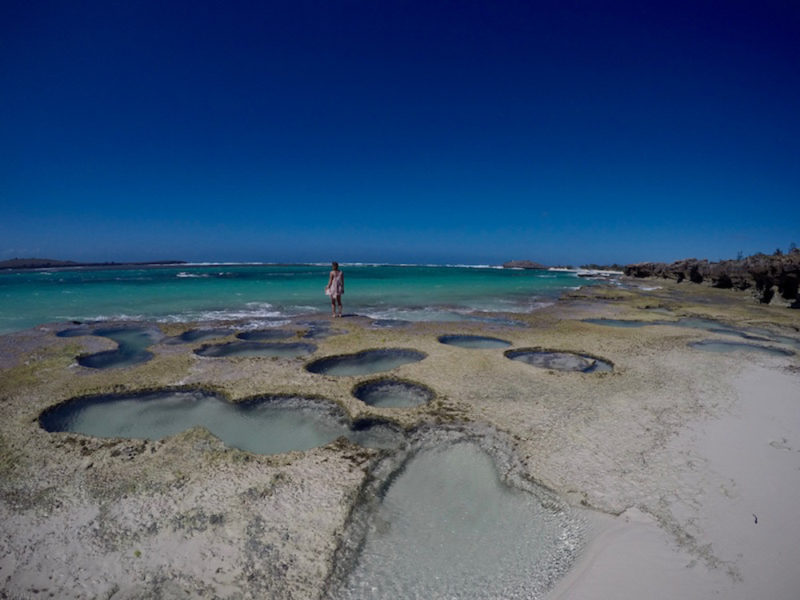
Telma is the largest, most reliable, and cheapest cell phone provider. However, Orange was our preferred network to use for data. Sim cards cost 3,000 Ariary, and credit is available throughout the country at street vendors and shops. Credit is available in 1,000 Ariary intervals, which is good for about 50 MB of data.
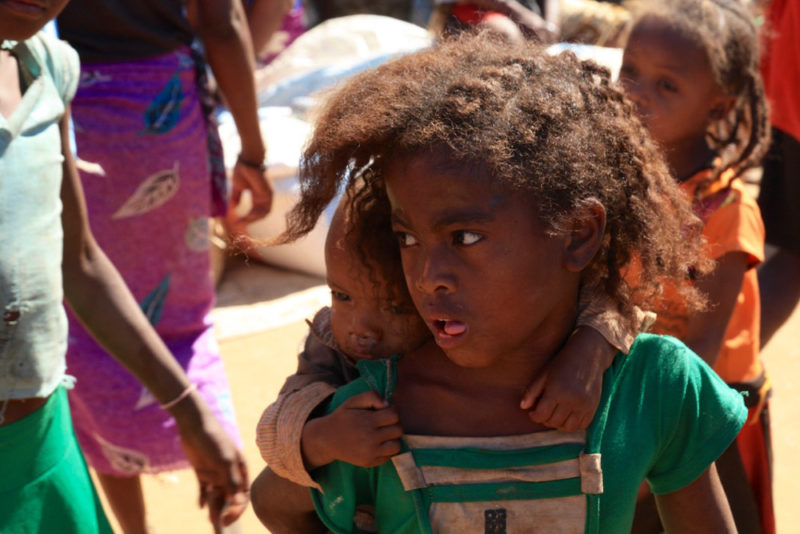
Hotels in Madagascar are very cheap and possibly some of the best for the budget prices. Good rooms cost between 20,000 and 35,000 Ariary. Warm showers are a rarity and the “Malagasy shower”, a simple bucket shower, was quite common. Western toilets were not always found, and if they were, they rarely were inclusive of the much sought-after toilet seat.
Where to Stay in Madagascar on a Budget
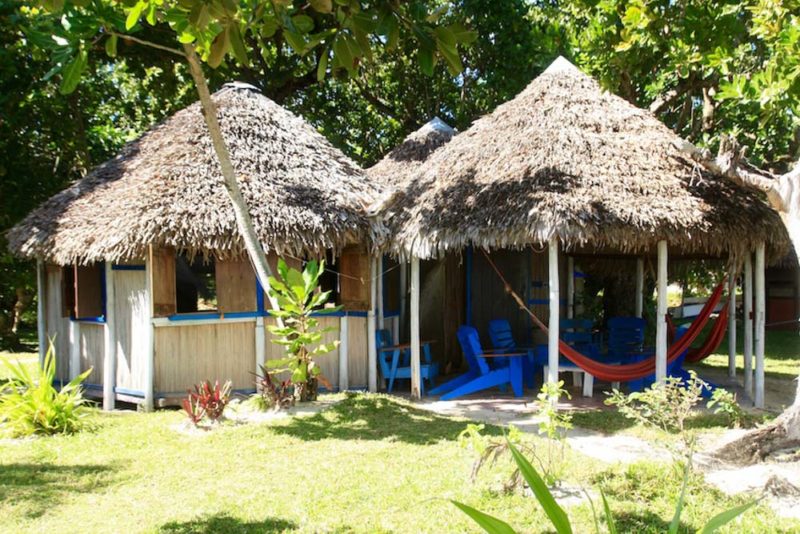
- Fianarantsoa – Residence Matsiatra is around $20/night for a private room
- Manakara – Chez Zizou costs $20 for very basic bungalows on the beach
Food in Madagascar
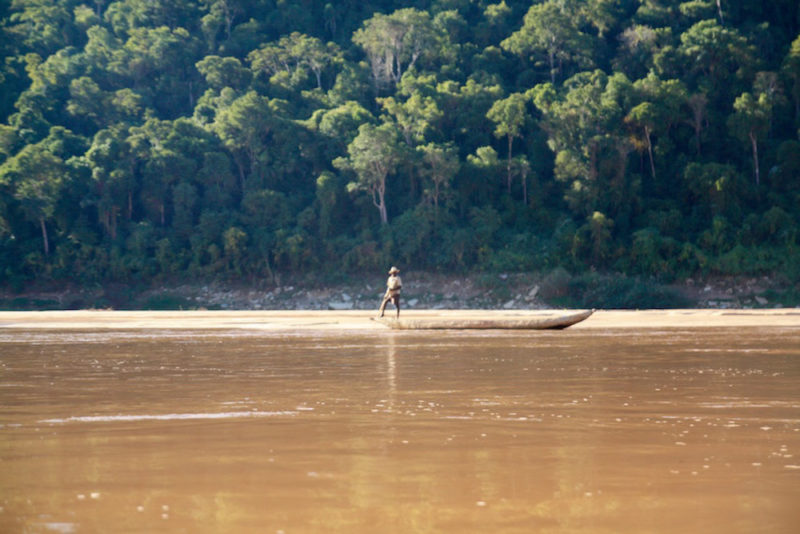
Madagascar has many ex-pats, so there are excellent restaurants on the island, and the Italian and French cuisine is particularly amazing.
Zebu (beef) is the national dish and is incorporated in all cuisines. The local cuisine is served at “hotelys” and street vendors. Hotelys are small local restaurants, common in most towns. Dishes are typically an enormous plate of rice and a small side of meat, either zebu, pork, or chicken. Occasionally, mine sao (fried noodles) or beans are available.
In the morning, several street vendors sell coffee and fried dough (which is delicious). Throughout the day, it is common to find vendors with fried snacks, such as samosas, fried bananas, or fried vegetables.
Typical costs for food are:
- Fried snacks: 100 to 200 Ar
- Coffee: 200 to 300 Ar
- Small meals: 1,000 Ar
- Hotely meals: 2,500 to 4,000 Ar
Food-Related Illness
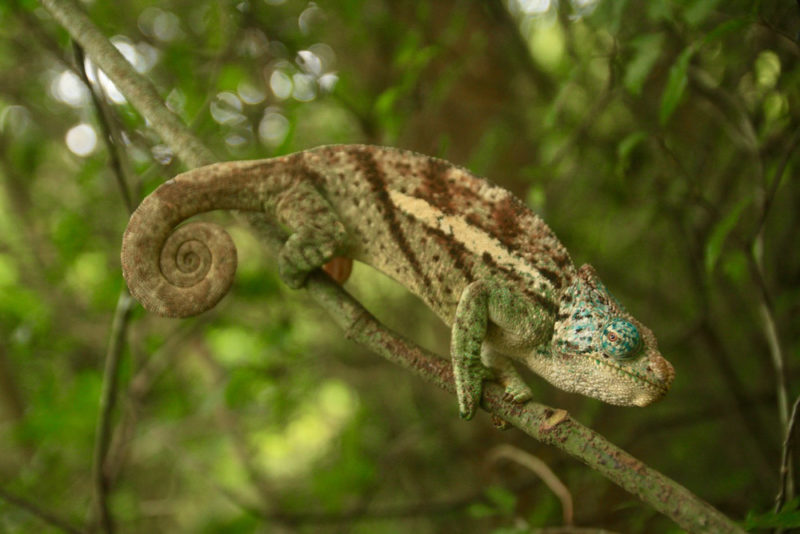
Madagascar has very poor health standards, bad sanitation, and a lack of refrigeration. Food is often prepared in large quantities, days in advance, and sold until it is finished. The inevitable result is that you will likely have an upset stomach with a bout or two in the toilet. Don’t worry, everyone here is in the same boat, so you are not alone.
Taking a Taxi Brousse
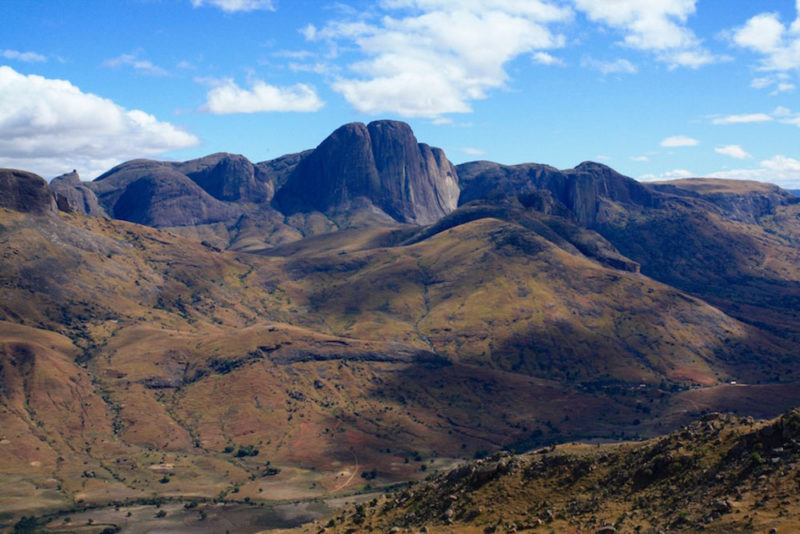
Taxi brousses are the main method of public transportation in Madagascar. A taxi brousse is a mini-bus that can range from somewhat new to somehow surviving. You never know what to expect; music blasting, chickens on the floor, dead fish on the roof, luggage packed in everywhere, and babies sleeping half on your lap. It is surely an adventure, and Madagascar cannot be visited without at least one taxi brousse ride!
Be ready to get bombarded and harassed at every taxi brousse station. Always look around at several options, inspect the bus, and go with the one that is almost at capacity as they do not leave until they are full.
Regional vs. National Taxi Brousse
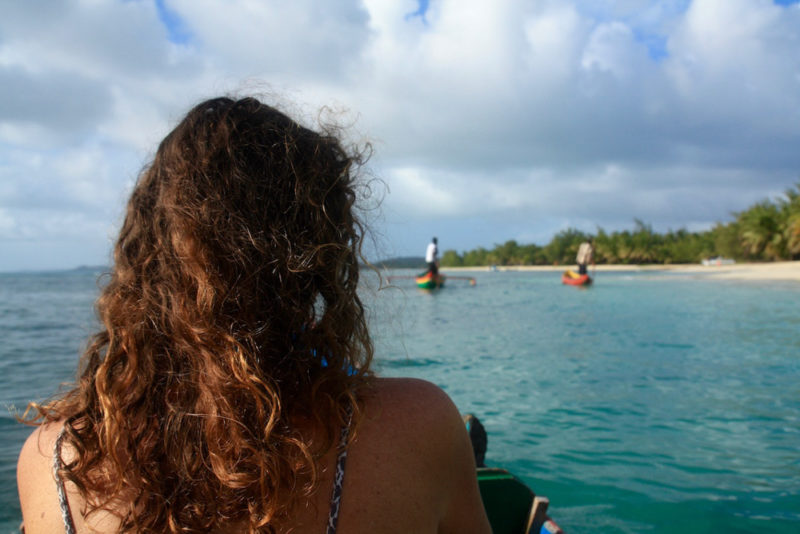
This is critical. Regional buses are of lower quality and they pack in as many people as possible. If they have room, even when you swear it is not possible, they will stop and pick up more people. At one such stop, we saw two grown men who did not know each other, sit on one another’s lap. National companies do not pack people in and each person has an assigned seat.
Factors When Picking a Taxi Brousse
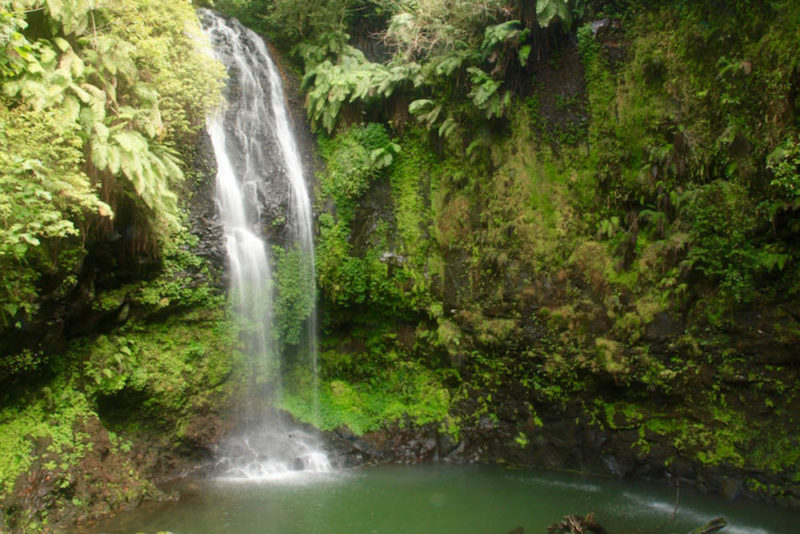
- Look at the tires. Do they look like they can make it to your destination? Make sure they have tread.
- Can they put your bag inside in the trunk space verses on the roof?
- Can you get a seat next to a window that opens?
- Are you sitting right next to the only working speaker?
- Is the taxi brousse almost full?
These may sound like minor factors, but then you have one of “those” taxi brousse rides. “Those” rides take eight hours when it should take three. They put dead fish on the roof on top of your bags. It is 90 degrees and humid and no one likes to open their windows, because its “winter.” Music is blasting out of the only speaker right above your seat.
These are not made up, these happened to us and it can happen to you too. Picking a taxi brousse is part art, part science. It’s best to just mentally prepare for a long and stressful day and cross your fingers that you’ll actually get to your destination. Aside from all those things, it’s absolutely great, I swear.
Taxi Brousse Pricing
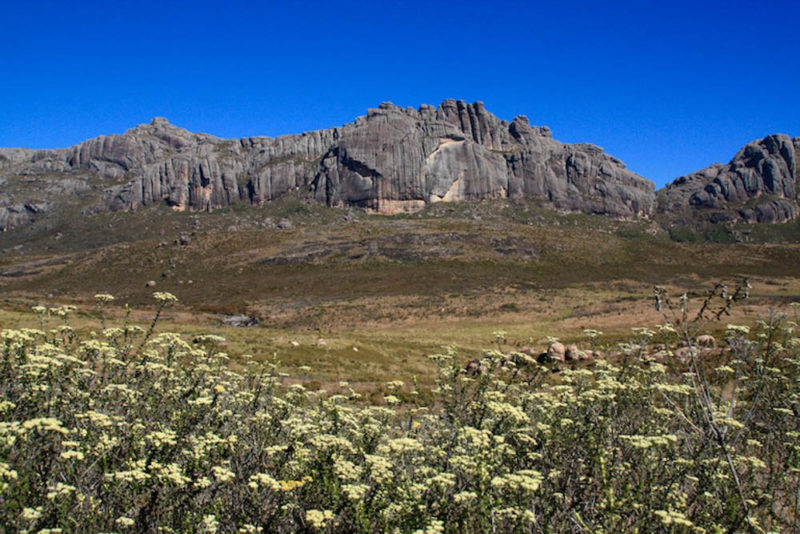
- Tana to Antsirabe: 12K
- Morondova to Antsirabe: 30K
- Antsirabe to Fianarantsoa: 15K
- Tsaronuru to Ambalavao: 3K
- Ambalavao to Ranahiro: 20K
- Ranahiro to Toliara: 23K (no taxi browse station in Ranahiro, book the day before with a hotel or one of the touts in town)
- Toliara to Anakao Ferry: 50K each way
- Toliara to Tana: 52K by Taxi Brousse 120K by private car
- Tana to Andasibe: 15K
- Andasibe to Tamatave: 14K
- Tamatave to Ile Saint Marie (bus and ferry transfer): 70K
- Tamatave to Tana: 20K
- Tana to Diego Suarez: 70K
Madagascar Itinerary Recommendations
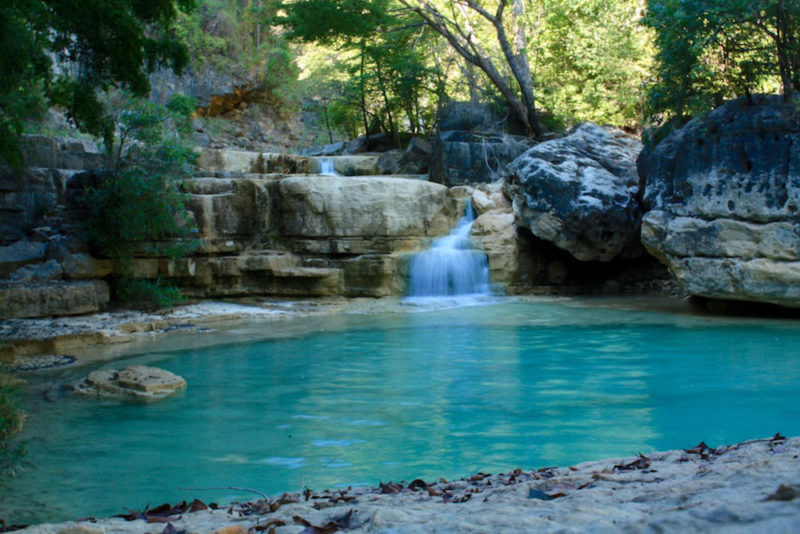
The biggest variable when visiting Madagascar is the travel time between destinations. The taxi brousse is pretty reliable; however, the drive will incur long hours. For those with a limited holiday, it is best to hire a personal car and driver.
West Madagascar: Baobabs and the Grand Tsingy
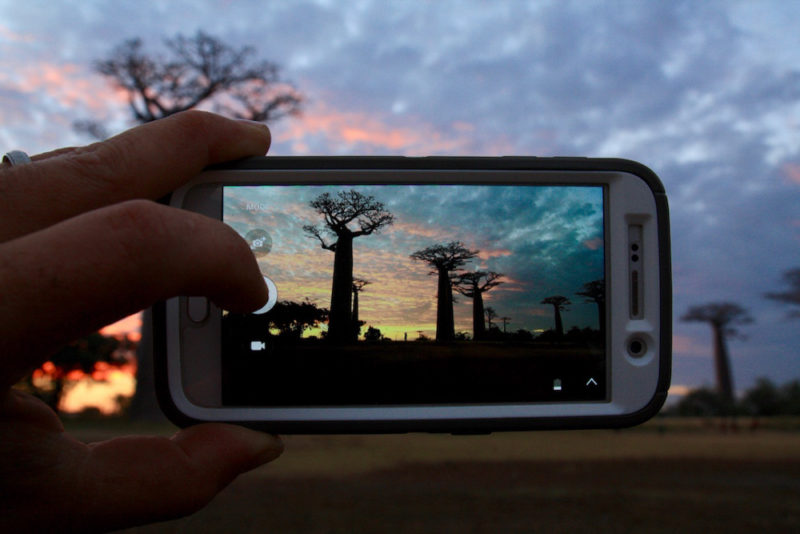
The west of Madagascar has two of the main highlights, Tsingy de Bemaraha and the Avenue of the Baobabs . An excellent way to visit the west is on a seven-day tour that includes a few days on a traditional pirogue (boat) floating down the Tsiribihina River.
Tsingy and the Avenue of the Baobabs are two of the most popular places to visit in Madagascar and a highlight that should not be missed.
East Madagascar: Jungle and Beach
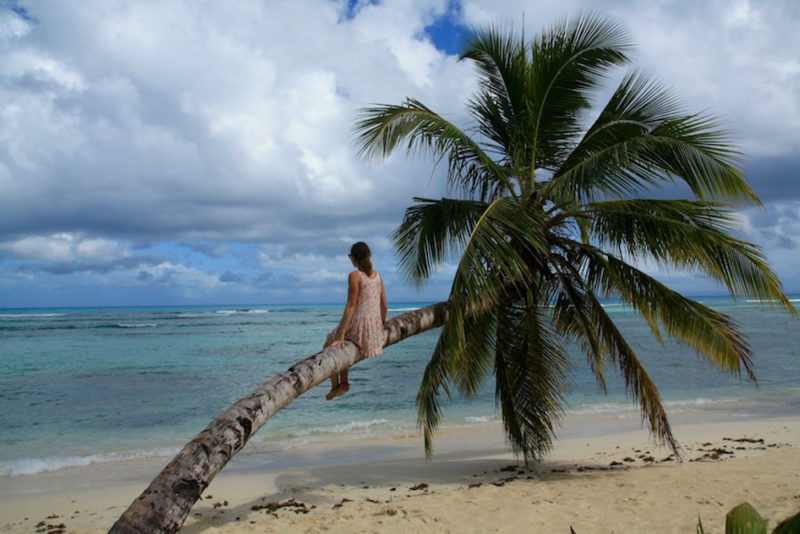
The east of Madagascar is a very desirable part of the country, with excellent rainforests and beaches. Near Antananarivo, Andasibe is a rainforest with great walking tours. Continue to the coast to Ile Saint Marie and the paradise island of Ile Aux Nattes .
South Madagascar: Hiking and Beach
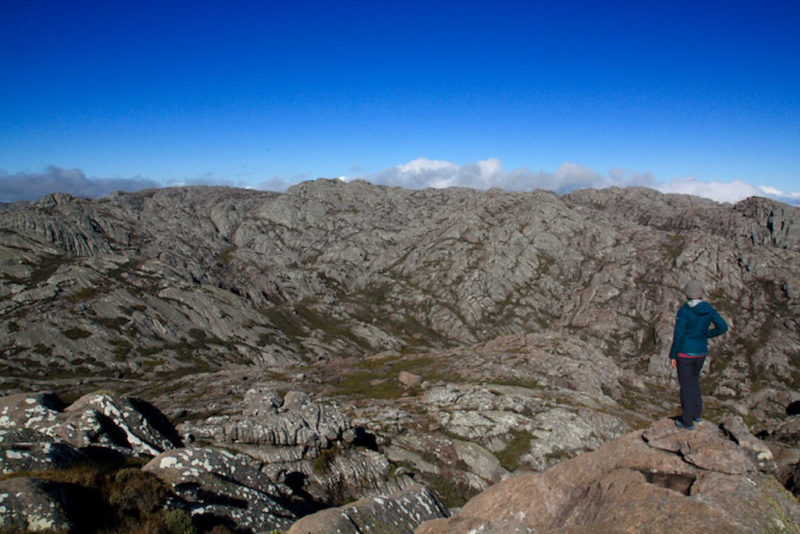
Due to better road infrastructure, visiting the south is the most popular route for tourists. The itinerary usually visits Antsirabe, Ambalavao, Anja Park, Isalo National Park, and one of the beach towns near Toliare, such as Anakao or Ifante.
While this is very popular, this was our least favorite part of the country. The only exception was hiking the Andringitra Mountains near Ambalavao.
North Madagascar: Rainforest, Rock Formations, and Beaches
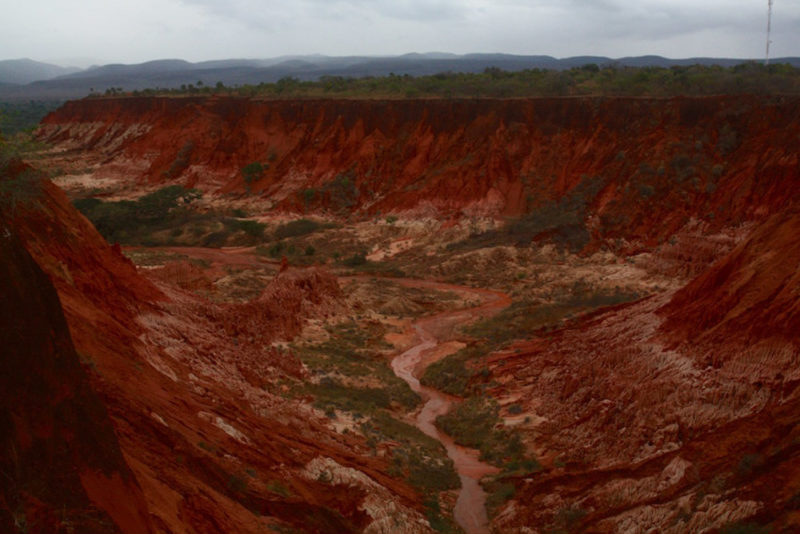
The north is much more laid back than the rest of the country. Most of the north is concentrated around Diego Suarez and Nosy Be. Nosy Be is expensive and a popular resort island. Diego Suarez is a great colonial city with excellent sites nearby.
Main activities include a visit to Ramena, a boat ride to Emerald Bay, hiking the Three Bays, and a day trip to Tsingy Rouge and Amber Mountain.
Best of Madagascar
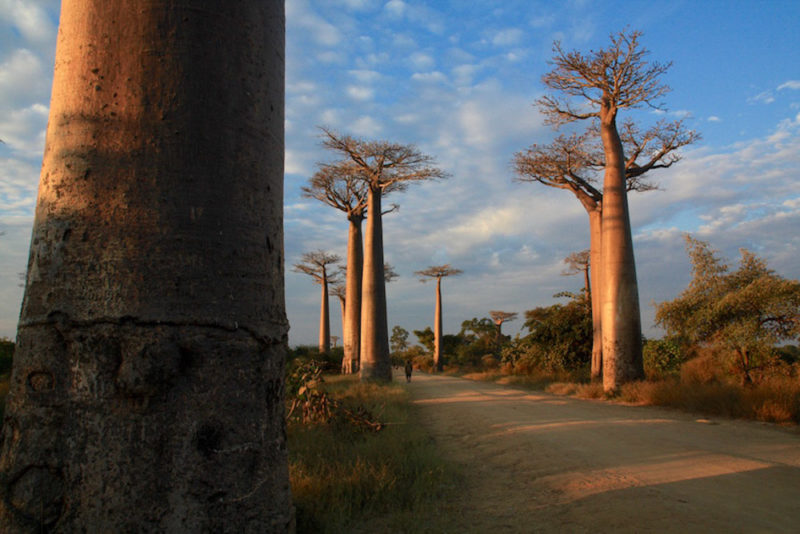
- Avenue of the Baobabs
- Andasibe rainforest
- Ile Aux Nattes
- Andringitra mountains
- Tsingy Rouge
That’s the complete guide to madagascar – we hope you have an amazing visit to this beautiful country!
Planning a trip to Madagascar? Check out our favorite books and travel guides!
SHARE THIS ON PINTEREST
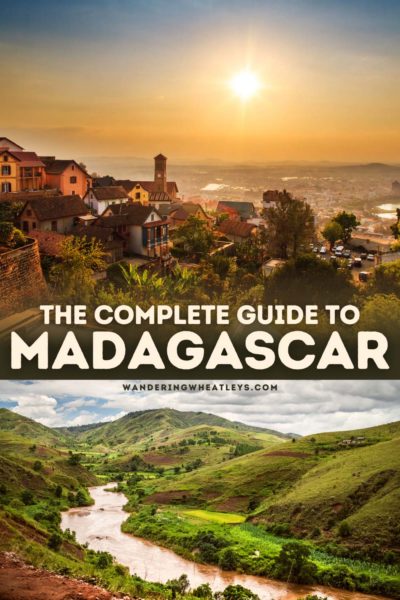
About the Author:
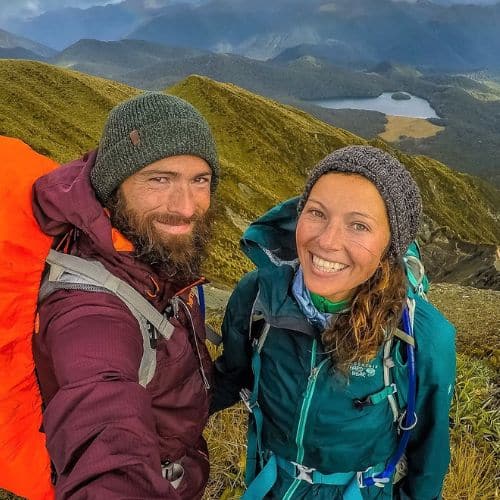
Yana & Timon met at college in Boston, Massachusetts. After graduating, they started their professional careers. They moved to San Francisco in 2010, a city they loved living in for nearly six years. After working and saving up money for several years, they quit their jobs and set off on an adventure of a lifetime. They started living a nomadic lifestyle in December 2015 and have not looked back since.
View all posts
Related Posts
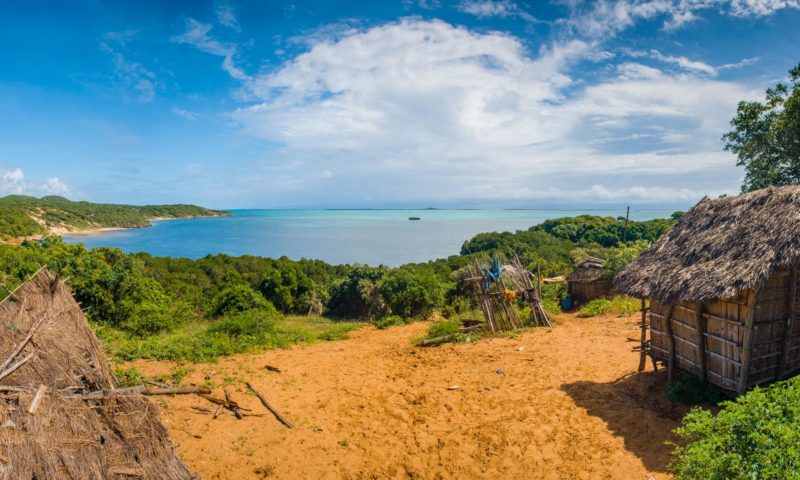
An Adventure Guide to Diego Suarez, Madagascar
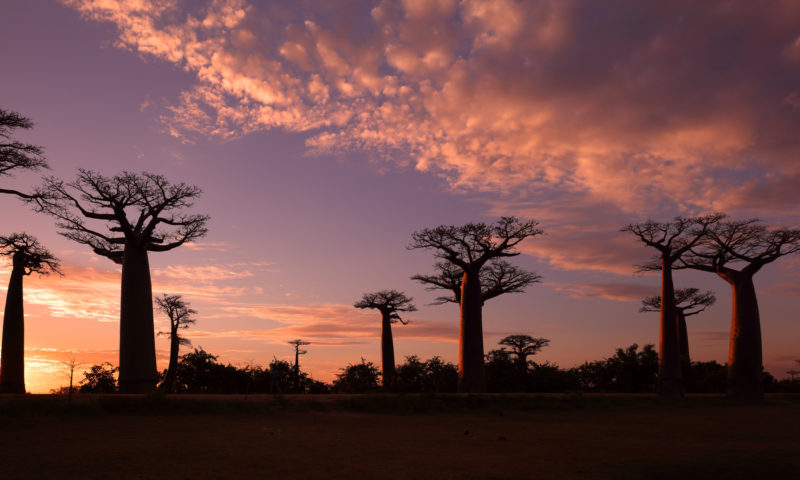
The Ultimate Madagascar Itinerary Ideas
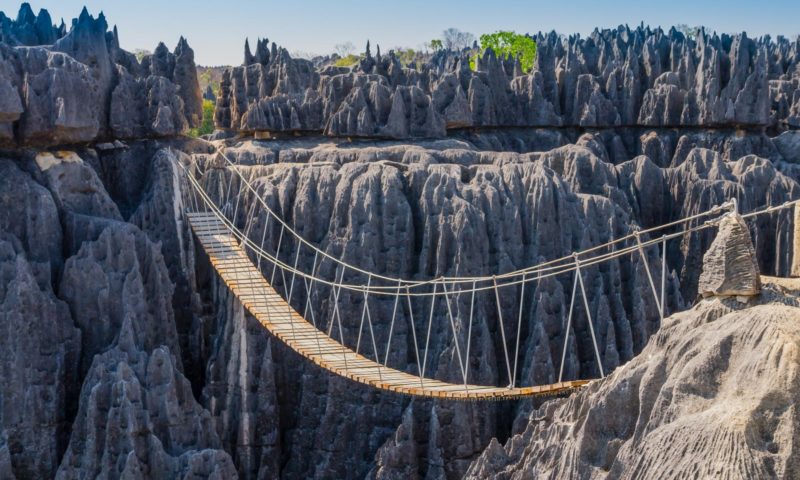
Wild West Tour of Madagascar
1 thought on “complete guide to madagascar: all you need to know”.
Hi Your trip sounds great, thank you very much for sharing all this helpful information. How was it with the safety? Did you always feel save? Or did you hear of tourists getting robbed?
Leave a Comment Cancel Reply
Your email address will not be published. Required fields are marked *

Madagascar Travel Guide (Everything You Need To Know Before You Visit)
By Author Christian L.
Posted on Published: May 21, 2020 - Last updated: June 28, 2021
Categories Africa , Destinations , Madagascar
Madagascar is the perfect destination for the adventurous traveler and those who want to get away from mass tourism – but traveling around the 4th biggest island in the world will require a lot of time, and will push your patience to breaking point. That being said, this Madagascar travel guide will make the journey a whole lot easier.
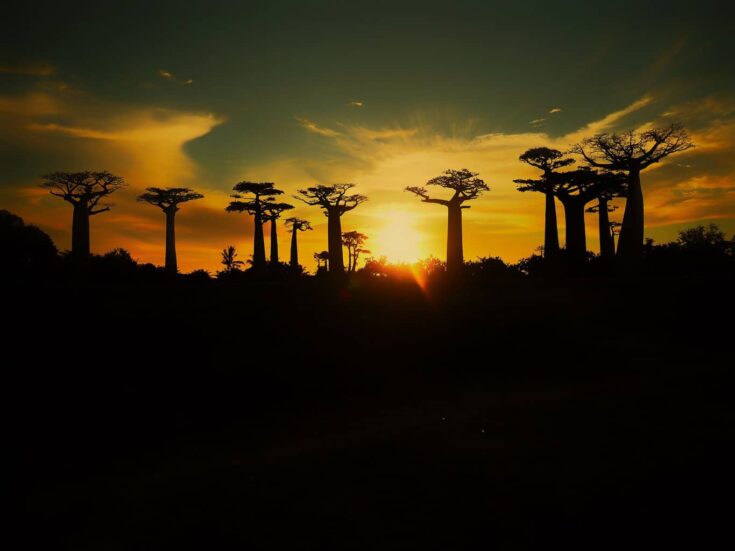
But if you’ve got time and patience, you will be rewarded with one of the most biodiverse destinations in the world.
Madagascar is home to thousands of species of flora and fauna of which almost 90% cannot be found anywhere else in the world, including the famous lemurs which are only found in Madagascar.
That’s actually a lie; there is only one species of wild lemurs on Comoros.
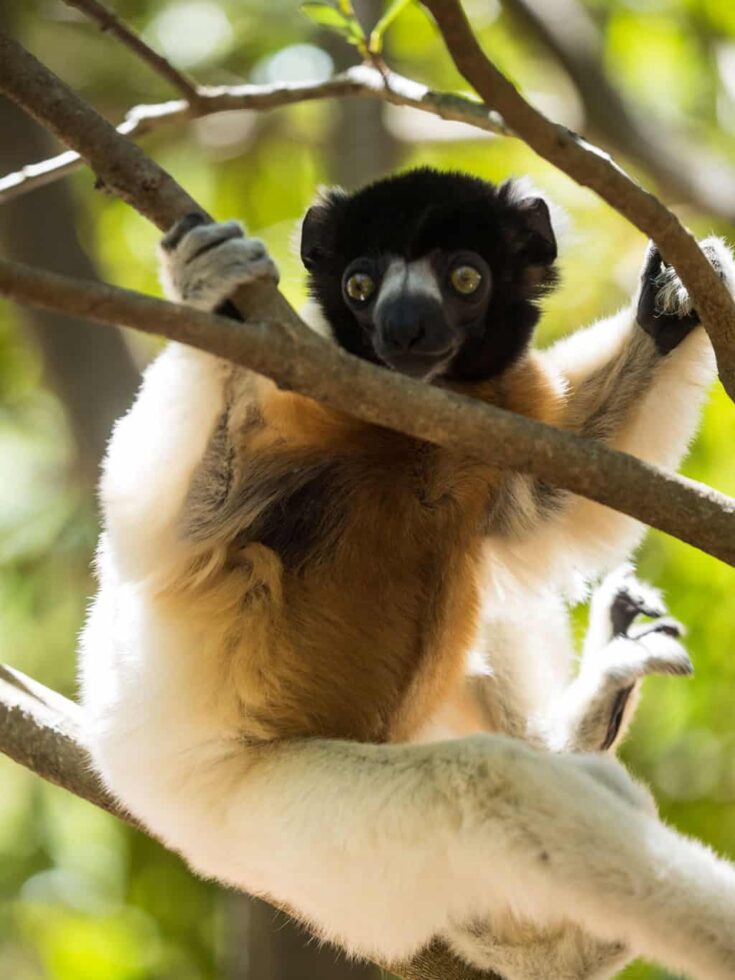
Madagascar is also home to some of the best and most underrated beaches in the world together with some breathtaking nature and scenery, making it a perfect travel destination. But if you’re still on the fence, here are ten bullet-proof reasons you should visit Madagascar .
Need to know how to travel to Madagascar? It can be tricky going it alone if you’ve never ventured onto a remote island before. Keep reading to find out exactly how to travel to Madagascar.
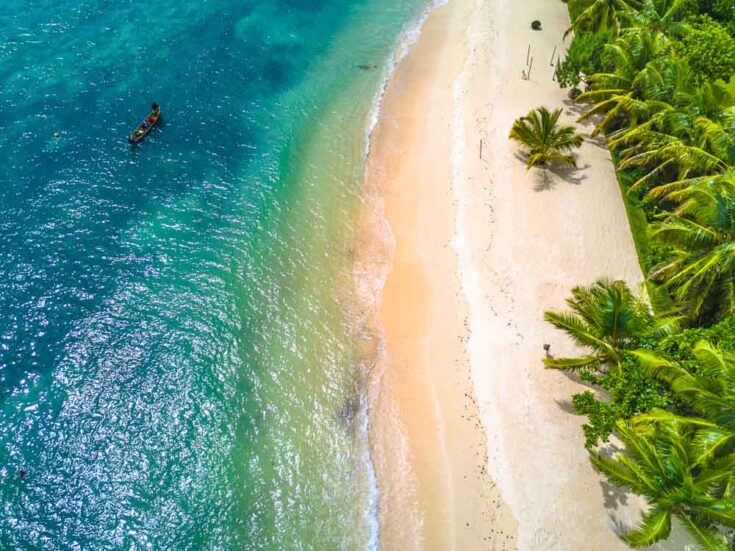
Madagascar Tourism | What You Need to Know
All the information provided here is from my experience traveling around Madagascar in April 2017, but has been updated to reflect the latest pricing and information.
Visa For Visiting Madagascar
Visas are required for everyone visiting Madagascar. You can obtain a 30 days or 60 days visa at all international airports. Despite what the guidebooks say, the 30-day visa is NOT FREE. A 90-day visa is no longer available! 30 days 35 Euro / 37 USD 60 days 40 Euro / 45 USD Or you can apply in advance for an Evisa to Madagascar , this will save you a lot of time when arriving at the airport.
There are no ATMs or money exchanges before immigration and customs, so be sure to bring cash with you to pay your visa fee.
No passport photos are required, but a Yellow Fever vaccination certificate is (depending on your travel history and the countries you’ve visited).
The visa sticker takes one full page of your passport.
Arriving At Ivato International Airport (TNR) When You Travel to Madagascar
The main airport in Madagascar is located 20 km northwest of Antananarivo, the capital of Madagascar.
BNI Madagascar and Bank of Africa are both located after immigration and customs, and they both offer currency exchanges and ATMs. Unlike lots of airports, the exchange rate at Ivato is pretty good, so it’s fine to change up money here.
There are also three small mobile-phone shops selling local sim cards for the three main providers in the country, Orange, Telma, and Airtel. The shuttle bus between the airport and the capital is NOT running anymore, so the only way to get to town is by taking a taxi or arranging an airport pickup via your hotel.
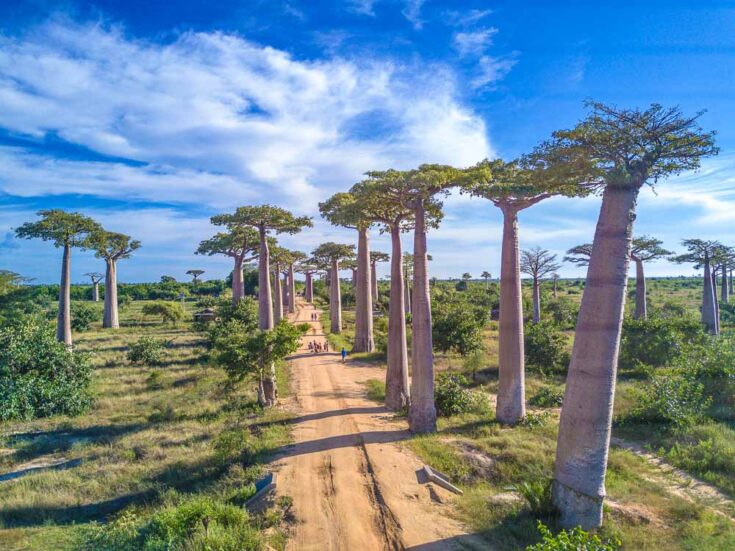
Because of traffic, the drive from the center could take anywhere from 40 minutes to almost 2 hours if you get stuck in evening or morning traffic. The price to the center of Antananarivo is circa 40 000 Malagasy Ariary in the day, but remember to bargain. And at night it will set you back 50 000 Ariary.
NB. The local currency is NOT accepted after immigration on departure. Only USD/Euro are. So be sure to get rid of your local Ariary before you go through immigration on departure. If not, you will be stuck with your Ariary like me.
Money in Madagascar.
The local currency of Madagascar is called Malagasy Ariary (MGA), just called Ariary.
1 USD: 3788 Ariary
1 Euro: 4523 Ariary.
British sterling didn’t seem to be a popular currency to exchange.
Every city and decent-sized town has numerous ATMs these days, and the two main banks are BNI Madagascar and Bank Of Africa. Both accept Visa, Visa Electron, and MasterCard.
None of the banks charged me bank fees when withdrawing money.
The maximum withdrawal at once is 400 000 Ariary (117 Euro / 125 USD)
Every bank seems to be able to exchange USD and Euro, but you will need your passport. But what you really want to know is, is Madagascar expensive? The answer is no. Although the flights can be pricey, that’s usually the most expensive part of the trip. The rest of your Madagascar trip should be relatively cheap.
Internet in Madagascar
Wifi is available in most mid-range hotels and guesthouses around the country, but the speed is slow outside the big cities. 4G mobile connection is available in Antananarivo and Tamatave. In smaller cities a 3G/2G connection is available.
There is rarely an internet connection in smaller towns and on the road between most places.
Orange, Telma, and Airtel all sell sim cards for 40 USD with a 3GB data package on arrival at the airport.
How To Travel Around Madagascar
Traveling around Madagascar takes time and is very slow even by African standards.
Of the now 101 countries I have been to, I will go so far as to say that Madagascar is one of the slowest and most uncomfortable countries to travel around in the entire world.
The only other country I have visited that can be compared to Madagascar is Mongolia.
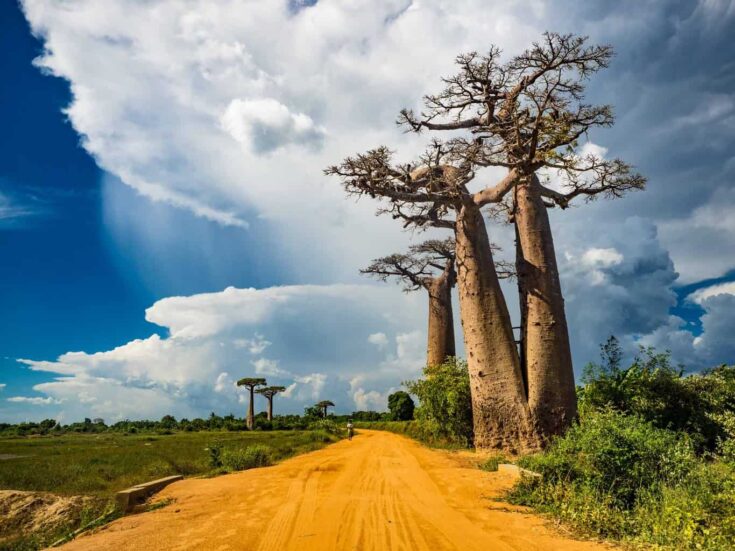
Update: Good News, While flying domestic inside Madagascar used to be ridiculously expensive, there is now a new local budget airline in Madagascar.
Air Madagascar has created a subsidiary just for a domestic flight, and it’s called Tsaradia ( Air Madagascar + Air Austral + Ewa Air). Domestic flight now costs 100 to 115 EUR one way to 400 EUR before.
So if you find traveling around South East Asia, India, or mainland Africa uncomfortable, Madagascar is definitely not for you. But if you like a bit of adventure and have plenty of time, Madagascar is definitely the place to go.
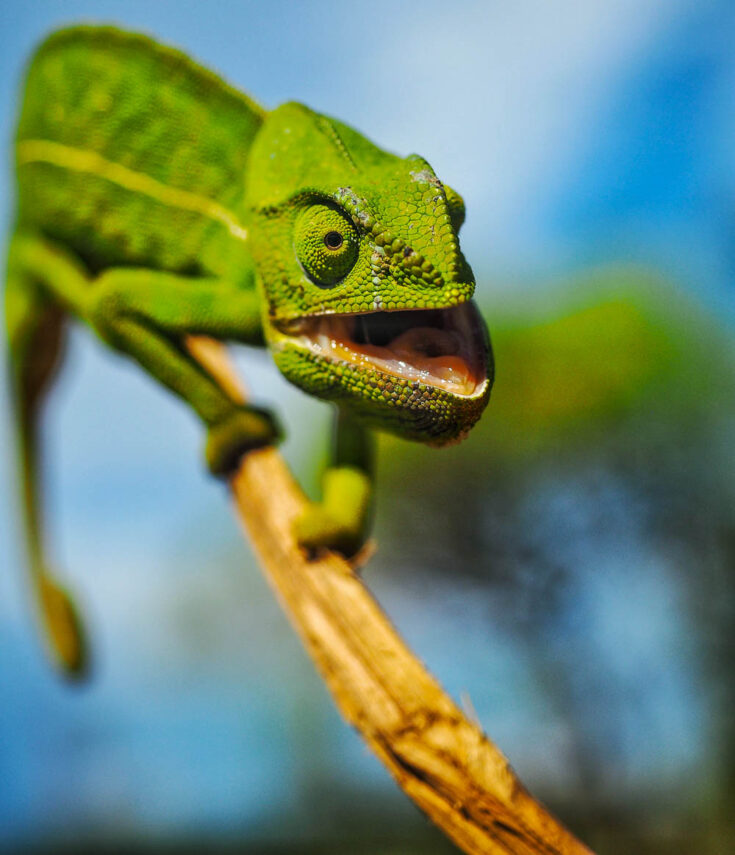
I stayed 16 days in Madagascar and traveling around the island took A LOT more time than I was expecting, so I wasn’t able to visit even half the places I wanted to before I left home. Even the famous Avenue of Baobabs is a national road in the country.
Don’t expect to be able to visit big parts of the country if you only have two weeks and are taking local transport.
If you want to cover big parts of the country in a small amount of time, the only way is to rent a 4WD car with a driver for 65 USD + fuel a day.
The usual way to get around Madagascar is by taxi-brousse, which are usually old Mercedes minibusses that can never be too crowded, stop every time someone wants to get on or off, and only depart when full. So there are no scheduled departures and arrival times can vary by up to 12 hours depending on when it left.
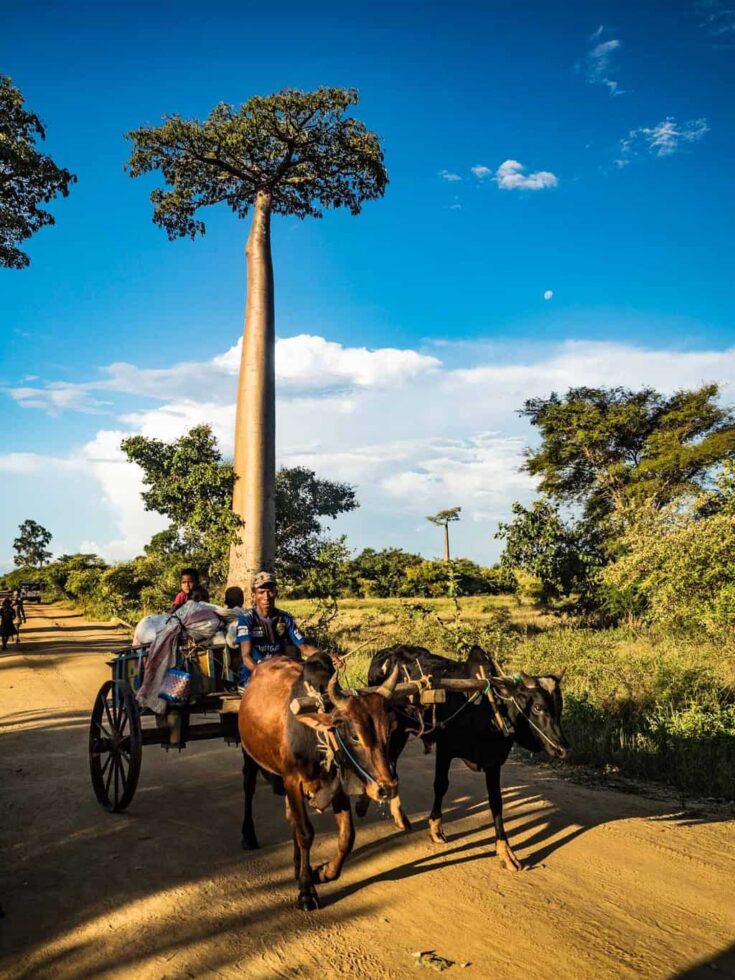
On a taxi-brousse, you’ll get chickens, ducks, and local people falling asleep on your shoulder.
Taxi-brousses are OK for shorter distances, but when you’re 180 cm+ tall like me, your knees and back will be done after hitting the seats in front of you for hours.
But things are improving with Cotisse Transport. This is a new local transport company that leaves on time, so if you’re 5 minutes late, they will have left already. They even offer wifi on board and only one person to each seat instead of 3 as on a normal taxi-brousse.
Cotisse Transport doesn’t offer online booking, but you can book your ticket in advance by going to their office.
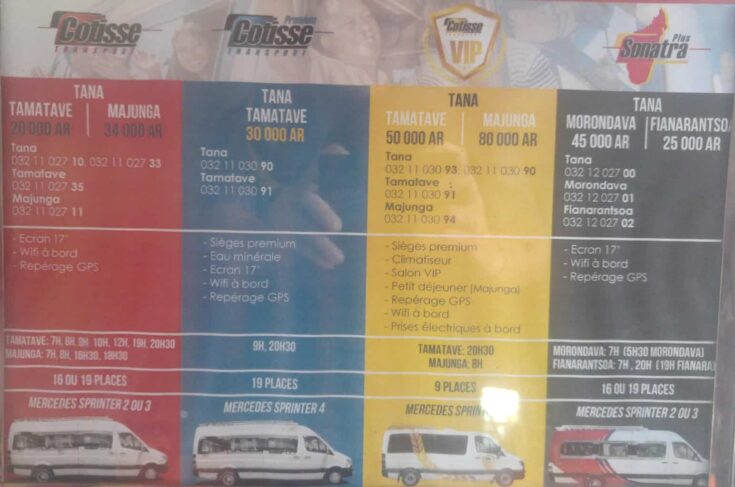
It’s also important to show up a MINIMUM of 30 minutes before departure to register that you are using your ticket and going on your trip and to load your luggage if you have it.
When traveling around Madagascar, you’ll have to pass through and most likely spend the night in Antananarivo each time you want to head to a different part of the country.
During my trip here, I transited the capital three times, and each time I had to spend the night there.
Madagascar, the perfect destination in Africa for the adventures traveler and travellers that want to get away from mass tourism and want to see wildlife and nature, here´s a complete guide to everything you need to know
Is Madagascar safe?
I personally didn’t have any problems in Madagascar, but a lot of travelers I met had been pickpocketed or had stuff stolen from their luggage when taking a taxi-brousse.
There are A LOT of beggars in Madagascan cities, and most of them are young children. Most of them will respect your “no,” but you do come across a few young “pricks” who go straight for your pockets.
You are required by law in Madagascar to carry your passport with you all the time.
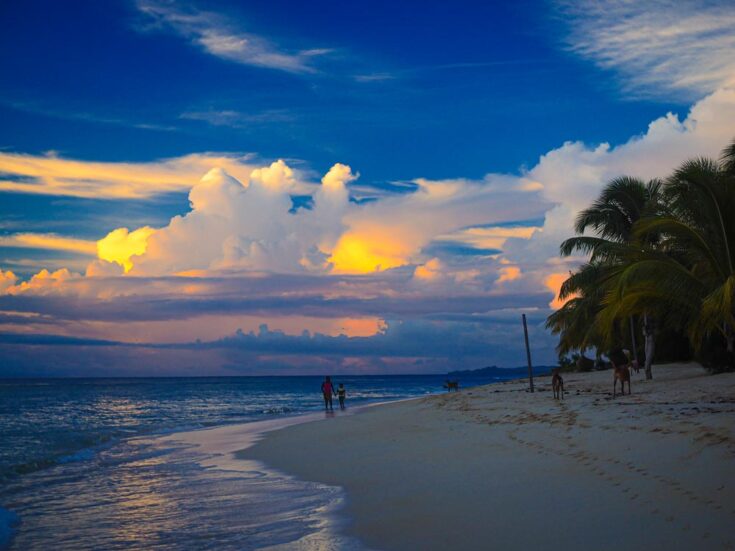
If you don’t have it on you and get stopped by the police/military, you are required to pay an unofficial “safety fine” of around 10 000. If walking around after dark, there is a higher chance of getting stopped.
This is especially true in Antananarivo and around Place de l’Indépendance, where I was stopped four times during my visit. As a single white male walking around, you do get some hassle from local women, especially if you’re going out drinking.
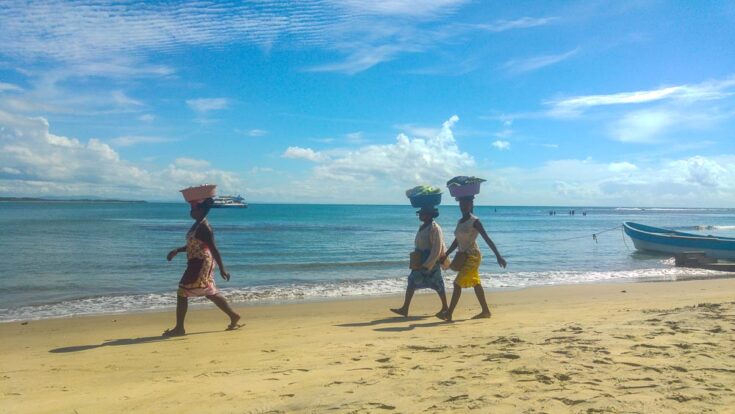
You will see a lot of older white men with young local girlfriends in Madagascar, similar to what you see in Thailand or the Philippines. On the other hand, solo western women shouldn’t face too much unwanted attention, but you shouldn’t walk around on your own after dark at all.
Language in Madagascar
The main language in Madagascar is Malagasy . It’s spoken by everyone. French is the second official language, but every French tourist I met was surprised how FEW locals actually spoke French outside the big cities. VERY few people speak English in Madagascar
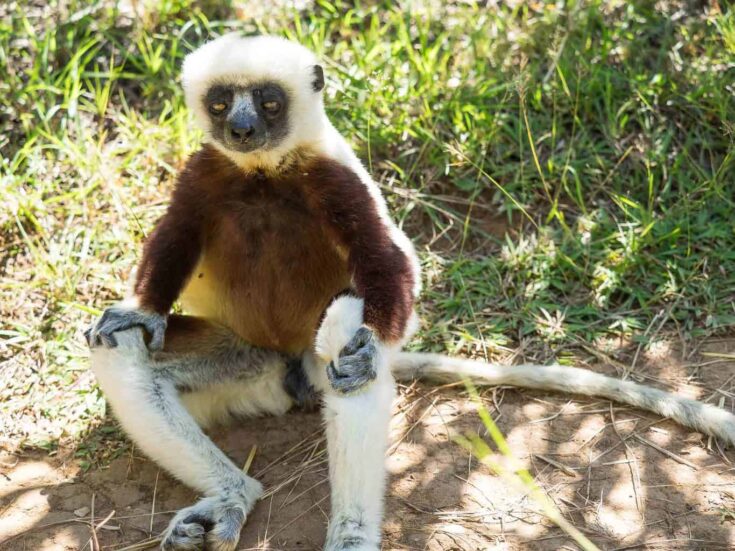
I don’t speak either Malagasy or French, but I still found traveling around Madagascar easy.
The locals were always accommodating and eager to help you out even when we couldn’t speak the same language.
Sunset over the famous Sunset over the Baobabs in western Madagascar.
Guidebook to Travel Madagascar
The newest edition of Lonely Planet Madagascar is pretty accurate and helpful when it comes to transport. But it seemed like EVERY hotel and restaurant (as always) had increased their price since the book came out.
For example, La Banane hostel on I’ll Sainte Marie is priced in the book at 5000 Ariary for a dormitory but the price in April 2017 is 18 000.
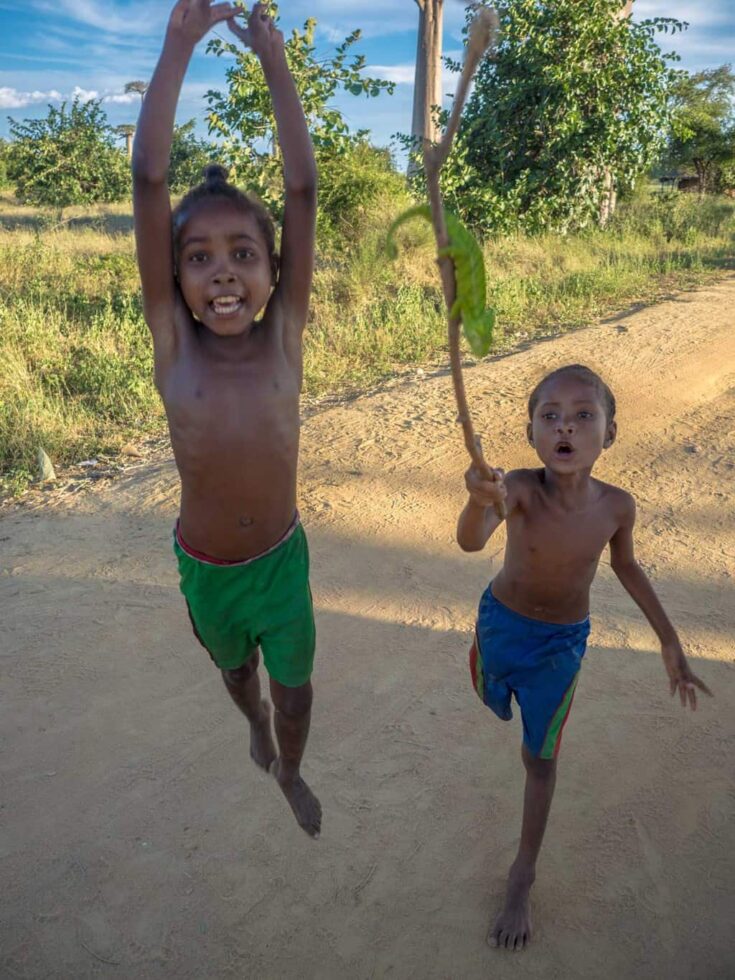
Hotel Eden in Tamatave is 16 000 in the book, but the price now is 28 000. All the restaurants in the book seem to have increased the price by about 5000 for each meal. A few of the hotels in the book have been shut down for years like Hotel Frederic in Tamatave, which is just a pile of ruins.
The boat service Melissa Express recommended in the book to get to Isle Sainte Marie from Tamatave doesn’t run anymore either. It was very evident that Madagascar tourism really changed the place.
Food in Madagascar
Malagasy cuisine is heavily meat-based, and every meal seems to come with rice.
The most popular dish in Madagascar is zebu meat (the local breed of cattle). Almost every restaurant, even small local ones, served zebu steak or a zebu stew. Chicken, duck, and seafood are also always available.
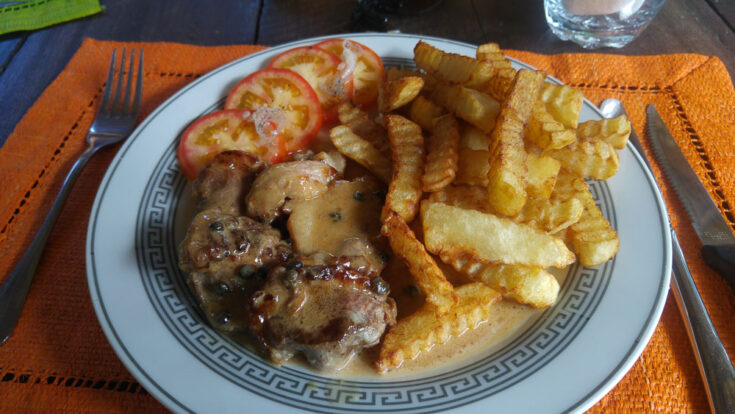
For vegetarians, fried rice with vegetables or noodles with vegetables are the most common dishes. But there is always a vegetable-based accompaniment to go with some rice and lots of eggs available, so being a vegetarian (or even vegan) in Madagascar isn’t a problem.
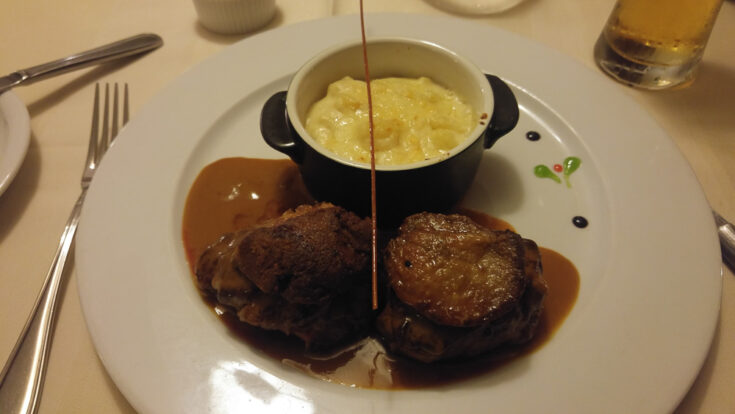
What a 35 000 Ariary Zebu Steak will look like in one of the restaurants in the country.
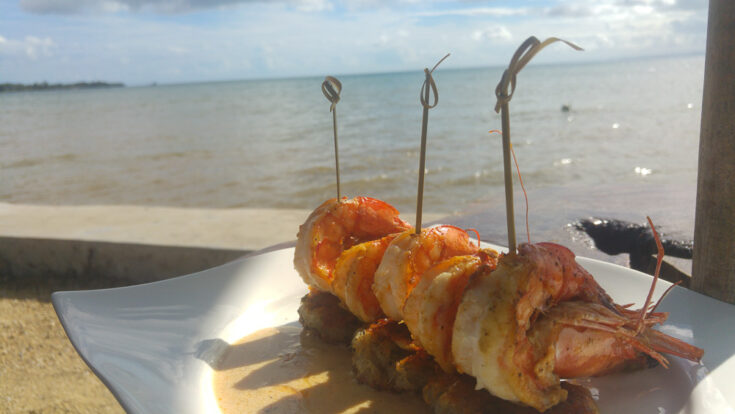
Beer And Alcohol in Madagascar
Only drink bottled water. Bottled drinking water is available everywhere together with coca-cola, Fanta ananas (it’s excellent), and alcohol too – especially the local flavored rum (Rhum arrange) or the local beer brands like Three Horses Beer (THB), Castel, Queens, and Skol.
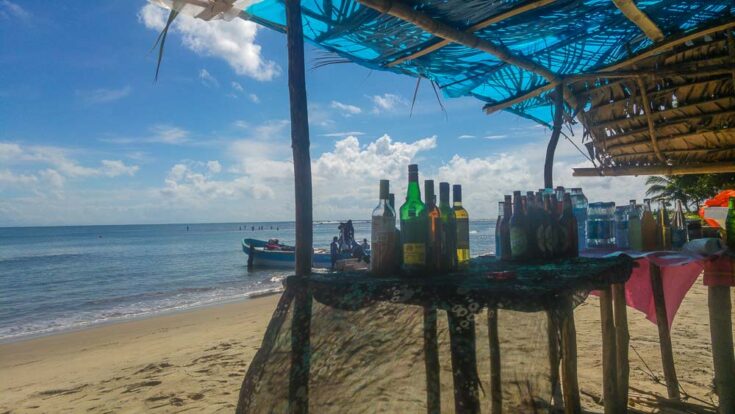
While the locals often drink rum because it is much cheaper than beer, the quality of beer in Madagascar is one of the best in Africa.
At a restaurant, a big bottle of beer is often the same price or even cheaper than a bottle of water.
Budget for a Trip to Madagascar
Madagascar can be done pretty cheaply if traveling on a budget, but you will have to be traveling very rough and taking local transport.
Hostels with dormitories are only really in the capital and very few other destinations.
So traveling with a friend will bring the cost down A LOT.
For EVERY national park, you are required to pay a daily entrance permit and to have a guide.
National park tickets are between 55 000 (17 USD) – 65 000 (20 USD) a DAY. Guides are normally around 15 000 (5 USD) a day.
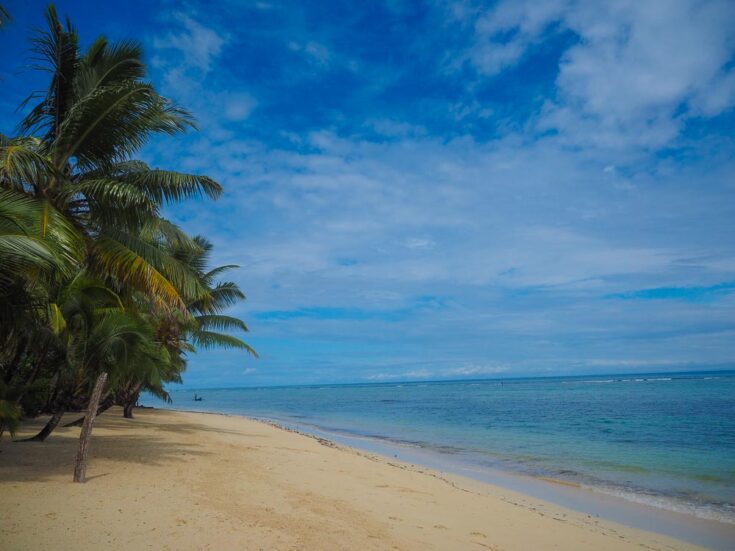
If you want to go to remote places and some national parks, hiring a 4WD car with a driver is often (always) the only option.
Check out the most popular hotels for people who want to share:
The standard price is 65 USD +fuel a day.
Cheap: Around 20 USD a day.
Transport: Local taxi-brousse – 15 000 (5 USD) between big cities.
Accommodation: back hotels with own bathroom, normally with fan: 25 000 (8USD) / 30 000 (10usd)
Food: Local street food and local restaurants. 2000 (0.6 USD) for eggs and toast with coffee for breakfast. Dinner at a local restaurant, 7000 (2 USD) for rice with zebu steak.
Midrange: 45 USD a day.
Transport: Cotisse Transport – 20 000 (6 USD) to 30 000 (10 USD)for Premium.
Accommodation: 90 000+ (30 USD) room with aircon, usually an excellent standard.
Food: 15 000 (5 USD) a meal, a great meal in a typical restaurant.
Flashpacker: 150 USD+ a day.
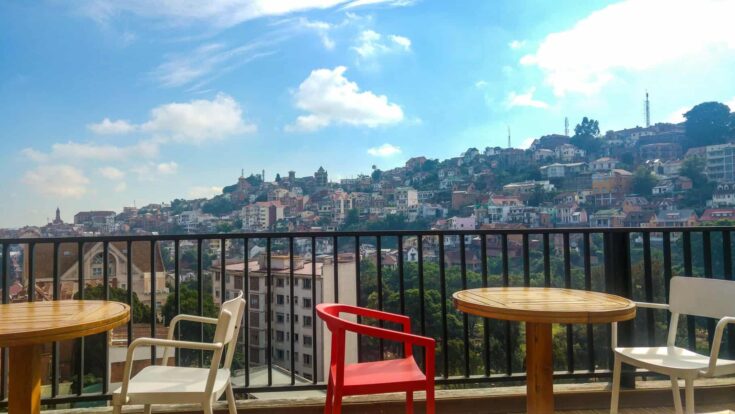
Transportation: Private 4WD with a driver, 65USD + fuel.
Accommodation: 70 USD a day. Great hotels to a high western standard often with breakfast buffets. My recommendation for a paradisiacal beach resort in Madagascar would be Ile aux Nattes .
Food: 35 000 (11 USD) A great meal in some of the best restaurants in the country.
What to Pack for Your Madagascar Visit
Except for the typical gear you would usually pack, you should also definitely pack:
Flashlight: There is almost no street light in Madagascar – even the big cities have no light after dark. Power blackouts are widespread outside the main cities.
Powerbank: It is common to only have electricity for a few hours a day in remote places in the country. Some days there is no electricity at all.
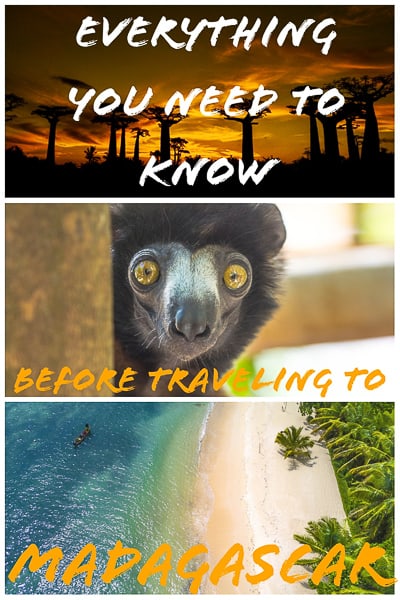
Bug spray: There are tons of mosquitos and other annoying biting bugs in Madagascar.
Waterproof: Something waterproof for your bag.
Your backpack or suitcase will be put on the roof while taking local transport and it rains a lot in Madagascar.
High-factor sunscreen: Difficult to find and expensive to buy when you do, so bring plenty if you burn easily.
If you plan on backpacking for an extended period of time, check out my backpacker’s packing list .
Electricity In Madagascar
The power plugs in Madagascar are the standard European standard 220V dual-pin power plugs. Everyone except mainland Europeans will have to bring a power adapter for your trip here.
Overall Experience Of Traveling to Madagascar
Overall Madagascar is a great country to travel around. But you will need more time to explore Madagascar than you would typically need for other countries.
I was able to see A LOT less in my 16 days on the island than I would be able to do in most other countries in the world at the same time.
You will also have to spend more money on Madagascar for a comfortable trip than you would have to do in other countries.
But if you have the time and are up for an adventure, Madagascar is a fantastic destination. I’d definitely like to come back in the future, but I will be sure to have more time next time.
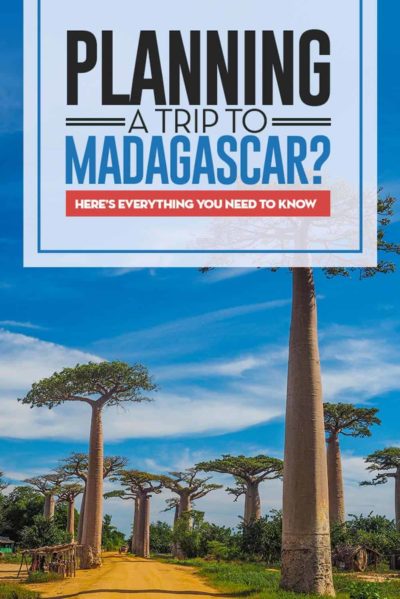
Tuesday 4th of October 2022
What a great article! We're currently dreaming of going to Madagascar again - we've been there before and we love, love love it! Here's to a year with loads of travel plans and new experiences!
Monday 22nd of June 2020
I decided to go to Madagascar next year. Looking for information I got your very informative page. Thanks so much. Do you know of any place I can get info about traveling there after Covid19?
Friday 29th of May 2020
Dear Christian, Thank you for this informative Post. I am a late 20s Youth with Madagascar on my Travel Bucket when the Pandemic finally gives us chance to live again.
In my plan I will be with my Sisters 17 and 22 and my 52 Year Old Mother. We intend to Visit for 16 Days. I intend to have a very good family time with them and also enjoy a little of the Night Life in Madagascar for a fun filled trip. I need your advice, 1. Which part is best ideal for Good fun. We are coming from Uganda.Should we go North? South? East or West? Is it possible to tour a few meaningful places in all Coasts? 2.Do you recommend an Air B and B or can we rent an Apartment? Are these options safe, can we party and make a little merry at night as a family or? Advise us on what is most Ideal.Or should we go to a Hotel instead? Can you recommend? 3.Do you have any Contact person that could be of help to me as I plan my travel? 4. In case one of us gets sick can UAP insurance work for us? 5. Would you recommend good places to visit that will help us make memories as a family? I am grateful, Doreen,Ug
Saturday 16th of May 2020
Thank you so much for the fital information on how to take a trip to madacaascar .
Manjunath K P
Wednesday 12th of February 2020
Hi Christian Your article was very informative. I am shortly travelling on an invite from the tourism department as I am a travel agent based in Bangalore, India
Will look forward to read more of your travel blogs. Thanks & regards
Madagascar: an island unlike any other
Apr 18, 2017 • 16 min read
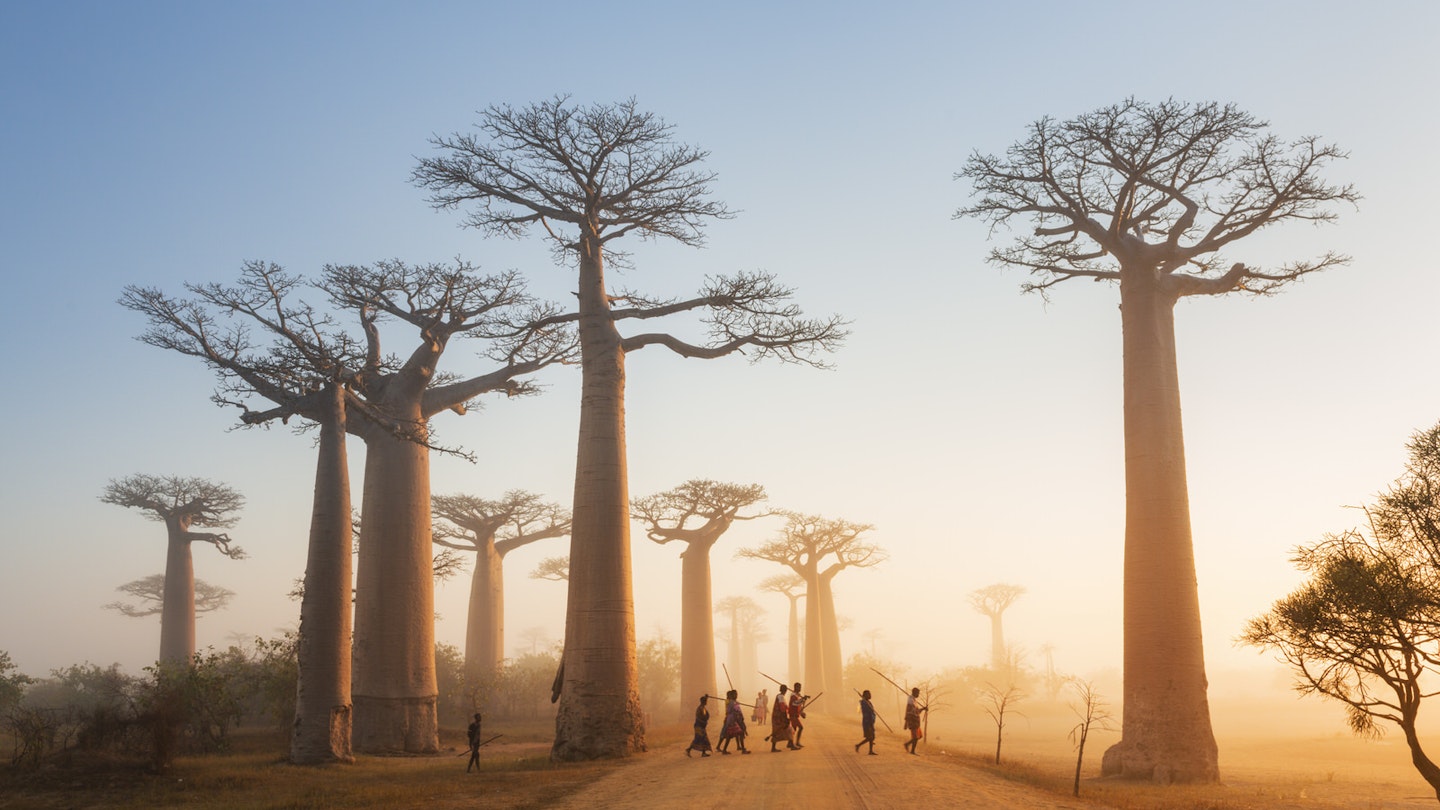
Lying in the Indian Ocean off the southeast coast of Africa, the island of Madagascar has evolved in splendid isolation for more than 80 million years; the result is a unique and startling world full of upside-down trees, stone forests and, of course, lemurs.
Join us on a journey through a wildlife-rich destination that never fails to surprise.
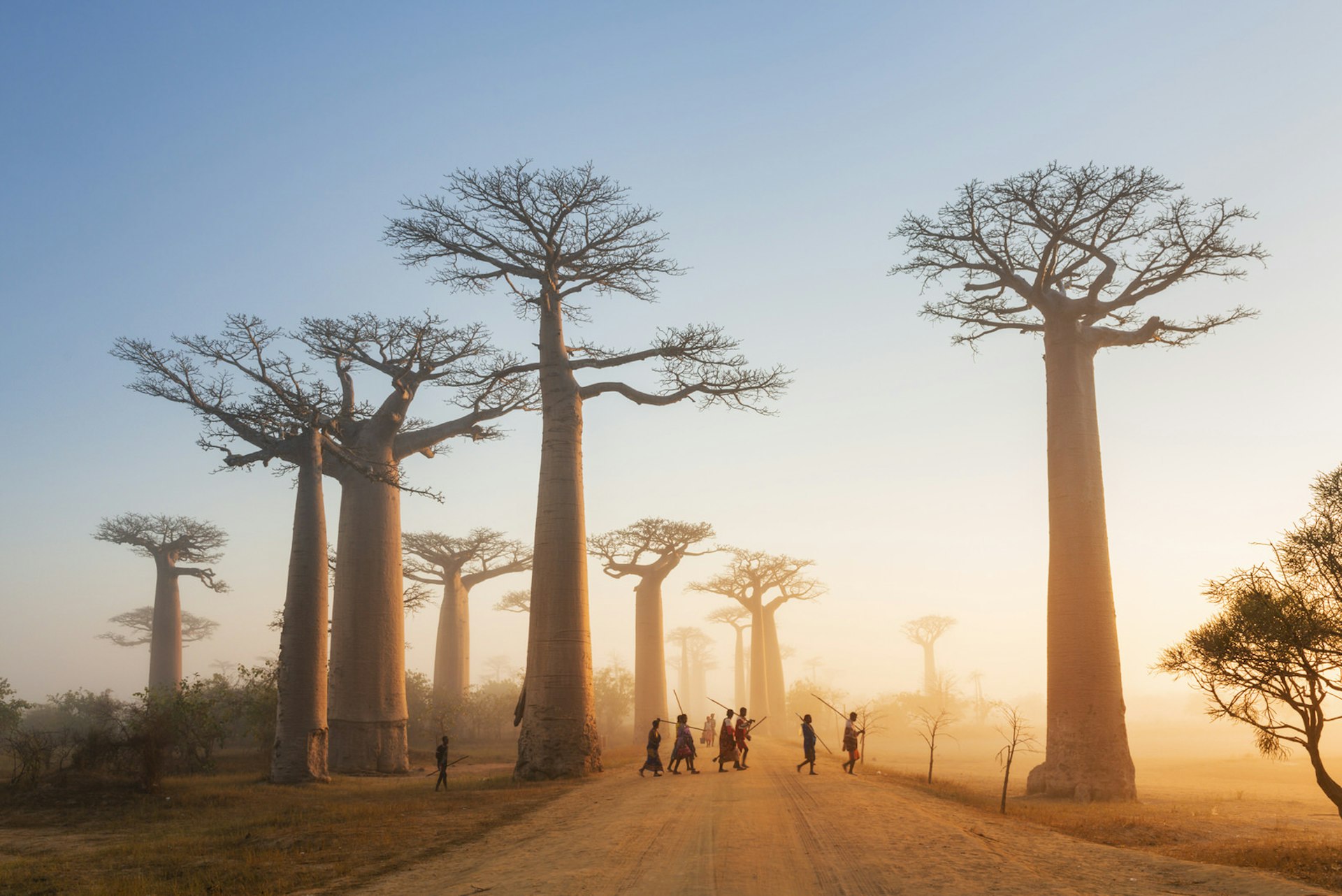
Kirindy and the baobabs
Start your trip in the west with wildlife encounters and a walk among iconic trees
Jean Baptiste strolls cheerfully through the forest, arms swaying, flip-flops flapping. For the past hour, he has led the way through a tangle of paths that each looks identical to the last, pausing to point out brown creatures hidden in the brown undergrowth: a twig-like pencil snake here, a fist-sized land snail there.
It takes some time to locate the lemur he spotted with barely a glance, but after much gesticulating (‘To the left of the fork, down from the second branch, no, not that branch, down further’), there it is: a sportive lemur, its teddy-bear head and goggly brown eyes poking out of a tree hollow. The sighting opens the floodgates to an embarrassment of encounters in the forest of Kirindy.
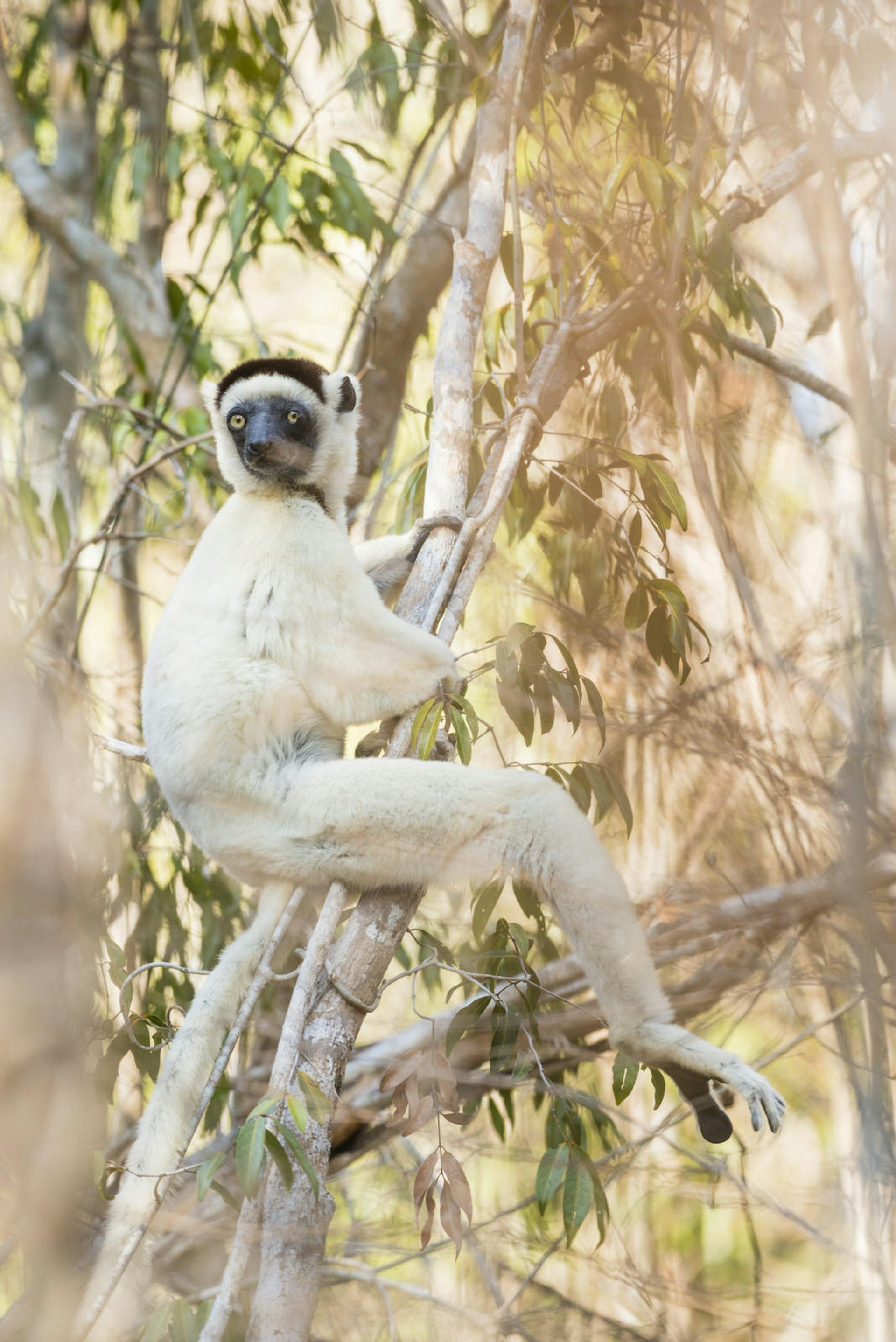
A few steps on, a black-and-white Verreaux’s sifaka appears far above, swinging between the treetops with the elegance of a trapeze artist, the tiny head of her baby peeking out from the fur of her belly. In a clearing nearby, Jean-Baptiste’s guttural ‘whoop-whoop’ is catnip to a family of red-bellied lemurs, and they soon make their way down from the canopy to inspect their human visitors.
The residents of Kirindy have made their home in the remains of the last dry deciduous forest on Madagascar’s west coast. It supports eight species of lemur – and the one creature in the country whose belly starts to rumble when it spots one. The forest is one of the best places to see the lemurs’ only predator: the endangered fossa.
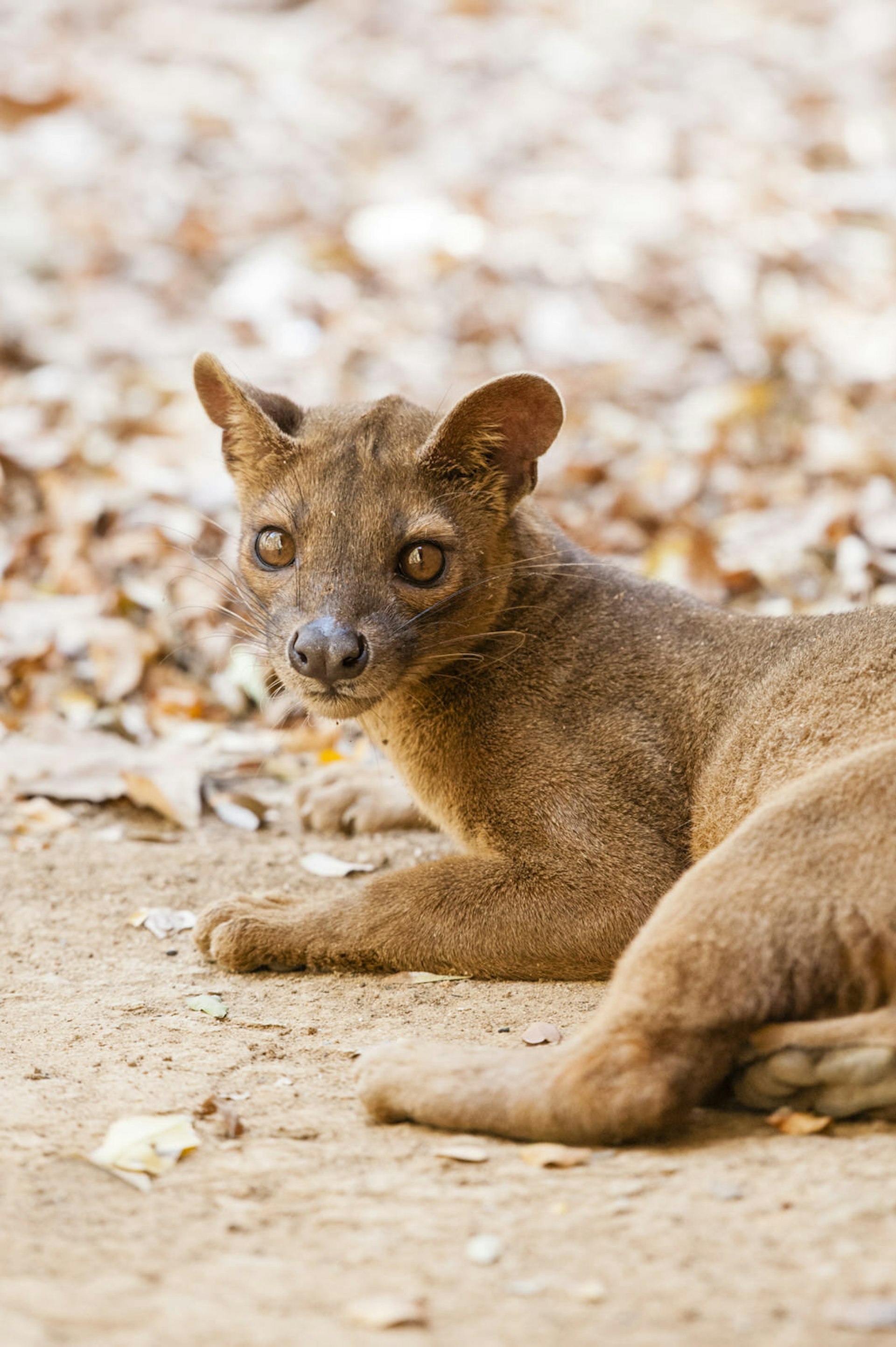
Three of the animals have spent the day in the camp at Kirindy’s ecological research centre. One by one, they slink out from beneath a cabin, stretching and yawning in the sunshine, before hunching down in the dirt. They look like some terrible genetic mix-up between a dog and a weasel, with grey-brown fur, yellow eyes and a tail as long as their bodies. Mamy Ramparany, who manages the centre, would rather they didn’t feel so at home here. ‘One of the major issues for them,’ he says, squatting to check for other fossa beneath the cabin, ‘is the destruction of their habitat through farming and logging. Maybe they come here because they don’t have enough food.’
Mamy watches as the creatures rise and stalk into the forest. ‘That is the challenge of conservation in Madagascar, to work out how people profit from the forest without destroying it,’ he says. ‘But it is an exciting challenge. As long as there are animals left, there is hope.’
The broad-trunked, spindly-topped trees that rise incongruously through the scrubby thicket of Kirindy give some clue to the nature of that challenge. These are baobabs – ‘mothers of the forest’ in Malagasy – and the region was once full of them. Lost to deforestation and agriculture over the centuries, they now commonly stand alone, trunks thick as houses, towering over scorched earth cleared by slash-and-burn.
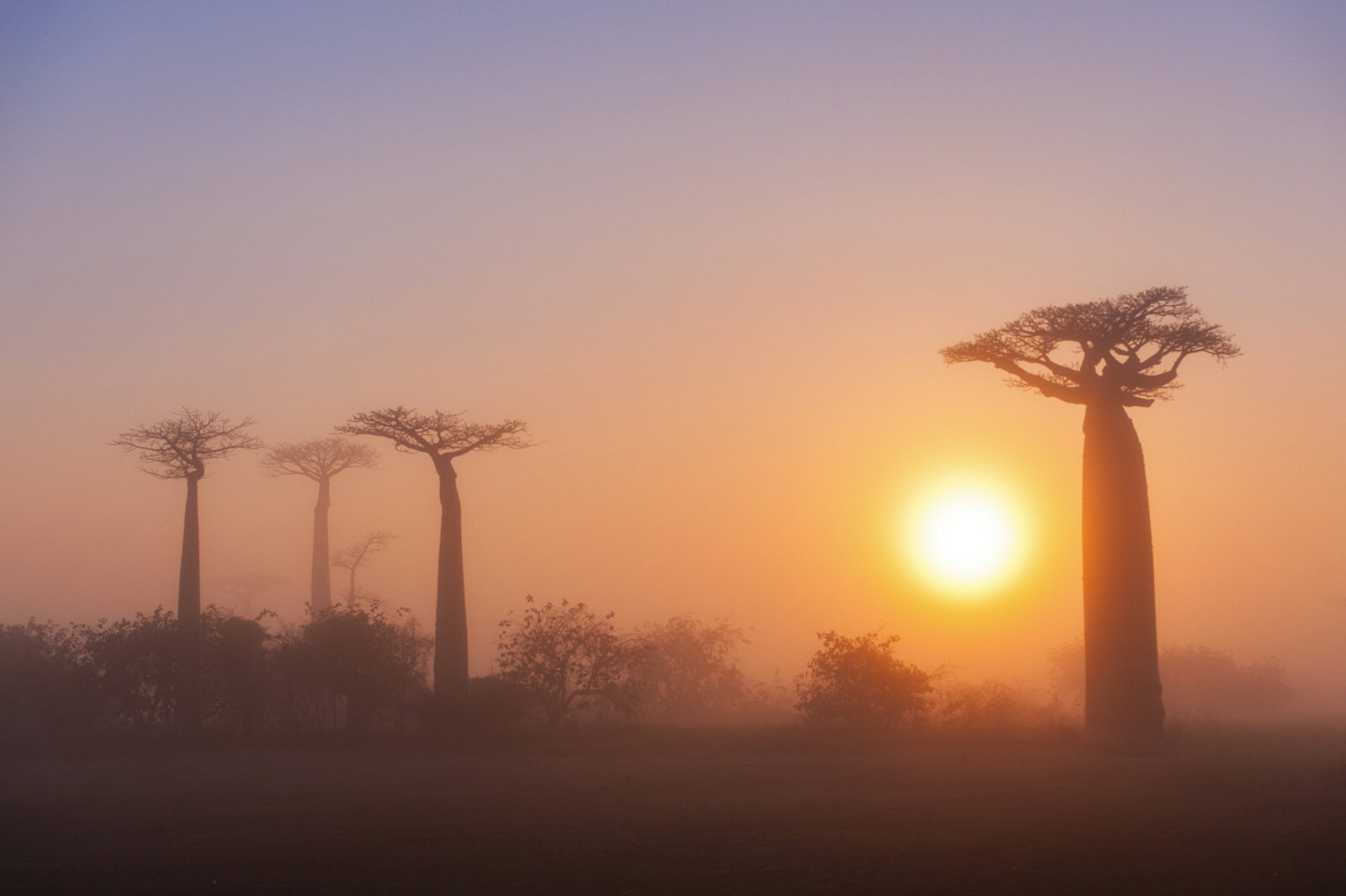
Some 25 miles south of Kirindy, the Avenue des Baobabs is a proud reminder of what has been lost. At dawn, a thick mist has settled over the road, and the 20 or so baobabs lining it – some 600 years old – are reduced to murky silhouettes. Farmers emerge through the fog, carrying scythes and axes, and leading zebu cattle, who stop to scratch their flanks on the gnarly bark of the trees. Fires are lit outside mud houses along the road, blackened pots placed over them, ready for a day's cooking. As the sun rises, the mist seeps away. More traffic appears on the avenue: jeeps on their way to the main town of Morondava, motorbikes with mattresses balanced on the handlebars. By the roadside, revealed for the first time in the morning light, are 10 small enclosures. Inside are frail baobab saplings barely a centimetre thick and half a metre tall – dwarfed by the old trees around them, but a sign of a brighter future nonetheless.
The road to Tsingy
Travel is all part of the adventure in Madagascar, and never more so than on the colourful journey along the bumpy 8a road from Kirindy to the north
‘Apart from its unique biodiversity, Madagascar is also known for its bad roads.’ So says local tour guide Dennis Rakotoson, climbing into the jeep. He is not smiling.
With less than 20 per cent of its road network asphalted, getting from A to B in Madagascar is rarely straightforward. Google Maps will tell you that it’s a three-hour journey from Kirindy up the 8a road to Bekopaka, some 100 miles north. Google Maps is wrong – very, very wrong – but neither does it tell you that a day travelling the route is at least as exciting as a day in the forest with a family of lemurs.
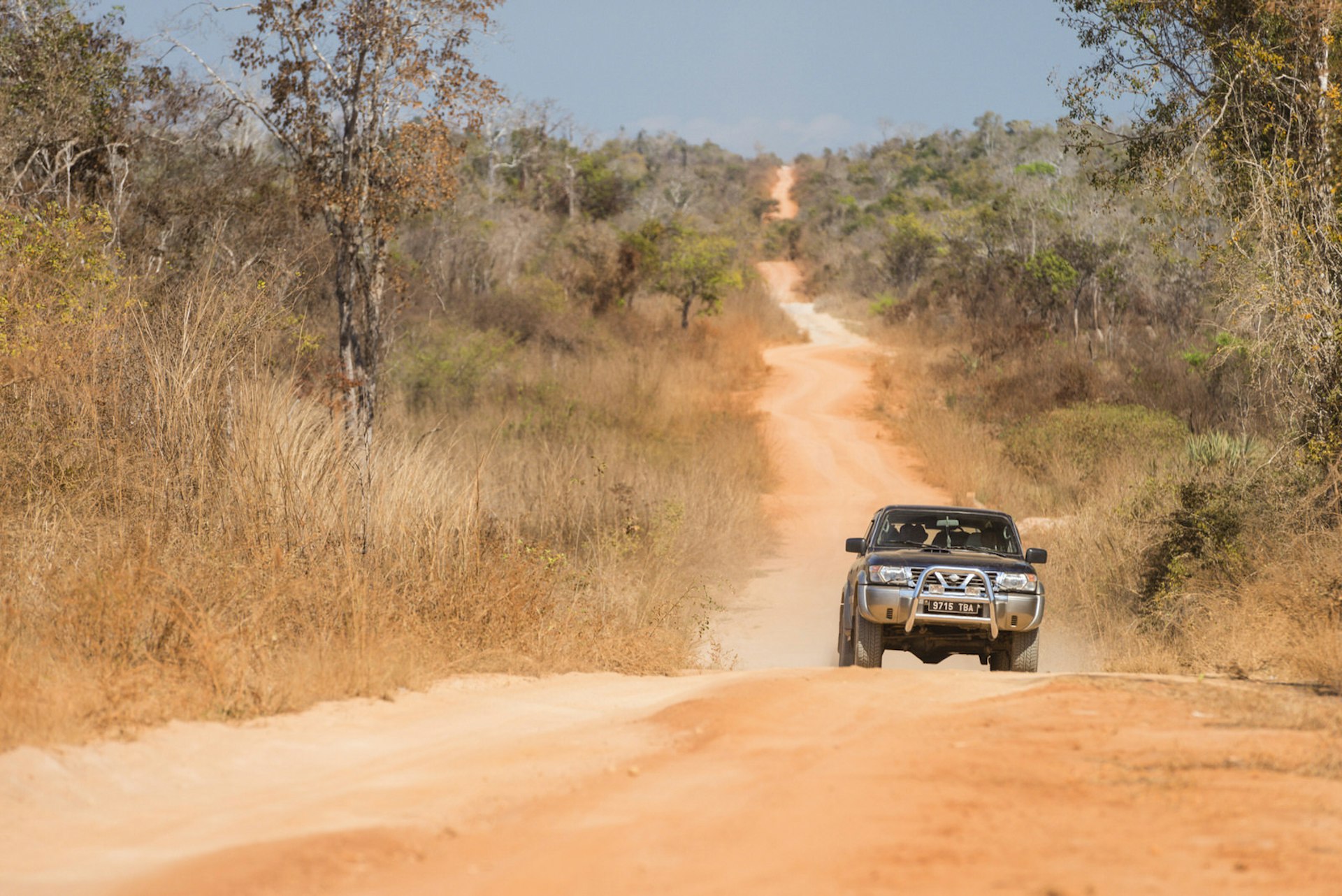
For the most part, the 8a is more rutted mud track than road. It soon leaves behind the paddy fields surrounding the Avenue des Baobabs, their neat, green lines ploughed by zebu, trailed by squabbling ducks. The landscape becomes drier, the bushes lining the verge covered in sand thrown up by passing vehicles, as though someone has dumped a bucket of orange powder over them. Large patches of blackened earth still smoulder from recent forest clearings.
In the early morning, kids idle along the 8a on their way to school, kicking footballs in the dust. Women in bright skirts march between villages, bundles of maize or firewood balanced on their heads, and their faces covered in a paste made from tamarind bark, to keep off the sun. Families do their laundry in shallow streams, their clothes drying on the banks, or bump along on wooden carts, behind the camel-like humps and long horns of slow-plodding zebu.
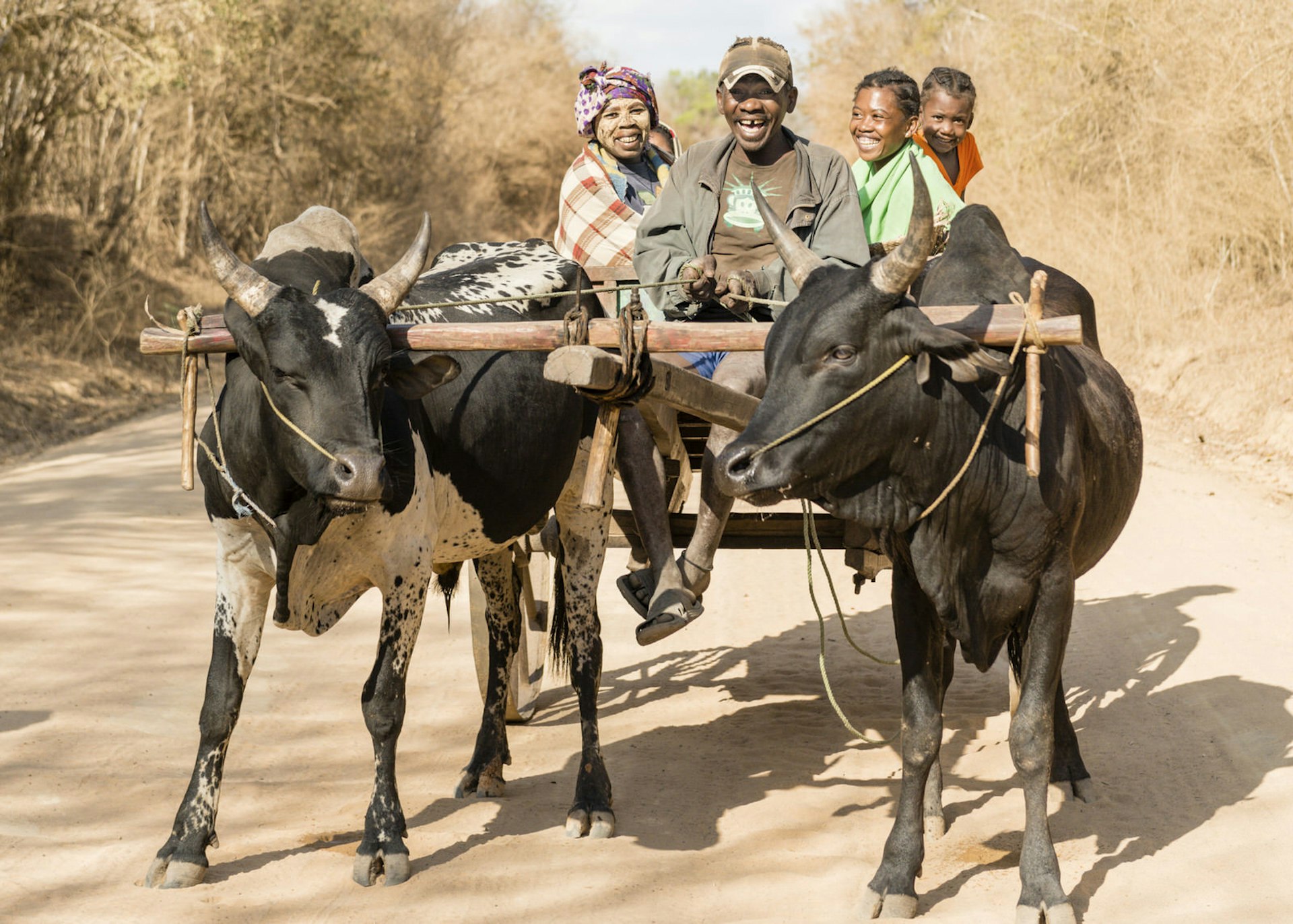
‘The Malagasy are very attached to their zebu,’ says Dennis, leaning on the dashboard as the jeep negotiates one of many potholes the size of paddling pools. ‘They are used for transportation and in the fields, of course, but also in rituals, burial ceremonies and medicine. If you rub the oil from their humps into your skin, you will get very strong.’
At the midway point of the journey, the road stops, cut off by the great brown slug of the Tsiribihina River. Jeeps are manoeuvred gingerly down planks onto Heath Robinson-style ferries, seemingly made from random bits of metal roped together. Everyone on board, they chug past people in hand-carved wooden canoes on the hour-long journey to Belo sur Tsiribihina on the opposite bank. By the early afternoon, the town's market is in full swing, and traders sit beside piles of sweet potatoes, sugarcane, dried red chillies, fried shrimps and fatty zebu humps, waving large flies away from their goods with their hands.
‘The road gets a little worse from here,’ says Dennis, as the 8a heads out of town. It is partially collapsed in places, weaving and dipping a new course around fallen trees and waterlogged craters.
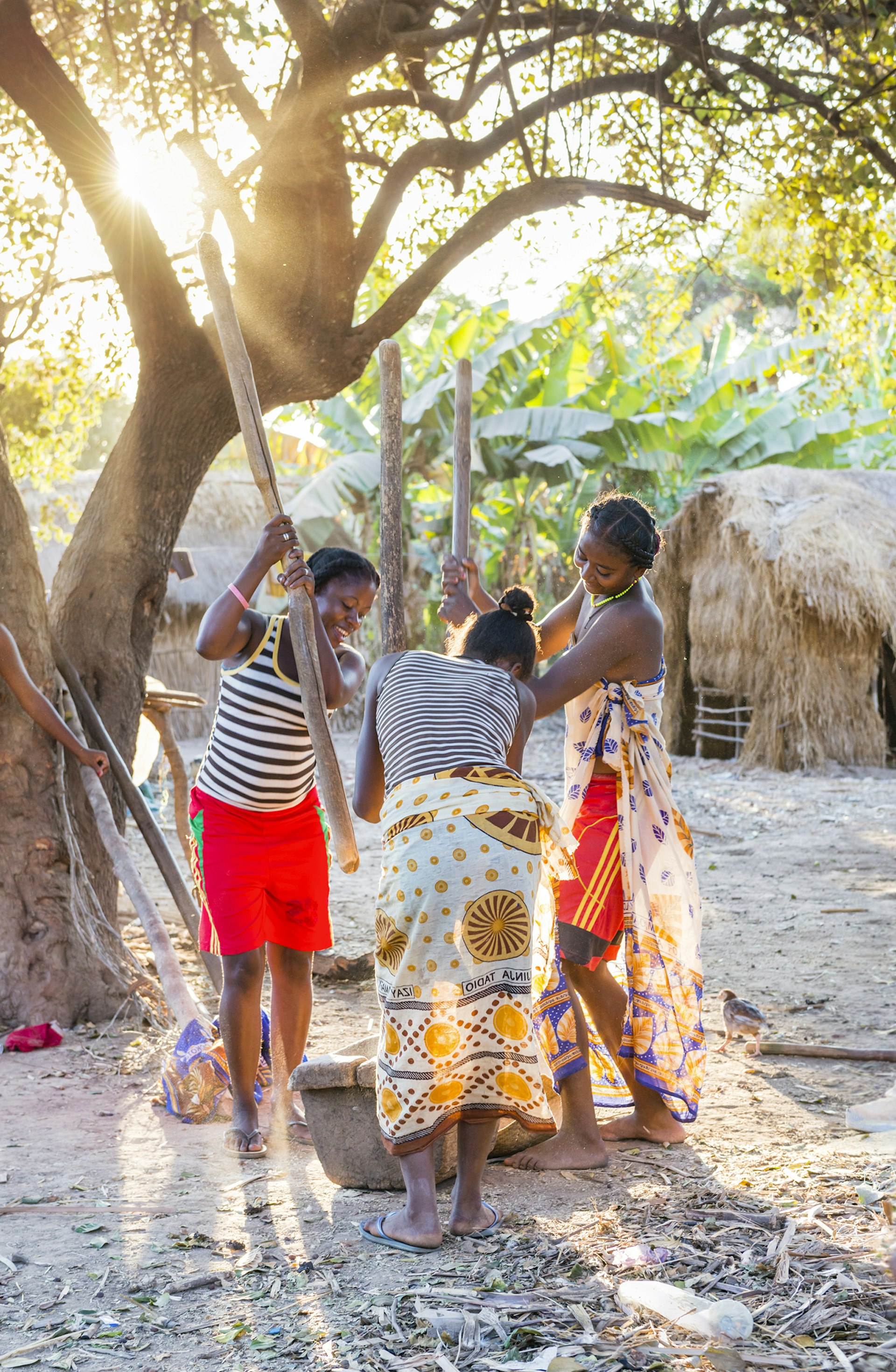
As the intense heat of the day starts to fade, activity is stepped up in the roadside villages. Men cut earth into bricks, or scythe reeds for building, while their wives rhythmically pound rice with poles in giant mortars, turkeys waiting expectantly beside them. Children race out to every passing vehicle and peer inside, practising their foreign-language skills with polite requests for pens or bonbons.
By the time the jeep pulls in to the last stop at Bekopaka, via a final river crossing and many stops to let a brightly coloured giant coua bird, herd of goats or nervous chameleon cross the road, the sun has started to set through the mangrove trees. The journey along the 8a has taken over 11 hours, but, perhaps, it wouldn’t be so bad to turn around and do it all again.
Tsingy de Bemaraha
Strap yourself in for a couple of days’ climbing and clambering in Madagascar’s most unusual national park
In Bekopaka, three small boys are attempting to knock mangoes out of a tree with a stick. Around them, jeeps park up beside zebu carts, their passengers leaping out to stretch their legs before heading off to a small office in the village. They are here to book tickets to Tsingy de Bemaraha National Park, the reason most people travel up the 8a road from Morondava.
The park is split into two sections, Petit and Grand, and the smaller bit lies just beyond the office. Guide Charles Andriasy leads the way in, squeezing through a narrow passage, before issuing a warning: ‘This area is very sacred. There are many tombs in here; you must be respectful to the dead.’ Indeed, the three mango-bothering boys would be discouraged from entering, from the local belief that children might be more likely to encounter a ghost in here.
Some 150 million years ago, the entire region was under the sea; when the water receded, it left behind an otherworldly landscape of limestone spikes and caves, the fossils of long-lost marine animals still visible on their surface. The passing centuries have added new decoration to the rocks: the vines of strangler figs wrap around them and reach into crevices; dark pools of water hide eels and crabs; and the giant cobwebs of golden silk orb-weaver spiders stretch between pinnacles.
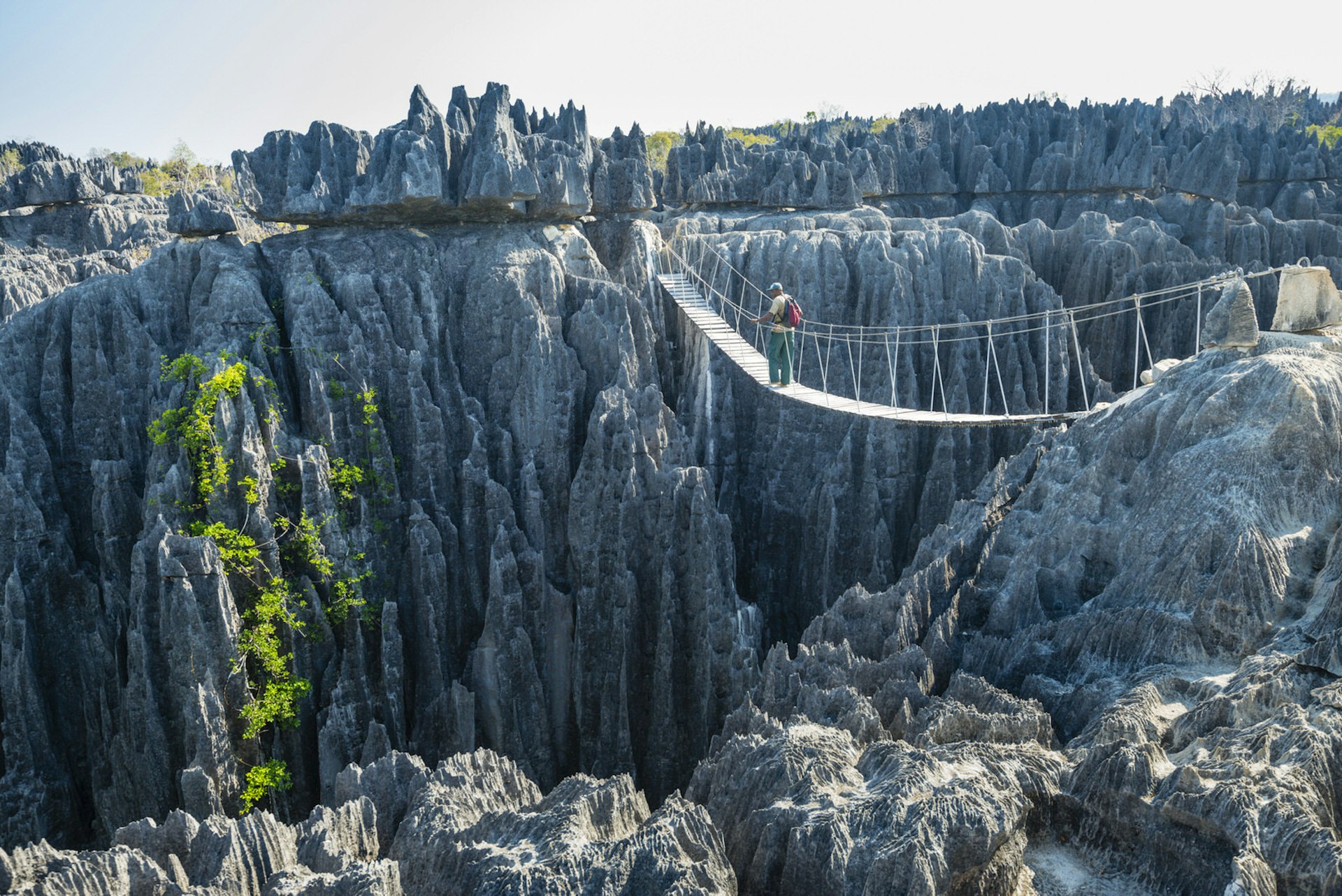
A series of ropes, ladders and bridges take the visitor through, following a path that twists up, round and over the rocks – from deep hollows that have never seen the sun, to viewing platforms balanced precariously on limestone peaks. Madagascan hoopoes and fish eagles swoop over this spiny grey forest, and Von der Decken’s sifakas, black faces peeking out of white furry coats, bound in, rather more at home among the sharp rocks than their human cousins.
For all the scrambling required to get around Petit Tsingy, it is merely practice for the main event, some 10 miles away in the second part of the park. At Grand Tsingy, Charles adjusts his climbing harness and checks his carabiners before starting off down the trail. It starts, misleadingly, with an easy climb up through the forest, with the calls of far-off sifakas echoing through the trees, and black parrots sailing overhead.
The path comes to an abrupt halt at a cliff, whose summit cannot be seen from the ground. A series of nails is hammered into the rock face all the way up, thick wire strung between them. Charles clips his carabiners to the first wire and pulls himself on to a narrow ledge. It’s a long, slow 60 metres up, attaching and reattaching the carabiners, finding firm footing on slim stone steps hewn into the limestone, and edging across ladders that span fissures in the rock. ‘If you go slowly, slowly, you need not be afraid,’ calls Charles from ahead. ‘Slowly, slowly, and you can see the way in front of you.’ The scale of Grand Tsingy is revealed at the top, with views out over the pinnacles stretching far into the forest. It takes several hours to navigate through the rest of the park, slithering around the rocks, inching over comically creaking rope bridges, descending into vast caves and crawling through tunnels.
Emerging back into the forest with the sun at its highest and fiercest, all is quiet. In the fork of a tree, a lemur fidgets in its sleep, perhaps disturbed by a dream. A female sifaka, arms resting on her knees, long tail hanging through the branches, stares down. She watches for a while, then her orange eyes slowly close. ‘The forest has the right idea,’ says Charles, wiping his brow from the day’s exertion. ‘Siesta time.’
Andasibe-Mantadia National Park
Get up close and personal with a host of lemurs in the mist-clad rainforests of eastern Madagascar
It’s cold up on the central plateau of Madagascar. Patches of cloud float across hills swathed in eucalyptus, American sweetgum, azalea and magnolia. Hanging from their branches are bloated water droplets, ready to fall with a satisfying poink onto the damp floor. Tree frogs croak and chirp and peep their presence through the drizzle, keeping leaf-tailed geckos and long-limbed spiders company beneath the canopy.
Luc Rajeriosa pushes his way through the undergrowth, stepping through the vines of assorted plants and brushing aside the canoe-sized branches of giant tree ferns. He pauses, pushes his straw hat to the back of his head, and stares into the treetops.
‘They are very far away,’ he whispers, frowning. ‘But still we must be very quiet.’ He plunges into a thicket of bamboo. With every step, his feet sink into the sticky mush of rotting foliage. At the top of a steep hill, he stops again. Within minutes, a high-pitched wail rises up, falls and rises again. More wails join it, as though an orchestra of musicians with broken trumpets has set up within the forest.
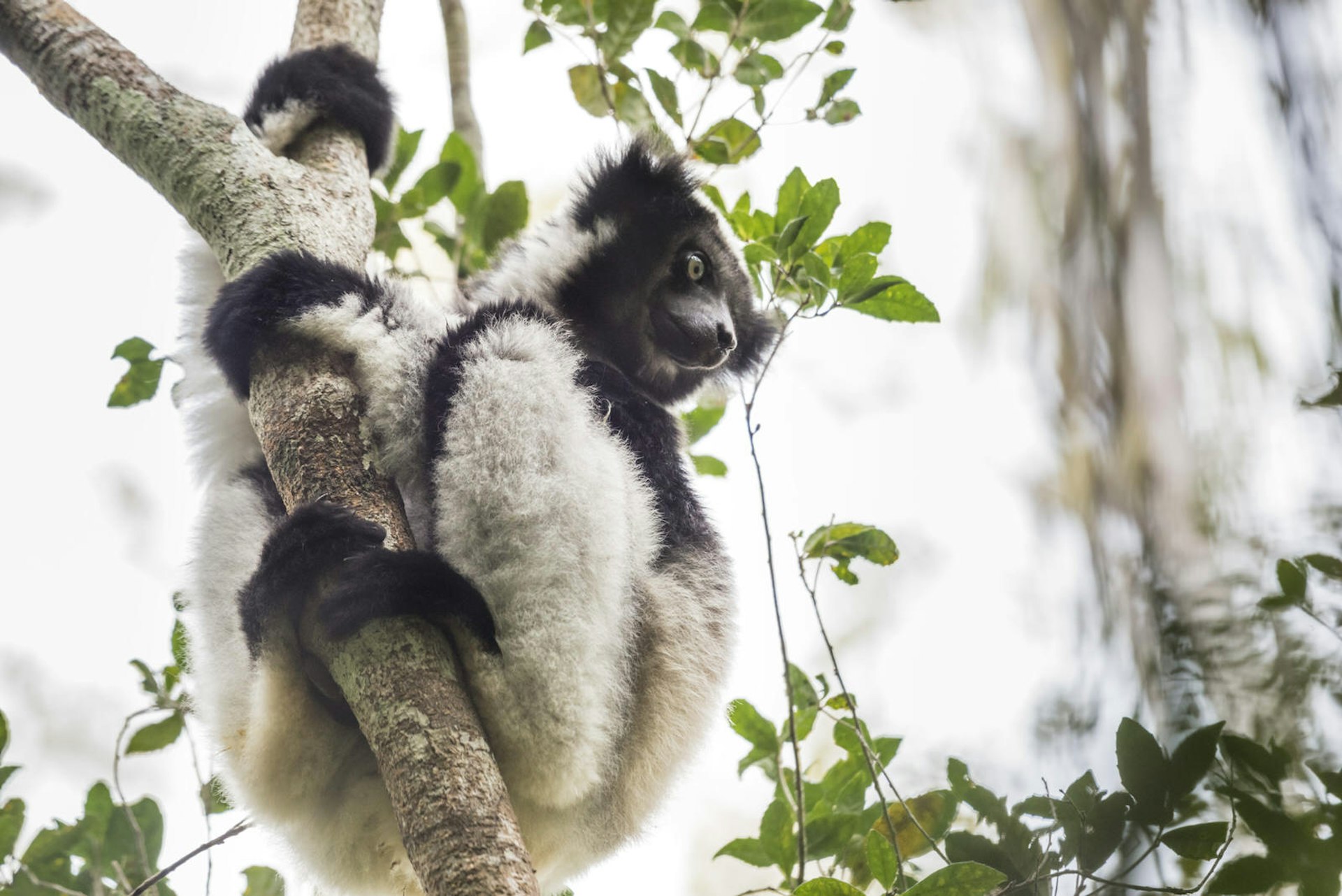
‘Now you hear the song of the indri,’ says Luc, and looks once more into the treetops. Three silhouetted balls are coiled in the upper branches. Limbs appear from furry bodies, and the indri take shape: black feet and hands, white legs and arms, round ears framing a black face, and a long black tail. The three creatures – a male, female and their baby – start grooming in the fine rain, picking at each others’ coats with bony fingers. The male launches itself into a neighbouring tree, and his family soon join him. They swing off through the branches, and disappear.
‘The local people here will not harm the indri,’ says Luc, moving off in slow pursuit. ‘It is taboo. We call them babakoto – father of man. The belief is that one day, long ago, the indri saved a small boy lost in the forest. For that, we will always care for them.’
The indri is the largest primate in Madagascar (the giant lemur, the size of a silverback gorilla, has been extinct for some 600 years). Up to 70 family groups live in Andasibe-Mantadia National Park, and the rainforest regularly sings with their territorial calls, the sound travelling for more than a mile. It is somewhat trickier to see them, but Andasibe has other distractions should a sighting prove elusive.
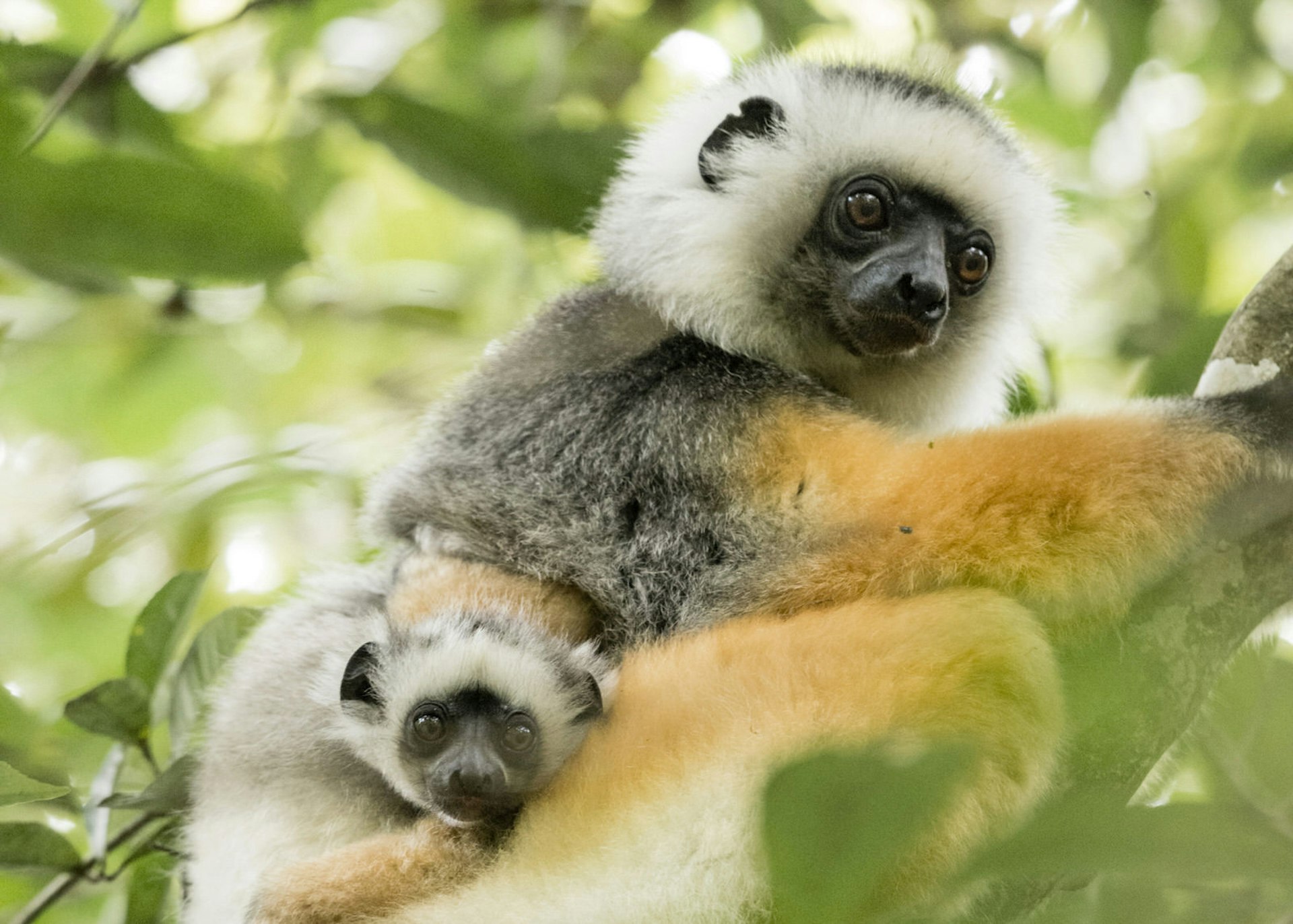
There are fuzzy-faced, ginger-limbed diademed sifakas, which can only be found in this part of the country; the alien forms of giraffe weevils, heads carried on spindly necks four times the length of their red bodies; fluffy bamboo lemurs stripping leaves off their namesake plants; and Malagasy tree boas wrapped around the trunks of palisander trees, blue tongues flicking beneath black eyes.
Luc is not a man to be swayed from his almost reverential search for the babakoto though, despite several hours scrambling through the forest. ‘I am like the indri,’ he says, emerging briefly into sunlight at the banks of a small lake. 'I need to be in the forest every day.’ He turns back into the undergrowth, and is soon lost from sight.
Pangalanes Canal
Time to wind down with a lazy meander along leafy canals and beach-lined lakes, looking out for the elusive aye-aye
The half-moon casts a silver light through the forest. Fireflies blink amongst the trees, their branches casting black shadows that warp and wave in the wind. There is no sound but for the faint shushing of the Indian Ocean hitting the shore nearly a mile away. There is a sudden rustle, and a dark shape appears on a nearby tree. The torch beam swings up and reveals a tree rat. It looks back in surprise, then scuttles off.

Tree rats are not why people come here. There is a long wait in the darkness for the main attraction. When it comes, it comes silently, a monster creeping out from the shadows in a nightmare. One second it is not there, the next second it is: a strange mess of red, crossed eyes; patchy fur; enormous, scruffy black ears; crooked teeth; and rasping breath. Its long fingers scrabble into a coconut, scraping out flesh and noisily poking it into its mouth.
The unfortunate-looking aye-aye was once so rare it was thought to be extinct. The species is still on the endangered list, and is protected here, on a small island reserve in eastern Madagascar. ‘People used to kill the aye-aye,’ says skipper Faro Razafimanantena, pushing off from the island in his long boat. ‘They believed if you saw one in the wild, it was a sign of danger. People thought they would not live long afterwards.’
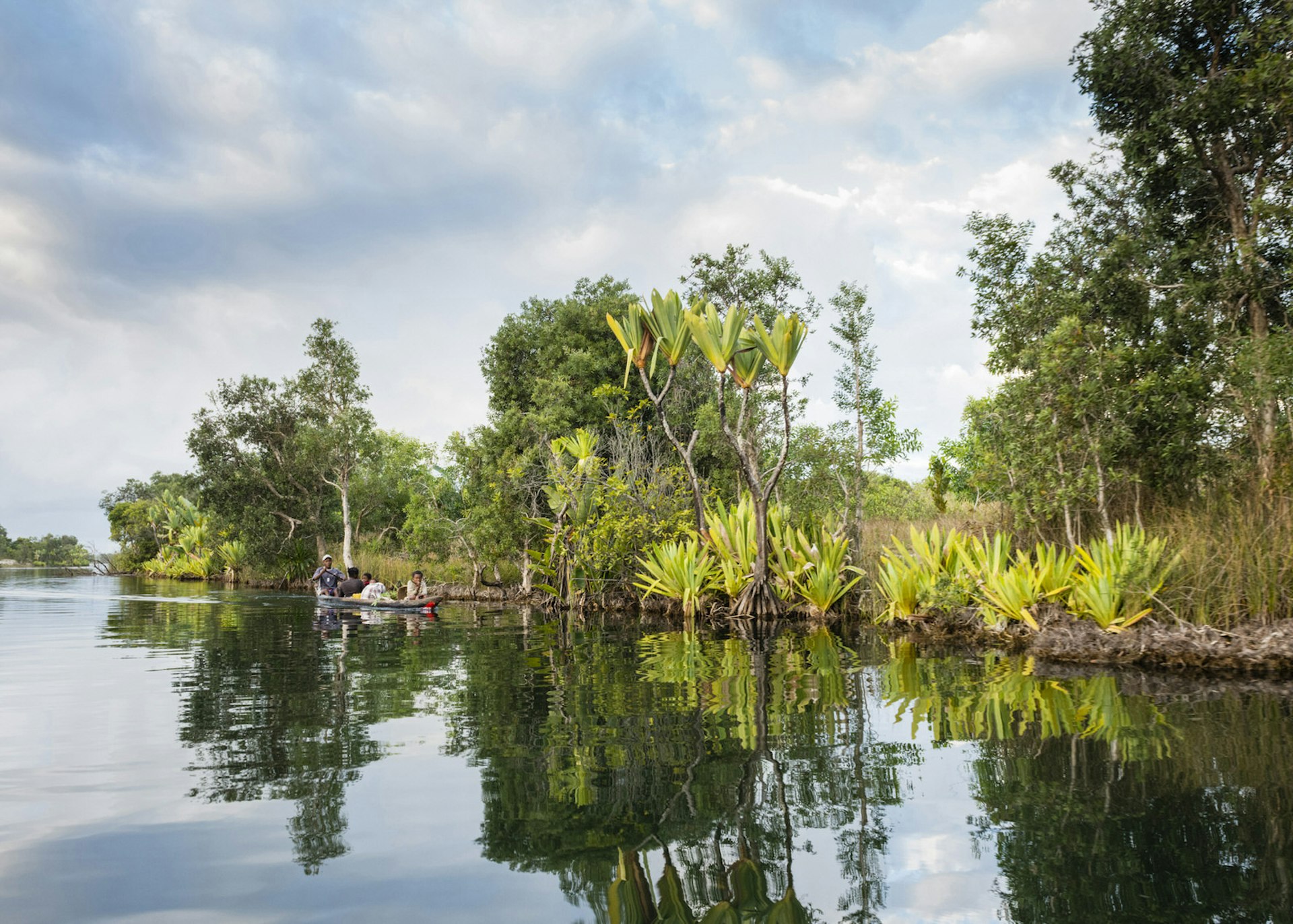
The wild appearance of the aye-aye does not in any way match the decidedly un-creepy surroundings of its home in the Pangalanes system, a series of natural and man-made waterways that stretches for 400 miles along the coast. Built in the 19th century, the canals still hum with activity. At dawn, wide-bottomed cargo boats travel up to the main town of Toamasina laden with charcoal, wood and the leaves of the fan-shaped ravenala tree. Fishermen paddle out to their traps in wooden pirogues, pulling up nets to check for tilapia fish. A flash of orange and blue reveals competition for one catch in the form of a Madagascar kingfisher.
‘To get anywhere, to do anything, you go by boat,’ says Faro, his hand on the outdoor motor as his craft skims along the smooth waters of a narrow channel, the vegetation on its banks perfectly mirrored below. ‘All business here is done on water.’ He shouts hello to women sitting in the shallows, scrubbing tin pans while their kids splash about nearby. Smoke drifts through the trees from the villages behind them, where freshwater shrimps are roasted over the fire.
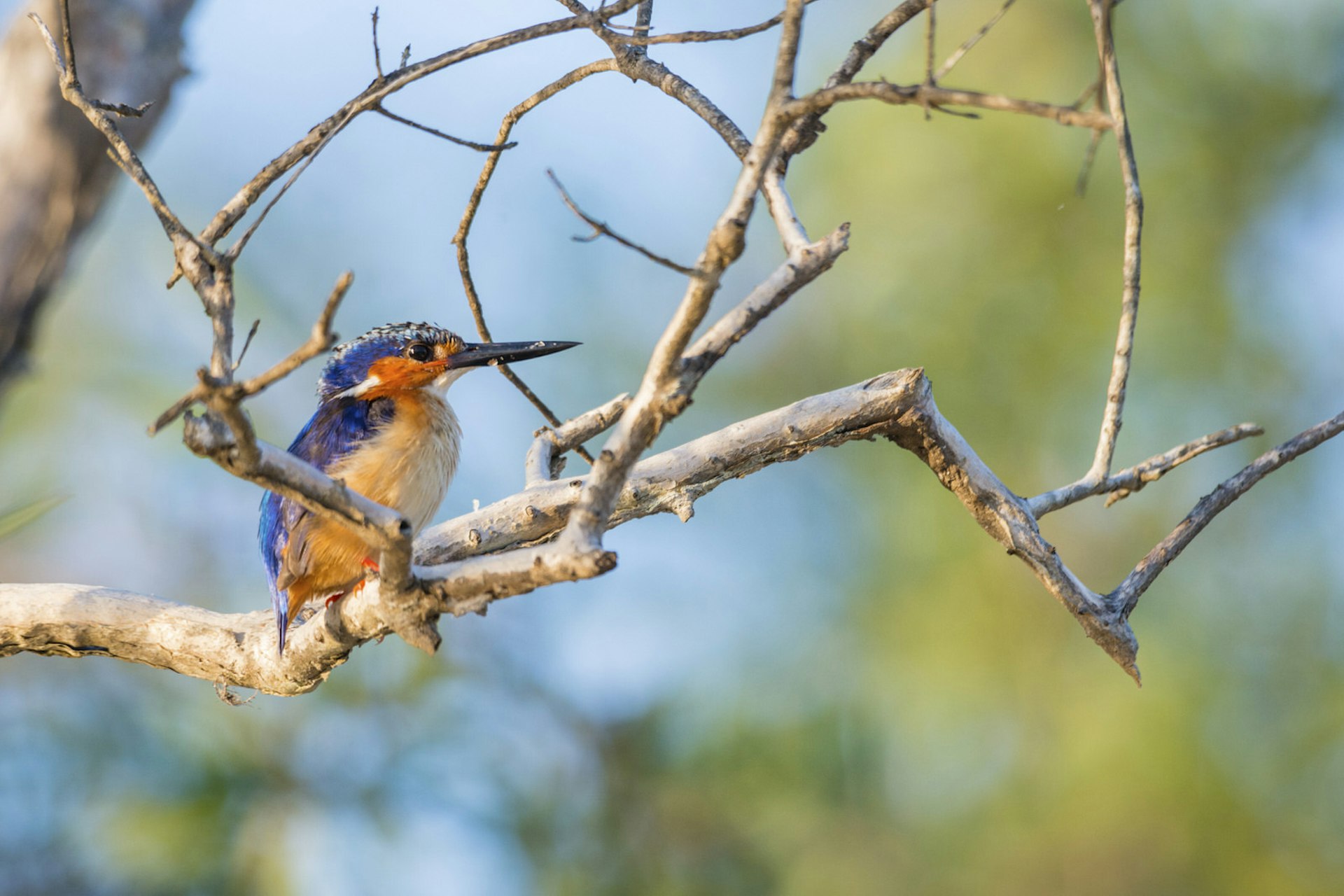
‘I like exploring,’ continues Faro, as he steers the boat down another passage, its banks bursting with prehistoric-looking screwpine trees. ‘Nothing is better than the freedom of being outdoors.’ The canals give way to wide rivers, the water turning choppy, and eventually to broad lakes, their banks lined with sandy beaches. Lemurs sometimes come to the edge to drink, but there’s no sign of them today; only a heron that launches off from the stump of a eucalyptus and up over the trees. The skies are preparing for a showstopper of a sunset, throwing pinks, mauves and golds onto the waters of the lake.
If, as local superstition supposes, a glimpse of an aye-aye means death is soon to come, it feels very far off tonight.
This article appeared in the April 2017 edition of Lonely Planet Traveller magazine . Amanda Canning travelled to Madagascar with support from Natural World Safaris ( naturalworldsafaris.com ). Lonely Planet contributors do not accept freebies in exchange for positive coverage.
http://shop.lonelyplanet.com/madagascar/madagascar-travel-guide-8/
Explore related stories
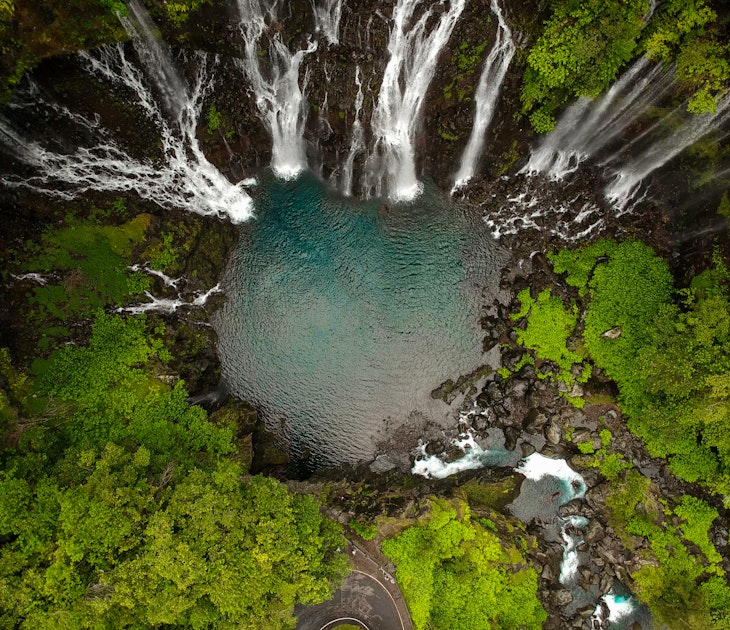
Feb 22, 2021 • 5 min read
First time traveling to La Réunion? Here are some of the best things to do. You are in for a colorful adventure!

Jan 20, 2021 • 6 min read

Oct 30, 2020 • 1 min read
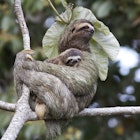
Apr 9, 2020 • 2 min read

Sep 27, 2019 • 6 min read
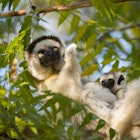
Jun 13, 2019 • 5 min read
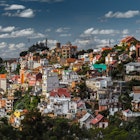
Aug 21, 2018 • 6 min read
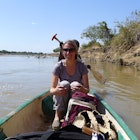
May 2, 2018 • 7 min read

Jun 20, 2016 • 1 min read
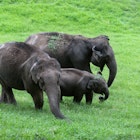
Feb 22, 2016 • 5 min read
- 3 Other destinations
- 4.2 Ecology
- 4.3 Holidays
- 4.4 Climate
- 4.6 Tourist information
- 6.2 Vaccination
- 6.3 By plane
- 6.4 By boat
- 7.1 By plane
- 7.2 By train
- 7.4 By taxi-brousse
- 7.5 By taxi-be
- 7.6 By boat
- 7.7 By bicycle
- 10.2 Shopping
- 10.3 Tipping
- 11.1 Supermarkets
- 15 Stay safe
- 16 Stay healthy
Madagascar is a country in the Indian Ocean off the eastern coast of Africa . It is known for its particularly unique wildlife and flora. Madagascar split from India approximately 88 million years ago, and as a result of its long isolation it is home to a massive number of unique plant and animal species, with over 90% of its wildlife and 80% of its plants found nowhere else on the planet.
Regions [ edit ]

Cities [ edit ]

Other destinations [ edit ]
Understand [ edit ], people [ edit ].
Despite its proximity to Africa, language and DNA studies show that the people of Madagascar are predominantly ethnically Austronesian ; their ancestors between 350 BCE and 550 CE. Later, around 1000 CE, migrants crossed the Mozambique Channel and arrived from East Africa, and were followed by Arabs, Indians, and Chinese immigrants. The Malagasy way of thinking, as well as their appearance and fashion style, is a mixture of cultures.
Madagascar is part of the African Union, but was suspended from the organization from 2009 to 2013. There was political turmoil in Madagascar in 2002 and again between 2009 and 2010, which led to a decrease in tourism, but the situation was resolved to the satisfaction of the international community with the adoption of a new constitution in 2010 and presidential elections in 2013 that were judged to be free and fair. Any continuing political issues seem likely to be debated peacefully with words and not coups or other drastic actions, for the foreseeable future.
Madagascar is home to 18 ethnic groups, but the largest and predominant group are the Merina of the central highlands.
Ecology [ edit ]

Due to its uniqueness some ecologists refer to it as the "eighth continent".
Madagascar is home to nearly 15,000 plant species, with highlights including the massive and ancient baobab trees, the unique spiny forests of the south, over 800 species of orchids, and the dwindling rain forests. Human activity, particularly the fires used for agricultural purposes, have damaged the environment, and since the arrival of humans approximately 90% of the island's original forest has disappeared.
Animal life on the island is equally impressive, in particular the more than 100 species of lemurs, nearly all of which are rare or threatened. The island is home to over 300 species of birds, approximately 260 species of reptiles, and a massive number of amphibians and insects.
The eastern, or windward side of the island is home to tropical rainforests, while the western and southern sides, which lie in the rain shadow of the central highlands, are home to tropical dry forests, thorn forests, and deserts and xeric shrublands. Madagascar's dry deciduous rain forest has been preserved generally better than the eastern rainforests or the high central plateau, presumably due to historically low population densities.
Holidays [ edit ]
- January 1: New Year's Day
- March 29: Martyrs Day
- Easter (variable)
- June 26: Independence Day (celebrates independence from France in 1960)
- November 1: All Saints Day
- December 25: Christmas
Climate [ edit ]

The climate is tropical along the coast, temperate inland, and arid in the south. The weather is dominated by the southeastern trade winds that originate in the Indian Ocean anticyclone, a centre of high atmospheric pressure that seasonally changes its position over the ocean. Madagascar has two seasons: a hot, rainy season from November to April; and a cooler, dry season from May to October. There is great variation in climate owing to elevation and position relative to dominant winds. The east coast has a sub-equatorial climate and, being most directly exposed to the trade winds, has the heaviest rainfall, averaging as much as 3,500 mm (137.8 in) annually. This region is notorious not only for a hot, humid climate in which tropical fevers are endemic but also for the destructive cyclones that occur during the rainy season, coming in principally from the direction of the Mascarene Islands. Because rain clouds discharge much of their moisture east of the highest elevations on the island, the central highlands are appreciably drier and, owing to the altitude, also cooler. Thunderstorms are common during the rainy season in the central highlands, and lightning is a serious hazard.
Antananarivo receives practically all of its average annual 1,400mm (55.1 in) of rainfall between November and April. The dry season is pleasant and sunny, although somewhat chilly, especially in the mornings. Although frosts are rare in Antananarivo, they are common at higher elevations.
Read [ edit ]
- The Eighth Continent: Life, Death, and Discovery in the Lost World of Madagascar by Peter Tyson. Extensive descriptions of Madagascar's wildlife, as well as lots of details about Malagasy culture.
- The Gardens of Mars: Nadagascar, an Island Story by John Gimlette. More of a focus on the spectacularly complicated and bloody history of the island's people.
Tourist information [ edit ]
- Madagascar Tourism website
Talk [ edit ]
The entire island speaks one language: Malagasy , an Austronesian language. "Malagasy" refers to both the language and the people of the island. Because the island is so large, there are many different dialects. The Merina dialect is the "Official Malagasy" of the island and is spoken around highlands of Antananarivo . Most Malagasy, however, speak Merina across the island. Attempts by foreigners to learn and speak Malagasy are liked and encouraged by the Malagasy people. Today, Malagasy is the daily language spoken by 98% of the population in Madagascar, and since 1972, Malagasy has been used as the language of instruction in some schools. As an Austronesian language, Malagasy is more closely related to languages spoken in maritime Southeast Asia and the Pacific islands than to other African languages.
French is the second official language of Madagascar, and most individuals encountered in parks and other touristy areas will speak fluent French.
English is increasingly common and many hotels and parks will have at least a few English-speaking staff. Italian, German, Spanish and Japanese are understood to a lesser extent in areas where tourists are likely to visit.
Some basic Malagasy vocabulary that will help relate to the Malagasy people (there are many different regional versions of the Malagasy language across the country):
Get in [ edit ]
Visa [ edit ].
Visitors from most countries can obtain a Madagascar tourist visa upon arrival in Madagascar (information accurate as of March 2020).
- For stays of up to 30 days US$37 or €35.
- For longer stays of up to 60 days US$45 or €40.
- The Antananarivo airport visa on arrival counter was no longer issuing 90-day stays as of November 2018.
You must pay for the visa with cash: in US dollars or euros. They also ask for an address of your first night stay.
You can get a 30 day visa extension 80.000Ar at the Immigration Office at the ministry of the Interior five minutes from Carlton Hotel in Antananarivo or at the commissariat of police offices around Madagascar. The maximum stay on a tourist visa is 90 days. After 90 days, you can go to Reunion or Mauritius then come back.
Vaccination [ edit ]
Prior to your trip, you should ensure that your routine vaccinations are up-to-date; these include polio, hepatitis A, hepatitis B, MMR and typhoid (check with your doctor). If you are travelling through a country where yellow fever is present then you will be required to show proof of vaccination for yellow fever before you will be allowed entry into Madagascar.
By plane [ edit ]
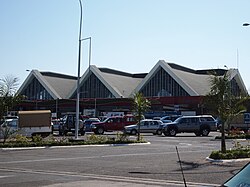
International flights to Madagascar generally either go to Antananarivo ( TNR IATA ) or Nosy Be ( NOS IATA ). Air Madagascar [dead link] ("AirMad") is the national carrier and offers flights from Paris Charles de Gaulle , Marseille and Guangzhou , Other airlines serving Madagascar:
- AirLink South Africa provides daily flights from Johannesburg .
- Air France offer flights from Europe, North America, South America via Paris Charles de Gaulle.
- Air Austral offer flights to Antananarivo , Nosy Be , Toamasina from Paris , Marseille , Bangkok , Chennai , Johannesburg , Mauritius , Seychelles . Flights transfer on Reunion Island.
- Air Mauritius from Europe, Asia and Australia via Mauritius .
- Kenya Airways operates regular service from Europe, North America, Asia and Africa via Nairobi .
- Turkish Airlines from Europe, North America, South America and Asia via Istanbul has some low fares but have two stops via Mauritius and Istanbul
- Ethiopian Airlines from Africa, Europe, North America, South America and Asia via Addis Ababa .
- Comores Aviation fly from Moroni and Anjouan
- EWA Air fly from Mahajanga , Antsiranana , Nosy Be to Mayotte .
Expect to pay around 40 000 Ar to get to Tana by taxi, but drivers might easily ask for 60 000 Ar. Otherwise you can get to the Ivato town nearby and take a taxi-be (a local shared taxi bigger than a van) for around 600 Ar. Because you must also buy a seat for your luggage, it will cost 1200 Ar.
By boat [ edit ]
The only regular link used to be between Toamasina on the east coast and Mauritius via Reunion . This service has been suspended since December 2014.
Get around [ edit ]
Tsaradia Airlines (part of Air Madagascar) serve many destinations throughout the country, and provide a much faster option than driving given the poor state of many roads. Tsaradia airlines is notorious for changing flight schedules and cancelling flights. While the airline will provide you with a hotel and book you on the next available flight in the case of a cancellation, don't book tight connections and always confirm your flight time the night before.
- The good news is airfares have got cheaper. You can now fly from Antananarivo to Nosy-be for 420,000 Ar with a 20-kg bag, or 360,000 Ar with out a bag.
- Tsaradia Airlines tickets can be booked on its website.
Passengers who arrive in Madagascar on a long-haul flight with Air Madagascar no longer get a 25% discount on Tsaradia Airlines.
By train [ edit ]
As of 2023 Madarail operates only one service, a 9-hour trip between Moramanga (115 km east of Antananarivo) and Ambila Lemaitso on the east coast. The railway dates from the colonial period, so breakdowns are frequent due to poor maintenance, and the line may be closed for several weeks.
By car [ edit ]

Madagascar's roads are almost all of very low grade (with the exception of 2 routes leading out of Tana). Many roads are studded with potholes and are quagmires in the rainy season. Travel by road will almost always take much more time than you would normally expect. Hire of a 4WD vehicle can reduce this problem but the cost will be higher but still very cost effective if you are not travelling alone and able to split the rental fee between the members of your group (at least US$70/day/car as of October 2014). In nearly all cases a car rental will include the cost of a driver and his accommodation, but verify when booking your rental; most companies will not rent a car without a driver, and in many cases the driver can act as your guide and translator as well.
By taxi-brousse [ edit ]
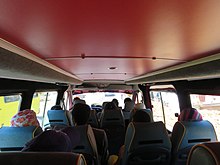
Taxi-brousse, or interurban shared taxi, is the way most natives travel around the country. There are three major modern roads in the country: RN7 from Tana to Toliara, RN2 from Tana to Tomasina (via Brickaville) and RN4 from Tana to Mahajanga. Trips between those towns take about a day whereas traveling between Tana and Taolagnaro, a south-eastern coastal town, would take about 3 or 4 days due to the condition of the road. Travel is cramped and don't expect air conditioning. Expect dust to be a problem in the dry season. Travel by taxi-brousse is guaranteed to test one's patience and sanity, but there is quite possibly no better way to meet and interact with the locals and experience Madagascar as the Malagasy do.
Taxi-brousse is by far the cheapest way to travel, but do not expect to leave or arrive on time. Indeed, the drivers wait for their 15 seats small buses to get full before leaving, therefore a few hours delay is never excluded. However, during the trip it allows you to admire the breathtaking landscapes Madagascar holds. Destinations to most national parks and towns can be reached from "Antananarivo", drivers will happily drop you off en route to their final destination.
- Cotisse Transport is one of the best ways to get around, to/from Mahajanga , Morondava , Fianarantsoa , Toamasina .
- Besady Plus buses leave on time, whether full or not. The provide free wifi and go between Antananarivo and Nosy Be via Ambanja . and from Antananarivo to Sainte Marie via Toamasina . The tickets include sea transfer.
By taxi-be [ edit ]
In Tana, the cheapest way to get around is by taxi-be, or big taxi, which is a bit larger than a mini-van. There is one aisle with seats to fold down so they can cram in even more people. During peak season, buses run frequently. Prices are around 600 Ar, as of November 2018, the 183 which is one of the buses going to Cotisse Transport costs 400 Ar.
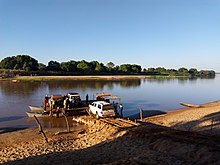
If you are looking for an unusual holiday, a yacht charter to Madagascar might be a good choice.
For those who would like to bareboat, a “guide” is usually included in the price of the yacht charter. Although obligatory, he comes with the price and is essential for the multitude of services he will provide. He will prepare the food, recommend anchorages, know where to fish and refill the water tanks. He will speak the local language and have an established relationship with the local people. He will protect the boat from theft when you leave it to explore on land. The guide lives completely on the exterior of the boat and does not require a cabin. A yacht charter to Madagascar is a bit of a “Robinson Crusoe” adventure. Once you embark, you will not be able to stock up provisions again and must live off the fish and seafood you will catch for yourself (or with your guide). So take great care with your provisioning list.
This problem can be avoided by chartering one of the crewed catamarans. The boats are designed for stability so sea sickness is not really a problem. The crew prepare the boat with linen, food and drinks before your arrival -basically these boats are like a personal floating hotel. Depending on which boat you choose you could receive excellent service and food and suggestions of where to go and what to do. Choose your catamaran carefully as there are some really old ones in service- make sure the crew can speak your language.
By bicycle [ edit ]

Madagascar is a great place to tour by bike and staying in small towns and villages along the way gives a real sense of what the country is all about. A mountain bike or heavy duty tourer at least is required as the roads can be in poor to terrible condition. In the rainy season on the east coast the main north-south road can become impassable, possibly leading to a two-day walk - over soft sand in one section - this is not an easily rideable route. Generally there is little to no traffic which makes cruising around a great pleasure. The people are amazingly friendly and you'll be greeted with crowds of children shouting 'Vazaha' in every village.
There are few or no facilities for cyclists, so be prepared to camp rough (ask if it is somebody's land and never too near a family grave) or sleep in very basic guesthouses. Likely you will be invited to stay in people's houses. Bring a spare tire, puncture kit, chain, brake or gear cable, derailleur and all the tools you need.
See [ edit ]
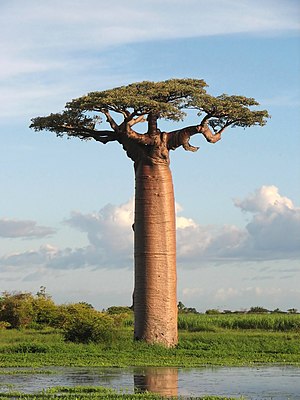
- Sites from the Merina Kingdom can be seen across different parts of Madagascar.
Do [ edit ]
Most people visiting Madagascar do so for the wildlife, and there are a number of national parks and private reserves scattered throughout the country. Some are easier to reach than others - the dual Andasibe-Mantadia National Park area is a few hours from the capital via a paved road, while other parks require days of driving and trekking to explore.
Scuba diving and snorkeling is exceptional in Nosy Be , and is also possible in other areas like Toliara . Be aware that the nearest hyperbaric chamber lies across the Mozambique Channel, and that outside of Nosy Be scuba equipment may not be up to expected standards, so exercise caution and be careful to minimize risks when diving. The condition of corals varies from pristine at Nosy Tanikely to completely destroyed elsewhere, and depending on time of year the visibility may exceed 30 metres, or may be reduced to zero by the outflow from rivers, which, due erosion caused by deforestation, can turn the ocean brown. In the far north near Diego kitesurfing and windsurfing are exceptional between April and November when a constant 30 knot-wind makes the area one of the best surfing spots in the southern hemisphere. Kayaking and deep sea fishing are always rewarding water activities.
Buy [ edit ]
Money [ edit ].
Local money is the Malagasy ariary , denoted by the symbol " Ar " (ISO code: MGA ). Ariary banknotes come in denominations of 100, 200, 500, 1,000, 2,000, 5,000, 10,000 and 20,000 Ar.
The ariary is subdivided into 5 iraimbilanja , making it one of only two non-decimal currencies, but travellers will never have to deal with this minuscule unit of currency.
There are ATMs in larger cities and bigger towns where you can withdraw ariary cash with Visa, Visa Electron, Mastercard, Maestro, Union Pay. Diners club, American Express, Discover card. The withdrawal limit is (usually 400,000 Ar). ATMs are frequently en panne due to connection problems or other technical difficulties. Carry a US dollar or euro emergency reserve with you.
BFV Societe Generale & BOA-Bank of Africa ATMs have a withdraw fee of 8000-10200Ar per withdraw for overseas bank cards. All other ATM networks in Madagascar have no withdraw fee at this time.
The Seven ATM networks in madagacar are:
- AccesBanque ATMs take Mastercard, visa card, Union Pay. (no withdraw fee)
- BGFI ATMs only take visa card. (no withdraw fee)
- BMOI ATMs take only Visa card. (no withdraw fee)
- BOA-Bank of Africa ATMs take only Visa card.
- BNI ATMs take Mastercard and visa card. (no withdraw fee)
- BFV Societe Generale ATMs take Mastercard, Visa card, Maestro, Union Pay, Diners Club, American Express and Discover cards.
- MCB-Mauritius Commerce Bank ATMs take Mastercard, Visa card, Diners Club and Discover cards. (no withdraw fee).
Credit cards are accepted by many hotels, restaurants and shops in Antananarivo and Nosy Be, You may have too pay an extra charge for the credit card commission, which ranges between free and 8%.
Occasionally, hotels and other services used by travellers are quoted in euros. Generally, payment in the local currency is expected but euros are usually also accepted. If you wish to pay in euros, clarify the conditions at which the euro price is converted to avoid that a very bad exchange rate is applied.
For changing money, as of June 2023, locals will not recommend going to a bank, but rather use the services of a money changer. Money changers are usually ambulant. Ask the receptionist of your accommodation or an expatriate living in Madagascar to recommend you one. Usually, the money changer will come to your hotel for the transaction. You get better rates for large denominations of euros and US dollars and UK pounds and rates are better in Antananarivo than in provincial cities.
- Socimad exchange has a bureau de change (open 24 hours TV) at the Ivato airport, and one in downtown (Lalana Radama 1).
Shopping [ edit ]
Vanilla and other spices are cheaper in Madagascar than in Europe or elsewhere, and the quality (especially of vanilla) is very good.
Tipping [ edit ]
Tipping is a matter of much confusion in Madagascar, and is made more confusing because expectations are different when the customer is a foreigner instead of a local. In restaurants and bars you should leave a tip equivalent to ten percent of the total bill. Locals will generally leave far less. If someone helps you with your bags consider a tip equivalent to US$1 per bag. In taxis, rounding the bill upwards is more than sufficient. If you have a private vehicle with a driver, tipping the equivalent of US$10-13 per day is considered extremely generous, while US$5-10 per day is normal for standard service. A good tip for a park guide is approximately US$7-10 per day. Individuals who clean hotel rooms are sometimes not given a salary, so consider leaving a few dollars in the room when you depart (many hotels will have a tip box in the lobby that can also be used to tip the entire staff). When in doubt about how much to tip, consider that even a doctor or university teacher may be making less than 200,000 Ar per month, and remember that in remote areas your tip may set expectations for travelers who follow you, some of whom may be researchers or aid workers with limited funds available (as of October 2018).
Eat [ edit ]
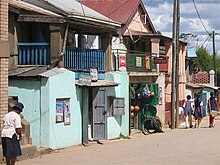
The cheapest way to get a meal is to eat at a "hotely". A plate of rice, laoka (malagasy for a side dish accompanying rice) like chicken, beans or pork, and rice water costs about 3000 Ar (2020). For 1000 Ar extra you can get a small glass of homemade yoghurt.
Bananas (hundreds of varieties) and rice cakes (Malagasy 'bread') are staple 'street food' and available everywhere. Coffee is very good, usually hand-made by the cup and served very sweet with condensed milk.
Steak-frites is available in restaurants in the larger towns.
Supermarkets [ edit ]
There are supermarkets all over Madagascar. The four biggest supermarkets chains are Super U, Score, Leader price and Supermaki. All four Western style supermarket chains are well stocked. There are many leader price & Super U-branded goods but also some more local produce (veg, spices, etc.) Super U is slightly cheaper and has many stores in Antananarivo, Mahajanga, Toamasina and Antsirabe.
Drink [ edit ]
There is no safe tap water so be prepared with bottled water, which is usually easily obtainable. The only other option is ranon'apango (RAN-oo-na-PANG-oo) or rice water (water used to cook rice, which will therefore have been boiled). It's particularly important to plan ahead if visiting rural areas. It is worth taking with you some chlorine tablets, which can be used to make the local water drinkable.
In towns, roadside drink stands, stores and bars are plentiful. Most sell a range of drinks including bottled water, Fanta, Coca Cola and Madagascar's beer, Three Horses Beer (THB). You can also try the bubblegum flavoured 'Bonbon Anglais', which is to South American Inka Cola, although it may be sold as 'limonade' - leading you to think it may be lemonade.
Home brewed rum, and creme de coco, is also available in many flavours.
Sleep [ edit ]
Lodging quality varies dramatically throughout the country, from dorm-style rooms to luxury five-star resorts. In most places room prices will be quoted per room, although many luxury resorts quote prices per person. Insect nets and private bathrooms are provided in nearly all of the more upscale lodging, although in lower-priced establishments you may need to provide your own bug net. There are backpacker hostels in a few places with prices from US$5.
Learn [ edit ]
Learn some Malagasy. The single best thing you can do to have a fun and safe trip is to speak the local language. There are a number of guidebooks you can buy to learn Malagasy, or alternatively you can ask someone to teach you. Just a few words will make all the difference.
Stay safe [ edit ]
Madagascar is a fairly safe country. You must, however, respect some simple principles:
- Don't walk around at night in Antananarivo (other cities are pretty safe).
- Don't exhibit signs of wealth (cameras, jewels).
- Similarly, always carry small notes. Paying with large denomination notes shows off your wealth, can insult the seller because they will not have change, and opens you up for becoming a target for crime.
- Keep an eye on your belongings when using public transport or visiting markets where numerous pickpockets swarm.
- Learn the Malagasy word for thief, "Mpangalatra" which is pronounced "Pun-gul-ah-tra". If someone is trying to rob you in a busy market area scream this. The fact that a vazaha is screaming thief will unsettle the thief and alert the people near you to help.
- Always listen for the words "vazaha" or "vazongo" when spoken in low tones. If you hear these words be aware that someone is talking about you, for better or for worse!
The centre of Antananarivo should be avoided, as well as the Ankato area, Avenue de L'Independence, Ambohijatovo, Analakely, Bohorika, Isoraka, Ampasamandinika, 67ha, Isotry and the area around the military barracks. Elsewhere in the country, Nosy Be, Toamasina (Tamatave), Mahajunga, Ankarana, Isalo, Montagne d'Ambre Nature Reserve, Tuléar and Batterie Beach, and the RN 7 and RN 27 roads are particularly to be avoided.
Like any other developing country, there are a lot of beggars. This is sometimes uncomfortable for tourists, but these people should be respected nonetheless. They are, predictably, attracted to foreigners and will not hesitate to ask for a hand-out. If you don't want to give, a simple "Non, merci" or "Tsy Misy (tsee-meesh)" (I have nothing) will do the trick. If they persist, try shouting "Mandehana! (man-day-han)" (Go Away!) It is recommended not to give money, but other useful items, such as a banana, a piece of bread, etc. It is usually accepted with gratitude, and if the beggar is a child, he will run away with a smile on his face. It is imperative not to encourage begging - in Madagascar the people do not really believe in getting something for nothing and will invariably offer you something first. For example a chameleon to photograph.
Stay healthy [ edit ]
Visitors to Madagascar should be aware of a vast number of health concerns. Diseases such as the plague, which are almost unheard of elsewhere, still occur in Madagascar. Drinking water is almost never safe for foreigners; treated or bottled water should always be used, and salads or dishes containing unpeeled fruits or vegetables should be avoided. While the AIDS epidemic has not reached the devastating level found in many southern African countries, it is widely assumed that the incidence of AIDS is underestimated and rising, so you should take no risks and avoid unprotected sex in all cases. When swimming, beware of the possibility of human waste in the water, which can cause cholera, typhoid, and a number of other diseases. Leeches and tropical parasites are also a concern.
Research malaria prophylaxis options, and follow through. If you are not taking any prophylactics, be sure to always use a mosquito net for sleeping, and apply mosquito repellents once dusk sets in. On-skin repellent (only repellents containing ~40% DEET are effective, such as NoBite, or Azeron Before Tropics) is good but should be used in combination with on-clothes repellent (i.e., NoBite). The clothes repellent is odorless approximately an hour after application, and clothes can be washed up to 4 times before it needs to be re-applied. If you wear long-sleeve clothing treated with the repellent and apply on-skin repellent to the skin parts not covered, you will be very safe against mosquito bites and can skip the prophylaxis with its notorious side effects. Take the repellent issue seriously, though, as it's very easy to fall into a more 'relaxed' mode after you've spent some time in the country.
Areas inhabited by humans will invariably have large populations of stray dogs. Avoid stray dogs, and although bites are rare, if bitten seek medical assistance promptly as rabies is not unheard of.
Remember that Madagascar is in the tropics and take precautions against sunburn and heat exhaustion seriously. Wear lots of sunscreen and keep hydrated. A cloudy day does not mean you won't get burnt.
Respect [ edit ]
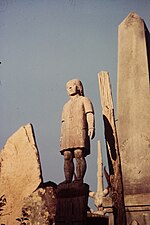
Everyday life in Madagascar is regulated by numerous fady (taboos) which vary from one region to another. They can forbid foods (lemur, turtle, beef), wearing clothes of a particular colour, bathing in a river or a lake, etc. Observance of "Fady" is mostly limited to rural areas, as tourists will most likely not encounter this problem if they stay in the main towns. However, there are Fadys in places such as Antananarivo but most vazaha are exempt.
Fady are attributed to ancestors, to whom Malagasy adopt a respectful attitude whatever their religion. It is safest to respect these prohibitions and not violate them, even if you feel they don't make sense. Inform yourself about local fady when you arrive in a new place.
When addressing anyone older than you or in a position of authority (e.g. police, military, customs officials), use the word "tompoko (toom-pook)" the same way you would use "Sir" or "Ma'am" in English. Respect for elders and authority figures is important in Madagascar.
Do not ever take photos of a tomb without permission. Always ask permission before taking photos. Also, if you go to a remote village or hamlet it is fomba or tradition that you first meet with the head of the village if you have business in the village. Meeting this person can save you a lot of time if you have work to do there.
Connect [ edit ]
International phone calls and 4G Internet via data can be done via cell phone companies such as Airtel , Orange or Telma they work off prepaid phone cards. International phone calls using Telma to Europe cost 900 Ar per minute. There are also Internet cafes in the major cities and most large towns. Electricity may be erratic. Many areas have either mandatory shutdown hours or rationing. It's best to bring an openline smart phone and buy a SIM card when you get to Madagascar. It's also useful to have a powerbank. Most hotels now also have Wi-Fi.
You can also easily buy a SIM card from anyone of the cell phone companies and get a data plan. The process is fairly easy compared to other countries and SIM cards can be bought directly in the airport with the whole activation and buying process being done in less than 10 minutes. As of December 2018, a 12GB data plan good for 30 days is 75 000 Ar.
Do not expect a data connection everywhere on the island, but when you do have data connection, the fast 4G network is fairly impressive. Telma sell their SIM cards for 500 Ar. Orange sell their SIM card for 2000 Ar.
A stamp for a postcard to anywhere in Europe costs 1100 Ar.
- Has custom banner
- Has mapframe
- Has map markers
- Articles with dead external links
- Usable countries
- Usable articles
- Country articles
- East African Islands
- All destination articles
- Has Geo parameter
- Pages with maps
Navigation menu
Nomadic Matt's Travel Site
Travel Better, Cheaper, Longer
Madagascar Travel Guide
Last Updated: September 2, 2023
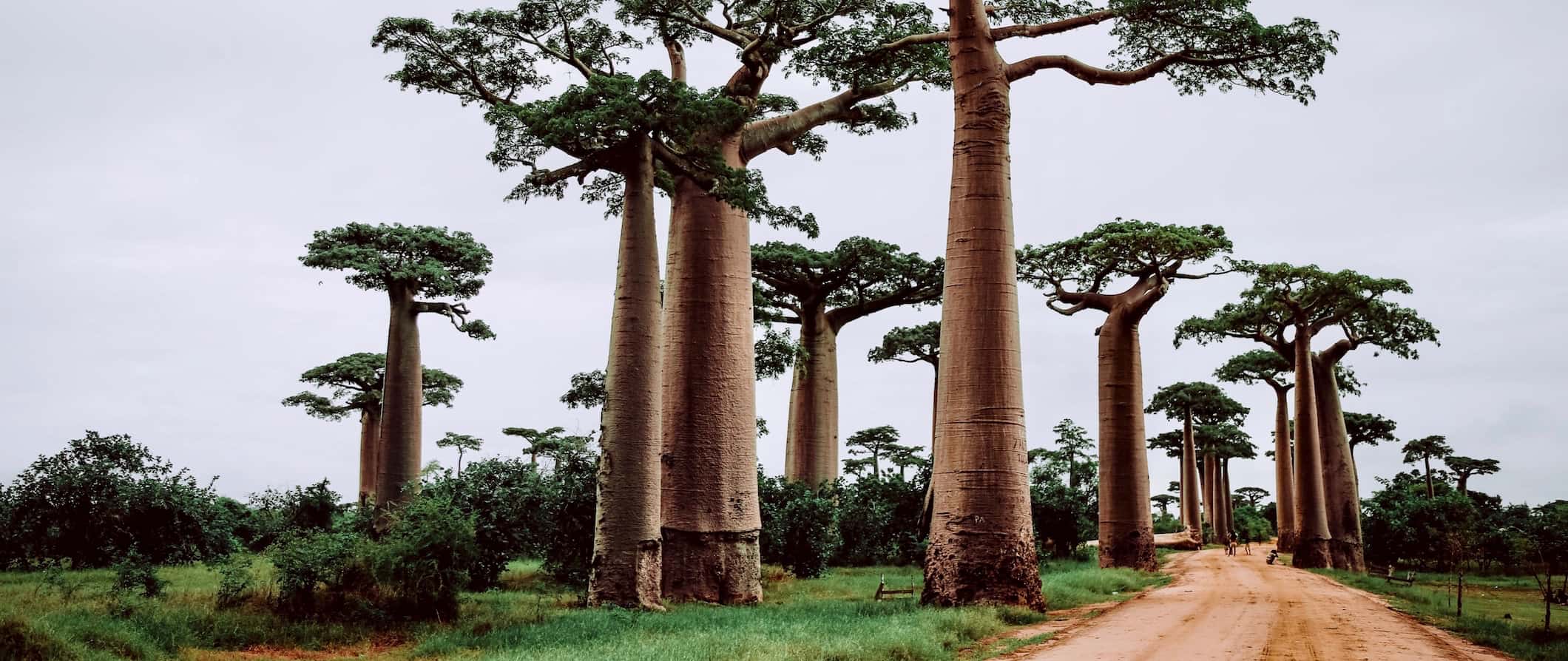
Madagascar, a country famed for its lemurs, massive baobab trees, birding, and jungles, offers visitors a rich playground to explore .
I was enthralled by the country’s beauty during my visit. There are sweeping canyons and gorges, grand waterfalls, and a diverse landscape that spans the entire island. One day you’re in a tropical jungle, the next you’re in an arid plain, and a few hours later you’re on a pristine beach. The scenery here is unlike any other destination I’ve been to. Plus, there really are a seemingly endless variety of cute lemurs!
Located 400 kilometers (250 miles) off the eastern coast of Africa, Madagascar is nearly the size of France and is the fourth largest in the world. It has a population of over 20 million but sees only 300,000 tourists a year.
While traveling Madagascar is challenging , it’s also incredibly rewarding. The travel trail here isn’t well-worn, which means visitors get a much more rugged, unique experience.
This Madagascar travel guide will help you plan the trip of a lifetime, save money, and ensure you make the most of your time in this off-the-beaten-path destination.
Table of Contents
- Things to See and Do
- Typical Costs
- Suggested Budget
- Money-Saving Tips
- Where to Stay
- How to Get Around
- How to Stay Safe
- Best Places to Book Your Trip
- Related Blogs on Madagascar
Top 5 Things to See and Do in Madagascar
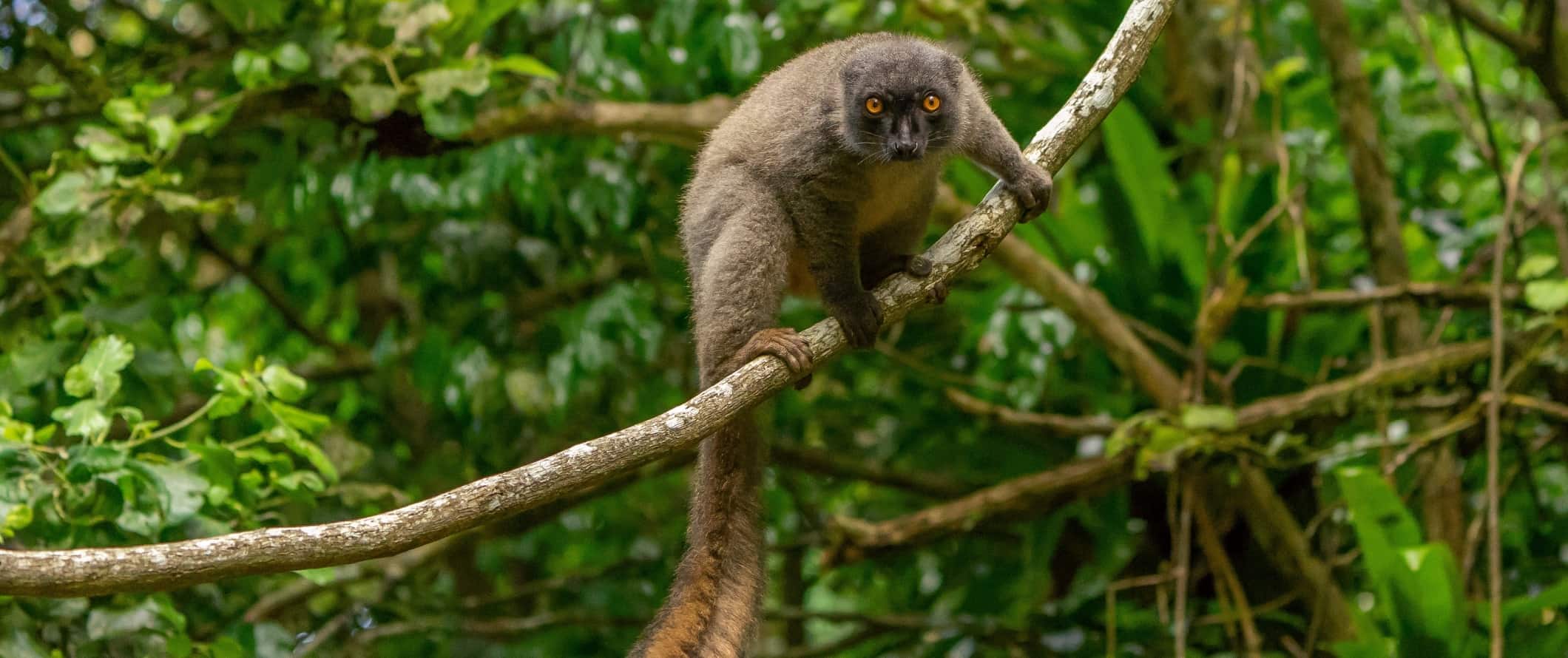
1. See the Avenue of the Baobab
Baobab trees are massive trees that can grow 30 meters (98 feet) tall, 11 meters (36 feet) wide, live up to 1,000 years, and are completely unique to Madagascar. While the trees can be found throughout the country, this road lined with them is one of the most iconic images of Madagascar .
2. Visit Tsingy
This park, near the western coast, is really two parks: Great Tsingy and Little Tsingy. It’s not an easy place to visit (it takes a full day via 4WD on very rough terrain to get here) but the views are worth it. The rock formations here are amazing and otherworldly. Admission is 55,000 MGA.
3. Explore Isalo National Park
Featuring multiple rugged hiking trails, cliffs, ravines, gorges, canyons, and plentiful fauna, this Westworld-like park blew me away. You are required to hire a guide before you explore though (they are found at the entrance). Admission is 65,000 MGA and guides cost between 80,000-100,000 MGA.
4. Relax at Nosy Be
Nosy Be is the place to go for Madagascar’s trademark beaches. Located 8 kilometers (5 miles) off the coast, this small island is home to white-sand beaches, expensive restaurants, and upscale resorts. Beach parties erupt each Sunday and there’s some amazing snorkeling, diving, fishing, and whale watching.
5. Explore Lemur Island
Lemur Island is a wildlife refuge that has four species of lemurs that have been rescued from being pets. They are also released back into their natural habitat when ready. If for some reason they can’t make it alone in the wild, they stay in the park. Admission is 12,000 MGA.
Other Things to See and Do in Madagascar
1. relax at île sainte marie.
While everyone goes to Nosy Be for the fancier resorts, if you want something a little more local, cheaper, and more relaxed, check out Île Sainte Marie. Located off the eastern coast, this former pirate capital (the 17th-century pirate Captain Kidd’s ship sank nearby) is a funky, relaxed island full of little coves, a pirate graveyard, and delicious seafood. The beaches aren’t as good as Nosy Be but there’s a beautiful white-sand beach in the south of the island that few people visit. This is also the best part of the country for whale watching. Round-trip flights here cost around 810,000 MGA. (Don’t take the boat, it’s slow and terribly inconvenient).
2. See Ranomafana National Park
This is one of the best spots in the country to see lemurs as it’s home to twelve different species of them. Besides lemurs, there are the famous giraffe beetles as well as lots of birds, chameleons, over 130 species of frogs, and other wildlife to see. Of the multiple trails available, I would do the morning hike, then the afternoon and night hikes at the secondary entrance (a guide is required for these). The majority of tours skip the latter hikes, so if you do them, you’ll get more of the park to yourself. Due to the park’s popularity, there’s a daily limit on the number of people who can visit so it’s best to go in the low season. Admission is 22,000 MGA per day and guides cost between 80,000-120,000 MGA.
3. Visit Toliara
This small west-coast town is famous for its expats, pizza (a seriously popular dish in the country), and for being a launching pad for diving excursions to the Great Reef offshore. There’s not much else to do except sit by the beach and relax. Driving here on the N7 (the only north-south highway) is also pretty amazing as you can take in Ranomafana National Park, Isalo National Park, and other stunning vistas along the way! A single dive costs 180,000 MGA.
4. Explore Antananarivo
The capital of Madagascar, known as Tana for short, it’s a gritty city with terrible traffic — but there’s a lot of history and culture here that make a short visit worthwhile. See the lemur park and the Rova (the old palace), get a sense of the international scene in the city and use it as your launching pad for stops further afield.
5. Try zebu
Zebu is a type of cow with a large hump on its back. It’s more of a work animal, like an ox, and you’ll see them all over the country (they are even used as dowries in weddings). It’s the only kind of beef here, and it is always on the menu (along with healthy portions of rice). The meat is really tough (thanks to all the work the animals do in the fields) and so it’s best in a stew. Be sure to try it while you’re here!
6. Drive the N5
Heading north along the east coast from Toamasina to Maroantsetra, this road — and I use the word “road” loosely — is a potholed-filled expedition through some of the rawest and most pristine areas of Madagascar. It’s also your best chance to see the famous aye-aye lemur (which kind of looks like a possum). The road weaves through dense jungle, across rivers, and through tiny towns in one of the most undeveloped parts of the country. Stretching 400 kilometers (250 miles), Route Nationale 5 (N5) is arguably the worst road (in terms of its condition) in the country. Many sections are often impassable so budget lots of time to drive it (they say it takes over 24 hours to drive the entire “road”).
7. Go whale watching
Between June and November more than 7,000 humpback whales migrate from Antarctica to Madagascar to breed, meaning the whale watching here is some of the best in the world. While we were taking the boat to Île Sainte Marie, we saw a couple breach the water and it was absolutely stunning to see. Plus, with so few tourists here, you aren’t stuck in a horde of boats vying for a photo. Adult humpback whales grow up to 16 meters (52 feet) and weigh over 30 metric tons (66,000 lbs.). You can also see the less-common Omura whale (dwarf fin whale) around Madagascar as well. Tours cost 135,000 MGA.
8. Enjoy Mantadia National Park
Located 160 kilometers (100 miles) east of the capital, Mantadia National Park is a protected area spanning 155 square kilometers (60 square miles). It’s home to 14 species of lemurs as well as over 115 types of birds and 84 kinds of amphibians — many of which are endangered. The landscape is a stunning mix of old-growth forest and rainforest, and you’ll see lemurs almost everywhere you go! Admission is 45,000 MGA and the required local guide is 60,000-80,000 MGA. There are also lodges in the park where you can stay overnight for 57,000 MGA per night.
9. Visit Lokobe National Park
Situated on the southeastern tip of Nosy Be, Lokobe National Park is one of the Sambirano region’s only remaining forests. Black lemurs, panther chameleons, and several endemic species of birds all make their home here. To get to Lokobe National Park, you’ll need to take one of the park’s pirogues (rowboat) from Nosy Be, which takes roughly 20-40 minutes. Admission is 55,000 MGA. Lokobe is one of the few national parks in Madagascar where a local guide is not needed.
10. Relax on Nosy Mangabe
Nestled deep between the coastal hills of Helodrano Antongila Bay as it carves its way inland on the north-eastern edge of Madagascar, this small island is famed for its booming populations of bug-eyed aye-aye lemurs. Huge fig trees wrangle around groves of palms, ruffed lemurs meet Mantella frogs in the undergrowth, and the green hills crash down into secluded bays of bright yellow sand. It’s a stunning landscape to say the least. Boats to the island and all the necessary permits are available in Maroantsetra. Admission is 45,000 MGA.
11. Visit Ambohimanga
The sacred royal hill of Ambohimanga, located 24 kilometers (15 miles) from the capital, was the one-time home of the country’s kings and the modern country’s first capital. Expanded throughout the 1700s, the walled complex contains a mound of palaces and burial grounds, crumbling fortifications, and regal tombs. King Andrianampoinimerina launched his now-famed campaigns to reunify the country from here, following more than seven decades of civil war in the 18th century. Admission is 10,000 MGA and you can also get a guide to show you around for free (just be sure to tip them).
12. Go to Antsirabe
Perched high up in the Central Highlands, Antsirabe is the third-largest city in Madagascar and the premier destination for the French who came here during the height of colonialism. They built elegant Parisian-style mansions, raised Gothic cathedrals, and laid wide boulevards with plane trees casting shade. The dusty city retains some of that charm and is one of the most aesthetically pleasing cities in the country. Antsirabe, a name that means “place of much salt” in Malagasy, is home to multiple natural thermal springs, making it a popular healing retreat. It’s also one of the best food spots in the country.
Madagascar Travel Costs
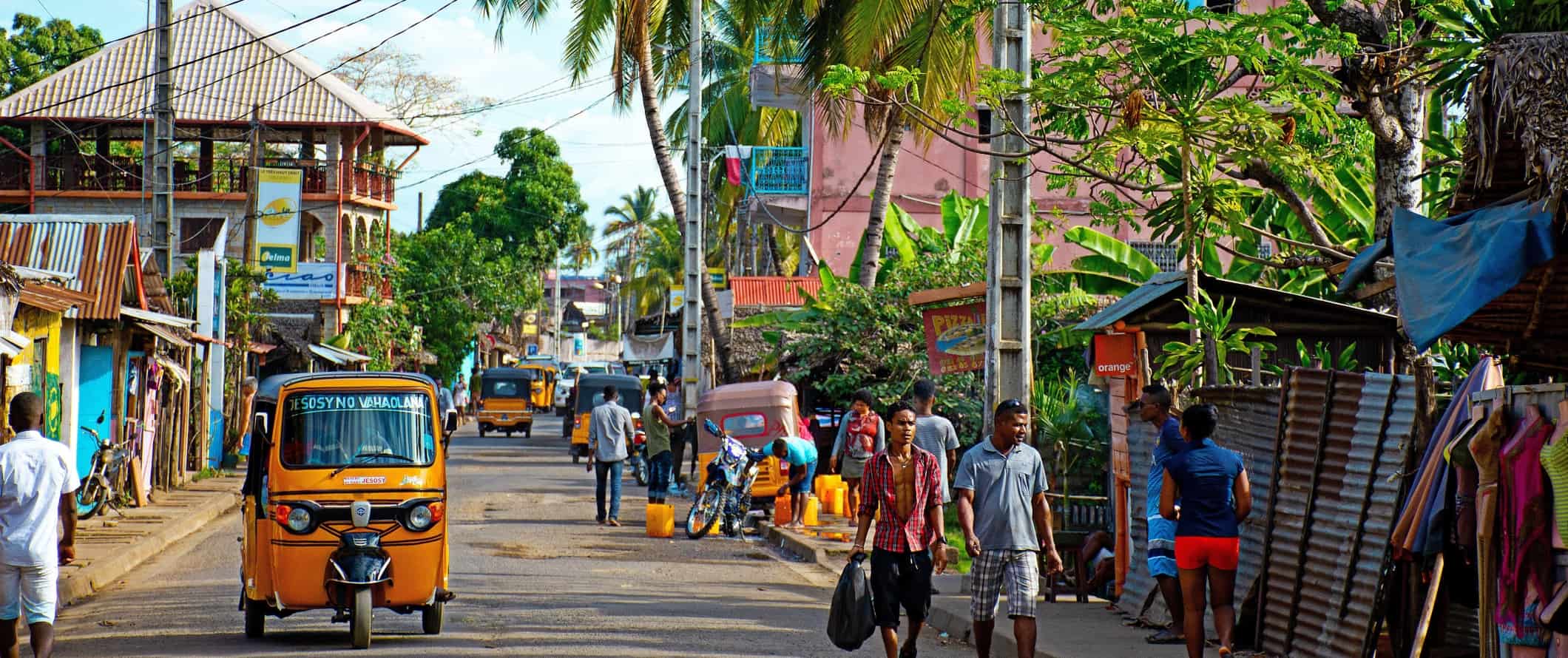
Accommodation – There are only a few hostels in the entire country and a bed in a dorm costs around 35,000 MGA, though sometimes you can find beds for as low as 20,000 MGA. For a private room, expect to pay at least 50,000 MGA. Free Wi-Fi and self-catering facilities are standard, though free breakfast is not.
Camping is available around some of the national parks. Wild camping is not recommended.
Budget hotels start at 60,000 MGA per night for a twin or double with a shared bathroom. For a room with a private bathroom in a hotel with more amenities (such as a pool), expect to spend at least 75,000 MGA per night. Free Wi-Fi is common but not included everywhere. A few hotels also offer free breakfast.
Airbnb is available around the country in larger towns and cities. You can find private rooms for 48,000 MGA per night and entire homes/apartments for around 100,000 MGA per night.
Food – Malagasy cuisine reflects the trading and colonial history of the island, with French, Southeast Asian, African, and Middle Eastern flavors all making their way into the country’s dishes. Tomato, ginger, turmeric, garlic, and onion are the commonly used spices in Malagasy cuisine.
Food in Madagascar is based around the country’s main staple: rice, usually accompanied by seafood or zebu. Rice is so central to food here that the Malagasy term for “to eat a meal” literally means “to eat rice.” Any side that comes with rice is called laoka . Some examples of sides include tomato salsa, stewed leafy vegetables, or beans.
Since zebu is quite tough, it’s often stewed (which is the best way to have it in my opinion), such as in romazava , which contains braised meat, tomato, garlic, ginger, and anamalao flowers, and is often considered the national dish.
Beef or prawn skewers are another common offering. For food on the go, be sure to try the nem (spring rolls) and mofo (fritters). They are cheap (usually around 50-200 MGA) and delicious!
Dining out is very inexpensive here. For a meal of traditional cuisine at a casual sit-down restaurant, expect to pay around 7,700 MGA.
Meals at restaurants that cater to tourists are the most expensive, offering Italian food or crepes for 25,000-28,000 MGA for a meal with a drink. For a pizza (which you can find almost everywhere), prices start at 10,000-15,000 MGA. A fast-food combo meal costs 20,000 MGA.
A beer costs 3,000 MGA while a latte or cappuccino costs 4,500 MGA. Bottled water is 1,500 MGA.
Cooking your own food won’t really save you any money since restaurants here are so cheap. However, if you do want to buy your own food, expect to pay around 77,000 for a week’s worth of groceries including staples like rice, pasta, seasonal produce, and some meat.
Backpacking Madagascar Suggested Budgets
On a backpacking budget of 110,000 MGA per day, you can stay in hostels, take shared or self-guided excursions, take buses between destinations, enjoy a couple of beers, eat street food for all your meals, and do mostly free activities like hiking and enjoying the beach.
On a mid-range budget of 240,000 MGA per day, you can stay in a private hostel room or Airbnb, take some guided tours, visit some islands and national parks (with the required guides), eat out at traditional Malagasy restaurants for all your meals, drink more, and take minibusses between cities.
On a “luxury” budget of 575,000 MGA per day, you can stay in a hotel, eat out at any restaurant, hire private drivers, do as many excursions as you want, and take taxis everywhere. This is just the ground floor for luxury though. The sky is the limit!
You can use the chart below to get some idea of how much you need to budget daily, depending on your travel style. Keep in mind these are daily averages – some days you’ll spend more, some days you’ll spend less (you might spend less every day). We just want to give you a general idea of how to make your budget. Prices are in MGA.
Madagascar Travel Guide: Money-Saving Tips
Looking to save money while you’re traveling Madagascar? Here are some of the best ways to save money during your trip:
- Travel during the off-season – Flights to Madagascar are cheapest during the low season (October-April). While it’s not the most ideal time to visit, your flight is your biggest expense (assuming you’re not booking a multi-day tour). Visiting during the shoulder season can go a long way to saving you money.
- Take local minibusses – When traveling between towns, take public minibusses. Fares are 20,000-50,000 MGA. Exercise patience, as you’ll rarely show up to your destination on time — but you’ll save money over hiring a driver and they are better than the regular bus.
- Skip the car rental – Car rentals cost the same as renting a car and driver. Skip going solo and hire a driver — they’ll not only be more familiar with the driving conditions but most drivers know a lot about the country and landscape too.
- Avoid the hotel restaurants – Food at hotels is cheap, however, it’s usually double the price of a restaurant elsewhere in the city.
- Get a local SIM card – Local SIM cards cost 4,000 MGA, and around 30,000 MGA per gig of data. A local SIM is much cheaper than your data plan from home.
- Bring a reusable water bottle – The tap water in Madagascar is not safe for drinking. Avoid single-use plastic by bringing a bottle and filter like LifeStraw . You’ll save money, stay safe, and help the environment!
Where to Stay in Madagascar
Hostels are few and far between in Madagascar. Here are some suggested budget-friendly options in the country:
- Madagascar Underground (Antananarivo)
- Le Karthala (Antananarivo)
- Coucher de Soleil (Nosy Be)
How to Get Around Madagascar
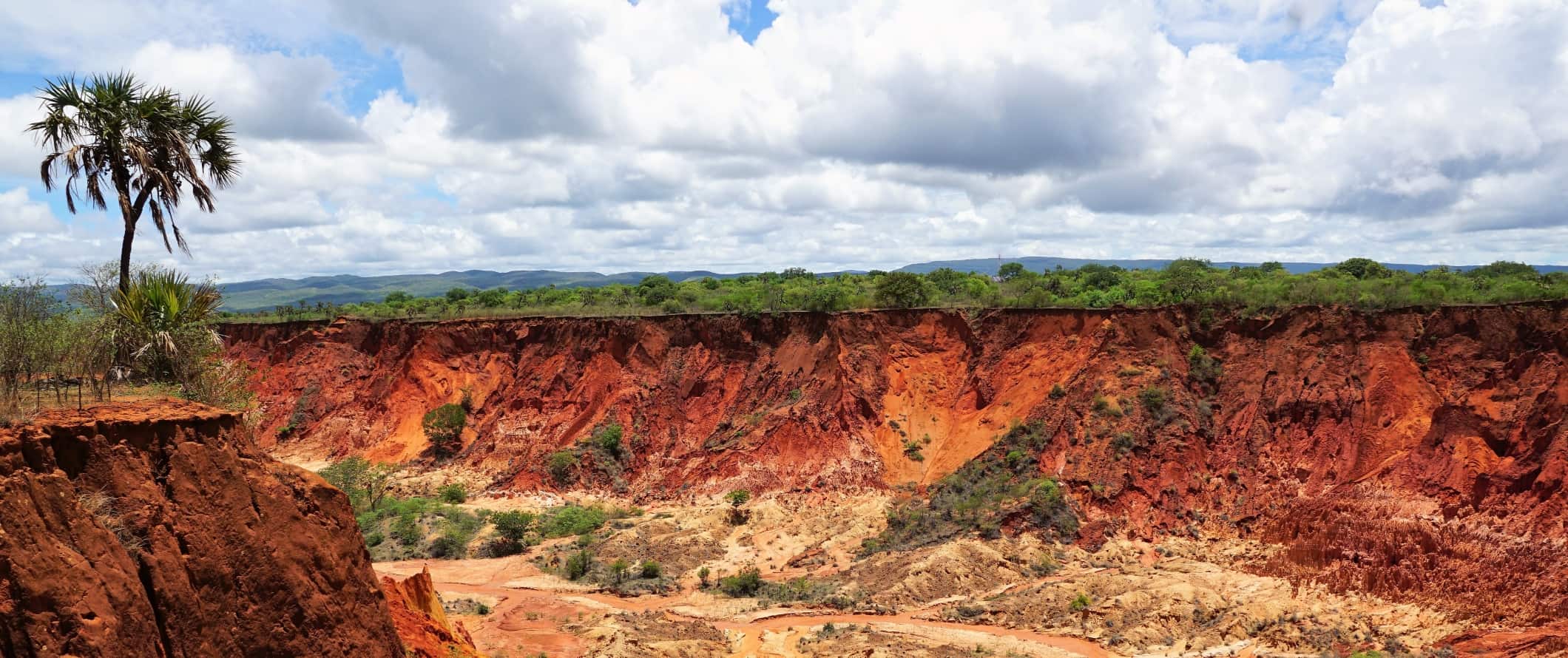
Tours – Multiday tours are the most common way to get around Madagascar. It’s a hard destination to navigate on your own, especially if you don’t want to hire a driver or speak a lot of French. Tours are the most popular choice for anyone looking to experience the country. I met travelers of all ages on my tour with Intrepid Travel .
Tours usually range from 11-24 days. A 14-day tour is around 9,000,000-17,000,000 MGA.
Bus – Buses here are slow, crowded, and unreliable. They don’t leave on a set schedule and often break down due to the terrible road conditions. However, they are the most affordable and best option to get around.
The 350-kilometer (217-mile) journey from Antananarivo to Toamasina takes around 7 hours and costs 30,000 while the 570-kilometer (355-mile) trip from Antananarivo to Mahajanga takes 12 hours and costs 40,000 MGA.
For shorter distances, most minibusses cost between 10,000-20,000 MGA.
Air – There’s only one domestic airline here (Air Madagascar and its subsidiary Tsaradia) and one-way tickets cost at least 350,000 MGA. If you’re on a budget, flying isn’t feasible.
Additionally, flights run on limited schedules, and flights are often canceled without notice, so make sure your plans are flexible if you’re flying.
Train – The train is only available between Fianarantsoa and Manakara. It’s a 300-kilometer (186 mile) trip and it usually takes around 10 hours (often much longer due to dilapidated railway lines and trains). Tickets are 70,000 MGA.
Car Rental – Car rentals can be found for around 280,000 MGA per day. However, it’s uncommon that rental agencies rent cars without a driver. Having a driver is recommended since the roads here are quite challenging and you’ll need a local to help in case anything goes wrong. I’d avoid driving here as the roads are hectic and in poor condition.
When to Go to Madagascar
April-December is the best time to visit Madagascar. You’ll avoid the rainy season as well as the cyclones that often occur. This is the most popular time to visit, however, Madagascar doesn’t see a huge influx of tourists so it doesn’t really get crowded here.
July-September is the best time to see the migrating humpback whales, while October and November are best for seeing baby lemurs. If you want to beat the “crowds” then visit in April, right at the end of the rainy season. It won’t be as hot, but the jungles will be lush and the beaches quiet.
Expect temperatures around 21-24°C (70-75°F) during the peak months of June-August.
How to Stay Safe in Madagascar
Madagascar is a relatively safe country, however, due to the extreme poverty here theft can occur. Don’t flash money or valuables and keep an eye on your belongings if taking a bus or if in large crowds. Keep your wallet and phone secure at all times, just to be safe.
While most cities and towns are safe, avoid walking around at night in Antananarivo.
Solo female travelers should generally feel safe here, though some precautions apply (avoid walking around alone at night, never accept drinks from strangers, dress appropriately so you blend in, etc.).
The roads here are terrible and accidents are common. Always wear your seatbelt (if you have one).
If exploring a city or rural area and you come across wild dogs, act with caution and don’t provoke them.
There are a lot of beggars here, especially kids, and you have to just keep saying no and walking away. Be polite but firm.
There aren’t many common scams here, but if you want to learn which to be on the lookout for, here are some common travel scams to avoid .
As always, keep your wits about you at nighttime, particularly in the capital. Ask your hotel to call you a taxi if you need one (always negotiate the price before getting in the car). Your hotel/hostel staff can write down directions and help you with the fare estimate so you don’t get ripped off.
If you do experience an emergency, dial 117 for assistance.
Always trust your gut instinct. Avoid isolated areas at night, and be aware of your surroundings at all times. Make copies of your personal documents, including your passport and ID, before you leave on your trip. Forward your itinerary along to loved ones so they’ll know where you are.
The most important piece of advice I can offer is to purchase good travel insurance. Travel insurance will protect you against illness, injury, theft, and cancellations. It’s comprehensive protection in case anything goes wrong. I never go on a trip without it as I’ve had to use it many times in the past.
Madagascar Travel Guide: The Best Booking Resources
These are my favorite companies to use when I travel. They consistently have the best deals, offer world-class customer service and great value, and overall, are better than their competitors. They are the companies I use the most and are always the starting point in my search for travel deals.
- Skyscanner – Skyscanner is my favorite flight search engine. They search small websites and budget airlines that larger search sites tend to miss. They are hands down the number one place to start.
- Hostelworld – This is the best hostel accommodation site out there with the largest inventory, best search interface, and widest availability.
- Booking.com – The best all around booking site that constantly provides the cheapest and lowest rates. They have the widest selection of budget accommodation. In all my tests, they’ve always had the cheapest rates out of all the booking websites.
- Get Your Guide – Get Your Guide is a huge online marketplace for tours and excursions. They have tons of tour options available in cities all around the world, including everything from cooking classes, walking tours, street art lessons, and more!
- SafetyWing – Safety Wing offers convenient and affordable plans tailored to digital nomads and long-term travelers. They have cheap monthly plans, great customer service, and an easy-to-use claims process that makes it perfect for those on the road.
- LifeStraw – My go-to company for reusable water bottles with built-in filters so you can ensure your drinking water is always clean and safe.
- Unbound Merino – They make lightweight, durable, easy-to-clean travel clothing.
- Top Travel Credit Cards – Points are the best way to cut down travel expenses. Here’s my favorite point earning credit cards so you can get free travel!
Madagascar Travel Guide: Related Articles
Want more info? Check out all the articles I’ve written on backpacking/traveling in Madagascar and continue planning your trip:
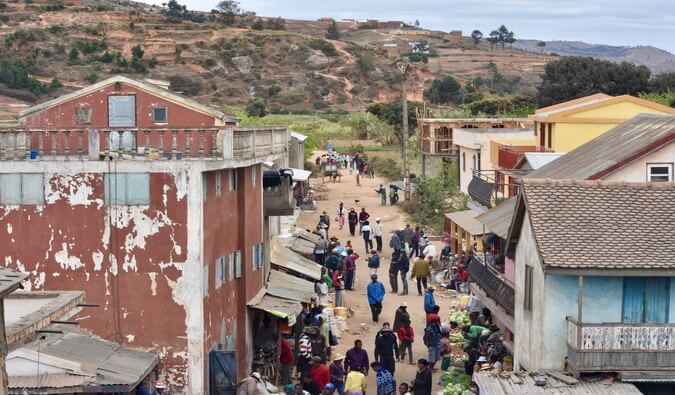
A Journey Through Madagascar: Notes on the Privilege of Travel
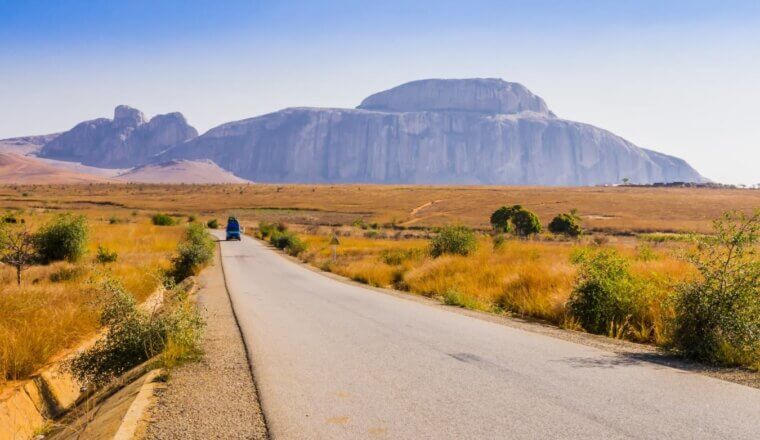
How to Travel Around Madagascar
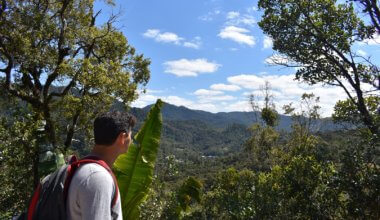
The Top Things to See and Do in Madagascar
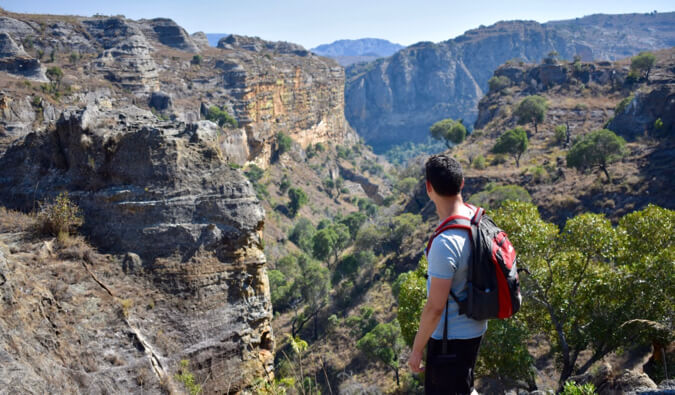
30 Epic Photos From My Trip to Madagascar
Get my best stuff sent straight to you, pin it on pinterest.
- Where To Stay
- Transportation
- Booking Resources
- Related Blogs
12 Best Things to Do in Madagascar
:max_bytes(150000):strip_icc():format(webp)/DSC00412-5b73daf7c9e77c0057ca2198.jpg)
Located several hundred miles off the coast of Mozambique , Madagascar is one of the most unique places on Earth. It is a land with many different faces—golden shores, lush mountains, jagged limestone karsts, and plunging, arid canyons. These eclectic habitats are home to an incredible variety of wildlife, 90 percent of which is found nowhere else on Earth. There is something for everyone in Madagascar , whether you’re looking to relax on untouched beaches or to escape off the grid into pristine rainforest. The country’s capital, Antananarivo, is a melting pot of history, diverse culture, and fine modern cuisine.
Read on to discover the best things to do in Madagascar.
Look for Lemurs
Of all Madagascar’s weird and wonderful creatures, lemurs are without a doubt the most iconic. There are nearly 100 different species and sub-species of lemur on the island, all of which are endemic. These charismatic primates range in size from the tiny pygmy mouse lemur to the majestic, monochrome indri. The best way to spot Madagascar’s lemurs is to head to one of its many national parks . In particular, Andasibe-Mantadia National Park is known for its large indri population while Ranomafana National Park is home to 12 species, including the critically endangered golden bamboo lemur. While exploring the island’s parks, keep an eye out for other endemic species, including tenrecs, civets, and the cat-like fossa.
Swim with Whale Sharks
There’s nothing quite like an encounter with the world’s largest fish . Those visiting Madagascar from September to December can do just that, off the northwestern island of Nosy Be . At this time, these behemoth fish gather to feed on blooming plankton and can easily be spotted from the surface. Despite their huge size (whale sharks reach an average length of around 9.5 meters (31 feet), they are naturally docile and pose no threat to humans . In season, operators like Baleines Rand’eau offer whale shark snorkeling trips with a 95 percent chance of success. While you’re out there searching for sharks, remember to look for Madagascar’s other marine life, including turtles, manta rays, and dolphins.
Marvel at Baobabs
Baobab trees are intrinsically woven into the fabric of African folklore. In the past, Indigenous people depended upon their products for survival, and as such, these strange trees are often called the “Tree of Life.” Today, they are remarkable for their vast size, with the largest species growing up to 14 meters (46 feet) in diameter. Madagascar is home to six types of endemic baobab. Although they can be seen all over the island, the most famous place for baobab-worshipping is the Avenue of the Baobabs. Located in the Menabe region of western Madagascar, the Avenue comprises some 25 trees strung out like sentries along the Morondava-Belon’i Tsiribihina dirt road. Many of the trees are more than 30 meters (100 feet) tall.
Explore Antananarivo
Founded by the king of the Merina people at the beginning of the 17th century, the Malagasy capital is steeped in history. Known locally as Tana, Antananarivo also served as the capital for French colonialists in the 19th and 20th centuries and remains the island’s center of political and economic power today. There is much to explore in Tana. For beautiful architecture, head to the old Haute-Ville area of the city. Get your cultural fix in the city’s art galleries and museums, or soak up the atmosphere while browsing the open-air produce stalls at Analakely Market. Tana is known for its culinary culture, whether you’re hoping to sample street-food delicacies or experience fine French dining in restaurants that compete on an international level.
Sign Up for Scuba Diving
Whether you’re an experienced diver or a beginner hoping to take the plunge for the first time , there are plenty of incredible scuba diving opportunities in Madagascar. With approximately 4,800 kilometers (3,000 miles) of coastline, you’re never far from the ocean. In the southwestern part of Madagascar, you'll find the world’s third largest coral reef system: the Tuléar reef. It provides a habitat for more than 6,000 marine species, many of which are unique to Madagascar. The island of Nosy Be is perhaps the most famous destination for divers, while charter boats in the north can be hired as dedicated diving liveaboards. Conditions are ideal, with good visibility year-round and balmy water temperatures. Bucket-list animals include whales, dolphins, sharks, and manta rays.
Sample Local Cuisine
Wherever your adventures take you, make sure to sample the local cuisine. Traditional Malagasy dishes usually consist of either meat or seafood served with vegetables and rice. Spices are used sparingly, but the food is nevertheless flavorful. Try koba, a popular street food consisting of banana, peanut, and rice paste wrapped in a banana leaf casing. Romazava is the traditional beef stew, while kabaro (curried lima beans and coconut) is popular in the Morondava region. On the coast, fresh seafood dominates the menu. Wash your meal down with the local Three Horses Beer (THB) or with ranonapango (sometimes called ranovola). The latter is made from burnt rice water and may be an acquired taste.
Visit the Stone Forests
Günter Lenz / Getty Images
Madagascar is full of extraordinary scenery, but perhaps the most striking of all its alien landscapes are the limestone karsts of northwestern Tsingy de Bemaraha National Park . Approximately 200 million years ago, the limestone seabed was pushed upwards, creating a vast plateau. Over time, the plateau was eroded, eventually becoming a dense “forest” of jagged limestone needles interspersed with canyons, waterfalls, and an almost impenetrable forest. In addition to its prehistoric badlands scenery, Tsingy offers the opportunity to look for 11 different lemur species, some of which are only found in this specific area. There are also endemic reptiles, birds, and a plethora of utterly unique botanical species.
Spot Endemic Birds
There are approximately 280 bird species in Madagascar. Although this isn't a particularly high figure for the fourth-largest island in the world, a high level of endemism confirms its status as a prime birding destination. More than 100 species are Madagascar exclusives, and there are three main regions for those in search of endemic birds: the eastern rainforest, the southern spiny bush, and the deciduous forests in the west. If you have limited time, try Ranomafana National Park , home of rarities like the short-legged ground roller and the yellow-bellied sunbird-asity. The best time for birding is in late spring or early summer (August to December), when birds are at their most active and are dressed in their finest breeding plumage.
Discover Pristine Beaches
White sand, abundant palms, and azure waters make Madagascar one of the most beautiful island destinations in the Indian Ocean . Some of the country’s best stretches of sand are found on outlying islands in the northwest. Tiny Tsarabanjina, for example, evokes Robinson Crusoe with its deserted sandy coves and crystalline seas. The island is only accessible by boat and offers luxury accommodations in the form of private beach bungalows. The beaches of nearby Nosy Iranja are frequented by nesting turtles, while on the east coast, Île aux Nattes is a tropical paradise with several options for accommodation and activities. On the mainland, the beaches around Anakao in the south offer reliable swells for surfing and kite surfing.
Go Whale Watching
Those heading to Madagascar between July and September should make their way to the northeastern island of Île Sainte-Marie to witness the annual humpback whale migration. Also known as Nosy Boraha, this idyllic island plays host to hundreds of humpbacks, all of whom have traveled thousands of miles from the nutrient-rich waters of the Southern Ocean. Their sojourn to the warm waters of the Indian Ocean is something of a wintertime vacation—a time to come together, mate, and give birth before returning to Antarctica . Humpback whales are the most acrobatic of all whale species, and if you join an Île Sainte-Marie whale-watching tour , you’re likely to see them breaching, spy-hopping, and slapping their giant pectorals.
Get Lost in Isalo National Park
Isalo National Park, which protects more than 190,000 acres of land, is a nature lover's paradise. Here, you will find thick forests of pandanus trees, natural swimming holes, and dramatic geologic formations such as plateaus, gorges, canyons, and pinnacles. For wildlife, you're in for a treat: Within the park, you can spot some 14 species of lemurs, over 80 different types of birds, and reptiles and amphibians like the Malagasy rainbow frog and the Madagascar boa. Visitors to the park mainly come here to hike, with the Piscine Naturelle Trail being one of the more popular trails. Be aware that you will need to hire a local guide to explore the park, either through an organized Madagascar tour or at the park office in Ranohira.
Spot Wildlife in Lokobe Nature Special Reserve
Located in Nosy Be, Lokobe Nature Special Reserve is the island's last remaining lowland rainforest, and a must-see if you're in Madagascar to see wildlife. Among the island's residents, you'll find nocturnal mouse lemurs, Madagascar long-eared owls, leaf-tailed geckos, and Nosy Be panther chameleons. Do be on the lookout for the endangered black lemur, which is a bit of a misnomer, considering that the females are rust-colored and have white tufts of hair on their heads. Getting here will require you to row a pirogue, a traditional dugout canoe, to shore; we recommend booking a group tour for ease of planning a trip here.
Madagascar is perhaps best-known for its lemurs—of which nearly 100 different species and sub-species live on the island—and for its massive baobab trees. The island is also home to the Tuléar reef, the world's third-largest coral reef system, making Madagascar one of the top scuba diving destinations in Africa.
It depends on which part of the country you're planning to visit. For those interested in exploring the east coast (Île Sainte-Marie and Andasibe-Mantadia National Park), July through September is when this mostly rainy, humid region is at its driest and coolest. On the northwest coast (Nosy Be), June through September offers excellent scuba diving, while October through December promises great whale shark-spotting. In the Central Highlands (Antananarivo and Ranomafana National Park), travelers will find pleasant temps and smaller crowds than in the busy tourist season.
The two official languages of Madagascar are Malagasy and French, though the former is more widely spoken as it's a first language for most locals.
World Wide Fund for Nature. "Madagascar's Major Reefs Among Most at Risk From Climate Change." December 4, 2009.
The Top 8 National Parks in Madagascar
Nosy Be, Madagascar: The Complete Guide
Madagascar Travel Guide: Essential Facts and Information
Ranomafana National Park: The Complete Guide
Weather in Madagascar: Climate, Seasons and Average Temperatures
Isalo National Park, Madagascar: The Complete Guide
Top 18 Things to Do in Antananarivo, Madagascar
Tsingy de Bemaraha National Park: The Complete Guide
Africa's Indian Ocean Islands: The Complete Guide
The Best Places to Visit in Belize
Amber Mountain National Park: The Complete Guide
Islas Marietas National Park: The Complete Guide
8 of the Best Scuba Diving Destinations in Africa
9 Very Adventurous Things to Do in Costa Rica
Top 10 Destinations in Africa for a First-Time Visitor
18 Most Beautiful Islands in the World
Madagascar Travel Guide
Courtesy of Pierre-Yves Babelon | Getty Images

10 Best Things To Do in Madagascar
Updated February 12, 2021
Madagascar appeals to both animal lovers and outdoor enthusiasts. At national parks like Lokobe , Mantadia and Isalo , visitors can come face-to-face with creatures like lemurs, birds, chameleons and snakes, plus an array of trees and plants. Towering
- All Things To Do

Tsingy de Bemaraha Strict Nature Reserve Tsingy de Bemaraha Strict Nature Reserve
Situated along Madagascar's west coast, Tsingy de Bemaraha Strict Nature Reserve is home to impressive geological structures and a variety of endangered species. More than 328 miles of forests make up this UNESCO World Heritage site, where 11 kinds of lemurs, 17 types of reptiles, 6 bird species and more reside. But the standout here is the park's towering gray limestone pinnacles, which stand up to 328 feet tall.
Past visitors said Tsingy de Bemaraha Strict Nature Reserve is a "must-see adventure" that's "definitely worth the drive." Although the locale can be a bit challenging to traverse – some former travelers reported crawling through tight gaps and lots of climbing – many described the views from the top of the pinnacles as "spectacular."

Avenue of the Baobabs Avenue of the Baobabs free
As its name suggests, the 853-foot-long Avenue of the Baobabs is a stretch of giant baobab trees believed to be up to 800 years old. Though the avenue is situated roughly 405 miles away from Antananarivo, it offers close proximity to Kirindy Mitea National Park, which sits along Madagascar's west coast.
According to recent travelers, the Avenue of the Baobabs is one of the country's best places to snap photos, especially at sunrise and sunset. But remember, these are the avenue's peak visiting hours, so arrive early. Visitors recommend paying for a guide's services, or you can opt for a multiday tour by local companies like Intrepid Travel and G Adventures . Itineraries vary by tour, but expect to spend at least an hour on-site. Tour fees start at $1,140 per person. If you're sticking to a tight budget, consider driving yourself or flying into Morondava Airport (which sits less than 10 miles away from the attraction) – accessible from Antananarivo's Ivato International Airport.

Mantadia National Park (Parc National Mantadia) Mantadia National Park (Parc National Mantadia)
One of Madagascar's most convenient parks to explore is Mantadia National Park. Located about 100 miles east of the capital city of Antananarivo, Mantadia National Park is home to 14 species of lemurs, plus 117 types of birds and 84 kinds of amphibians. Plant enthusiasts will also find plenty to admire here. More than 1,200 plant species grow in this lush park, 120 of which are orchids.
Past travelers enjoyed wandering along Mantadia National Park's five trails, adding that each path and stairway was well-maintained. What's more, several said this protected area is a must-see if you love lemurs and recommend hiring a local guide for a fee at the park's reception counter. Each local guide is an experienced spotter, meaning you'll increase your chances of seeing an array of animals.

Popular Tours

Two days wildlife tour to Andasibe NP
(6 reviews)
from $ 340.03

Madagascar Wildlife Tour for 02 days
(7 reviews)
from $ 647.15

Lemur Day Tour at Andasibe Rainforest and Vakona Lodge Reserve
(15 reviews)
from $ 299.00

Lokobe National Park (Parc National Lokobe) Lokobe National Park (Parc National Lokobe)
If your idea of a Madagascar getaway consists of hiking through a tropical forest and observing lemurs in the wild, then you must visit Lokobe National Park. Situated on the southeastern tip of Nosy Be, an island off Madagascar's west coast that's known for its picturesque beaches and sunsets, Lokobe National Park is one of the Sambirano region's only remaining forests. The park can only be accessed by motorized, canoe-like boats called pirogues , adding to its tranquil, unspoiled atmosphere.
Although some recent visitors cautioned that getting to the park and exploring it can be quite exhausting, most raved about its beauty and wildlife. You'll have the chance to spot three lemur species here, as well as multiple kinds of amphibians and reptiles. Highlights for past travelers included watching boa constrictors slither in the trees, seeing chameleons blend in with their surroundings and feeding lemurs bananas. Since you'll be trekking through wild terrain, remember to wear comfortable sneakers, as well as long-sleeved clothing and bug spray to protect yourself from mosquitoes.

The Three Bays (Les Trois Baies) The Three Bays (Les Trois Baies) free
If you want to take in water vistas without trekking offshore to islands like Nosy Sakatia or Nosy Be, head to The Three Bays. Made up of three bays – Sakalava, Pigeon and Dune – this area features pristine beaches where activities like swimming, hiking, windsurfing and kitesurfing can be enjoyed. You'll also have ample opportunities to take jaw-dropping photos here.
Visitors rave about The Three Bays' beautiful setting, adding that the kitesurfing conditions at Sakalava Bay are superb. The area is also easy to reach by car since it's just 10 miles northeast of Antsiranana. For those who'd rather explore The Three Bays on a quad bike, Diego Raid offers four-wheel drive tours for $21 per person (or $120 per vehicle).

Anja Community Reserve Anja Community Reserve
Although Madagascar offers several places to spot lemurs, one of its more unique animal locales is Anja Community Reserve. Located about 41 miles southwest of Fianarantsoa along National Road No. 7, this environmental and cultural preservation site strives to protect local flora and fauna within an inhabited area. Ring-tailed lemurs, chameleons, snakes and more live here, and the reserve's surrounding granite mountains feature two hiking trails, various caves and a campsite with water, restrooms and a shower area.
Past travelers enjoyed checking out Anja Community Reserve on foot, saying they saw multiple lemurs during their visits. Many also raved about the easier Small Circuit Loop, which takes about two hours to complete. For a more challenging hike, consider trekking the six-hour-long Large Circuit Loop. If you decide to stay overnight, remember to bring camping equipment since it is not available at the campsite.

Isalo National Park (Parc National Isalo) Isalo National Park (Parc National Isalo)
Isalo National Park woos visitors with its vertical rock walls, lush vegetation and picturesque waterfalls. Throughout this tropical paradise, travelers can hunt for reptiles and primates – there are more than 50 species living here – while strolling along 10 walking, hiking and bike trails. Some paths even lead to natural swimming pools, where you can cool off while taking in your surroundings.
Previous visitors had mixed feelings about Isalo National Park. While some described it as Madagascar's best national park, others felt it was too expensive. But if you can pay the park's 65,000 Malagasy ariary ($20) entrance fee and roughly 4,000 to 113,000 Malagasy ariary (or $1 to $36) to explore one of its paths during a guided tour, past travelers said you'll be rewarded with "stunning" views of an "incredibly beautiful" area.

Tsingy Rouge Park Tsingy Rouge Park
Although this attraction in northern Madagascar is a bit removed from the main roads, Tsingy Rouge Park's dramatic landscape cannot be missed. Featuring tall clay-like rock formations created by landslides and mudslides, this area's red rocks are often compared to the larger ones found at Utah's Bryce Canyon National Park.
You'll need a four-wheel drive vehicle to get to this natural wonder, but recent travelers recommend making the trek. If you don't rent a car while in Madagascar, you can take one of several organized tours to the site; rates start at $168 per day, excluding lodging and meals. Tour operators that visit Tsingy Rouge Park include Soa Tours and Visit Mada Tours . Since the terrain is rough in this park, be sure to wear comfortable walking shoes.

Hiking Tours Madagascar
(4 reviews)
from $ 2127.92

The National Route 7, 7 days throughout the landscapes and National Parks
from $ 795.23

Madagascar 7 Days Baobabs and Lemurs Tour
(5 reviews)
from $ 1436.89

Nosy Sakatia Nosy Sakatia free
When you're in need of a break from Madagascar's parks and forests, head to the quaint island of Nosy Sakatia. This tropical oasis – which measures just 1 square mile – boasts an array of orchids but is best known for its water sports activities. Everything from sailing to fishing to snorkeling and diving is offered here, and you can even spend a night or two at one of the island's hotels .
Past visitors loved scuba diving and snorkeling in Nosy Sakatia's waters during half-day excursions. Many, in fact, saw sea turtles grazing in shallow areas. However, a few travelers were less than impressed with the island's beaches and desired more things to do on shore. If you do decide to visit Nosy Sakatia, consider booking a half- or full-day tour through companies like City Discovery and Les Baleines Rand'eau . Tour rates start at $50 per person and generally include snorkeling equipment rentals and lunch.

Lemurs' Park Lemurs' Park
Although you'll have ample opportunities to spot lemurs in national parks like Mantadia and Lokobe , for even more chances to see these furry creatures, travel 16 miles southwest of Antananarivo to Lemurs' Park. This private, 12-acre reserve houses nine lemur species, as well as various lizards and birds and 70-plus types of plants. In addition to welcoming tourists, the park works with other Malagasy reserves to rehabilitate and breed lemurs.
Travelers say Lemurs' Park is a great place to see lemurs without venturing far from Antananarivo. Though you won't be allowed to touch the lemurs, the property's animals move freely around the park, so one may try touching you. Many also rave about the attraction's well-maintained facilities and knowledgeable guides.

Explore More of Madagascar

Best Hotels

When To Visit
If you make a purchase from our site, we may earn a commission. This does not affect the quality or independence of our editorial content.
Recommended
The 18 Best Napa Valley Wineries to Visit in 2024
Lyn Mettler|Sharael Kolberg April 23, 2024

The 25 Best Beaches on the East Coast for 2024
Timothy J. Forster|Sharael Kolberg April 19, 2024

The 50 Best Hotels in the USA 2024
Christina Maggitas February 6, 2024

The 32 Most Famous Landmarks in the World
Gwen Pratesi|Timothy J. Forster February 1, 2024

9 Top All-Inclusive Resorts in Florida for 2024
Gwen Pratesi|Amanda Norcross January 5, 2024

24 Top All-Inclusive Resorts in the U.S. for 2024
Erin Evans January 4, 2024

26 Top Adults-Only All-Inclusive Resorts for 2024
Zach Watson December 28, 2023

Solo Vacations: The 36 Best Places to Travel Alone in 2024
Lyn Mettler|Erin Vasta December 22, 2023

26 Cheap Beach Vacations for Travelers on a Budget
Kyle McCarthy|Sharael Kolberg December 4, 2023


The 50 Most Beautiful White Sand Beaches in the World
Holly Johnson December 1, 2023

Explore Madagascar
Plan your trip to madagascar: best of madagascar tourism.

Essential Madagascar

Trending in the forums
Madagascar Is Great For
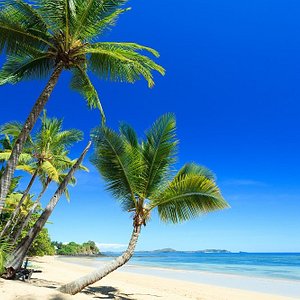
Eat & drink
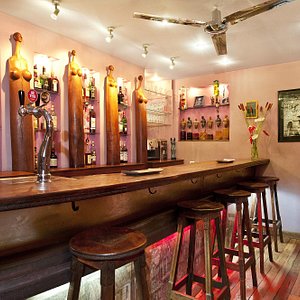
Best things to do in Madagascar
Book your individual trip , stress-free with local travel experts
- roughguides.com
- best-things-to-do-in-madagascar
Plan your tailor-made trip with a local expert
Book securely with money-back guarantee
Travel stress-free with local assistance and 24/7 support

written by Mani Ramaswamy
updated 26.04.2023
Idyllic tropical beaches are what first draw many visitors to Madagascar . Still, this immense island also hosts a fascinating assemblage of exotic wildlife and a unique fusion of African and Asiatic cultures. Explore our list of the best things to do in Madagascar and see why you should consider this country as your next holiday destination .
1. Visit the picturesque Fianarantsoa
2. parc national d’andasibe-mantadia, 3. île sainte marie for swimming and snorkelling, 4. réserve spéciale de nosy mangabe, 5. parc national de masoala, 6. nosy be — a popular beach destination, 7. allée des baobabs and kirindy private reserve, 8. see the limestone pinnacles of tsingy de bemaraha, 9. parc national d’isalo, 10. sainte luce reserve (or manafiafy), 11. parc national de la montagne d’ambre, 12. diving - one of the best things to do in madagascar for witnessing the marine life, 13. watch for endemic birds, 14. visit a crocodile farm, 15. réserve d’anja for ring-tailed lemurs and more.
This article is inspired by our Rough Guides guidebooks — your essential guides for travelling the world.
Tailor-made travel itineraries for Madagascar, created by local experts

18 days / from 3663 USD
Wild Madagascar
This trip is a tour of Wild Madagascar: discover dusty desert canyons, lush rainforests teeming with wildlife and trek through national parks. Explore the bustling capital Tana, then stop by the beach at Ifaty where you'll encounter forests of baobab trees and wandering tribesmen.
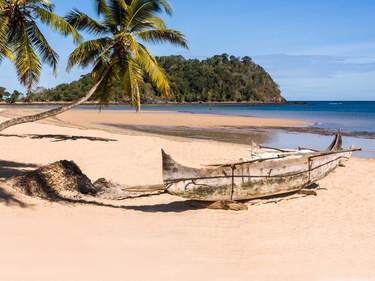
11 days / from 2417 USD
Dreaming of Madagascar
Tropical island beaches, lush rainforest, stunning wildlife, and the bright red clay houses of Antananarivo await you as you arrive on the beautiful island of Madagascar. Get your fill of culture in the capital Tana, snap beguiling wildlife, and revive and reboot on stunning white-sand beaches.

6 days / from 1268 USD
A Taste of Madagascar
An unforgettable journey through Madagascar's enchanting landscapes and cultural treasures. From the lush rainforests of Andasibe to the vibrant streets of Antananarivo, this adventure combines wildlife encounters with rich history, creating a diverse and immersive experience.
Fianar’s hilltop old town is one of Madagascar’s most picturesque, with narrow lanes and views across the modern city and its rice fields. Fianarantsoa, the historic capital of Haute Matsiatra Region, is Madagascar’s fifth-largest city, with a population estimated at around 200,000. Fianarantsoa’s main point of interest is HauteVille, whose characterful assemblage of sloping cobbled alleys and 19th-century buildings.
The old town’s main square is overlooked by the Cathédrale d’Ambozontany, an imposing brick-faced Catholic edifice. A popular overnight base or lunch stop in the vicinity of Fianarantsoa, Lac Sahambavy, is a pretty artificial lake surrounded by pine plantations and overlooked by the legendary Lac Hôtel.
This tailor-made trip to Wild Madagascar discovers dusty desert canyons, and lush rainforests teeming with wildlife and trek through national parks. Explore the bustling capital Tana, then stop by the beach at Ifaty where you'll encounter forests of baobab trees and wandering tribesmen.
Where to stay in Fianarantsoa
- For central location: Zomatel Hotel
- For authentic experience: Tsara Guest House
Find more accommodation options to stay in Fianarantsoa

Fianarantsoa, Madagascar © Pierre-Yves Babelon/Shutterstock
The Parc National Andasibe-Mantadia ranks among one of the best things to do in Madagascar for wildlife, boasting a good selection that collectively attracts more than 20,000 foreign visitors annually in recent years. The rainforest here is the main stronghold of the indri, which is renowned both as Madagascar’s largest lemur.
The park also ranks as one of the country’s key ornithological destinations, with more than 110 species recorded, and it supports a wide variety of colourful orchids. Popular night walks along the main road through the forest offer a great opportunity to see nocturnal lemurs, chameleons and an array of colourful tree frogs.

Lemur in Parc National d’Andasibe-Mantadia © worldclassphoto/Shutterstock
Île Sainte-Marie is a 222-sq-km (86-sq-mile) granitic island situated 7km (4 miles) offshore of the closest mainland peninsula. Officially known but seldom referred to as Nosy Boraha, the sliver-like island stretches almost 60km (36 miles) from north to south. It is nowhere significantly more than 5km (3 miles) wide, and its maximum altitude is a relatively modest 114 metres (374ft).
As is the case with Nosy Be, Sainte-Marie offers great swimming, snorkelling, diving and whale-watching opportunities. While it lacks the spectacular volcanic scenery and lemur-filled forests of its western counterpart, it compensates by being less overtly touristy and considerably more affordable.
Tropical island beaches, lush rainforest, stunning wildlife, and the bright red clay houses of Antananarivo await you on this tailor-made trip to Madagascar . Get your fill of culture in the capital Tana, snap beguiling wildlife, and revive and reboot on stunning white-sand beaches.
Where to stay on Île Sainte Marie
- For stunning sunset views: Lakana Hotel
- For price and quality: Libertalia Hotel
Find more accommodation options to stay on Île Sainte Marie

A trip to Sainte Marie Island is one of the best things to do in Madagascar for diving and snorkelling © Charles-Henry THOQUENNE/Shutterstock
Réserve Spéciale de Nosy Mangabe protects Antongil Bay’s largest island, a lovely forested protrusion that rises to a summit of 332 metres (1090ft) above the surrounding turquoise waters.
Visiting the island between July and September is one of the best things to do in Madagascar for whale watching. During this time several thousand humpback whales gather in Antongil Bay to breed, and they can frequently be seen breaching and lob-tailing. Day visits or overnight camping trips to Nosy Mangabe must be arranged through the national park office in Maroantsetra.

Gecko, Nosy Mangabe, Madagascar © Artush/Shutterstock
Related articles from the blog

The main attraction close to Maroantsetra, situated about 20km (12 miles) further east, is the Parc National de Masoala which protects the forests and mountains on the spectacular Masoala Peninsula. Unbreached by roads, Masoala is Madagascar’s largest national park, with a total area of 2,400 sq km (927 sq miles), and a key component of the Rainforests of the Atsinanana Unesco World Heritage Site.
Rising from a succession of stunning uninhabited beaches to a series of tall peaks, the park protects an extraordinary diversity of wooded and wetland habitats. It is an important stronghold for several localised birds.

Beach in Masoala National Park, Madagascar © Dennis van de Water/Shutterstock
Madagascar’s most popular beach destination , Nosy Be is a lush tropical island renowned as one of the best things to do in Madagascar for its relaxed ambience, agreeable year-round weather, superb diving and cuddlesome black lemurs.
Nosy Be’s reputation as a tourist trap isn’t entirely unjustified, and things do tend to come across as pricey by comparison to the Malagasy mainland, but there is far more to the island than just another stock tropical beach resort.
Scenically, it’s a fantastic place, with a backdrop provided by the volcanic cones of the Mont Lokobe and Mont Passot.
Where to stay on Nosy Be Island
- For the perfect beach holiday: Le Moya Beach
- For families: Bungalows des tropiques
Find more accommodation options to stay on Nosy Be Island

Nosy Be, Madagascar © Roel Slootweg/Shutterstock
Arguably the most iconic scenic landmark anywhere in Madagascar, the Allée des Baobabs, 30 minutes drive northeast of Morondava. It is a short stretch of road lined on either side by around two dozen Grandidier’s baobabs, the highest of which stands about 30m (98ft) tall. The avenue is best visited at dusk when the smooth trunks of the trees glow orange-brown in the golden light.
The Rough Guides to Madagascar and related travel guides
In-depth, easy-to-use travel guides filled with expert advice.

Not to be confused with the Parc National de Kirindy-Mitea, the Réserve Forestière de Kirindy is a small privately-managed conservancy and research centre that runs about 65km (39 miles) north of Morondova. Kirindy is renowned as the most reliable site for seeing the fossa, Madagascar’s largest carnivore.

Allée des Baobabs and Kirindy Private Reserve © aaabbbccc/Shutterstock
Hard to get to, but worth every ounce of effort for the extraordinary expanses of weirdly eroded limestone pinnacles, cut through by winding rivers. Parc National des Tsingy de Bemaraha was inscribed as a Unesco World Heritage Site, together with the bordering Réserve Naturelle Intégrale des Tsingy de Bemaraha.
The centrepiece of this vast protected area is the world’s largest ‘stone forest’, the so-called Grand Tsingy, a labyrinthine karstic formation that stretches almost 100km (60 miles) from north to south. Its jagged black limestone pinnacles are incised with neat linear valleys to resemble endless rows of city blocks when viewed from the air.

Tsingy de Bemaraha, Madagascar © T.Sahl/Shutterstock
The evocative rockscapes of the Parc National de l’Isalo include all manner of otherworldly eroded strata and spine-like formations dotted with jagged peaks and balancing rocks and support a wealth of suitably bizarre succulents. The park is also a stronghold for the Bismarck palm, a tall, fire-resistant, large-leafed endemic, while the streams that run through its deep shady canyons feed ribbons of riparian woodland.
A short dirt track runs north to La Fenêtre de l’Isalo, an elevated rock arch that offers spectacular and very photogenic views, especially at sunset. Heading on towards Toliara, dusty Ilakaka past Ranohira has mushroomed from a hamlet of half-a-dozen houses to a bona fide boomtown since the discovery of sapphires there in 1997.

Parc National d’Isalo, Madagascar © Dennis van de Water/Shutterstock
The Baie de Sainte Luce, also known locally as Manafiafy, is one of the most beautiful and isolated stretches of coastline anywhere in Madagascar. This remote bay’s main terrestrial attraction is the Sainte Luce Reserve an Australian-initiated community-based project founded in 2009 to conserve one of the rarest habitats in Madagascar.
Also known as the Ambatoatsignana Forest Zone, the reserve incorporates 17 pockets of east-coast littoral forest. Guided walks into the largest of the reserve’s forest blocks (Sector 9) can be arranged out of the rustic Antanosy village of Manafiafy, which is also renowned for its powerful local shaman and as a centre of traditional mangaliba music.

Canoes in Sainte Luce, Madagascar © Pierre-Yves Babelon/Shutterstock
The Parc National de la Montagne d’Ambre is Madagascar’s oldest national park, established in 1958. Swathed in a liana-draped tangle of rainforest, the park is also studded with ancient volcanic craters, six of which enclose small emerald-green lakes, and are traversed by several mountain streams and associated waterfalls. It can be explored along a trail network offering several day-hiking variations.
One of the best things to do in Madagascar is to hike one of the shorter trails in the park. They are more rewarding for wildlife, simply because they leave more time to stop and search for smaller species, but the longer trail takes you to some worthwhile scenic spots.

Amber Mountain National Park, Madagascar © Shutterstock
Although lemurs and other terrestrial endemics tend to hog the limelight, Madagascar – as might be expected of a tropical island surrounded by myriad coral reefs. It holds the world's third largest coral reef system. Coral reefs off the coast of Madagascar are renowned among snorkellers for supporting a dazzlingly kaleidoscopic menagerie whose numbers include surgeonfish, damselfish, clownfish, parrotfish and devil’s firefish.
Nosy Be is widely regarded to be the best place in Madagascar for viewing marine wildlife, thanks to its profusion of offshore reefs and a wide choice of well-equipped dive and boat operators. Other good sites include the reefs on either side of Toliara, Île Sainte-Marie, Baie de Sainte Luce and Plage de Ramena near Diego Suarez.

Whitetip reef shark © Shutterstock
Madagascar ranks among the world’s most alluring ornithological destinations. True, the national checklist of almost 290 species is relatively modest for a tropical island of considerable size. Furthermore, by comparison to most parts of mainland Africa, Madagascar’s birdlife seems to maintain a strangely low profile, partly because most species are unusually silent.
Amply compensating for these caveats, however, is the island’s unusually high level of endemicity, which embraces at least four families. 36 genera and 105 species were found nowhere else in the world, along with another two families and 20 species shared only with the islands of the Comoros or Seychelles.

Weaver bird, Madagascar © Pixabay
One of the most exciting things to do in Madagascar is to visit the Croc Farm. Set on an attractively landscaped slope run through by a clear paved footpath, this active crocodile farm supports free-ranging populations of Coquerel’s sifaka and several aquatic birds. Open-air cages house a variety of tortoises, snakes, chameleons and other reptiles, as well as a rather unhappy-looking fossa.
The footpath ends at a small lake overlooked by a stilted wooden viewing platform from where you’ll see some fearsomely ginormous Nile crocodiles showing off their daunting dentition. Amenities include a restaurant specialising in crocodile-meat dishes, and a good craft shop.

Crocodile Farm © Shutterstock
Réserve d’Anja was designated by the government in 1999 and opened to visitors two years later. Protecting a pocket of natural forest and a small heart-shaped reservoir at the base of an imposing domed granite inselberg, this community reserve was created to protect a population of ring-tailed lemurs.
Guided walks are best undertaken in the early morning or late afternoon, when these enchanting monkey-like creatures tend to be most sociable and active, often sunning themselves on the rocks or coming to the reservoir to drink.

Anja Reserve in Madagascar © Shutterstock
For more inspirational travel tips check our Rough Guide books .
If you prefer to plan and book your trip to Madagascar without any effort and hassle, use the expertise of our local travel experts to make sure your trip will be just like you dream it to be.
We may earn a commission when you click on links in this article, but this doesn’t influence our editorial standards. We only recommend services that we genuinely believe will enhance your travel experiences.
- Nature & Wildlife
- Authentic Experiences
- History Culture Heritage
- Fianarantsoa
- Île Sainte Marie
- Inspiration
- See & Do
- Where to stay
Planning your own trip? Prepare for your trip
Use Rough Guides' trusted partners for great rates
Travel advice for Madagascar
From travel safety to visa requirements, discover the best tips for traveling to Madagascar
- Eating and drinking in Madagascar
- How to get to Madagascar
- Getting around Madagascar: Transportation Tips
- National Parks in Madagascar
- Travel Tips Madagascar for planning and on the go
Find even more inspiration for 85 here
Ready to travel and discover madagascar, get support from our local experts for stress-free planning & worry-free travels.
- Itineraries
- Travel advice
Stay up to date with notifications from The Independent
Notifications can be managed in browser preferences.
UK Edition Change
- UK Politics
- News Videos
- Paris 2024 Olympics
- Rugby Union
- Sport Videos
- John Rentoul
- Mary Dejevsky
- Andrew Grice
- Sean O’Grady
- Photography
- Theatre & Dance
- Culture Videos
- Food & Drink
- Health & Families
- Royal Family
- Electric Vehicles
- Car Insurance deals
- Lifestyle Videos
- UK Hotel Reviews
- News & Advice
- Simon Calder
- Australia & New Zealand
- South America
- C. America & Caribbean
- Middle East
- Politics Explained
- News Analysis
- Today’s Edition
- Home & Garden
- Broadband deals
- Fashion & Beauty
- Travel & Outdoors
- Sports & Fitness
- Sustainable Living
- Climate Videos
- Solar Panels
- Behind The Headlines
- On The Ground
- Decomplicated
- You Ask The Questions
- Binge Watch
- Travel Smart
- Watch on your TV
- Crosswords & Puzzles
- Most Commented
- Newsletters
- Ask Me Anything
- Virtual Events
- Betting Sites
- Online Casinos
- Wine Offers
Thank you for registering
Please refresh the page or navigate to another page on the site to be automatically logged in Please refresh your browser to be logged in
Madagascar travel guide: Everything you need to know before you go
This island off the south-eastern coast of africa makes for unforgettable trips, from its full array of landscapes – from beautiful rainforests to golden beaches – to the incredible animals you’ll discover, article bookmarked.
Find your bookmarks in your Independent Premium section, under my profile
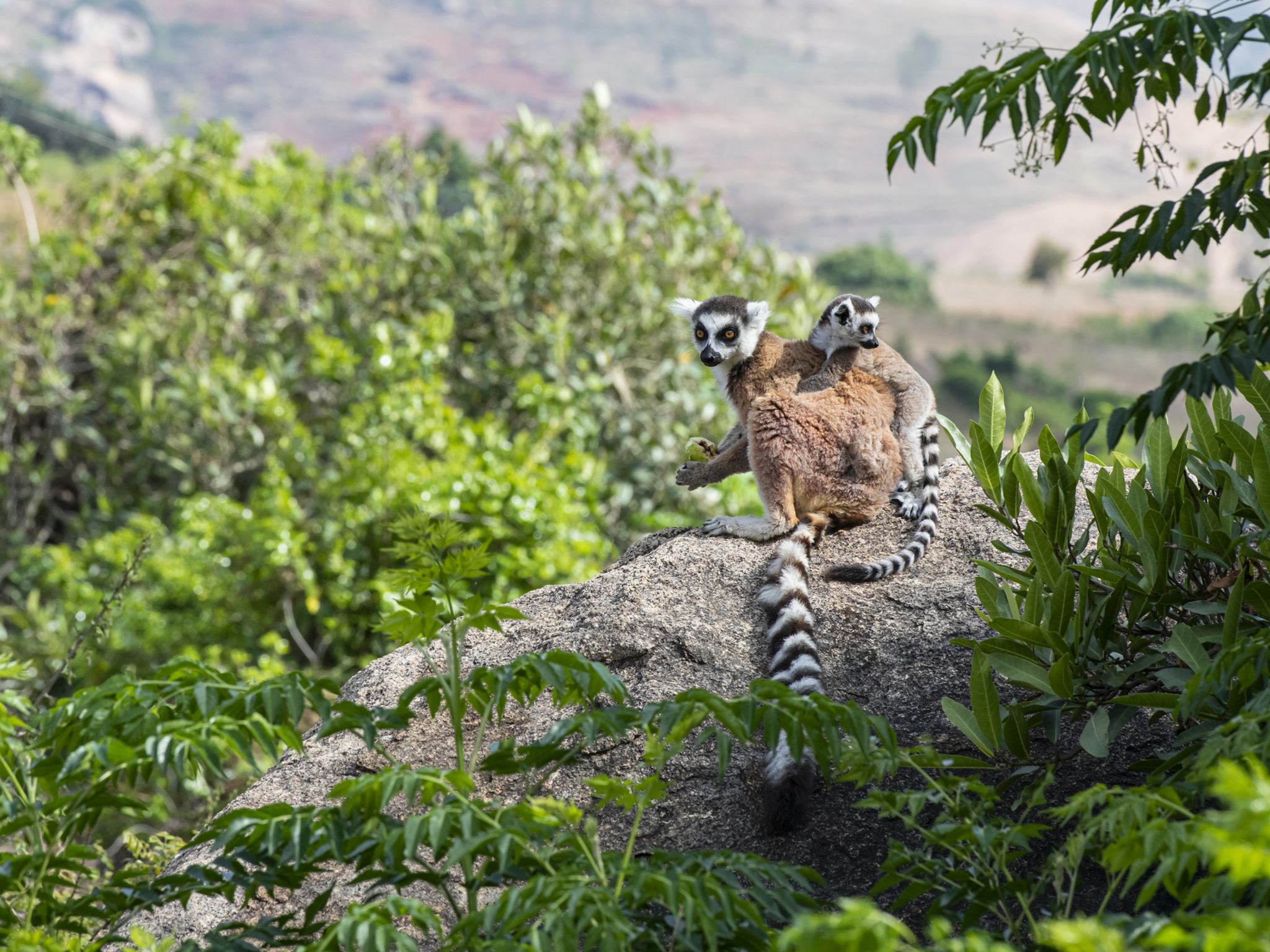
Sign up to Simon Calder’s free travel email for expert advice and money-saving discounts
Get simon calder’s travel email, thanks for signing up to the simon calder’s travel email.
With its musical name, Indian Ocean atmosphere, French connections and faintly bizarre animals and plants, Madagascar is genuinely unique. Even its baobab trees offer a lesson in biodiversity: while mainland Africa makes do with a single species, Madagascar has six.
This remarkable island nation is scattered with precious fragments of tropical forest where frogs chirp, chameleons wobble and helmet vangas flash through the trees. But it’s the lemurs, of course, that shine out: with their foxy faces, bright eyes and fluffy fur, they’re the creatures that everyone wants to see. Happily, Madagascar’s best nature guides have an excellent knack for finding them.
Travel restrictions and entry requirements
Visitors from the UK can obtain 30-day tourist visas for free on arrival at Ivato International Airport, Antananarivo. Since 11 August 2022, arriving travellers have not been required to show proof of their Covid-19 vaccination or test status. There are no Covid-related restrictions in place in Madagascar.
Read more on Africa travel :
- Tanzania travel guide: Everything you need to know
- Welcome to ‘The Last Eden’: Will Gabon become Africa’s new ecotourism hotspot?
- How to safari in Botswana on a budget
Best time to go
May to November brings the best, driest weather, with temperatures hovering around 20-25C by day and 10-15C by night; perfect for forest walks. To spot baby lemurs and see birds in their brightly coloured breeding plumage, arrive between September and November. For humpback whale-watching around Île Sainte Marie, July and August are best.
If escaping the crowds is your priority, you don’t melt in the sun and you’re focusing on the arid south (or are prepared to contend with serious downpours further north), the hot, quiet months of January to March are worth considering.
Top cities and regions
Parc national d’andasibe-mantadia.
Imagine a rainforest, and it’s sure to look something like Andasibe-Mantadia: a shady green jungle of ferns, waterfalls and mighty hardwood trees, their branches looped with vines. It takes around three hours to drive here from the capital, Antananarivo, a journey that offers glimpses of the rural poverty that drives Madagascar’s conservation woes. But while many hectares of forest outside the park have been cleared for fields and timber plantations, Andasibe-Mantadia is hanging on. Local guides will lead you along dappled paths in search of sifakas, bamboo lemurs and indris, the large lemurs whose howls reverberate through the trees.
Popular with French and Italian tourists, the ylang-ylang scented island of Nosy Be (pronounced Noosh Beh ) has the kind of sandy, palm-fringed shores that lovers of beach holidays dream of. Despite having a greater concentration of hotels than anywhere else in Madagascar, it hasn’t lost its character. During the four-day Festival Donia in May or June, the island is at its liveliest, with local bands strutting their stuff. There are mouse lemurs, zonosaurus lizards and other rainforest creatures here, too, in the Lokobé Reserve.
Parc National d’Isalo
A target for travellers overlanding from Antananarivo to Tuléar in southwest Madagascar, Isalo National Park is laced with inviting hiking trails, leading through monumental, Jurassic-era landscapes. Striking rock formations, apparently assembled by giants, dot the plateau, among sandstone cliffs and canyons. Although rain falls relatively rarely, streams gurgle through the park, filling swimming holes and sustaining fire-resistant palm trees.
Allée des Baobabs and Kirindy Private Reserve
Strikingly photogenic, Morondava’s famous avenue of baobab trees is an icon of Madagascar – as is the mysterious fossa, an elusive, short-haired mammal that’s related to the mongoose, but looks like a cat-dog hybrid; fans of the Madagascar movies know them as King Julien’s evil enemies. You can track them in the dry, deciduous forest of Kirindy Reserve, where giant jumping rats and pygmy mouse lemurs are also found.
Réserve Privée Berenty
If your heart is set on capturing close-up photos of Madagascar’s perkiest, quirkiest primates, head for Berenty. Cavorting along the footpaths and around the grounds of this long-established primate research centre are ring-tailed lemurs with curious expressions and long stripy tails, plus Verreaux’s sifakas, goofy lemurs with a dancing gait. It’s not the most natural of settings, but it’s an enchanting place to spend time.
Best under-the-radar destinations
Parc national de masoala.
Breathtakingly remote but well worth the effort it takes to get here, Masoala National Park in northwest Madagascar is a vast swathe of coastal rainforest, crammed to the treetops with life. Tuck yourself away in a delightful little eco-lodge, and you can design your own mini-adventures – kayaking along quiet creeks with bird book at the ready, or spotting chameleons in the foliage hanging over the beach. With a nature guide, you can head deep into the forest by day or (even better) after dark, for close encounters with red ruffed lemurs, lizards and frogs.
Île Sainte-Marie
Far quieter than Nosy Be, with just a smattering of places to stay, the unspoiled island of Sainte-Marie, also known as Nosy Boraha, was a pirates’ refuge in the 17th and 18th centuries. It’s now better known as a refuge for whales: in late June each year, migratory humpbacks arrive from Antarctica to raise their calves in the calm waters between Sainte-Marie and mainland Madagascar. Local conservation organisation Cétamada, which is working in partnership with marine biologists to protect the whales and their habitat, can advise on how to watch whales by boat without harming them.
Tsingy de Bemaraha
The eerie but strangely beautiful expanses of grey limestone karst pinnacles, needles, crevasses and caves found in northwest Madagascar are Unesco World Heritage listed. They’re known as tsingy , which, aptly enough, means ‘place where you can’t walk’, but the locals have solved this problem by creating steps, trails, rope bridges and walkways, allowing fit and agile hikers to negotiate the spiky labyrinth of stone. Unexpectedly, perhaps, sifakas and woolly lemurs eke out an existence here, as do a great many species of birds, including buttonquails and harriers that are unique to Madagascar.
Best things to do
Lemur-watching.
Madagascan primates have been evolving in isolation for more than 60 million years – long enough for them to bear little resemblance to monkeys, apes and humans. They’re mostly forest-dwelling and tragically, due to rampant logging, their habitat has dwindled to isolated pockets. One of the best ways to help reverse this trend is to visit national parks and community reserves as a paying ecotourist. There are over 100 species to discover. On guided forest hikes, you’re sure to find some, leaping through the trees or staring charismatically into the distance.
Nocturnal nature walks
If your heart is pounding at the mere thought of walking through a tropical forest after dark, relax: Madagascar is one of those magical places where dangerous animals are to all intents and purposes absent. Gear up your courage, grab a torch and follow your guide: your reward will be a sneak peek at a secret world. Scanning the trees for eyeshine and listening out for calls, you may encounter dwarf lemurs, comet moths, scops owls and perhaps the theatrically named satanic leaf-tailed gecko. Fascinatingly, you’ll also spot roosting birds, snuggled on branches; conscientious guides will make sure you don’t disturb them.
Getting around
Madagascar is the world’s second largest island nation, with spectacularly diverse landscapes. Many visitors book a guided tour of the highlights with transport included, but it’s also possible to travel independently.
Since distances are considerable and many of Madagascar’s rural highways are in a lamentable condition, the best way to cover several regions is to hop around with Air Madagascar. Unfortunately, they’re notoriously unreliable, changing flight times and dates with minimal notice; prepare accordingly.
On the ground, public transport tends to be rickety and crowded, so hiring taxis for short outings and renting a vehicle with a driver/guide for longer trips is a good investment.
How to get there
Madagascar is in the Indian Ocean, off Africa’s eastern coast. For all but the hardiest of sailors, the only practical way to arrive is by plane.
There are no direct flights from the UK to Antananarivo at present. The cheapest route is with Kenya Airways, flying via Nairobi in 19 hours. A faster alternative is Ethiopian Airlines, flying via Addis Ababa in 14.5 hours.
Money-saving tip
Airlines, tours and hotels offer low-season rates between mid-January and March. Weather-wise, this can be a challenging time to visit, with heavy rain drenching the centre and north, and cyclones battering the east coast. However in the south, rainfall remains low all year round.
What’s the weather like?
Tropical: humid in the northeast, arid in the southwest and temperate in the central highlands. The coolest, driest months are May to October.
What time zone is it in?
What currency do i need.
Malagasy Ariary (MGA). Tourism businesses accept ariary and euros. You can change pounds sterling at banks or withdraw ariary from ATMs.
What languages are spoken?
Malagasy and French. Tourist guides speak multiple languages, including English.
What health precautions should I take?
Consult your GP about anti-malarials and vaccinations.
Read more on the best winter sun hotels
Join our commenting forum
Join thought-provoking conversations, follow other Independent readers and see their replies
Subscribe to Independent Premium to bookmark this article
Want to bookmark your favourite articles and stories to read or reference later? Start your Independent Premium subscription today.
New to The Independent?
Or if you would prefer:
Want an ad-free experience?
Hi {{indy.fullName}}
- My Independent Premium
- Account details
- Help centre

Madagascar travel guide | 3-week Itinerary
- August 2, 2023
Welcome to Madagascar travel guide, a 3-week itinerary to this magical island of natural wonders.
We recently visited the Red Island of Madagascar, which proved to be one of the most challenging, adventurous, and unique destinations we have ever travelled to. Planning our trip was tough due to the notoriously bad roads, and it often took us days to get from one place to another. We couldn’t risk driving at night, as it was considered highly dangerous. Therefore, we had to rely on daytime travel, which made our journey even more challenging.
It was really hard for us also to decide which places we will pass on or which we will invest in long hours and sometimes days of driving.
When in Madagascar, communication can be tricky for English speakers as the main languages spoken are Malagasy and French. Ordering something as simple as water can be difficult, and it was a big challenge to express ourselves effectively.
However, despite all these challenges, Madagascar has rewarded us with stunning views, spectacular untouched nature, amazing tropical beaches, rich wildlife, and experiences.
As one of the megadiverse countries in the world, we got to see unique animals in their natural habitats and flora that can be found only on the island.
Madagascar is also one of the poorest countries on the planet, which exposed us to the harsh poverty of the locals. But also allowed us to experience a place that hasn’t been touched by time or progress, where people still live with the old traditions and lifestyle.
Do you want to know more about what are the best places to see in Madagascar? What not to miss in Madagascar? How to plan your Madagascar trip? Here are our experiences and tips for Madagascar travelling.

Is Madagascar a safe country to travel? – Madagascar travel guide
As always, before we go travel, especially to third-world countries, we hear a lot of scary stories. Madagascar wasn’t exceptional. We heard about gangs with axes lurking on the roads, evil mosquitos with malaria, and poor street kids who will rob our phones in a flash of an eye.
Luckily for us, we didn’t experience any of the above. During our 3 weeks in Madagascar, we didn’t see any kind of violence or felt threatened. Having said that, we always consulted the locals, on which places are dangerous, where not to go, and what to expect. Most of the time we were advised not to walk or drive at night, and in the big cities to take extra watch for our valuables.
Visa + Vaccinations + Water – Madagascar travel guide
All foreign visitors to Madagascar require entry visas. For tourism purposes, you can get a tourist visa with a validity for staying in the country of 30 to 60 days maximum. The requirement for the visa is a valid passport with a validity of more than 6 months and a flight ticket showing the dates of entry and exit to Madagascar. You can apply for an entry visa online or at the Antananarivo airport after departure. The procedure is very simple and will cost you around 35 euros.
It is recommended to be vaccinated against yellow fever.
Water in Madagascar is considered not drinkable for foreigners, it is advised to strictly drink from sealed water bottles. We recommend also avoiding tap water when brushing the teeth and being careful in the shower, not to get water in the mouth. Also, be careful with washing the fruits.

When to travel to Madagascar? Madagascar travel guide
The best time to visit Madagascar is during the dry season, between April and November. During the dry season you can enjoy comfortable temperatures of an average of 20 to 25 Celsius, and most important avoid heavy rains. During this season the roads are more accessible, and daylight is longer.
Between December and March, which consider the wet season, heavy rains and typhoons are expected, roads will become inaccessible, and fewer opportunities to watch the wildlife.
We went at the early beginning of December and still enjoyed good weather and to our surprise barely saw rain. We also enjoyed cheaper prices as the main tourist season was over. For us it was perfect, but we wouldn’t recommend going any further than that.
Money in Madagascar – Madagascar travel guide
The official currency of Madagascar is ‘Ariary’. The money banknotes vary from 100 to 20,000 bills. There are almost no ATMs and exchange offices in Madagascar. We recommend withdrawing extra money during your stay in the capital of Antananarivo.
Exchange rates at the airport are very high, so we advise you to just cash out from ATMs (which can be found at the airport) as much as possible. Credit cards are rarely excepted, but can be used in some hotels and fancy restaurants.
Where to stay in Madagascar – Madagascar travel guide
We booked some of our accommodation in advance through Booking. Most of our rooms were basic and budget-friendly, but we also spoiled ourselves with fancy places, especially at the beach areas.

The biggest accommodation problem in Madagascar was that many places that we visited didn’t exist on Booking. We had to help ourselves with guidebooks and tips from the internet.
Transportation in Madagascar – Madagascar travel guide
As backpackers, we usually like to explore and experience the place we travel to by public transportation. To feel the vibe of the locals and mingle with them. Unfortunately in Madagascar (unless you are a masochist) this is out of the question. The roads in Madagascar are so bad, you can spend days getting to your destination even if it is considerably close.

The public transport is also quite a mess, you can’t rely on the timetables, and the drivers will fill people in the vans with no consideration for comfort or logic.
Like most of the travellers, we met or talk with, we rented a 4X4 jeep with a driver, which was a bit pricy (35 € a day). But worth every penny! Not only for the comfort and safety but also for having a local with us, who served also as a guide which enriched our experience.

Due to the massive size of Madagascar, there are also domestic flights. We used it once from West Madagascar (Toliara) back to Antananarivo to save some time and avoid driving back. Unfortunately, most of the flights are quite expensive and were off our budget.

Food in Madagascar – Madagascar travel guide
Most food of Madagascar revolves around rice, the main agricultural crop of the island. The Malagasies eat rice during all meals of the day in different variations and flavours. The main protein of their diet comes from local beans and the ‘Zebu’. A humped-look-alike cow that can be seen throughout all of Madagascar.

Along the coasts of the Island is common to find fresh fish and seafood. For more about food in Madagascar click here.
Madagascar travel guide 3-week Itinerary
Antananarivo (days 1-2) – madagascar travel guide.
The capital of Madagascar was our first introduction to the island. Even though we are experienced travellers, who’ve spent a long time in India and South America… Nothing has prepared us for this crazy hectic city.
As we started exploring the town and got to the centre, both of us got into a culture shock. Seeing the masses of people, the smells, and the noises.
Everywhere we looked something was happening. The eyes of the locals were scanning us with curiosity and poor beggar kids were following us asking for money in a language we did not understand. Not for the faint-hearted.
The main attraction of the city for us was the Analakely Market. A huge and chaotic shopping area, covered with vendors, stalls, and shops offering colourful food and products of Madagascar.

We were multiple times warned to keep our phones as many pickpockets are waiting for the grab. To escape a bit from the crazy crowd we hike to one of the hills, where we got a nice panoramic view of the city. The capital city was a good place to exchange our money and arrange through the agency a driver for our travel.
CLICK HERE and read more about Antananarivo.
Antsirabe (day 2-3)
After getting introduced to our driver, we started driving towards our second destination. As we exit Antananarivo, we started to witness the beauty of Madagascar’s nature and views. Passing endless green rice fields, dark red soil, and bright blue skies. The construction of the colours was amazing.
We got to Antsirabe around noon and went to explore the third-biggest city in Madagascar. The city is packed with rickshaws drivers, some on bicycles and some on foot and it’s one of the main attractions of the place. After being offered a ride by endless people, we took a short drive along the city’s main road and enjoyed the unique vibe.

Even though it’s a city, it was so different from what we are used to in Western countries. It was a first glimpse of an African town, with dirt roads, small houses, and basic stalls and shops along the roads. At night time, the city was in complete darkness and we spent the evening at our hotel.
Ambositra and Ranomafana National Park (day 3-5)
In the morning, we started our journey toward the tropical Ranomafana National Park. After a few hours of drive passing small villages and more of the majestic nature of Madagascar, we stopped in Ambositra where we had lunch and went for a short hike around the city. We enjoyed checking out the many stores that offer wood-carving arts which is what the place is known for.

After Ambositra we continued the journey to the Ranomafana Park, passing many villagers along the roads, offering bananas, lychee, and plums. The more we got closer we notice the change in nature, becoming more and more green, tropical, and a true jungle feeling.
As we went up also the climate changed and for the first time we experience rain in Madagascar. We arrived afternoon at the park and went to our quite fancy accommodation, just a 5-minute drive from the main entrance.
Our spacious wooden hut was equipped with a huge bed and all the comfort accessories a room can have. We also got an amazing view of the jungle just in front of us.

This accommodation was one of the highest we spent on a room. Later we discover a small village close by that offer much cheaper prices but wasn’t on booking so we couldn’t know.
The next day we got up early and went to explore Ranomafana National Park. The park is famous for its many species of lemurs, mushrooms, plants, and flora.
We took the long hike which was around 6 hours, passing through rain forest full of life. We were lucky enough to spot 8 different kinds of lemurs in their natural habitat.

In the evening we went for a night walk with a guide to spot the cute mouse lemurs and many chameleons.
To read more about Ranomafana National Park click HERE .
Ambalavao and Anja Park (days 5-7) – Madagascar travel guide
As we were heading more towards the South of Madagascar, we notice a change of nature. From the green rain forests to more dry scenery with impressive huge rocky mountains and massive scattered boulders. Ambalavao was our base point to visit the much anticipated Anja Park.
On the first day, we walked along the only main road of the city. We mingled with the curious locals who were not used to seeing foreigners and admiring the mountains that surround the town.

The next morning we drove to Anja Park which turned out to be one of the highlights of the trip. The park is evolved around massive mountains and cliffs and offers different hikes to choose from with various difficulties.
During our hike, we had the chance for a close-up meeting with the beautiful ring-tail lemur’s pack, huge sleepy chameleons, and exotic birds. We also walked through caves, and cliffs and got almost to the top of the mountain with an amazing view of the area.

A must-visit in Madagascar!
For more about Anja Park CLICK HERE .
Isalo National Park (days 7-9)
The more we were heading toward Isalo, the more we got the feeling of complete wilderness. There was nothing on the roads but endless dry white fields, the blue sky, and our car. Occasionally we saw lone shepherds hoarding their Zebus on this wasteland and sometimes even a burial ceremony of the local villagers.
We got also to see the infamous Sapphire mining areas with its pop-up towns, where u can see how rich foreigners take advantage of the poor locals.
When we arrived at the Isalo National Park area around noon, it was the only place we haven’t booked accommodation in advance. The reason was, we knew about wild camping options inside the park, but couldn’t find any detailed information online. Second of all, around the park several resorts are quite expensive (and not just by Madagascar standards).
After consulting with our driver, we decided to go to Ranohira, the closest town to Isalo. There we found a lovely friendly budget hotel with cute clay huts and a panoramic view of the park.

Visit the park
The next day we got up early and headed to the park entrance where we paid the fees and local guide for the hike. We walked for about 8 hours, admiring the sandstone landscape of cliffs, canyons, plateaus, and natural swimming pools. Our guide was extremely knowledgeable and showed us many unique plants, insects, and flora of the park. He also explained to us the history of Isalo and the local community.

Towards the end of our hike, we arrived at one of the camps (there are 2 different camping sites) of the park and felt a bit of regret not staying for the night. The camp is located in the middle of one of the canyons and it’s probably quite an experience to sleep there. Close to the camp we also saw for the first time the cute sifaka lemurs, and spend at least half an hour taking pictures and enjoying their company.

At the end of our Isalo experience, our guide took us through an amazing water stream path towards 2 beautiful pools where we could splash in the water and cool down from the heat.
Isalo National Park blew our minds, and if we had more time we sure stay more in this Malagasy gem. After the hike, we learned about the camps and prices and the hiking options the park has to offer. We highly recommend giving this place at least 3 days if not more.
CLICK HERE to read more about Isalo Madagascar.
Mangily (days 9-11)
After spending hasty days driving from one place to another, exploring the mainland of Madagascar, it was our time for some relaxing beach time. Our original plan was to stay at Toliara, the capital of the SouthWest coast region. But the city looked very crowded and hectic which wasn’t what we envision for our chill-out.
Our driver suggested we go to Mangily, which is about 25 km from Toliara. This cute fisherman village was exactly what we were looking for. Beautiful huts located on the shore, spacious hammocks, and green palm trees.

During our three-day stay in Mangily, we relaxed and indulged in fresh seafood and cold beer to rejuvenate our fatigued bodies from the tiring journey. One morning, we decided to go on a snorkelling excursion to explore the coral reefs nearby. However, the experience turned out to be a letdown as the reef was devoid of colours and life, likely because of overfishing and climate change. Moreover, the activity was excessively expensive.
In Mangily we also had to deal with quite annoying souvenir sellers who just didn’t leave us to be even after politely saying no. But having said that, we loved Mangily very much and highly recommend it if you travel to the area.
To read more about Mangily CLICK HERE .
Antananarivo (day 11-12)
To save time, we took a 45 min domestic flight from Toliara airport back to Antananarivo. There we spent 1 night before starting our journey towards ll Sainte-Marie island. On the next morning, we headed to the Taxi-Brousse station, where we took a shared van to Toamasina.

Toamasina (day 12-13)
We arrived in Toamasina after a brutal drive of more than 10 hours, passing quite bad bumpy roads and traffic jams. Not recommended will be an understatement.

Toamasina is a port city where most tourists come to take a boat or ferry to the Island of Nosy Boraha (ll Sainte-Marie). There is nothing special about the city besides its hectic vibe and crowded roads of rickshaws, cars, people, and farm animals running free.
Nosy Boraha – Ile Sainte Marie (days 13-18)
At 4 am, we reached the ferry agency in Toamasina and waited for three hours before being transported to the beach in vans. The journey was uncomfortable and lasted over two hours, made worse by the drivers cramming more people into the already-packed vans along the way.
The boat ride was also around 3 hours and when we arrived on the island we were completely exhausted. All these hard 2 days and journeys on the roads and the sea took the wind out of our sails. However the reward was well worth it, Ile Sainte Marie was revealed to be paradise on Earth.
Arriving at our Accommodation – Madagascar travel guide
From the port of the island, a driver of our resort came to pick us up and brought us to one of the most beautiful and welcoming accommodations we ever experienced. As we arrived, immediately all the stress and pain of the long travel dissolved.
We were greeted with fresh coconuts and delicious sandwiches and got escorted to our amazing spoiling bungalow one step away from the water.

During our stay on the island, we rented a motorbike (the main transport) and drove along the beautiful coastline of Nosy Boraha. Stopping from time to time for a quick deep in the sea. For watching waterfalls and seeing the local vibes of the islanders.
The island culture is quite different from Madagascar. We could see that people are more chill and happy with their life. One day we saved to go and check out Île aux Nattes, an even tinier island on the South of Nosy Boraha.
From the South point of the island, we took a small taxi boat towards the island, and what can we say it was just getting more and more pretty. The uniqueness of the island is in its natural state, u could almost feel Robinson Crusoe. Besides some very few hidden restaurants and resorts, there is nothing but palm trees, white sand, and the most crystal turquoise water.

Toamasina (day 18-19) – Madagascar travel guide
Boat number one.
Returning to Toamasina proved to be a great adventure for us. We woke up at 3 in the morning and headed to the port to catch our ferry back to the Madagascar mainland. Unfortunately, upon arrival, we found out that the boat was delayed due to bad weather and wouldn’t be departing until the following day. We felt frustrated and unsure of what to do.
At last, a stranger came up to us and proposed to sell us a boat from another port on the island at a reasonable cost. With limited options, we accepted the offer. However, the boat we ended up with was incredibly tiny and navigating through the rough waters and stormy conditions proved to be quite terrifying.
Dirt Bike Ride
After one hour we arrived at an abandoned beach, thinking a van will pick us up to Toamasina, but no van was in sight. People with motorcycles came to us and offer a ride to the next village. Without any other choice, we went on the bikes and drove with them at crazy speeds through dirt roads and rural villages.
2 More Boat Rides
Eventually, we got to a river and had to change to canoes, to take us further. We cruised on a beautiful backwater, surrounded by green nature listening to the local radio of the canoe captain.
A Horrible Endless Van Ride
Once we passed the backwaters, we made our way to Tanambao village to look for a taxi van that could take us to Toamasina. However, we were taken aback when the driver informed us that the journey would take more than 8 hours. The ride turned out to be even more unpleasant than the one from Antananarivo. We had never before been in such a cramped van with so many people that we couldn’t even move a finger.
We arrived in Toamasina at 9 pm. Destroyed, tired, dehydrated and hungry. It was probably the hardest journey we had in Madagascar and probably in all our travels.
In conclusion, we don’t recommend doing what we did. If Ile Sainte Marie is a must for you, please invest extra money and take the direct plane from Antananarivo.
Antananarivo (day 19-20)
Like the road toward Toamasina, also the drive back was long and exhausting. We arrive only at dark to the capital. The next day we just chilled in our hostel. We hung out with other travellers and ate some Italian food after so long time of basic rice.

We also wanted to do our shopping but unfortunately, it was Christmas Day and also Sunday so everything was closed. We had to go home empty-handed. In the evening we took a taxi to the airport and flew home. Exhausted, but happy.
Madagascar – travel for real adventurers
Madagascar is not a ‘walk in the park’. The roads can drive you to insanity. Without knowing at least a bit of French you will find yourself lost in this huge island.
But, Madagascar will give you thrilling adventures, majestic nature, out-of-this-world views, and unique animals you won’t see anywhere else. After traveling for so long and so many countries Madagascar will defiantly enter our top 5 destinations in the world.
You Might Also Like

Ranomafana national park Madagascar

Madagascar Food | What food to try in Madagascar

What to do in Antananarivo | Madagascar Capital City
Leave a reply cancel reply.
The Ultimate Madagascar Itinerary for 2 weeks

When you think of Madagascar you will probably picture idyllic beaches, massive baobabs and funny dancing lemurs, but on top of that you will cross high mountains, country sides, amazing canyons, beautiful rainforests, limestone rock formations and a lot more. When you travel to Madagascar you will see it is an island of passion with surprisingly diverse landscapes, cultures and traditions and very rich and endemic flora and fauna, a Treasure Island waiting for you to be discovered!

In this Madagascar travel blog I will share the best things to do in Madagascar, tips on where to stay in Madagascar and an amazing Madagascar itinerary to make the most of your trip. Start planning your trip with this travel blog.

you may also like...

Our Madagascar trip
We explored this beautiful island in 23 days. We started with a relaxing 10-day North Madagascar itinerary along the coast. Then explored the Avenue of the Baobabs and Kirindy Forest in West Madagascar and continued our journey to South Madagascar with a road trip along the scenic RN7.

The journey along highway 7 included some of the best places to visit in Madagascar like: Lake Tritriva in Antsirabe, the rainy Ranomafana NP, the serene and peaceful Lake Sahambavy near Fianarantsoa, Anja Reserve with its ring-tailed lemurs, the beautiful peaks of Andringitra National Park, Isalo National Park and Zombitse National Park.

When planning a trip to Madagascar keep in mind that even within 23 days we didn’t manage to squeeze in all the best things to do in Madagascar, but many of Madagascar’s highlights from North to West and South Madagascar were included in our itinerary.

After seeing the best of Madagascar with its great biodiversity I understand why this 4th largest island in the world is also called the Eight Continent, Rainbow Island or the Red Island. Visit Madagascar as soon as you can, you will not regret it.

Remote River Expeditions Madagascar (RRE) is a small, experienced tour operator offering high quality and personalized services. We travelled in 4WD with a skilled driver and an English-speaking guide with a huge knowledge of the Malagasy nature, culture and history. Because of Stella, we learned a lot about this ‘red island’ and that definitely made our Madagascar trip complete.

RRE is able to customize your Madagascar itinerary to your wishes and needs, from a 1-day tour in Morondava to a 1-week itinerary in West Madagascar or for example a complete 4-week Madagascar itinerary to discover the best places to see in Madagascar. We had a great experience and I would highly recommend contacting Remote River Expeditions if you’re planning to travel to Madagascar. I got in touch by mail and we had quick and reliable communications until our arrival. Their office is located at Chez Maggie, a great property in Morondava that also belongs to the owner of Remote River Expeditions .

Our Madagascar Itinerary
This 2-week Madagascar itinerary includes our route from West Madagascar along the national highway 7 to Tulear. We drove about 985km, excluding the drives inside national parks and detours to hotels. Because of the constantly changing landscapes and presence of several national parks and reserves along the way, the RN7 or Route Nationale 7 is the most popular tour in Madagascar and not to be missed if you travel to Madagascar.
Planning a trip to Madagascar then also take a look at the beautiful archipelago Nosy Be in the North of the country. For my all my North Madagascar travel tips click on the link.

This is the best 2-week Madagascar itinerary possible
Antananarivo - 1 night
- Morondava and Kirindy Forest Reserve – 3 nights
Miandrivazo – 1 night
Antsirabe – 1 night.
- Ambositra - stopover
Ranomafana National Park – 1 or 2 nights
Fianarantsoa and sahambavy - 1 or 2 nights.
- Ambalavao and Anja Reserve - 1 night or stopover
- Isalo National Park - 2-3 nights
- Zombitse-Vohibasia National Park - stopover
Tulear (Toliara) - 1-3 nights
Antananarivo (tana) - 1 night.
You can either start your road trip along the national highway 7 in Antananarivo or from for example Morondava in West Madagascar. Because we first explored Northern Madagascar, we decided to fly to Morondava to start the RN7 road trip from there. From Diego-Suarez in North Madagascar there are no direct flights to Morondava, so we had to bridge 1 night in the capital city of the country.

We even had some time left to explore Tsarasaotra Bird Park, close to Antananarivo airport. The domestic flights are operated by Madagascar’s local airliner Tsaradia, a subsidiary of Air Madagascar.
Where to stay in Antananarivo?
I had two domestic flights to Antananarivo during my Madagascar trip. The second time I flew into Tananarive I stayed in the beautiful San Cristobal Boutique Hotel only 4 km from Ivato Airport in Antananarivo. San Cristobal Hotel offers a nice garden, a terrace and a cosy bar with a nice seating area including a flat screen TV. The Wifi is free and worked very well; also inside the rooms!

The hotel has several art-works like photos and paintings hanging around the whole building, something I really loved. This 3-star hotel has quite big air-conditioned rooms with a flat screen TV, coffee & tea facilities and a fridge. I loved their continental breakfast with fresh eggs as well as their coffee. The employees at the reception were very friendly and helpful and made us feel at home. Since you are at Ivato Airport in no time, it’s an ideal base to catch your onward flight.
Morondava & Kirindy Forest Reserve – 3 nights
Before we started with our national highway 7 Madagascar road trip we first explored the best things to do in Western Madagascar and more specific the laid-back town of Morondava. It literally means ‘place at the beach’ and it’s the gateway to Avenue of the Baobabs .

But also tours to Kirindy Forest Reserve and Tsingy de Bemeraha National Park are totally worth it. If you visit Madagascar you can’t leave the Island without exploring Morondava. Check out the best things to do in Morondava in this link.

Where to stay in Morondava?
I highly recommend staying at Chez Maggie . For Kirindy I would advise to either stay in Kirindy Lodge inside the reserve or at Relais du Kirindy. In my blog about things to do in Morondava I also write about Chez Maggie and where to stay in Kirindy.

Miandrivazo is a village that lies on the main RN34 road between Morondava and Antsirabe. It’s a perfect stop to break the long drive to Antsirabe. Kaominina, the Malagasy name for Miandrivazo, is considered to be the warmest city of the island. Because of its geographical situation, there is almost no wind. An interesting place to add to you Madagascar road trip itinerary.
The city is situated at the Mahajilo River and the starting point for boat trips down the Tsiribihina River to Belo-sur-Tsiribihina. You can enjoy swimming near a natural waterfall and observe different animal species like lemurs, bats and chameleons.

Where to stay in Miandrivazo?
In this area there are very few places to stay. Most of the tourists will drive directly to Antsirabe or overnight in Princesse Tsiribihina Hotel . The rooms here were good and comfortable and there’s Wifi in the main building, where you can also watch TV and have a beer at the bar. There’s also a small pool to relax and cool off.

A cool Madagascar travel tip is that you can apparently walk up to the hill behind the hotel to enjoy an extraordinary panorama. The walk will take you one hour. If I knew this before, I would have left Morondava quite early instead of after lunchtime. We checked-in quite late, even too late to watch the sunset over the river, so there was nothing to see or do by the time we arrived and the next morning we had to leave early on our way to Antsirabe.

Antsirabe (literally ‘the place of much salt’) is well known for its thermal springs and therefore also called the ‘city of water’. This city is located in the central highlands of Madagascar. From Miandrivazo, it took us 4,5 hours to get there. Because of its geographical location, Antsirabe has a cool climate throughout the year; so don’t forget to pack a sweater and a pair of trousers when you visit Madagascar.

Transportation in Antsirabe
The most common transportation in Antsirabe is the colourful rickshaw or ‘pousse-pousse’, which is pulled by a man on foot or on a bicycle, the ‘cyclo-pousse’. It’s not only for tourists but also the daily transportation of local Malagasy.

It’s a fun way of exploring the city and the owners of these rickshaws are happy to earn some extra money. On the other hand I found it weird to be pulled by this friendly Malagasy man.

Things to do in Antsirabe
Antsirabe is rich in history. You will feel a strong colonial influence through the architecture of the city buildings. The most prominent buildings in town are the Cathedral Church and the charming Hotel de Thermes, in front of the baths. Another interesting architectural building is the Antsirabe Train Station, dating from the colonial period. Nowadays, they only use it for cargo transportation.

Antsirabe Crater Lakes
There are two popular natural crater lakes outside of Antsirabe town, which are worth a visit: Lake Andraikiba and Lake Tritriva. From Antsirabe it took us around 40 minutes to get there by car. There’s a parking space near Lake Tritriva and from there it will only take you a few meters to look down on the blue-opaque green Crater Lake.

Apparently there are two roads leading to these lakes: a short, but bad road and a way longer but better road. We took the shortest one and it sure wasn’t the worst road of my Africa travels.

Lac Tritriva or Lac Andraikiba? The area around Andraikiba Lake seems to be ideal for walking because of its peaceful and harmonious environment. It’s the largest lake and the closest one to town.

We only stopped there from a distance on our way to the prettier Tritriva Lake. At Lake Tritriva you’ll have to pay a guide- and entry fee of 5000 Ariary ($1,5) to enter the area.

Crafts and markets in Antsirabe
In the lively city of Antsirabe you have the opportunity to visit various craft workshops, where objects are made from for example zebu horn or natural fibber. For me, these workshops were too much focussed on tourism, but there are definitely some great artists around in Antsirabe.

To see the real Malagasy life, I would advise you to go to the local market. The Tsena Sabotsy (Saturday market) is the central open-air market of Antsirabe, a good place to discover what the local Malagasy are buying from clothes and vegetables to pots and pans. The vendors were very friendly and didn’t mind me taking their photos.

The Countryside of Antsirabe
Antsirabe’s countryside is beautiful as well! You will walk through rice fields, small villages and meet friendly locals.

Where to stay in Antsirabe?
Couleur Café Antsirabe is perfectly located near the city centre of Antsirabe, close to the RN7 road. They offer a number of individual brick bungalows, facing a lovely and well-maintained garden. There is plenty of space in the room, with a TV and fireplace and the beds are really comfortable. They offer a WIFI connection in the room, something you don’t find often when traveling in Madagascar. Their restaurant serves good food for diner and in the morning you can enjoy a buffet breakfast with fresh eggs from Antsirabe’s market.

Ambositra - stopover on your way to Ranomafana
From Antsirabe we were able to take the RN7 (National Highway 7) southwards, with Ambositra as first stop after 90 km along the Route Nationale 7. The RN7 in Madagascar is the 980 km long main road in Madagascar, connecting Tananarive (Antananarivo) to the western-coast town Tulear. A journey along Madagascar’s RN7 highway includes the most famous highlights of Madagascar.

The city of art, culture and crafts
Ambositra is famous for the quality of its marquetry, weaving and especially woodcarvings. Ambositra is home to the Zafimaniry Tribe and their houses have colourful carved wooden balconies and shutters. The woodcarving knowledge of this tribe is internationally recognized as a world treasure. In some shops, it’s possible to see the artist working on its crafts. A handy Madagascar travel tip is that on Sunday all the shops are closed. As we were there on a national holiday, all shops were closed and we sadly couldn’t find any artists at work.

Madalief | foundation for mothers and children in Madagascar
This non-profit organization with the purpose of giving underprivileged children in Madagascar a better future, was the result of a Dutch travel guide - Remi Doomernik - working in Madagascar and settling in Ambositra. In 2004 they bought a site with a house in Ambositra where nowadays still children live. Apart from that they take care of the meals of 45 children.
Madalief also helped restoring the nearby school and built two classrooms. They restored about 10 houses and more than 40 women received small loans for starting up small trade to take better care of themselves and their children. Since they couldn’t take care of more children in the home, they started supporting families around Ambositra (40 families in 2019). The foundation helps single mothers with a donation for daily needs, school fees and medical costs.

Since I thought Remi’s story was quite impressive I planned a visit to Residence Madalief in Antsirabe , 4 miles south of Antsirabe, to add this to my Madagascar travel blog. To create employment and working experience for their youngsters and single mothers from Ambositra they chose Antsirabe because of the touristic route to the south. So when you travel to Madagascar please include this in your itinerary.

The site offers a hotel with 11 rooms for tourists and also a youth hostel, where they welcome groups of children from other orphanages and foundations as well as their own children, to give them nice holidays for little money. We stayed an extra night in this Residence, located in a beautiful area in the middle of the rice fields.

Visit their website if you want to know more about this foundation and all of their projects and achievements. It’s definitely worth to stay in Residence Madalief on your Madagascar trip and it’s good to know that your money is spent well.

When you continue the RN7, you need to take the RN25 to Ranomafana through the Betsileo highland region. Hills and rice fields are part of this landscape. The roads are curvy and close to Ranomafana a bit dangerous depending on the weather conditions; road verges can be very soft or roads can even be closed after rain.

The popular Ranomafana Park is part of the eastern rainforest, which used to take up nearly the complete island. Rano means ‘water’, and mafana means ‘hot’, referring to the many hot-water springs, in this area. Ranomafana is classified as a UNESCO World Heritage Site and became a protected area in 1991 after the discovery of the golden bamboo lemur in the rainforest in 1985. Definitely one of the best places to visit in Madagascar. Ranomafana National Park is known for its tropical rainforests, humid climate, waterfalls, hot mountain streams and different species of Madagascar wildlife.

This large rainforest is home to 12 lemur species. Lemur comes from the Latin word ‘lemures’, which means ‘ghosts of the forest’. Seeing the lemurs up close requires some effort. You’ll need to hike off the beaten path into the forest with an experienced guide to spot them in the treetops. Apart from the golden bamboo lemur, you may spot some other lemur species like the rare Aye-Aye, the Sifaka or the mouse lemur. Other wildlife includes chameleons, frogs and the Malagasy striped civet. Ranomafana National Park is also a paradise for birders!

The entrance of Ranomafana National Park is located on the national road RN25. For the budget travellers: It is possible to get a taxi-brousse (shared taxi bus) directly from Antananarivo or Fianarantsoa, but there is no transportation between the park and the village of Ranomafana.

Things to do in Ranomafana
Ranomafana offers a lot of activities, but because rainforests are subject to heavy rainfall, the weather can ruin your activities. During our stay we had heavy rains all-day long and there was a lot of fog. Even inside the rainforest (where trees and plants provide some shelter) it was almost impossible to take pictures.

It is highly recommended to pack water-resistant clothes that cover arms and legs when you visit Madagascar, as well as anti-mosquito gels that will keep mosquitoes and leeches away.

Hiking or trekking lovers will love Ranomafana rainforest and its mountain ranges! There are many different hiking circuits that vary in length and duration. Some of the best hiking In Madagascar can be found here. Apart from the hiking, you can enjoy a swim in Ranomafana’s thermal bath. The hot springs of Ranomafana are located across the Namorona River and are very popular among locals. It’s best to swim in the thermal bath on Wednesday, since they clean everything on Tuesday.

One of the other activities in Ranomafana is a night walk along the road – outside of the National Park – where you have the chance of spotting the Ranomafana’s five nocturnal species, including the adorable mouse lemur. The extreme weather conditions kept me from doing this activity. Near Ranomafana NP, there is a research station called Centre ValBio that is open to visitors. They work to protect Madagascar’s unique and biologically diverse ecosystems through conservation science and projects that directly benefit the local people, including rural health care delivery.
Where to stay in Ranomafana?
SETAM Lodge Madagascar is located on a slope of the rainforest, conveniently close to the park entrance of Ranomafana National Park. The lodge is situated along the main RN25 road, but completely surrounded by rainforest. For that reason, it offers stunning views from your private terrace.

It’s a very quiet and peaceful place. The cottages are aging a bit, but they are spacious, functional and comfortable. What more do you need? There’s no Wifi in the cottages but there’s occasionally Wifi in the restaurant area. The staff is very helpful and friendly and the 3-course dinner as well as the breakfast was good. I recommend staying at this lodge when visiting Ranomafana National Park.

The city of Fianarantsoa is considered to be the capital of Betsileo, located 60 km of Ranomafana. On the road you will pass some wonderful landscapes and small villages.

Most of the tourists spend one night in Fianarantsoa on their Madagascar itinerary, or to take the train to Manakara at the East Coast of Madagascar. The Sahambavy train station is close to Lac Hotel in Sahambavy, where you can also enjoy a night in a vintage train wagon! They can also help you to arrange train tickets.

Sahambavy is a small place near Fianarantsoa and apart from the train station worth a visit because of their huge tea plantations and the serene Lake Sahambavy. These beautiful tea plantations are among the best places to visit in Madagascar.

FCE Train (Fianarantsoa Cote Est)
For the adventurous traveller, the train rain ride from Fianarantsoa to Manakara seems to be one of the best things to do in Madagascar. The 163km route takes you through the rainforest, offering very scenic views. It’s the only operating passenger train line in Madagascar.

In theory, this journey will take about 8 to 12 hours (20 km/h), but in reality around 12 to 24 hours. Be prepared for train failures and bring enough water and food. It’s all about the experience and getting in touch with the Malagasy villagers who use this train to cover long distances to get from one village to another.

Therefore, the train stations are quite bustling with vendors selling food and other goods. A first-class train ticket from Fianarantsoa to Manakara will cost you 70.000 Ariary (19 dollar).

Sahambavy Lake and Tea Plantation
We didn’t overnight in Fianarantsoa on our Madagascar itinerary, we decided to make a small detour to Sahambavy, which is located 23 km from the city of Fianarantsoa. I’m still happy with that choice, since I loved to relax at Sahambavy Lake enjoying the peaceful surroundings.

Lac Hotel, which lies directly at the lake, offers different activities around the lake. They also have some water bikes you can use to explore the lake, which was great fun!

If you have a chance I recommend visiting the nearby Sahambava tea plantation on your Madagascar trip, which covers nearly 400 ha. They have a monopoly position, as it’s the only centre of farming and tea production in Madagascar. Since we visited the place on a public holiday the factory was closed and there were no Malagasy working in the field, but I liked walking around the plantation chatting with some locals.

Photographer Pierrot Men
As an avid photographer, I couldn’t leave Fianarantsoa before visiting the photo laboratory of Pierrot Men. He has been the most famous photographer of Madagascar for over 40 years. Visitors can buy his books and a huge selection of postcards and poster prints of his photo collection of Madagascar. It’s a unique souvenir to bring home when you travel to Madagascar. If you’re lucky, you can meet Pierrot in the studio. Unfortunately for us, he was at an exhibition in Paris at the time we visited the laboratory.

Where to stay in Fianarantsoa or Sahambavy
I highly recommend staying at Lac Hotel Sahambavy . Lac Hotel is a wonderful and charming hotel at Lake Sahambavy and next to the Sahambavy tea plantation. It’s also close to the FCE train station. The bungalows on tilts at the water are amazing: very peaceful, huge, comfortable and clean. We were given the so-called honeymoon bungalow, the biggest bungalow at the lake with a private terrace overlooking the lake and its surroundings.

Lac hotel Fianarantsoa is also very innovative and eco-friendly. The products they use are organic, homemade and homegrown. They have their own vegetable garden to provide quality and fresh products. The restaurant offers a European and Malagasy menu and the food is good.
Another big advantage is their agreement with the Malagasy train railway, the FCE, to give customers the best quality of service in terms of ticketing. Last but not least, they are planning to build a spa to complete your relaxing stay at Lac Hotel. There’s WiFi available in the restaurant area; it’s not working in the bungalows.

Ambalavao and Anja Reserve - 1 night or stopover on your way to Ranohira
On this part of your Madagascar road trip, you will enjoy Madagascar’s vineyards with steep-terraced slopes and typical Betsileo mud brick houses with local people working on the land.

Madagascar has several vineyards in the district around Fianarantsoa and Ambalavao. They were originally planted by French Jesuit priests and make about 10 million litres a year for the local market. Along the way you’re able to visit a winery or by Malagasy wines at local wine shops along the RN7 road. You have to try the local wine when you travel to Madagascar.

Things to do in Ambalavao
Ambalavao is situated at the Route Nationale No. 7 at 56 km from Fianarantsoa and is the most southern part of the Central Highlands of Madagascar. The city is famous for their big Zebu Market that takes place every Wednesday. You can also visit the factory where they produce Antemoro Paper. Once you reached the area of Ambalavao you will notice a change in landscapes. You cannot miss the high mountain peaks with Pic Boby (Pic Imarivolanitra) as second highest mountain of Madagascar. Pic Boby is also the main attraction of Andringitra National Park and another place to visit in Madagascar on a road trip south.

During a photo-stop along the streets of Ambalavao we met friendly Malagasy from the Betsileo tribe who were celebrating their new house. It’s a tradition like a huge house warming where all family and other villagers are invited to celebrate this event together.

They were all well dressed: men wear a traditional cover over the shoulder and women braid their hair. We were invited to celebrate with them, but unfortunately we had to continue our journey because of our planned visit to Anja Reserve or Parc D’Anja, about 13 km south of Ambalavao. The friendly Malagasy people are one of the reasons you should visit Madagascar.

Anja Reserve
Anja reserve is famous for its numbers of Ring Tailed Lemurs (lemur catta- king Julien from Madagascar film). There are 11 lemur families living in this park. Some other interesting fauna such as giant chameleons and boas also call this place home.

Anja Community Reserve is a forest, protected area and freshwater lake, situated at a rocky landscape at the feet of the ‘three sisters’ or ‘telo mirahavavy’.

Hiking in the Anja Reserve is another Madagascar travel tip. You can choose between two different circuits, but a local guide must accompany you. The shorter trail can be completed in around one to two hours and you will easily see different lemur families and the variety of flora. Depending on the time you have, you can see the natural cave(s) and climb up the rocks to a viewpoint, with stunning views of the valleys, mountains and villages.

The longer trail includes a hike to the top of the mountain at 1400 meter, where you will have a 360-degree view that includes a view of the city of Ambalavao, 13km away. This trail will take up to six hours. Be sure to wear covered footwear and bring enough water. There is a small restaurant nearby where you can have lunch before or after the hike.

Because it’s a reserve run by locals, all the profits go back to the community. Unfortunately we got the impression they wanted to take advantage of the ‘rich’ tourists by charging more money. After our walk along the short circuit, we were asked to pay extra because we walked an extra small loop.
We understand that our money is very valuable for the local community, but situations like this are not pleasant. Make sure to agree on the circuit (and the time spend on that particular circuit) before you enter the reserve.

Andringitra National Park
Andringitra National Park has been called the Yosemite of Madagascar and has been declared as a UNESCO world heritage site in 2007 and definitely a place that needed to be included in this Madagascar travel blog, although I wasn’t able to visit myself. If you love Yosemite National Park then you should definitely visit Andringitra National Park.
We were not able to add this place to our Madagascar itinerary, which is a pity because it seems to be a hikers paradise with spectacular views and a must-visit if you travel to Madagascar. Near Andringitra National Park lies the Tsaranoro Valley. You will pass this beautiful valley after a visit to Andringitra on your way to Ranohira.

When you’re heading to Ranohira, you will pass the huge impressive rocky hill called ‘Bisshops Hats’ and cross the Ihorombe plateau. The road from Ambalavao to Ranohira is a spectacular part of the famous RN7 with a lot of great photo-stops along the way to capture this beautiful landscape. I’m sure a Madagascar road trip will blow your mind.

While road tripping on this part of the RN7 I was sad we didn’t have enough time to overnight in this area to enjoy more of maybe one of the most beautiful places to visit in Madagascar. After seeing this part, I truly wish I get to chance to travel to Madagascar again to visit Andringitra National Park, Tsaranoro Valley and the surrounding areas.

Isalo National Park - 2-3 nights (trekking inside the park)
Isalo National Park is the most visited national park in Madagascar and one of the natural wonders of the country. It’s mostly known for its incredibly rugged Jurassic terrain that has been formed into beautiful canyons and gorges by eroding winds and rain. On top of these canyons you have breath-taking panoramic views. No wonder Isalo is a hikers paradise and one of the best things to do in Madagascar.

Apart from rock formations you will cross true oasis with crystal-clear water and natural swimming pools. A hike to the Piscine Naturelle and the Namaza circuit are definitely a must-see in Isalo National Park.

Isalo is also home to rare plants endemic to Madagascar. During your hikes you will discover the fire resistant tree ‘Uapaca Bojeri’ and the small iconic ‘Pachypodium rosulatum’ plant that grows between the inlets of the rocks. Wildlife lovers are able to spot different lemurs, including the dancing ring-tailed lemur, birds, chameleons and other reptiles.

Hiking in Isalo National Park
There are numerous hiking circuits in Isalo National Park ranging from easy hikes of a few hours to average or heavy multiple-day circuits including camping. Every circuit will show you parts of the amazing landscape of Isalo National Park.

We chose to do a hiking trail including a night at a remote campsite inside Isalo National Park to cover more of the park. This definitely is one of my best Madagascar travel tips for you. It’s not possible to do an overnight trip on your own! We planned our hiking trip in Isalo with Momo Trek. I highly recommend contacting them if you’re searching for a local and reliable agency for multiple hiking-days inside Isalo National Park.
Porters will carry your camping equipment and backpacks directly to the campsite. They follow a different route, so you have to pack a daypack with stuff you really need during the hike (like water, mosquito-repellent, sun cream, camera-equipment and lunch).

We chose a medium level hiking circuit, a combination of two circuits including one night of camping inside Isalo National Park. The medium hiking circuit offered different sights. The natural pools and the waterfall were unexpected oases among the rocks, where fresh water flows.

We also discovered cliffs, eroded massifs and savannah and desert landscapes. The visit of the Bara and Sakalava burials gave our tour in Isalo National Park a bit of a mystical touch. The Bara is the only tribe that is allowed to bury the dead inside the park, up to the rocks. If you are lover of history, then this is one of the best places to visit in Madagascar. Visit the temporary and sacred tomb where these bodies are held before the complete decomposition. The tomb is basically a heap of stones.

In the forest you have the chance to spot lemurs. Unfortunately we didn’t see any ‘dancing lemur’ in Isalo. If you are more into lemurs instead of the landscape I highly recommend visiting the Namaza campsite. Especially in the morning and late afternoon you’ll have a high chance of seeing ring-tailed lemurs sunbathing.

The different viewpoints, for example the climb to Namaza, were amazing with views of the valley. The different shapes as well as the changing colours of the eroded rock formations are quite interesting.

We enjoyed our packed-lunch – arranged by Momo Trek – at the beautiful natural pools ‘Piscine Noire’ and ‘Piscine Blue’ with a small waterfall, we had a freshly prepared dinner under a sky full of stars at a remote campsite and we ended our Isalo trek with a breakfast at the plateau while watching sunrise over Isalo National Park. If you are an adventurous traveller then this is another great Madagascar travel tip.

It was a truly memorable experience and one of the best ones on my Madagascar trip. Make sure to bring enough water during the hike(s), because it can get really hot in the fierce sun. Apart from some oases, the trails offer very little shade.

Trekking in Isalo with Momo Trek
The team of Momo Trek is specialized in organizing hiking and camping tours in Isalo National Park. They have been offering tours of all levels, for over 20 years. Momo Trek offers a very complete package including guide, porters, meals and camping equipment.

This experienced local Ranohira operator offers Isalo treks from a 2-hours hiking circuit to a 15-days all-inclusive hiking package including different campsites and expeditions to the remote Makay Massif. You can check the different Isalo hiking circuits on their website. If you want to see more of Isalo National Park I highly recommend a minimal of a 2-day hiking package with Momo Trek.

After a long day of hiking, the Momo Trek staff already set up our tent and cooked a great dinner. We also enjoyed some beautiful polyphonic live sung Malagasy songs by the talented staff members. I loved the combination of their cooking skills and musical qualities. The meaning and sounds of these live sung Malagasy songs made the peaceful and serene atmosphere in Isalo National Park even more special. We were the only ones on the campsite and it felt like we had the whole national park to ourselves.

I really loved the hiking experience in Isalo National Park. We had a great English speaking guide with a lot of knowledge of the flora and fauna of Isalo, Madagascar wildlife in general and the history of Isalo National Park and the history and traditions of the Sakalava Tribe and Bara tribe. Did I already convince you to go on a camping adventure on your Madagascar trip?
Isalo Window | famous Madagascar tourist attraction
A lot of people choose to do a one-day hike and visit the touristic ‘Window of Isalo’ afterwards. This is a natural window in a red rock formation that frames the sunset. Our initial plan was to visit Window rock in Isalo on our arrival day in Ranohira, but didn’t make it for sunset because we spent too much time in Anja Reserve including several photo stops along the way. I’m still a bit disappointed we didn’t make it there on time.
If I would do this again I would either choose to spend an extra night near Isalo National Park or to spend extra nights near Ambalavao or for example Andrigitra National Park to spend more hours exploring Anja Reserve and the beautiful granite peaks and views of the surrounding mountains. A lot of Madagascar tour agencies include Anja Reserve as a short stopover on their way to Ranohira, so it’s quite normal, but I felt very rushed and needed more time to enjoy and photograph all the beautiful views along the RN7 road.

Isalo National Park is must-visit when you travel to Madagascar. Because of the low tourist numbers in Madagascar, you will only see a few other tourists, especially when you’re planning to do a longer hike. Apart from hiking in Isalo National Park, there are plenty of other things to do in Isalo, like mountain biking, horse riding and wildlife watching. Because of the dry climate, the best time to visit Isalo National Park is all year-round. Don’t miss out on this stunning park, add this to your Madagascar itinerary.

Where to stay in Isalo (Ranohira)?
Le Relais de la Reine is a great option if you’re looking for a hotel between the rocks that is close to Isalo National Park. This eco-friendly hotel offers everything you need after a tough hike. They have huge and really spacious rooms and cottages with a comfortable bed and a spacious bathroom.
Le Relais de la Reine also offers a number of sport and leisure activities in a serene area. The most outstanding and exclusive sport activities are Via Ferrata (rock climbing) and horse riding. On top of that you can spoil yourself with a facial or massage at their professional therapy centre for beauty and massage. The service and kindness of the staff is amazing, very friendly and helpful. Their relaxing pool surrounded by the Isalo rocks is amazing! I would definitely stay here again on my next trip to Madagascar.

Zombitse-Vohibasia National Park - stopover on your to Tulear
On your way from Ranohira to Tulear along the RN7 I highly recommend to make a short stop at Zombitse-Vohibasia National Park. It’s one of Madagascar’s least known but most accessible National Park, located along the RN7. From Ranohira it takes 1,5 hour to reach this park.

If you are a bird lover you should visit Zombitse National Park as early as possible to have a fair chance of seeing Madagascar’s rarest endemic birds, like the ‘Appert’s Greenbul’. Apart from that, you will probably spot other Madagascar wildlife, like the Red-fronted brown lemur, the Sifaka or White lemur, the nocturnal sportive lemur, chameleons and the Standing’s Day gecko.

As you approach Tulear – the end of Madagascar’s RN7 highway – you cannot miss ‘Table Mountain’, a large flat mountain that is called the Table Mountain of Madagascar. It’s also possible to climb this mountain all the way to the top, which will only take you about 30 minutes. On top of the Table Mountain you will have a 360 degrees overview of the beautiful coastline of Tulear. The starting point to climb Table Mountain is about 10 km from Tulear.

Another thing to do in Tulear is visiting the Arboretum d’Antsokay, a botanical garden. According to experts, this botanical garden has 900 plant species of which 90% is endemic to Madagascar. They also state that 80% of these Madagascar plants have medicinal value. The Arboretum is located next to Auberge de la Table Hotel. For guests of Auberge de la Table, the entrance fee for the Arboretum is free.

Where to stay in Tulear?
Since we had to fly back to Antananarivo the next day we decided to stay our last night of this RN7 road trip in Auberge de la Table . At this place you have a wonderful view of the Table Mountain in Madagascar and it has a small swimming pool. For those who have more time to spend in Tulear (read: beach days), I would advise to continue your road trip to Ifaty; a beautiful place along the coast about 30 km north of Tulear, where you can also discover a different species of Baobab: the Fony Baobab.
Antananarivo is the largest city in Madagascar and interesting for travellers who have enough time to visit Madagascar. If you don’t have that much time, I would only stay in Tana to bridge your time between flights. In my North Madagascar Travel Blog I wrote about my short stay in Antananarivo and the Tsarasaotra Bird Park I’ve visited that is very close to Ivato Airport.

Travel to Madagascar now!
Traveling to Madagascar blew me away. It’s an amazing place on earth, with an intense kaleidoscope of nature, that I highly recommend putting on top of your travel bucket list. In this Ultimate Madagascar Travel Blog I tried to describe the best places to visit in Madagascar, but apart from these highlights of Madagascar there’s still so much to see and do on this Treasure Island that wants me to visit Madagascar again!

This Madagascar travel guide is written by travel photographer Kim Paffen , one of Traveltomtom’s talented team members with a deep-seated passion for traveling to Africa. She traveled for Traveltomtom to this beautiful country and shared all her Madagascar tips and incredible photos in this Madagascar travel blog and itinerary. Check out her Instagram account: ourplanetinmylens .

She also wrote about her North Madagascar itinerary , the best things to do in Nosy Be Madagascar and things to do in Morondava and a complete guide for visiting the Avenue of the Baobabs .
For more Africa inspiration and amazing photos of Kim have a look at her Uganda travel blog or read more about Gorilla trekking in Uganda .
I hope this travel blog and all the above Madagascar travel tips and things to do in Madagascar were helpful to plan your own Madagascar trip. Please help me in return by sharing the link of this article on the Internet. Every tweet on Twitter, pin on Pinterest or share on Facebook is very much appreciated. Also don’t hesitate to reach out on my Instagram account. I’m happy to help!
Madagascar Travel: 33 Things You Need to Know Before You Go
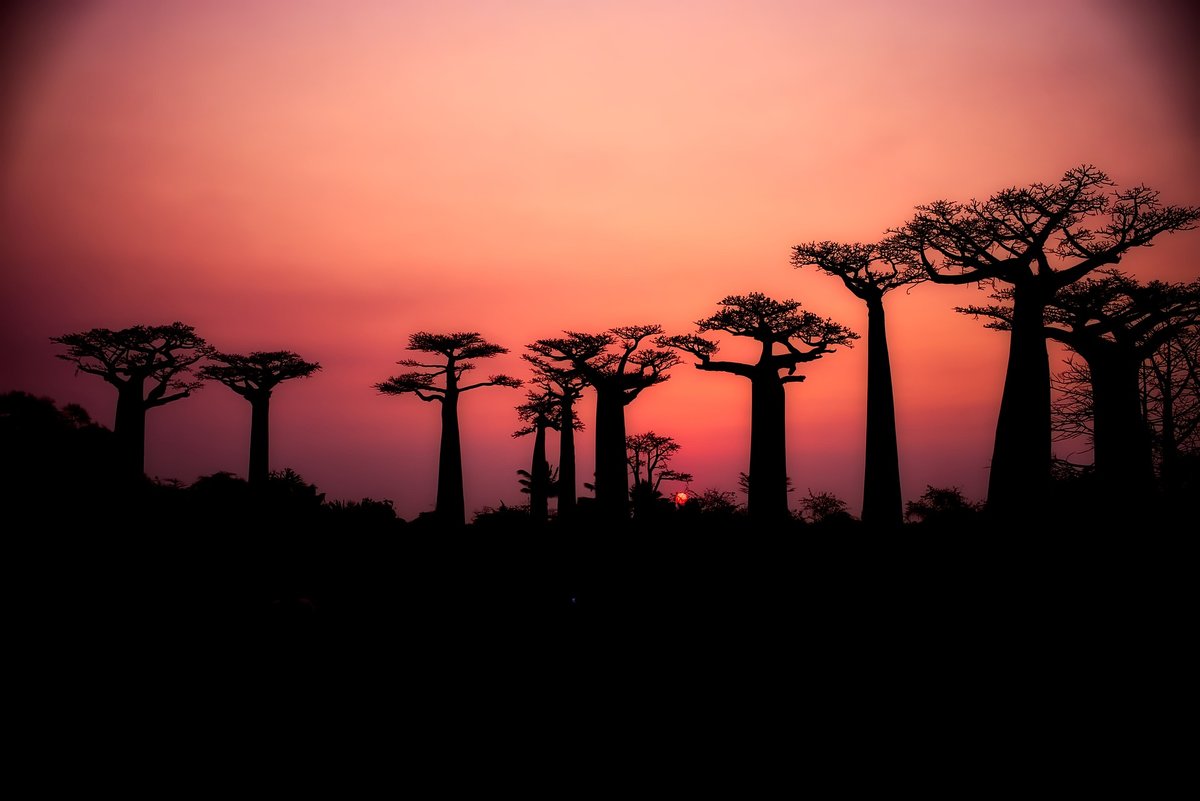
33 tips that will help you travel in Madagascar and make your time in this unique country so much more enjoyable.
Table of Contents
These travel tips are aimed to help you prepare for an unforgettable journey to this bizarre “ Red Island !” Written by an adventurer who’s spent more than a year in Madagascar, it’s the real deal.
The 33 recommendations below ( in violet ) are divided into 11 main sections ( in green ). This will make it easier for you to find the answers to a specific question.
HEALTH AND WELLNESS IN MADAGASCAR
Vaccinations to get before visiting madagascar.
- Visit a travel doctor well in advance. There are vaccinations you may need to be administered. These may take weeks to become effective. Refer to your vaccination records. Make sure you are up to date on the following: Typhoid, Hepatitis A, Hepatitis B, Meningitis, Polio, MMR, Tuberculosis (BCG) and/or Tetanus (DTP).
- You don’t need the Yellow Fever vaccine for Madagascar. However, if you plan to travel in mainland Africa on your way there, you DO need it. You will also need to provide proof of administration upon entering Madagascar if they see African countries stamped into your passport within the past 6 months.
Malaria Prevention
- You should discuss a Malaria prophylaxis prescription with your doctor. This is especially true if you are travelling between September and May. This is Madagascar’s warmer, rainier season.
- Take every day – tetracycline antibiotic.
- Pros : Least expensive, used to treat many bacterial infections (ex: urinary tract infections) and tick-borne infections. A double dose can be used to treat Malaria if someone in your group contracts it.
- Cons : Side effects may include sensitivity to the sun, increased likelihood of vaginal yeast infections, and weakened gut microbial health.
- Suggestions : Doxycycline is the prophylaxis I prefer. I just prepare for the side effects. I bring and use plenty of sunscreen and take probiotics to help my gut microbiome recover. Additionally, my doctor writes me a prescription for a burn cream (in case of sunburn), and treatment for yeast infections ( Fluconazole ).
- Take every day. It prevents the growth of parasites in red blood cells.
- Pros : Specific for malaria and also may be used for treatment.
- Cons : Relatively expensive. Its side effects may include mild stomach pain and diarrhea, headaches, difficulty sleeping, and vivid dreams.
- Take once a week. It prevents the growth of parasites in red blood cells.
- Pros : Don’t have to remember to take it every day.
- Cons : It. Has the most serious side effects. They include dizziness, severe anxiety, violent dreams, paranoia, hallucinations, depression. These nerve and psychiatric effects can sometimes last long after you stop the medication.
- Insect repellents. In addition to long pants/sleeves, they are the obvious methods of limiting mosquito bites. But they also help prevent flea bites. The bubonic plague is still present in Madagascar. It’s seasonal and rare but is transmitted through flea bites.
First Aid and Medications While Travelling in Madagascar
- You should have antibiotics , such as Ciprofloxacin. It will be useful in the event that you get a bacterial infection.
- If your burps begin smelling like sulphur and rotten eggs, you likely contracted Giardia parasites. Otherwise known as traveller’s diarrhea from contaminated water or food. Acquiring a Flagyl (metronidazole) prescription and taking this treatment once the burps start can prevent Giardia from becoming much of a problem.
- Useful over-the-counter medications – antibacterial ointment (ex: Neosporin / bacitracin), Anti-diarrheal drugs (ex: Imodium A-D / loperamide), allergy medication (ex: Benadryl ), anti-inflammatory drugs / pain relievers (ex: Ibuprofen ), antacids (ex: TUMS or Pepto-Bismol ) and rehydration tablets. Most cities will have pharmacies, but drug names and doses will likely be in French. It’s much easier to bring your own.
- You can never bring too much hand sanitizer ! Sometimes there won’t be soap available. Or you may make a bathroom stop on the side of the road. I also suggest rolls of toilet paper for the car. Our bodies aren’t familiar with the microbes in Madagascar. That makes it easier for us to get sick if we don’t remain mindful.
- Pack sunscreen and bug spray but check the ingredients list for harmful chemicals. If you’re planning to swim or snorkel in the ocean, please bring waterproof and “reef-safe” sunscreens that don’t include oxybenzone, butylparaben, or octinoxate that can bleach the corals!
- Menstrual supplies are limited and expensive in Madagascar. Women should bring their own.
Recommended Reading: The 33 Best Travel – Inspired Decor Ideas for 2021
Travel Insurance
- Invest in travel insurance. Be sure that it doesn’t just cover cancelled flights, lost or stolen items, and unexpected medical expenses. But also includes emergency medical evacuation . Madagascar’s road conditions are poor. And the health care isn’t generally what Westerners are accustomed to. Typically, being medevacked is your best option if it’s something serious.

TRANSPORTATION TO AND IN MADAGASCAR
Flights to madagascar.
- If travelling from the United States: Air France and South African Air are usually the best airlines to limit the number of layovers. However, I have also used Etihad Airways, Turkish Air, and Ethiopian Air. They typically cost significantly less money. However, expect multiple and longer layovers. Check out Skyscanner to compare prices.
- You will more than likely fly into Ivato Airport (TNR). It’s located 20 km north of the capital, Antananarivo (Tana).
- Air Madagascar is the domestic airline. It can save you a lot of driving time for long distance, internal travel.
Personal Vehicles in Madagascar
- If you don’t want to fuss with the scheduling and frequent discomfort of public transportation, it’s easy to hire a driver and guide for your entire stay.
- I don’t suggest driving yourself. However, if you have an International Driver’s License and nerves of steel, it’s possible to rent a car.
- You will not need a 4WD vehicle if you are going south on RN7. However, you will need a 4 wheel drive for travelling west on RN5 and north.
- Make playlists, download podcasts, charge your Kindle, and be ready to spend a lot of time in the car. Even though Madagascar is almost twice the size of the UK, it has only 1% of the paved road length that the UK has.
- Bring motion sickness medication , such as Dramamine (dimenhydrinate), if you have even the slightest tendency to get car sick! The roads can be quite twisty and bumpy.
- It’s not advisable to travel at night. Many drivers will refuse to continue much past sunset. Listen to your drivers. Bandits only strike at night for the most part.
Recommended Reading: Indian Decor That Will Make You Feel Like You´re Travelling in India
Public Transportation in Madagascar
- Hired Taxi – like most cities across the globe, there will always be a taxi cab eager to assist you. The fare is negotiable and you should haggle. The taxi drivers are known to charge tourists highly inflated rates.
- Taxi-Brousse are large vans with designated routes to almost anywhere in the country. They are the least expensive method of getting around. However, they generally aren’t comfortable, efficient, or particularly safe. It’s not uncommon to end up with a child or chicken in your lap. And if you’re carrying anything larger than a backpack, it will be tied to the roof.
- Taxi-Be are almost identical to taxi-brousse, except taxi-be is the term used for the organized minibusses within major cities. Whereas taxi-brousse are generally used for travel between cities.
- Cotisse – a transport company with minibusses similar to taxi-brousse. However, it’s higher end and much more comfortable. They always leave when scheduled instead of waiting until the car is full and packed. They also drive more carefully. And if you’re really lucky, you can connect to free WiFi.
- Trains – there are over 1000 km of railroads tracks in the RNCFM Malagasy rail system. But it’s primarily used to transport cargo. There are only 6 routes with passenger trains. While travelling by train in Madagascar is a lovely way to see the country, they run notoriously late.
- Cyclo-Pousse – a covered rickshaw cart fastened to a bicycle. They’re used in most major cities (though, not the capital). Pay the bike ‘driver’ a small fare (Ar 5000 or less), and they’ll bring you to your destination. With frequent traffic jams in major cities, they are often faster than a car .
- Tuk-Tuk – motorized three-wheeled rickshaws that hold three people and are almost always yellow. It is usually a flat fare, but the prices are quite reasonable (similar to cyclo-pousse).
- Charette – a wooden cart pulled by zebu cattle is the most common way of getting around in rural areas. There is no set price. Haggle for what you are willing to pay.
- In some coastal areas, especially the southwest and the northeast, the primary means of transportation is by cargo boats. Avoid them during rough seas and cyclone season (Jan-Mar).
Dugout canoes called pirogues are common for crossing rivers or for getting to the best snorkelling areas.
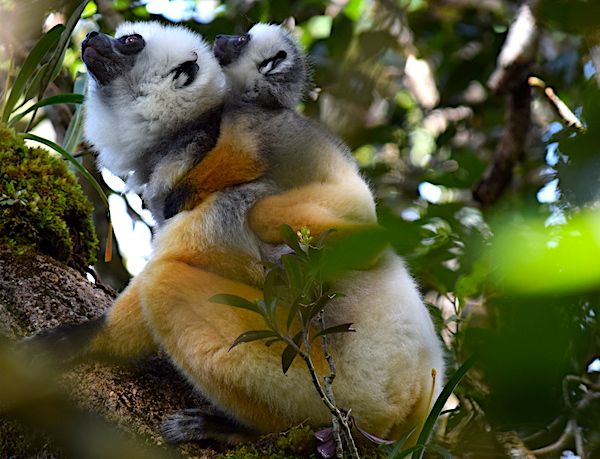
8. Flexibility is KEY When Travelling in Madagascar
Please remember to be flexible, patient, and respectful to your drivers and other Malagasy people you encounter.
Most Malagasy don’t like rushing. And in a country with limited resources, it’s easier to just go with the flow .
The Malagasy have a saying, “Mora Mora,” which translates to slow living and no worries.
They are going to be relaxed, and I promise that you will have much more fun if you relax too!

FOOD AND WATER IN MADAGASCAR
Filtered water.
- Lifestraw Go water filter bottles are legitimately a life saver. Especially if you are environmentally conscious or an avid hiker. If you don’t want to constantly be buying water bottles, you can fill your LifeStraw up with unfiltered tap water. Or if you’re on the trails … anywhere !This allows you to avoid starting hikes with 3+ litres of heavy water. I have even filled my Lifestraw in a warm and murky rice paddy during desperate times. I never felt any signs of sickness. Lifestraws are relatively prone to leaking and should be kept upright. But they are 100% worth the small investment!
- Avoid ice in your drinks unless you can guarantee that it was made with filtered water.
Food and Drink in Madagascar
- Sometimes there isn’t much variety in the cuisine. On the plus side, meals come at a fantastic value! The capital – Antananarivo – and touristy areas, especially along the coasts, will have more to offer. I’ve had some of the best meals of my life in Madagascar. Just be flexible during monotonous periods.
- Like with ice, avoid uncooked vegetables unless you’re certain they were washed with filtered water.
- I encourage everyone to try the “Ranonapango.” It’s essentially burnt rice tea. Although it’s not actual tea, it’s comforting and reminds me of popcorn… Rice is the cornerstone of the Malagasy diet. It’s the base of every meal, including breakfast.
- “Toka-gasy” is a Malagasy moonshine made with sugar cane. You could be offered a drink by a village King. It’s considered rude not to accept. However, do be aware that it is technically illegal. Though, not enforced because the alcohol content cannot be controlled. Some batches seem weak and others will knock you on your feet!
- It’s a good idea to bring protein bars . Especially if you have dietary restrictions (such as vegetarian or vegan) and/or plan on long hikes.
- Here’s some additional info on local food and what to expect.
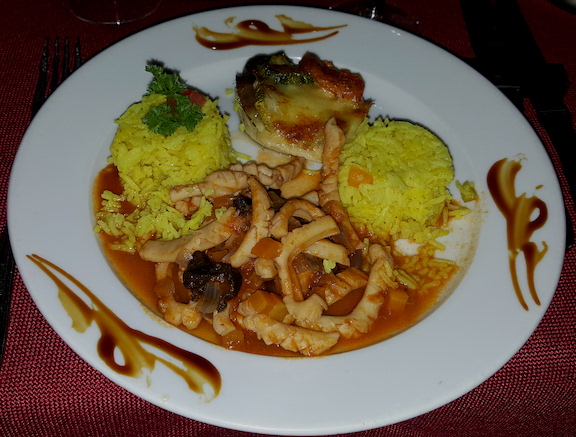
LANGUAGE IN MADAGASCAR
- Brush up on your French. Madagascar was once a French colony. French is still one of the official languages.
- Many signs and restaurant menus will be in French.
- Most prices will be told to you in French. It will be beneficial to at least learn your numbers .
- Try learning simple Malagasy phrases. The locals sincerely appreciate when you invest time and interest in their native language. For starters, “ Salama ” means hello. “ Veloma ” means goodbye!
- Malagasy people are more inclined to be open and friendly with people who aren’t from France. So don’t feel like you should become fluent in French!
- There are a few Malagasy/English handbooks available if you’re interested in languages. Malagasy is a tough language to learn until you’re immersed, especially the pronunciations! This short video of a few keywords in Malagasy with pronunciations will get you started.
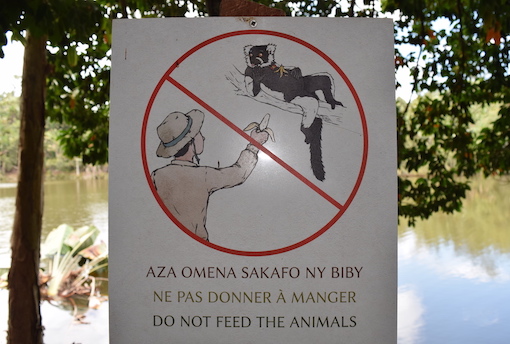
MONEY IN MADAGASCAR
Malagasy currency.
- The currency in Madagascar is called Ariary (MGA)
- Ar 4000 = 1 EUR
- Ar 4600 = 1 GBP
- Ar 2500 = 1 AUD
- Ar 250 = 1 ZAR
- The largest bill – Ar 20,000 – is equivalent to less than 6 USD. However, it’s considered substantial to most Malagasy. You’ll want a safe money bag or belt because you will be carrying many more bills than you are used to.
- The Ariary notes changed in 2017. Therefore, there are two designs for every bill, excluding the Ar 20,000. The Ar10,000 was the largest bill until 2017.
Access to Cash and Using Credit Cards in Madagascar
- To exchange your currency into Ariary, bring relatively large and new bills. They shouldn’t be older than 2010. It will be easiest for you to exchange your currency right at the airport. That way you’ll avoid the long lines and limited hours of banks. I find this to be the easiest way to access money.
- Credit and Debit cards. Some places in cities accept cards, but only VISA is reliable. Other networks like MasterCard and AmEx often won’t work. Honestly, it is best to carry cash !
- ATMs are only available in big cities. And there’s a limit to how much you can take out. Also, it’s not uncommon for ATMs to be out of order or empty.
Begging in Madagascar
- You will have people begging you for money. Especially children, mothers, the elderly, and the disabled. I would be lying if I said it wasn’t difficult to witness. But it’s unavoidable, especially in big cities.
- Everyone is entitled to their own opinions on how to handle these situations. But do acknowledge that your actions will impact more than just the beggar. Begging is not a sustainable way to make a living.
- If you decide to give, be tactful about it. Don’t flash large wads of cash. And understand that successful beggars often return with friends. To avoid being surrounded and causing a scene, wait until you are about to get back into your vehicle.
- I generally only give to those performing – sometimes people sing, dance, or play an instrument. And I never give to overly pushy people. I don’t want them thinking that’s the way they should approach all tourists.
- When giving money, I keep it discrete and politely urge them to use it for food.
Tipping in Madagascar
- Tips are generally well received and deeply appreciated. They’re sometimes it’s your biggest daily expenditures. Especially if you’re on a guided tour where most expenses are paid for ahead of time.
- When you can break large bills into smaller bills for tipping. Keep these tips in a separate pocket from the majority of your cash.
- To offer you a perspective, Malagasy people who are fortunate enough to be employed typically don’t make more than Ar 200,000 (~$56 USD) a month .
- If you want to keep your tips within the average range of other tourists, roughly follow the guide below. However, you are welcome to give more. Especially with guides and drivers. But only if they exceeded your expectations.
- Taxis and bars : Not expected or small bills.
- Porters : small bills, likely not over Ar 1000.
- Restaurants : 5% of the bill or less.
- Guides : 10% of the fee.
- Personal Drivers : Ar 5000 – Ar 20000 a day.

PACKING FOR MADAGASCAR
- Bring more warm clothes than you would think necessary. This includes thermals, hat, gloves, and fleece. Especially if you are travelling during Madagascar’s winter months (May – September).
- However, the climate throughout Madagascar changes rapidly . While the cool rainforest fog may send shivers down your spine in the morning, you can jump in the car and find yourself in a desert ecosystem by late afternoon. Therefore, you will want to pack a variety of clothing. Be sure to bring shorts, T-shirts, and durable sandals.
- If you plan on hiking , you should pack quick-drying field pants, sturdy hiking boots , wool socks, a baseball cap, and a rain jacket. While hiking in rainforests, I advise tucking your pants into your socks and your shirt into your pants to minimize leech bites. Leeches don’t transmit diseases, their bites don’t hurt, and they only remain attached for about half an hour. However, they do have an anticoagulant in their saliva. This causes you to continue bleeding even after they drop off. And these bites can itch worse than mosquito bites. Take precautions but don’t panic if you get a leech.
- I also recommend a substantial daypack with a supportive waist belt and chest strap. This could double as your carry-on luggage for the flight!
- Don’t forget bathing suits ! Beaches aren’t the only places to swim; some parks have natural swimming holes you can hike to.
Travel Documents For Madagascar
- Your passport cannot expire within 6 months of entry and must have at least 3 blank pages. They are strict about this!
- Carry your immunization records. They may not be requested if you haven’t been in countries with Yellow Fever.
- If you’re travelling with a large group, it’s beneficial to obtain your Madagascar VISA within your home country. Otherwise, it’s easy to purchase a tourist VISA upon arrival at the airport for 30, 60, or 90 days.
- I prefer to have paper photocopies of my passport and tourist Visa. The police will occasionally ask to see your passport, especially in cities and on the road, but I don’t like carrying it wherever I go.
Power in Madagascar
- Bring European plug adaptors if necessary: 220 Volt, 50Hz AC (Two circular metal pins).
- Charged power banks are invaluable, especially considering the amount of travel time. If you need your phone to stay alive for the entire day, I would bring a power bank or two.
General Equipment
- Pack binoculars for lemur and bird watching! If you’re concerned about them occupying souvenir space in your suitcase, donate them to a deserving park guide near the end of your journey. Malagasy guides are often in need of functioning binoculars.
- Bring a bright headlamp and/or flashlight for night hikes. There are nocturnal lemurs, chameleons, frogs, snakes, geckos and so many other creatures you don’t want to miss!
- Wristwatches are convenient for checking the time. I t might not always be a good time to pull out your phone.
- All sizes of Ziplock bags are precious. Smaller bags can organize your medications and chargers; medium bags can keep your electronics and books dry; large bags are perfect for wet or dirty laundry.
- I recommend silica gel packets and dry bags for your electronics and camera if you’re spending an extended time in humid, rainforest environments.
- Remember the items mentioned in previous sections : medications, hand sanitizer, sunscreen, LifeStraw water bottle , protein bars, bills to exchange, designated money bag, VISA credit/debit cards, etc.

THINGS TO BE MINDFUL OF IN MADAGASCAR…
Internet and phones.
- Most hotels have complimentary WiFi. However, even luxury hotels don’t always have internet or outlets in individual rooms/bungalows. Sometimes you have to sit in the reception area for internet access and charging. WiFi is available in some restaurants, but you will need to ask for the password.
- If you have an unlocked GSM cellphone, you may want to buy a local SIM card (Airtel, Orange, or Telma) and a 3G package. You can do this at the airport. If you don’t want to purchase a plan, you can buy phone credit at virtually any shop.
Cultural Awareness in Madagascar
- Avoid pointing with only your index finger extended. While it’s not considered offensive everywhere in Madagascar, it’s better to be safe than sorry. Pointing with your index finger is considered a “ fady ” or taboo in many regions of Madagascar. Especially when pointing directly at a tomb or grave. You can either gesture with your whole hand open, or bend your finger as you point.
- It is expected to haggle prices unless the price is already established, such as in tourist shops, restaurants, and hotels. It’s part of the culture.
- It’s respectful to dress fairly modestly . You’ll see everything in tourist areas. However, I personally avoid low cut tops, short skirts and shorts. And I only wear one-piece swimsuits.
- While difficult to ignore their puppy-dog stares, don’t feed street dogs . Malagasy people can view it as highly offensive that you took the time and money to feed a dog, but not their family.
- Most Malagasy actively avoid confrontation, especially with foreigners. Don’t take advantage of this.
Saying “Thank You” in Madagascar
- In Malagasy, “ Misaotra ” means thank you. Add “betsaka” if you want to say, “thank you very much.”
- If you anticipate any village visits, a gift that would be appreciated by everyone is a high-quality soccer ball . I always bring several deflated soccer balls and an air pump from the States.
- You’ll probably become close with your driver and guide. In addition to a tip, you may want to thank them with foreign gifts . A T-shirt representing your city or country, candy from abroad, or something else they wouldn’t find in Madagascar are the most cherished gifts.

PHOTOGRAPHY IN MADAGASCAR
Keep your camera close.
- If you have a DSLR camera, keep is safe, but don’t be afraid to bring it . There are countless sites and creatures to document that small cameras and phones just can’t capture.
- Keep all valuables close, especially in big cities like the capital of Antananarivo (Tana). I wouldn’t worry about being attacked. However, there are some skilled pick-pocketers. They can swipe your cash, phone, or other items without you even noticing.
- Just as you would back home, ask before taking someone’s picture. If you don’t speak French, saying “ Sary? ” (pronounced similarly to the English, “sorry”) – which means “Picture?” in Malagasy, should sufficiently get the point across.
- Adults will occasionally wave you off, but kids love to pose. You should show them their picture. But remember to wipe down your camera with a disinfectant afterward. The kids may excitedly grab your camera for a closer look with their cute, but dirty little hands.
Selfies in Madagascar
- NEVER pay to take pictures with wildlife kept at restaurants or hotels.
- Paying for these photos encourages the illegal and devastating pet trade. One of the reasons lemurs are endangered .
- Many of these animals, especially lemurs, don’t survive these conditions. If they don’t die from a poor diet, they may be killed when they display aggression as they become sexually mature. The “Magic of Madagascar Ecotour” will take you to one of the only rescue centers in Madagascar that confiscates pet lemurs and teaches them how to survive the wild.

SOUVENIR SHOPPING IN MADAGASCAR
Avoid purchasing….
- Carvings made from precious woods like Rosewood and Palisander
- Butterflies and other preserved insects
- Sea turtle shells
- Sapphires, other precious gemstones, and gold
28. Ethical Shopping
- Aim for sustainable gifts that don’t negatively impact wildlife or people while simultaneously expressing Malagasy culture.
- My main suggestions include… hand-dyed and spun silk scarves woven from sustainably farmed silk, items made out of recycled aluminium, and art constructed from repurposed zebu horns.

EXCLUSIVE TRAVEL EXPERIENCES IN MADAGASCAR
Places to visit in madagascar.
- RN7 is your best friend. This route starts at the capital and works its way south, then slowly west. It is accessible year-round and brings you through every incredible ecosystem Madagascar has to offer! That’s the route that we take on our Ecotour through Madagascar from July 1st – 12th, 2019!
- RN5 takes you west to see the “ Alley of Baobabs ” or possibly even the limestone forest of Tsingy ! This road is more difficult to navigate. It’s comical that it can even be considered a national route.
- The north is also beautiful, but similar to the west, the roads are very poor, especially as you work your way west.
- There are stunning places that are easiest to fly to, such as the rainforest peninsula of Masoala and the island of scuba-divers dreams – Nosy Be .
30. Wildlife You CANNOT Miss in Madagascar!
- “The Magic of Madagascar Ecotour” brings you to the largest species of lemur (indri) and the smallest lemur (mouse lemur), with many lemur species and sizes in between!

If you love Madagascar as much as we do, you’ll love our lemur t-shirts:

This meditating lemur t-shirt is the perfect gift for the animal lover in your life whether it be your wife, husband, sister, brother, best friend, son or daughter. It looks great with jeans and is perfect for a casual day out.

This t-shirt with words about lemurs is perfect for animal lovers – who want to show their love for ring-tailed lemurs and to raise awareness about this endangered species – see how many words related to lemurs you can find.
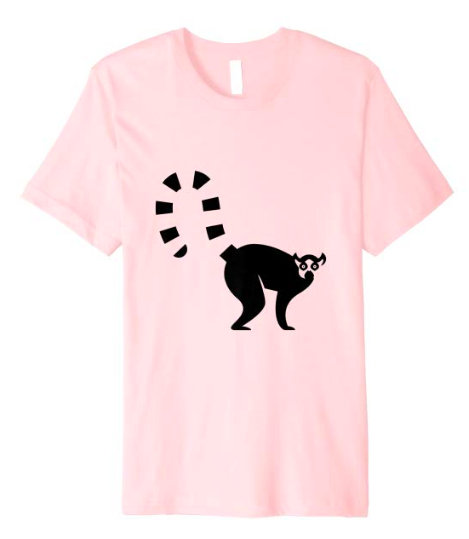
This ring-tailed lemur t-shirt will be a hit with animal lovers who want to show their love for these unique creatures while raising awareness about these critters from Madagascar who need our help.
ADDITIONAL MADAGASCAR INFORMATION
- Films and Books about Madagascar
- If you are keen to learn more about the creatures and culture before going or booking a ticket to Madagascar, I recommend either of the following films : Planet Earth II (on Netflix) and Island of Lemurs: Madagascar (IMAX) .
- Additionally, I recommend the following books : For the Love of Lemurs (Patricia Wright); Thank You, Madagascar (Alison Jolly); The Aye-Aye and I (Gerald Durrell); and Madagascar – The Eighth Continent (Peter Tyson).
- Field Guides for Madagascar
- There are good field guides available for most taxonomic groups in Madagascar. I have personally had the best luck with Lemurs of Madagascar: Third Edition and Birds of Madagascar and the Indian Ocean Islands . Note: if you can’t find that check out Lemurs of Madagascar: Tropical Field Guide Series .
- For travel guides, the Bradt Guides are probably the best guide I have come across. The author has been travelling to Madagascar for over 30 years! The Lonely Planet – Madagascar: 8 th Edition is also quite thorough.
- Online Info on Travel in Madagascar
- While this article provides a comprehensive list, you can’t fit everything into a single post! I recommend perusing additional online resources that can provide even more information about Madagascar. Be sure to check out 28 Interesting Facts About Madagascar !
- Continue researching and reading! The more you know, the better you can prepare for culture shock. And the more you will appreciate all the sights, sounds, smells, and tastes of Madagascar!

The long-ground roller is a bird species endemic to the spiny forests of Madagascar; Photo: Alicia Lamb.
Best of luck with your travels in Madagascar! Take care and enjoy, or as they say in Madagascar, “Mazotoa!”

- [email protected]
- Oliver Grove, London SE25 6EJ

Madagascar Travel Guide: The Island of a Thousand Facets

By Nicolas Raherinjatovo
With its warm climate all year round, its almost endemic flora and fauna, its incredible landscapes and its adorable population, the island of Madagascar is what we call a paradise on earth. Lying in the Indian Ocean, this big island of Madagascar, also known as the red earth island, is a place of hundreds of discoveries, a location of relaxation and travel.
My name is Nicolas Raherinjatovo, and I am proud and happy to introduce you to Madagascar: the island of a thousand facets. I am passionate about travel and this passion drove me to study tourism. Let’s discover this beautiful island and all its incredible places.
During most of the 19th century, the island was administered by the Kingdom of Madagascar. In 1896 the island was colonized by the French, and they did not have their independence until 1960. Madagascar is an island that is in the Indian Ocean and geographically attached to the African continent from which it is separated by the Mozambique Channel. It is the fifth largest island in the world, with a length of 1,580 km and a width of 580 km, Madagascar covers an area of 587,000 square kilometres.
Want to know more about this big island? Here’s a comprehensive guide with detailed travel information to show you how to get there.

Madagascar Things To Do & See
Madagascar combines both natural beauty and the cultures of Africa and Asia. By travelling to this island you will be able to take advantage of its crystal clear waters to bask in a postcard setting, discover the endemic flora and fauna, and immerse yourself in Malagasy culture.
1. Antananarivo
Antananarivo is the capital of Madagascar where all the ethnic groups of the island are concentrated. Antananarivo translates as the city of a thousand conceals historical remains to discover. You can visit the “Rova” the royal palace, take a tour of the upper town or stroll in the Tsimbazaza zoological park to discover the flora and fauna that can be seen all over the island. There are also 12 sacred hills which have enormous historical weight for Antananarivo and the kingdom of Madagascar. Apart from that, you can taste the local gastronomy in many restaurants in the capital. All the customs and gastronomy of the ethnic groups of the islands are found there.

2. Nosy Be Island
Nosy be is an island off the coast of Madagascar more exactly in the north-west. It is one of the most beautiful seaside resorts in the country and also one of the largest. This destination is made for beach lovers because you can find among of the most beautiful beaches in Madagascar. Whether alone, as a couple, with friends or with family, this is an ideal destination for a holiday. You can also make excursions in the neighbouring islands such as Nosy Iranja, Nosy Komba, Nosy Tanikely or Andilana which all have magnificent beaches at their disposal. By going there, you will have an unforgettable stay, relaxing and forgetting all the stresses of everyday life. Visit the beautiful island of Nosy Be with our personalized tour.

3. The Alley of the Baobabs
Considered the most beautiful alley in Madagascar , it is unmissable. Located west of Madagascar in the Menabe region, it is best to visit it at sunset or sunrise to totally appreciate the red lights from the trees. It’s a sight not to be missed. These gigantic trees, called “sky roots”, more than 900 years old and can reach 30 meters in height, and with a trunk circumference of more than 40 meters.
4. Isalo National Park
A place which shelters a wild nature of singular beauty, the national park of Isalo is a site which will undoubtedly seduce the amateurs of long escapades. This magnificent place is located between Ihosy and Sakaraha in the southwest of Madagascar. This massif has an exceptional variety of birds, two thirds of which are endemic species. The traveler will be able to realize it by traversing the various tourist circuits which he can practice on foot or in all-terrain vehicle. Another easy route very popular with travelers is the “natural swimming pool” circuit with which visitors can enjoy incomparable moments spent in the heart of a wooded savannah and a magnificent natural botanical garden.
5. Sainte Marie Island
At the heart of an environment worthy of the most beautiful postcards is the small Île Sainte-Marie. With its mangroves, its magnificent lagoon and its expanses of white sand, days of discovery or just lazing around await you in Sainte-Marie. Sainte-Marie is the 2nd island of Madagascar after the island of Nosy-Be by its area. It lies off the coast of Red Island, about 35 kilometers from Soanierana Ivongo.
One of the events that exposes this destination to the eyes of the whole world is the Whale Festival. This event celebrates these marine mammals who each year chooses the warm waters of the Indian Ocean to reproduce and raise their young. From July to September we can observe humpback whales dancing in the seas of Sainte Marie. It is a magnificent sight.

6. Tsingy de Bemaraha National Park
Tsingy de Bemaraha National Park is a unique park that can only be found in Madagascar. It is an area of 72 340 hectares and is known thanks to these Tsingy. It is a unique topographic form that can be seen in parts of Madagascar. They are in fact sharp limestone pinnacles. These limestones can reach a height of 45 meters. It is not only the Tsingy which are interesting in the park because we can find through these limestone stones plant and animal life. You can find the endemic fauna and flora of Madagascar there. We identify 11 different types of lemurs and the most incredible is that we can see the famous Ankoay which is the eagle of Madagascar, a rare species of raptor that we do not see anywhere. Going for a hike through the Tsingy is a real adventure to be lived. Check out our adventure tour of the Baobab Alley and the Tsingy de Bemaraha .
7.Île aux Nattes
The island named Nosy Natto in Malagasy is an oasis of sand 2 km in diameter. Protected by a lagoon over a radius of 1,500 meters, Île aux Nattes is sheltered from predators and waves but very close to the Sainte-Marie Island, located 200 meters to the south. Its privileged location makes it an ideal place to practice traditional fishing and diving, but also to witness the reproduction of whales in the Saint-Marie canal or to explore the region.
8. Diego-Suarez bay
At the northern tip of Madagascar, we find the bay of Diego-Suarez. This bay was renamed by the name of two Portuguese sailors called Diego Diaz and Fernando Suarez. There are 4 bays that make up this bay, one of which is a sacred place for the local population. From there you can see the atmosphere of the port life of Antsiranana and also you can visit Amber Mountain which is a National Park teeming with unparalleled natural beauty with its endemic flora and fauna.
9. Ranomafana National Park
One of the most must-see places on the Big Island is Ranomafana National Park. This park was created in 1991 following the discovery of a species of lemur called the golden bamboo lemur. What differentiates the park from other national parks in Madagascar is the fact that endemic species can be found due to this also the majority of animal and plant species are endangered species. If you are a nature lover this is the perfect destination for you and you will not be disappointed with what you see. Check out our Southern Madagascar Adventure Tour .
10. Belo sur mer
Lovers of beautiful beaches will be served by going to Belo sur Mer because it is the ideal place to relax and meet up. You can relax there while admiring the pirogues of the fishermen who return or go fishing. You can also observe the salt marshes there, and it is also interesting to see the marine carpenters making sailboats. It’s a different universe from what we are used to seeing.
Madagascar Travel & Culture Guide
On the fourth largest island in the world, where wildlife is wonderful and beaches are blissfully beautiful, you may easily be forgiven for pointing at ….let’s say a lemur but think again..

This section introduces you to various aspects of the Madagasy culture. Then it takes you to some of the island’s highlights.
If you’re planning to travel to Madagascar, you’ll certainly get far more out of your travel experience if you understand the island’s fadys, which are cultural taboos, especially as life in Madagascar is dominated by thousands of fadys.
Let’s take the example of pointing: the main issue here is that as you innocently point at an interesting example of wildlife, you could be pointing at the burial place of a local’s ancestor. Totally taboo also called “fady” in Malagasy. If you break a fady , you could reap scary results from the spirit of said ancestor or “Razana” , or if you manage to escape that, at the very least you will experience social shame.

Madagascar was featured in the New York Times & Irish Times as a top destination in 2017
Lying off the coast of East Africa, Madagascar has got its act together since stabilising after the 2013 elections and has been selected by the New York Times and Irish Times as a top destination in 2017. There are some beautiful eco-friendly lodgings available, which include rain forest camps and luxury island retreats. These are perfect bases from which to experience the amazing wildlife; 80% of the mammals found there, cannot be found elsewhere . The stars of the show on land in Madagascar are the chameleons, lemurs and dancing sifakas, while underwater, humpback and shark whales can be seen cruising around.

Download this free colouring page about Madagascar

Madagascar is still unspoilt
The landscape is incredibly diverse, and in some areas, you’ll find vast tracts of unoccupied land. Madagascar is still unspoilt, so let’s hope it stays that way. Although it has its own agricultural practices (slash-and-burn cultivation or “Tavy” in malagasy) that have affected the island, more about that a bit later.
Take a trip of around 200 miles and you can travel from rainforest to desert. The turquoise sea is never very far away, with the island’s 4000+ miles of coastline, and in between, you can discover rice paddies, limestone karsts, mountains and sandstone canyons. Impressive trees and fauna are to be found everywhere, with inspirationally shaped baobab trees being the order of the day.

Madagascar has a strange geological history
It is Madagascar’s strange geological history that is responsible for the fact that the island is home to wildlife, of which 80% can’t be found elsewhere. 160 million years ago, Madagascar lost contact with Africa. It was part of the Gondwana supercontinent but after losing contact with Africa, it subsequently also did the same with Antarctica, Australia and then India.

Amazingly much of the island’s endemic species went along for the ride, and stuck with it on the journey, like the elephant bird, for example. Additionally both animals and seeds were swept out to sea from rivers in Mozambique and Tanzania, which makes it possible that the ancestors of the lemurs that you can see in Madagascar today, arrived there this way.
Malagasy culture
Madagascar is a cultural melting pot. Waves of migrants have come to the island from various corners of the Indian Ocean, which has led to a distinctive, unique society being fashioned, with its own intricate, complex set of customs and beliefs. The Malagasy people, above all, revere the spirits of their ancestors or “Razana” .

“The smiles of the children, the hustle and bustle and the architecture of the city catch your attention. Houses in adobe, beige and yellow are jumbled onto the hills like a Cezanne painting.” Patricia C. Wright , Anthropology Professor
The humble people of Madagascar are truly welcoming and friendly, but even though visitors find their culture fascinating, they are not entirely comfortable about it. They don’t like confrontation, so even if something doesn’t go as expected, it will help you culturally if you don’t make a fuss. The reason for this is that underlying their social fabric is ‘fihavanana’, which means ‘conciliation’.

Photo: M M
Respecting this and the complex taboo (fady) system will go a long way to making your trip there more rewarding and enjoyable. The fadys vary from village to village and place to place, making the situation even more complicated. When visiting a village or a specific place, don’t be scared to ask firstly about the taboos there, so you don’t make an embarrassing mistake. In one of the villages a fady is wearing swimming goggles! The fady system is based on not wishing to disrespect or upset the spirits of their ancestors. Here are a few examples, but the Malagasy are creating new fadys all the time. People who, even unknowingly, break a fady, are considered unclean.
- Don’t point at a tomb at the risk of losing the guilty phalanx or making the guilty person leprous
- Never kick the wall at the risk of causing the death of the maternal or paternal grandmother
- If you’re pregnant, don’t put gingers in the pocket otherwise it will push baby’s sixth finger or toe.
- Never whistle after dark or the ghosts will come

Madagascar ethnic groups
The Merina people (the ethnic group of the central highland) of Madagascar look like Indonesians and there are other who look like Africans.. It is believed that the Indonesians arrived there when travelling around the Indian Ocean, and it is thought that they descend from seafarers who hailed from Indonesia and Malaya. These people brought their rice-based diet and belief system with them. Until today, the Malagasy food base is rice.The Merina account for around a quarter of the island’s population.
Some Swahili and Bantu words can be heard in the Malagasy language. These come from the African migrants who arrived there over the centuries. Arab merchants also made their way there, and they may have descended from the Arabic Antaimoro peoples.

In total, today, you can meet around eighteen different ethnic groups in Madagascar, who even though they have some racial differences they do feel that they share the same culture, even though there are variations from village to village, and the same language.
Communicating in Madagascar
Since Madagascar has eighteen different ethnicities that each have their own culture, it also has eighteen different dialects. The Malagasy people use the Merina dialect to communicate which is known as the official Malagasy language.
Madagascar was a French colony until 1960. Therefore their second language until today is French, so if you speak some French, it will help you get by. Many Malagasy also manage to speak English since English has become a compulsory subject to be learned at school.
That said, the ideal is to learn a few important phrases in Malagasy, such as saying hello ( Manahoana ), thank you ( Misaotra ), sorry ( Azafady ) or ordering a beer ( Afaka mahazo labiera azafady) ! Remember that if you do speak French, the Malagasies have a difficult ex-colonial relationship with their ex-colonisers.
The Malagasy language is rather similar to a dialect, which we can hear spoken in Borneo. It is rich in both metaphors and images, and rather poetical.

Death in Madagascar
In Madagascar, the most important part of life is death. Funerals are often joyful occasions, as the Malagasy people regard death as the moment when the soul transmutes into razana, which means an immortal spirit.
Speaking with the dead or Razana
Their culture revolves around Razana. These ancestors, that are now immortal spirits, are a kind of life force to the people. They call upon them to inform them. It is believed that the razana are actively looking after them in various ways. Their wishes are both obeyed and respected. This is the reason that the villages operate under the systems of fadys, in order to please these deceased ancestors.

As a traveller to Madagascar , an important highlight of your trip, could be attending a famadihana or exhumation. This is when the family dig up the bones of ancestors, to ceremoniously wrap them in fresh tissue (Lamba) and to walk them dancing around the tomb before burying them again. In Madagascar, however, this re-burial ends up becoming periodic, generally every seven years, in a great celebration bringing together all the members of the group. On this occasion, the silk shrouds covering the decomposed mortuary remains of several bodies are renewed. This is a special time for them to communicate with the razana, and celebrations can last for a week. This exhumation and reburial practice is carried out by the Merina and Betsileo peoples.
Around fifty per cent of the islanders believe that there is one God, that is neither female or male, according to traditional beliefs. Some of Malagasy worship nature spirits, whom they believe inhabit elements of nature, such as trees and rivers. Others have converted to Christianity, and a small amount of people have become Muslims. Even so, they still all respect the traditional rituals.

Food in Madagascar
Madagascar cuisine is influenced by the peoples who have settled there and also the French who colonised the country. So expect a blend of Indonesian, Arab and African, with a dash of French in the mix. Crops such as sugar cane, vanilla, cloves and coffee were brought by French colonisers.
Typically a traditional main meal includes rice which is the basis of their diet with the “Loka” which is mainly poultry, beef, pork or fish, as well as side vegetables, served with some “ro” which is a kind of broth so that the food does not dry out too much. The “Ro” is a bowl of broth mixed with leaves and herbs; simple presented but full of flavor.
Some popular Malagasy dishes:
Foza sy hena-kisoa: stir-fried, lobster and crab, seasoned with lime juice and ginger. It is mainly eaten with rice, just like other Malagasy dishes.
Ramazava : Pork and beef browned in oil, with herbs and leaves
Vary amin’anana: rice soup made with meat, sometimes shrimp and mainly herbs and leaves
Koba: very popular Malagasy dessert made from a mixture of rice flour and crushed peanuts, and wrapped in banana leaves

Try the local brew, ranonapango – a burned rice water
Local beers – Gold or Three Horses Beer
Tap water is unsafe, so you need to drink bottled water.
Tips in restaurants should be around 10%. Hotel staff don’t expect tips, but you can always break this custom and it is always appreciated.
Madagascar Crafts
Handwoven cloth in Madagascar is an integral part of life. Not only is it elegant for clothing, but lamba , as it is called, is a valuable symbol of the heritage. It is offered to the spirits in exchange for blessings. Lamba is used as a ceremonial gift. It is also offered to rulers.

At marriage, men offer lamba to their brides, which is a time-honoured tradition. When they are being wed, a single cloth encircles the couple as a symbol of their union. Historically lamba has been used in matters of diplomacy. It is given to create or renew alliances. Lamba has been used in international diplomatic relations. The cloth is also used in wraparounds, and can be worn draped around the shoulders or as a sarong. Mothers use lamba to carry their babies in a sling.
Hats are another important aspect of the Malagasy culture. These are made from a variety of plant fibres, using different colours and weaves.
Madagascar UNESCO wood working
The woodworking traditions and knowledge of the Zafimaniry tribe have been designated as UNESCO Intangible Cultural Heritage since 2008. These people are located in Madagascar’s central highlands. However woodworking is to be found throughout the country. Probably the first place wood carving in Madagascar will catch your eye, is on one of the balcony railings, although it does also feature in other architectural elements. Wood sculptors create various household goods and furniture. Wood carving is also used to produce Aloalo funerary posts. Additionally many wooden sculptures are produced for the tourist market.

Photo: Reibai
The Antaimoro people seem to have found a bit of a niche in crafts that appeal to the eco-tourist, such as paper which is embedded with decorative natural materials and/or flowers. This is a long-established tradition of theirs, but also their local artists are painters worth considering, and in fact, there is a continuing growth of fine arts in Madagascar. In Hosotra, there’s an annual open-air exhibition. In craft markets, visitors can also find home textiles and tablecloths, which have been fashioned using drawn thread work techniques and embroidery.

Photo: Alfred Payne
Madagascar performing arts
On the island, there’s a strong tradition of music, theatre and dance, that stems from the Merina race, and can be traced back to the 18th century. A Merina King, named Andrianampoinimerina , found that using musicians helped him to draw crowds, who were then more likely to stay and listen to his political speeches. These days visitors can enjoy a genre of hiragasy , which is a spectacle of song, dance and music, that lasts all day. It is performed by a troupe, who are typically related to each other, by marriage or blood. Hiragasy is a competition between different troupes, making it an interesting performance.

Photo by Flickr user Toky Rasolo
Oral traditions
From sources of knowledge to performance, oral traditions in Madagascar were originally documented by French and British visitors. In the late 19th century, the Tantara ny Andriana eto Madagasikara, was published by a Catholic priest, who had been living in the highlands. He had collected knowledge about the society of highlands. Oral performance genres include public discourse (kabary) , proverbs (ohabolana) and poetry (hainteny). The Ibonia, which has come down through the centuries, is an epic poem, offering insights into the beliefs and mythologies of the communities.

Photo: Frank Vassen
“In this unique environment, even time feels skewed, as if the twin processes of evolution and extinction are happening simultaneously….Madagascar leaves you with the sense there is something left to be found.” Sophy Roberts , Condé Nast Traveler
Madagascar capital city: antananarivo.
Madagascar’s colourful capital is Antananarivo. Granted that there you’ll encounter both pollution and heavy traffic, but avoiding the city would be like missing out on a vital part of the island’s character and history. Tana, as it is called locally, has been the seat of Malagasy power for over three centuries, and offers some fascinating cultural attractions, such as the Rova of Antananarivo palace, which from the 17th century, was the centre of the Merina kingdom. It is perched on high cliffs, which overlook the city centre. Just outside the palace complex, you’ll find Ambohimanga, which is the older sacred capital.

Photo: Oledoe
The city is 1400 metres above sea level; giving it a cooler climate, which makes it easier to wander around its steep streets. Discover the beautiful old colonial buildings of the Haute-Ville and treat yourself to a delicious meal, in a restaurant that could have a Michelin star, but doesn’t have the prices to match. Tana also has lots of great shops and excellent markets, full of crafts from around the country.
Andasibe-Mantadia National Park
Lying around 110 miles (150 km) east of Tana, is the Andasibe-Mantadia National Park, which covers a protected area of just under 100 miles squared (155 km2). This park can be accessed in three to four hours from the capital, on a paved road. To the south of the Andasibe village, lies one area of the park, popularly known as Périnet, but it’s official name is Réserve Spéciale d’Analamazaotra. To the north, you’ll find the much larger park, Parc National de Mantadia. They have been divided into two parks, due to human activity, but they both belong to the same humid forest.

By Karen Coppock [ CC BY 3.0 ], via Wikimedia Commons
If you visit between September and January, you can see hundreds of different orchid species blooming , amongst the moss, lians, ferns, palm and bamboo trees. The park is home to many beautiful birds, fourteen lemur species, coloured chameleons, lizards and frogs. The highlight for visitors is the Indri, who is the largest lemur, with an interesting call that can be heard in the early morning. The local name for Indris is Babakotos, which translates into ‘man of the forest’ or ‘little father’.
Antsirabe thermal springs & rickshaws
Capital of the Vakinankaratra region, Antsirabe is situated in Madagascar’s central highlands. In the late 1800s, a health retreat was built here by Norwegian missionaries, making the city known for its thermal springs. Today the facade is still impressive, but inside has seen better days. French colonists also did their bit by making it a chic getaway from the country’s capital, Tana, which left it with large French-style tree-lined avenues and turn-of-the-century villas.

Photo: Rod Waddington
Although its colonial past and architecture is fading, Antsirabe is full of life, and colourful rickshaws. There are drink, food and textile factories, which inject an energy into the city. Antsirabe had good sightseeing options, food and the Sabotsy Market, which is an outdoor market where you can buy local produce and clothing.
Ranomafana National Park UNESCO
Ranomafana National Park is one of the six parks that make up the Rainforests of the Atsinanana, which are a UNESCO World Heritage Site . Located in the southeastern part of Madagascar, the park comprises of 161 square miles (41,600 hectares) of tropical rainforest. It’s name means hot water in Malagasy.

The park is one of the most visited places in Madagascar, due to good access and infrastructure. Amongst the many species to be seen there, are 12 types of lemurs, 130 frog species, 8 species of bats, sifakas, mongoose and much more. It is also home to several types of rare flora.
Isalo National Park
If you’re looking for Jurassic Park type scenery then visit Isalo National Park. A rugged massif which seems to rise majestically up from the surrounding grassy plains, dominates the landscape. Founded in 1962, the park is around 700 km southwest from Tana; Ranohira is the closest town. Its best known for its fascinating, diverse terrain, rather than for its wildlife. Deep canyons, sandstone formations, grasslands and bizarre ridges attract keen hikers from all over the world.

Along the streams, there are 14 different nocturnal lemur species, lurking in the dense vegetation. You can also spot sifakas, brown and ring-tailed lemurs, and around 80 different bird species.
Madagascar Responsible Travel Options coming soon…..

Madagascar Quick Facts
Madagascar travel, biodiversity & culture.
Madagascar is famous for its biodiversity. Our local guide, Nicolas Raherinjatovo, has written a range of excellent features about Madagascar, the Island of a Thousand Facets. Nicolas previously studied tourism and sustainability. If you are hoping to visit Madagascar, please do so in ways that can help its biodiversity and peoples.
Madagascar Travel Guide

Madagascar’s Endangered Species: Understanding the Threats and Conservation Strategies

Protecting Madagascar’s Fragile Ecosystems: An Overview of Conservation Efforts on the Island

Climate Change in Madagascar: Understanding the Impact on the Island’s Biodiversity and Communities

Recipe for the famous Ravitoto of Madagascar

Alahamady Be : The Malagasy New Year

Angano: Cultural Treasure of Madagascar

Circumcision in Madagascar: an essential custom

The 10 best typical dishes of Madagascar

The place of the zebu in Madagascar

Baobabs In Madagascar-The mother of the forest

KENNETH VICTOR
March 6, 2023 at 2:55 am
Thank you for all the valuable information. We are interested in coming there in September And seeing the Whales. We , my wife and I would like to experience cultural events, nature wildlife and scenery. My wife definitely doesn’t want to spend hours getting somewhere in uncomfortable conditions, that’s just unacceptable to her, which I know makes this very difficult to execute the above. Please advise
JACKIE DE BURCA
March 9, 2023 at 11:20 am
Hi Kenneth,
Thank you for considering Madagascar as your next travel destination!
To witness the whales, it’s best to visit between July and September, when they migrate to the waters of Sainte Marie in the east of Madagascar. It’s truly an unforgettable experience! In addition to the whales, you can also enjoy the stunning beach and immerse yourself in nature on this small island.
I would not recommend traveling to Sainte Marie by car if you wish to avoid uncomfortable conditions due to the bad road conditions. While it is technically possible to reach Sainte Marie by car, it can take up to 10 hours and then an additional 2 hours by boat to reach the island. Therefore, the quickest and most comfortable way to reach Sainte Marie is by taking a direct flight from Antananarivo, which only takes an hour.
Furthermore, if you’re interested in experiencing the local culture, I would suggest visiting Sainte Marie during the whale festival, which takes place between the 15th and the 23rd of July. During this time, you’ll have the opportunity to witness traditional dances and music, as well as enjoy the local cuisine.
I hope that helps.
Do let us know how it goes!
Leave a Reply
Top Google Rankings
linkedin page followers
twitter followers
Facebook fans

IMAGES
VIDEO
COMMENTS
Madagascar: your guide to adventure travel. Oct 9, 2019 • 3 min read. Wildlife & Nature. Where to travel based on your Harry Potter character. Sep 27, 2019 • 6 min read. Food. Five reasons to explore Antananarivo. Aug 21, 2018 • 6 min read. Wildlife & Nature. Madagascar: an island unlike any other.
As biologists continue to discover more about this remarkable place, calling Madagascar the eighth continent barely does it justice: second planet seems more appropriate. Read our Madagascar guide for everything you need to know before you go. Madagascar travel facts; Size: Madagascar is the fourth-largest island in the world. Measuring 587,040 ...
Madagascar's weather changes dramatically from region to region. The east coast is tropical, with hot temperatures and plenty of rain. The highlands of the central interior are cooler and less humid, while the south is the driest region of all. Generally speaking, Madagascar has a cool, dry season (May to October) and a hot, rainy season ...
Tour guides generally expect 10,000 to 20,000 Malagasy ariary (or $3 to $6) per day, and you should allot about 5,000 to 10,000 Malagasy ariary (or $1.50 to $3) per day for drivers. Home to 18 ...
Travel Guide on Best-Time to Visit, Must-See Places, Must-Do Things, Must-Try Food, Local Language for Travellers, Local Cultures and Safety. ... Madagascar Travel Guide - Everything You Need to Know. Madagascar, located off the southeastern coast of Africa, is a mesmerizing island nation that beckons travelers with its unique and diverse ...
Flights on Air Madagascar are ~$600. Madagascar Visas. Madagascar is one of the few African countries that do not require money for Visas. All citizens from the US, Canada, EU, UK, AU etc. DO NOT need to get a visa before arrival, and DO NOT need to buy a visa if the visit is less than 30 days. Madagascar Visa.
Best Time to Visit Madagascar. The best time to visit Madagascar is during the dry season between April and November. The wet season is best avoided. Rain is very heavy and the island experiences cyclones between December and March. Like many countries, Madagascar has in place COVID travel restrictions.
Visa For Visiting Madagascar. Visas are required for everyone visiting Madagascar. You can obtain a 30 days or 60 days visa at all international airports. Despite what the guidebooks say, the 30-day visa is NOT FREE. A 90-day visa is no longer available! 30 days 35 Euro / 37 USD. 60 days 40 Euro / 45 USD.
Travel is all part of the adventure in Madagascar, and never more so than on the colourful journey along the bumpy 8a road from Kirindy to the north 'Apart from its unique biodiversity, Madagascar is also known for its bad roads.' So says local tour guide Dennis Rakotoson, climbing into the jeep. He is not smiling.
Get in [edit] Visa [edit]. Visitors from most countries can obtain a Madagascar tourist visa upon arrival in Madagascar (information accurate as of March 2020).. For stays of up to 30 days US$37 or €35.; For longer stays of up to 60 days US$45 or €40.; The Antananarivo airport visa on arrival counter was no longer issuing 90-day stays as of November 2018.
Admission is 65,000 MGA and guides cost between 80,000-100,000 MGA. 4. Relax at Nosy Be. Nosy Be is the place to go for Madagascar's trademark beaches. Located 8 kilometers (5 miles) off the coast, this small island is home to white-sand beaches, expensive restaurants, and upscale resorts.
Spices are used sparingly, but the food is nevertheless flavorful. Try koba, a popular street food consisting of banana, peanut, and rice paste wrapped in a banana leaf casing. Romazava is the traditional beef stew, while kabaro (curried lima beans and coconut) is popular in the Morondava region.
Holly Johnson December 1, 2023. Ranking of the top 10 things to do in Madagascar. Travelers favorites include #1 Tsingy de Bemaraha Strict Nature Reserve, #2 Avenue of the Baobabs and more.
Madagascar Tourism: Tripadvisor has 111,785 reviews of Madagascar Hotels, Attractions, and Restaurants making it your best Madagascar resource. ... Helinirina Raharomanana Tours Guide. 172. 4WD, ATV & Off-Road Tours, Nature & Wildlife Tours. Antananarivo, Madagascar. 2023.
1. Visit the picturesque Fianarantsoa. Fianar's hilltop old town is one of Madagascar's most picturesque, with narrow lanes and views across the modern city and its rice fields. Fianarantsoa, the historic capital of Haute Matsiatra Region, is Madagascar's fifth-largest city, with a population estimated at around 200,000.
A target for travellers overlanding from Antananarivo to Tuléar in southwest Madagascar, Isalo National Park is laced with inviting hiking trails, leading through monumental, Jurassic-era ...
Madagascar travel guide. The best time to visit Madagascar is during the dry season, between April and November. During the dry season you can enjoy comfortable temperatures of an average of 20 to 25 Celsius, and most important avoid heavy rains. During this season the roads are more accessible, and daylight is longer.
For my all my North Madagascar travel tips click on the link. This is the best 2-week Madagascar itinerary possible. Antananarivo - 1 night. Morondava and Kirindy Forest Reserve - 3 nights. Miandrivazo - 1 night. Antsirabe - 1 night. Ambositra - stopover. Ranomafana National Park - 1 or 2 nights. Fianarantsoa and Sahambavy - 1 or 2 nights.
Note: if you can't find that check out Lemurs of Madagascar: Tropical Field Guide Series. For travel guides, the Bradt Guides are probably the best guide I have come across. The author has been travelling to Madagascar for over 30 years! The Lonely Planet - Madagascar: 8 th Edition is also ...
Madagascar. It has been described as the eighth continent, a world apart, evolution's playground, and the real Alice's Wonderland. Hilary Bradt & Daniel Austin , authors of Madagascar: The Bradt Guide. Madagascar is one of our hot destinations for the year ahead - check out the full list of the best places to travel in 2024 here.
Our local guide, Nicolas Raherinjatovo, has written a range of excellent features about Madagascar, the Island of a Thousand Facets. Nicolas previously studied tourism and sustainability. If you are hoping to visit Madagascar, please do so in ways that can help its biodiversity and peoples. This insider Madagascar Travel Guide by local expert ...
There are numerous companies you can book tours with but Intrepid Travel and G Adventures are probably the best known tour companies. Madagascar tour prices cost roughly between $2200 and $4950 depending on the length of your trip and include accommodation and meals, as well as activities and transportation.